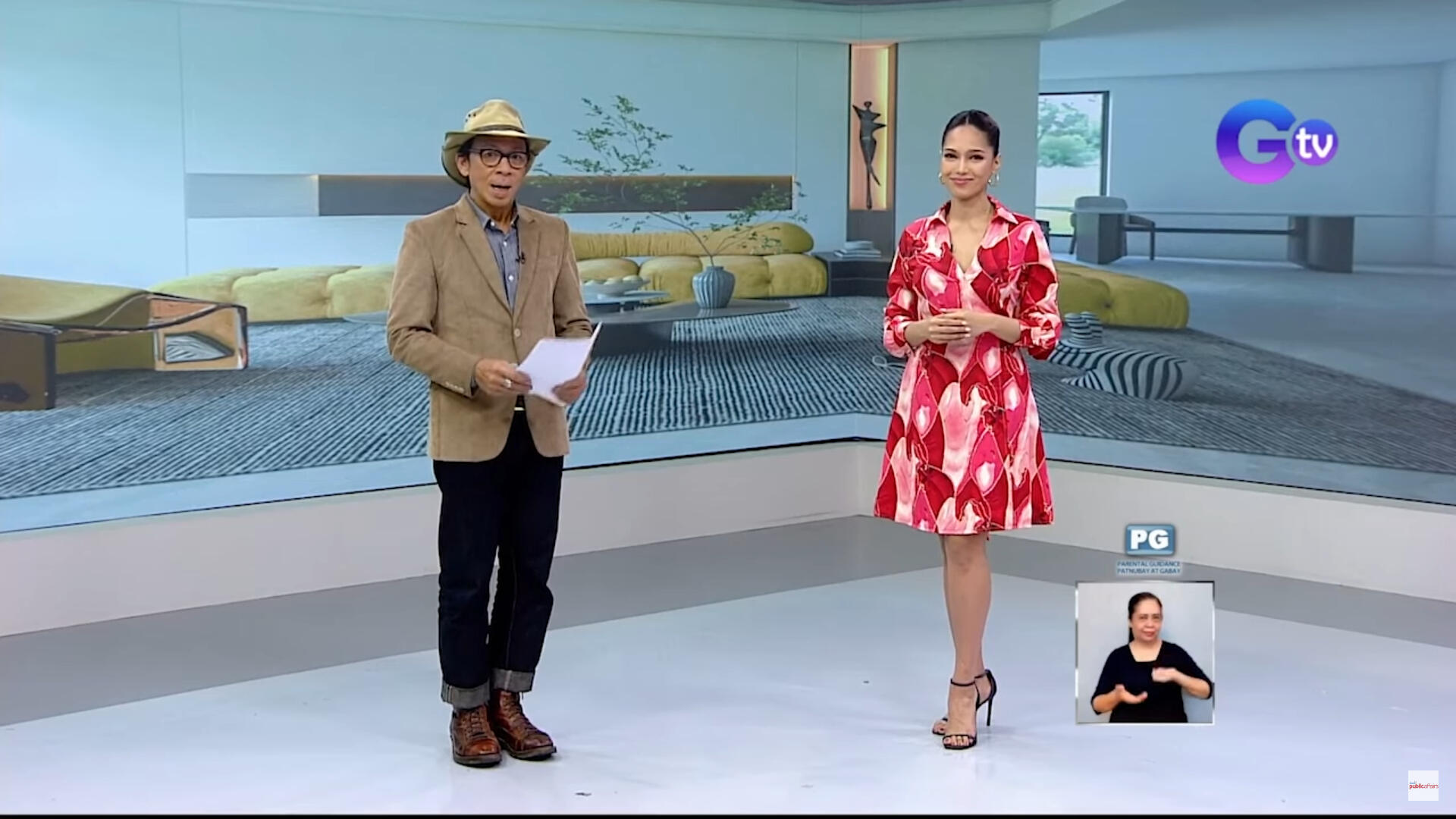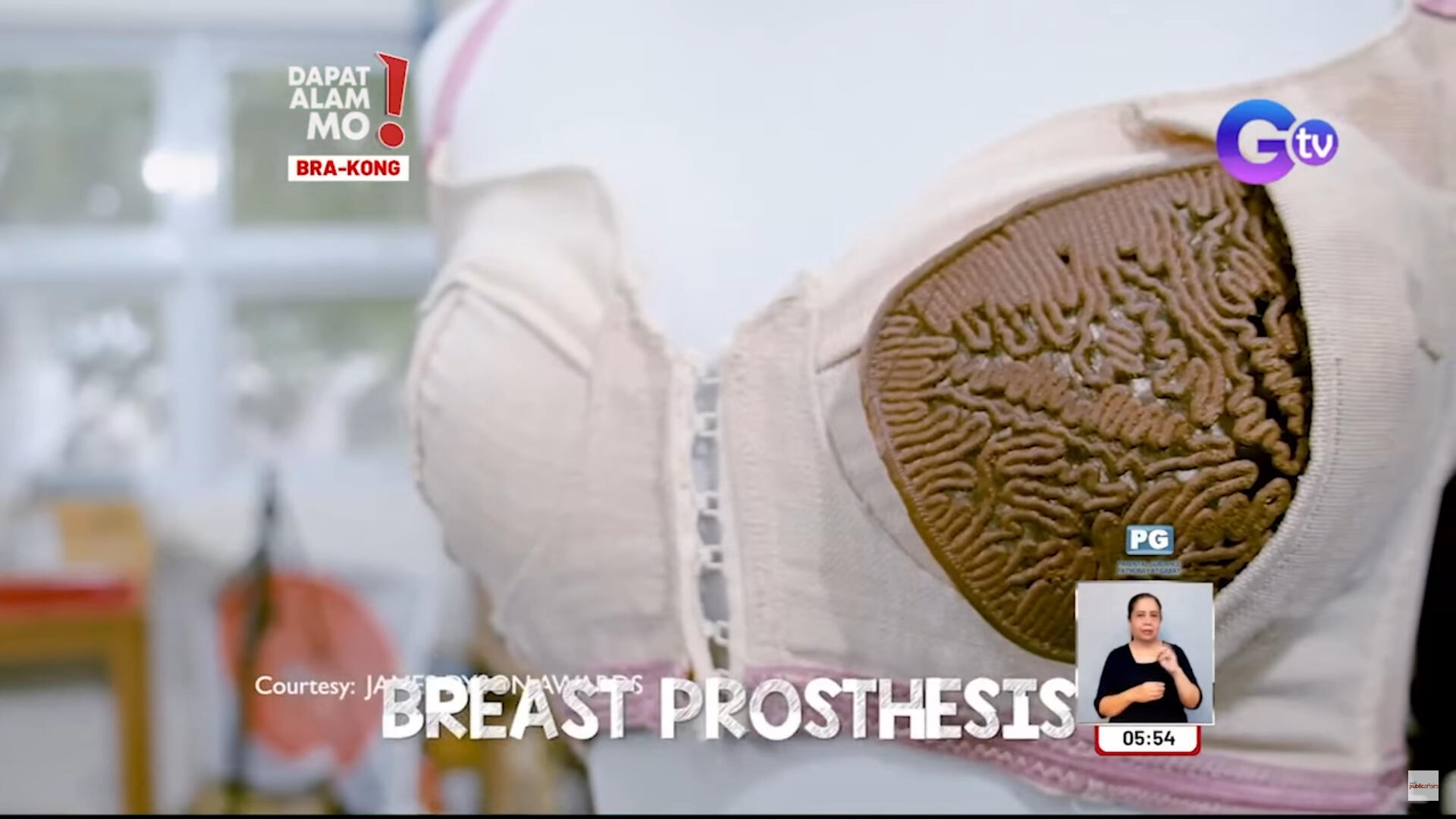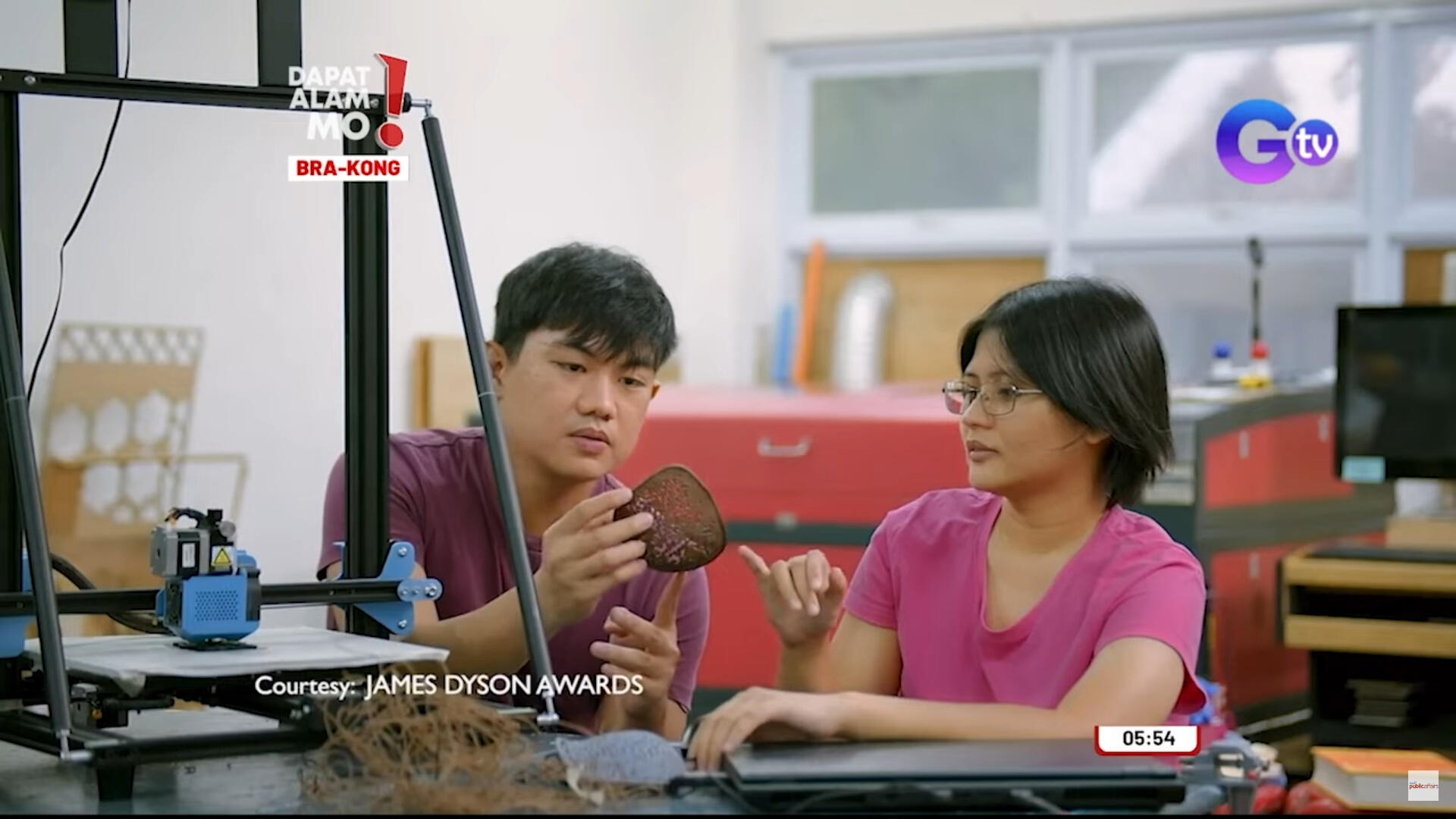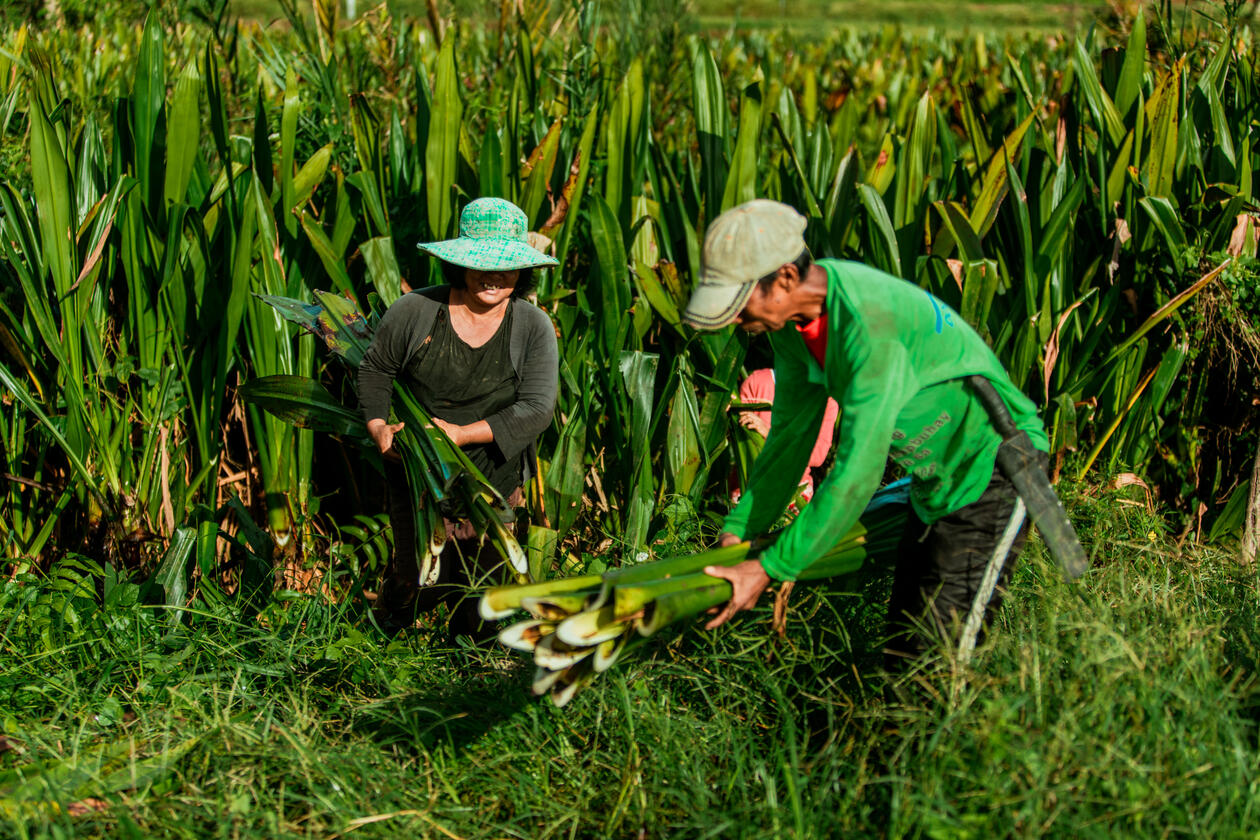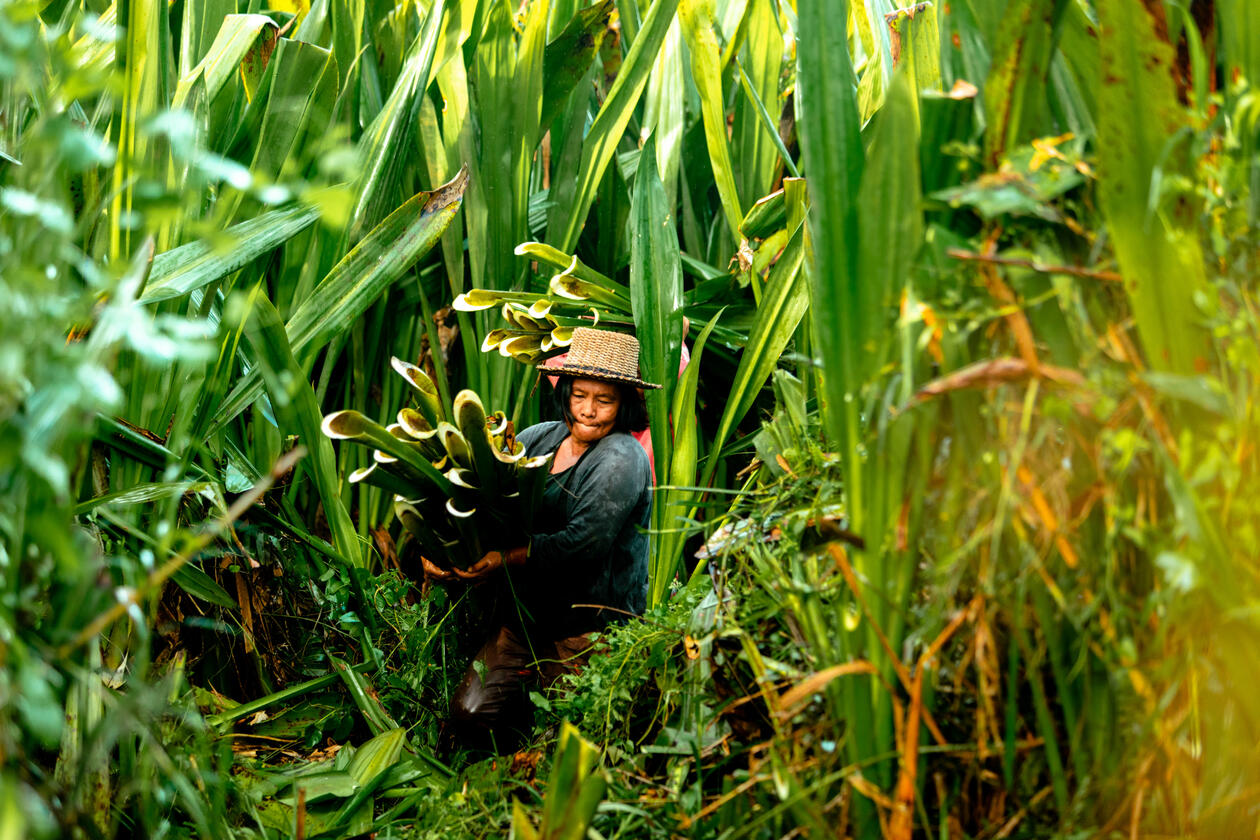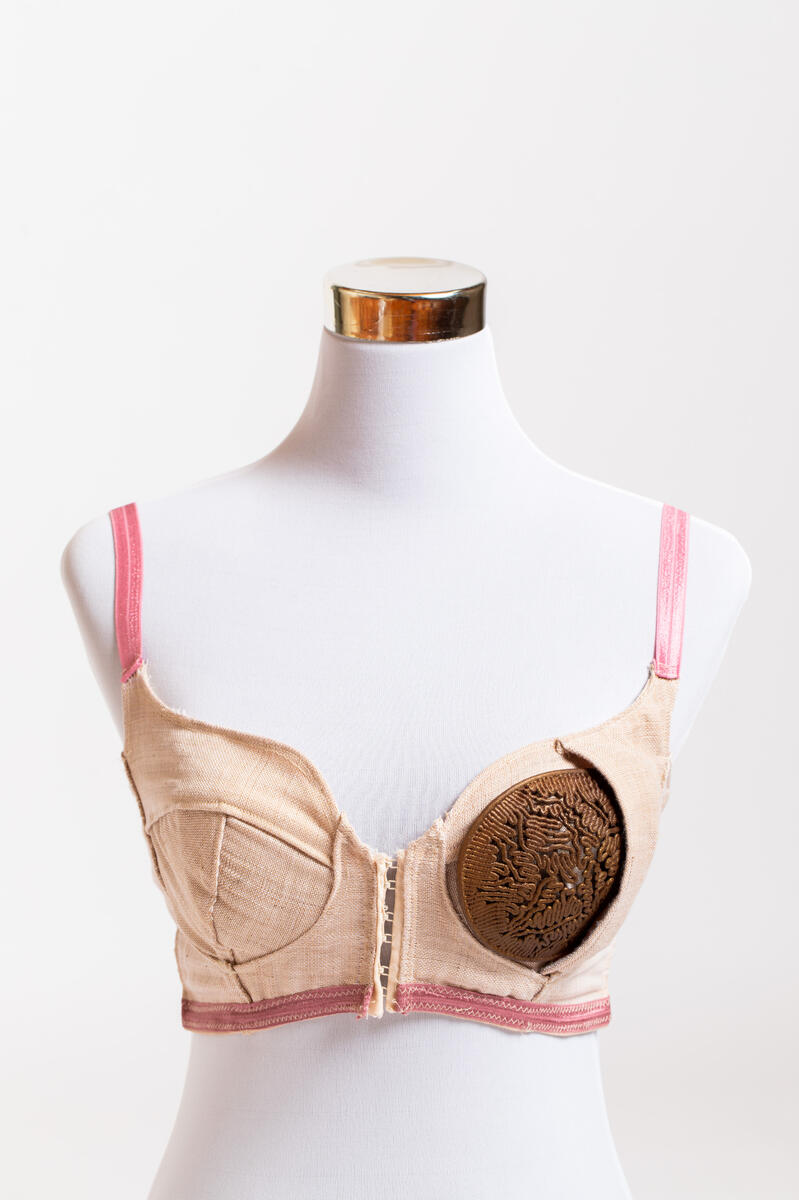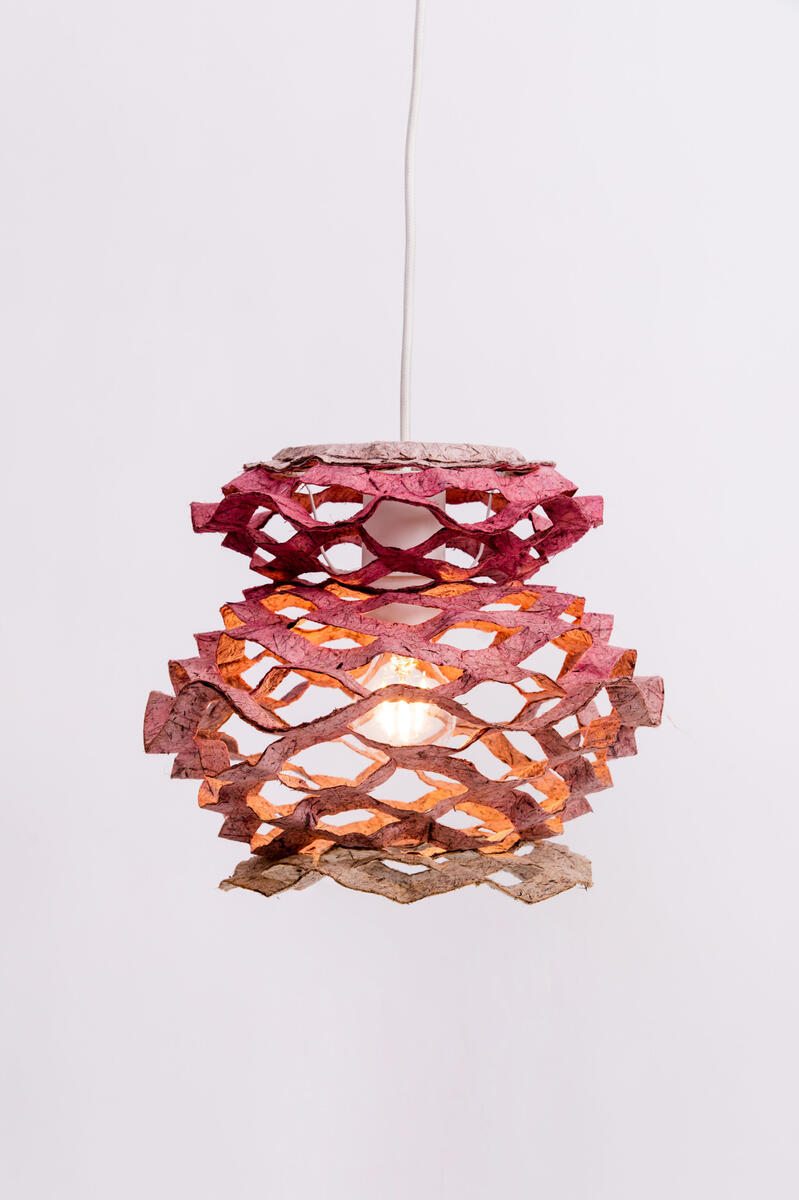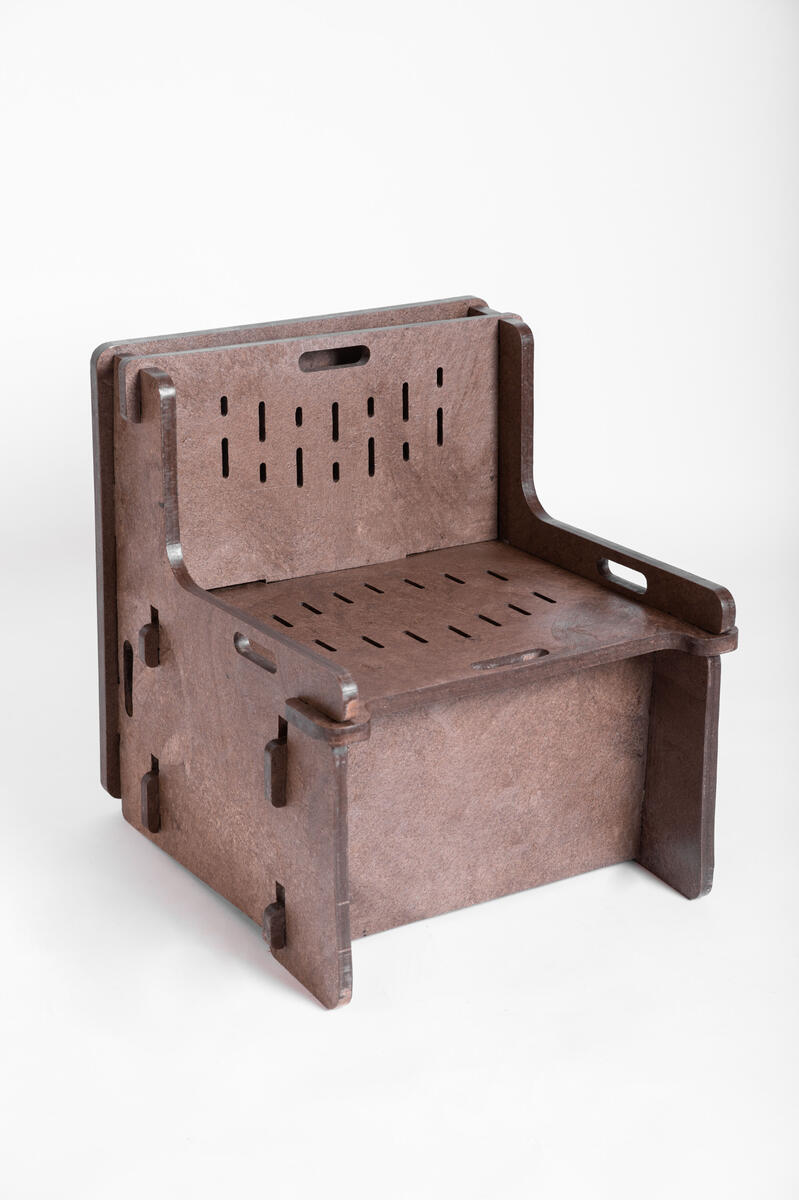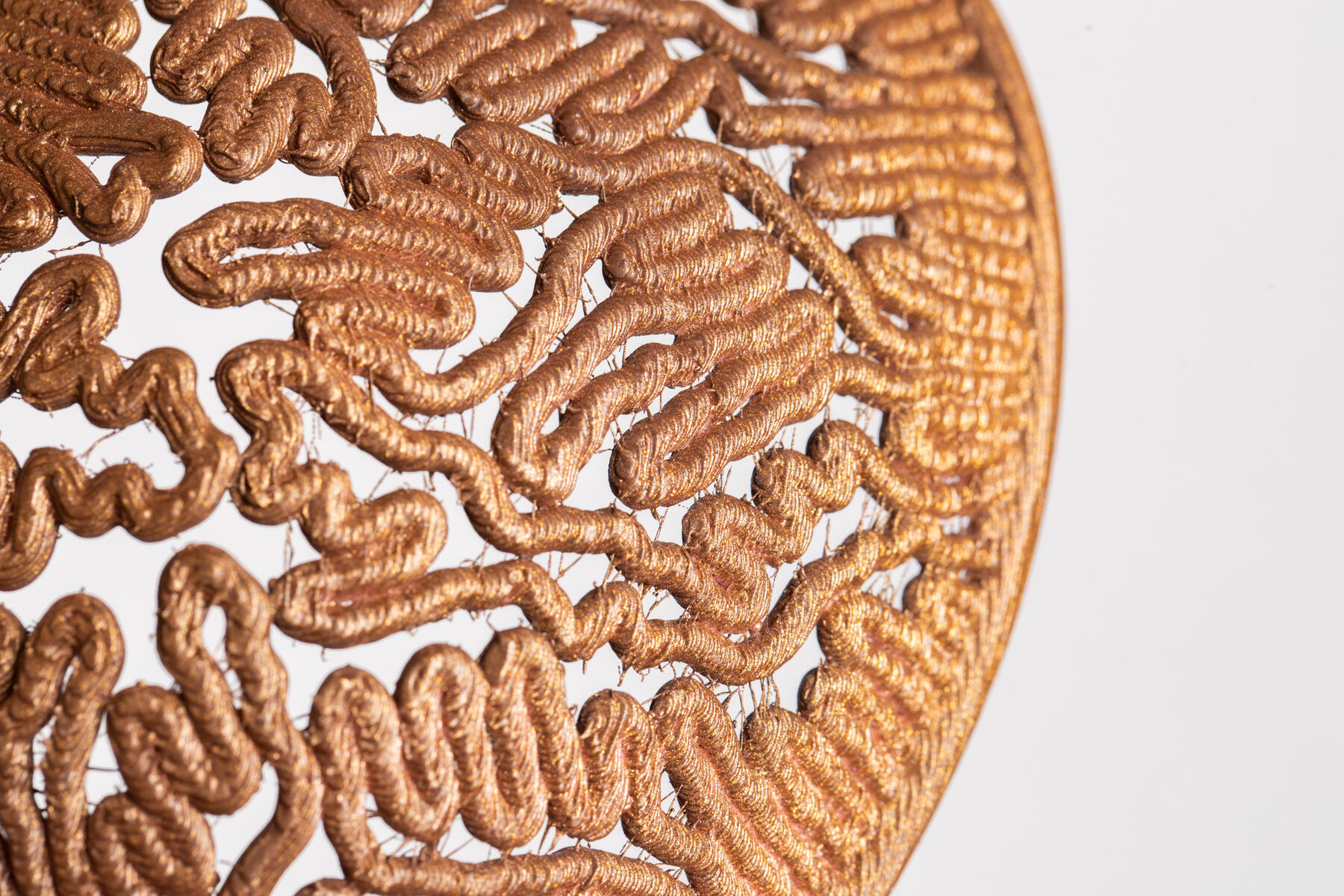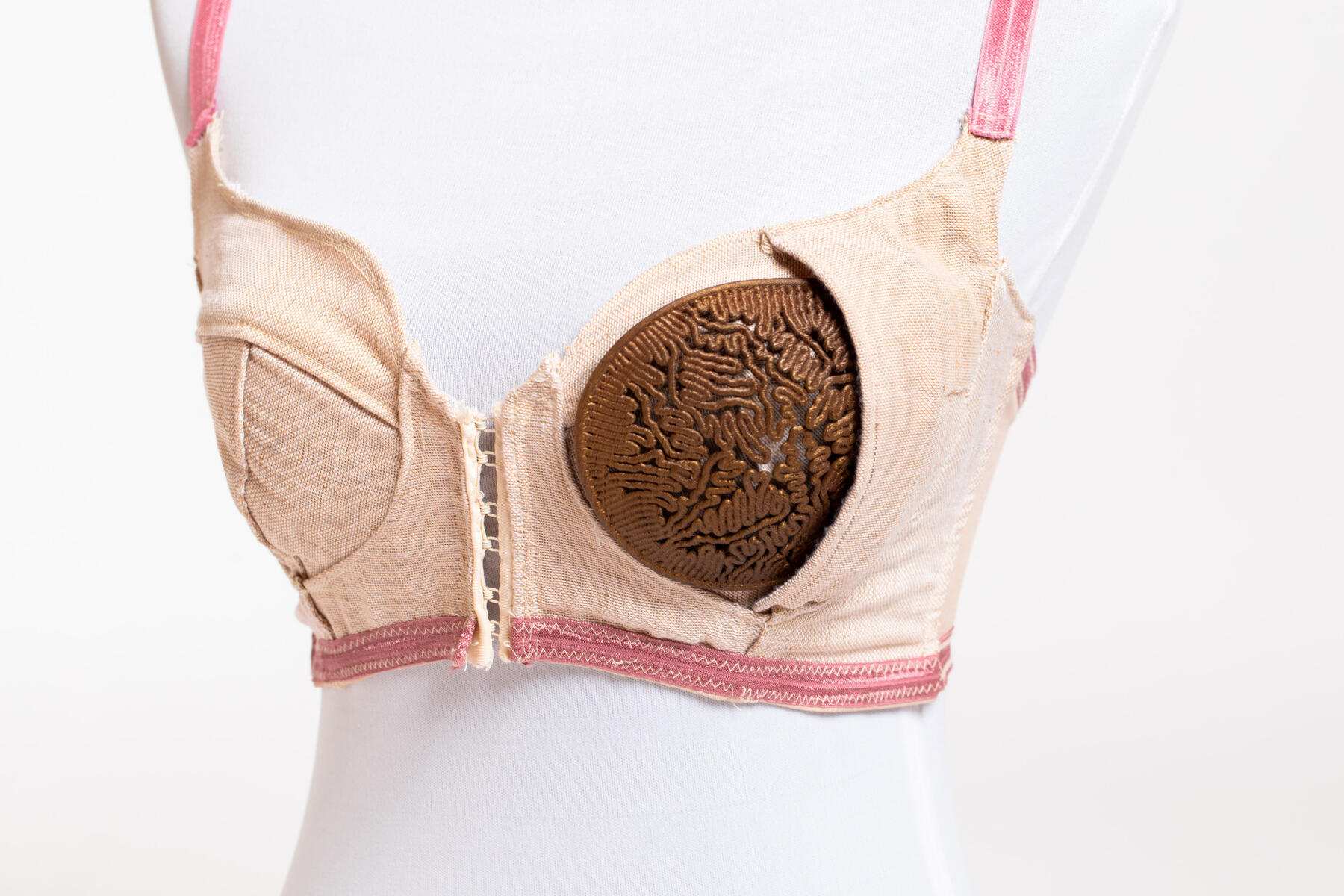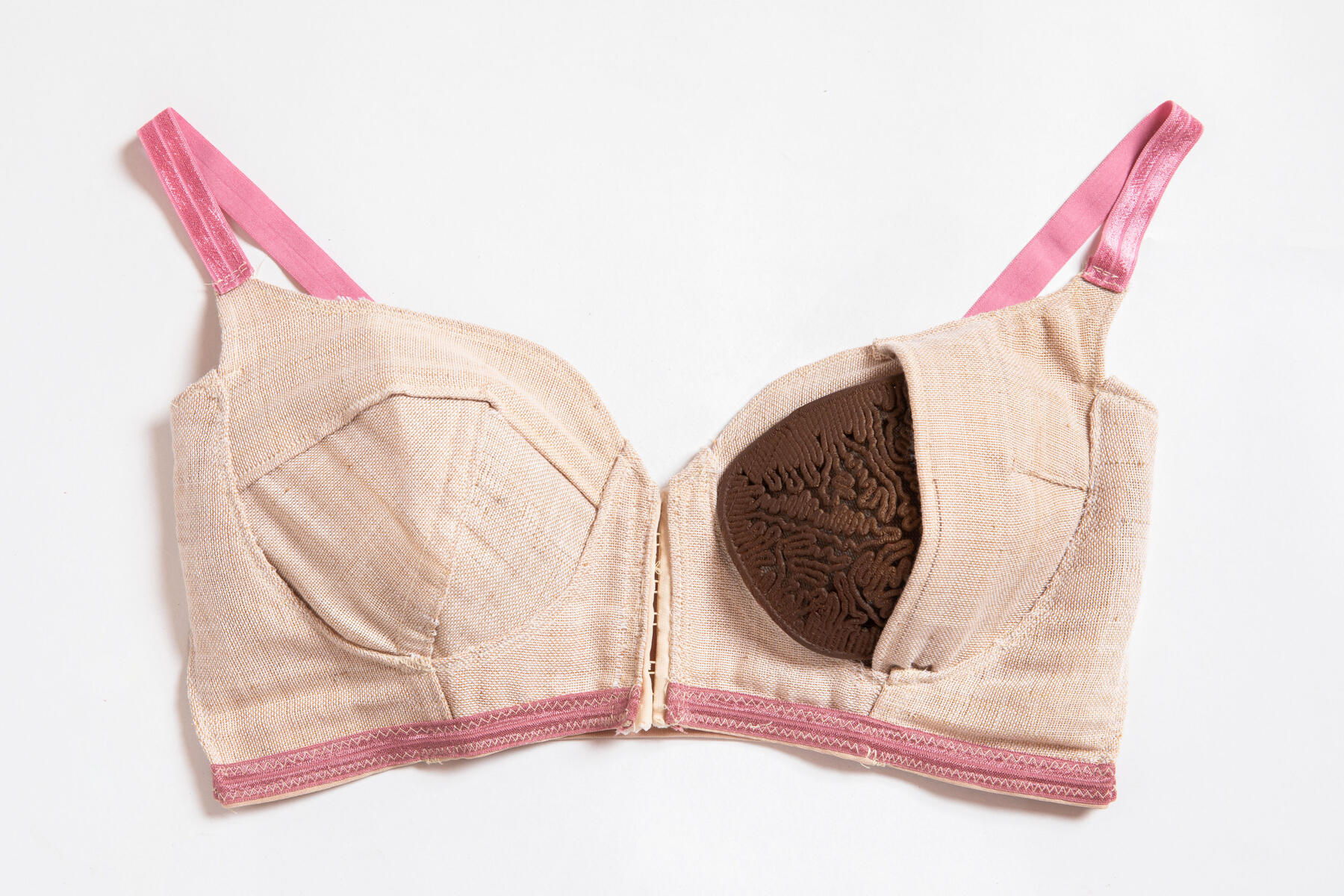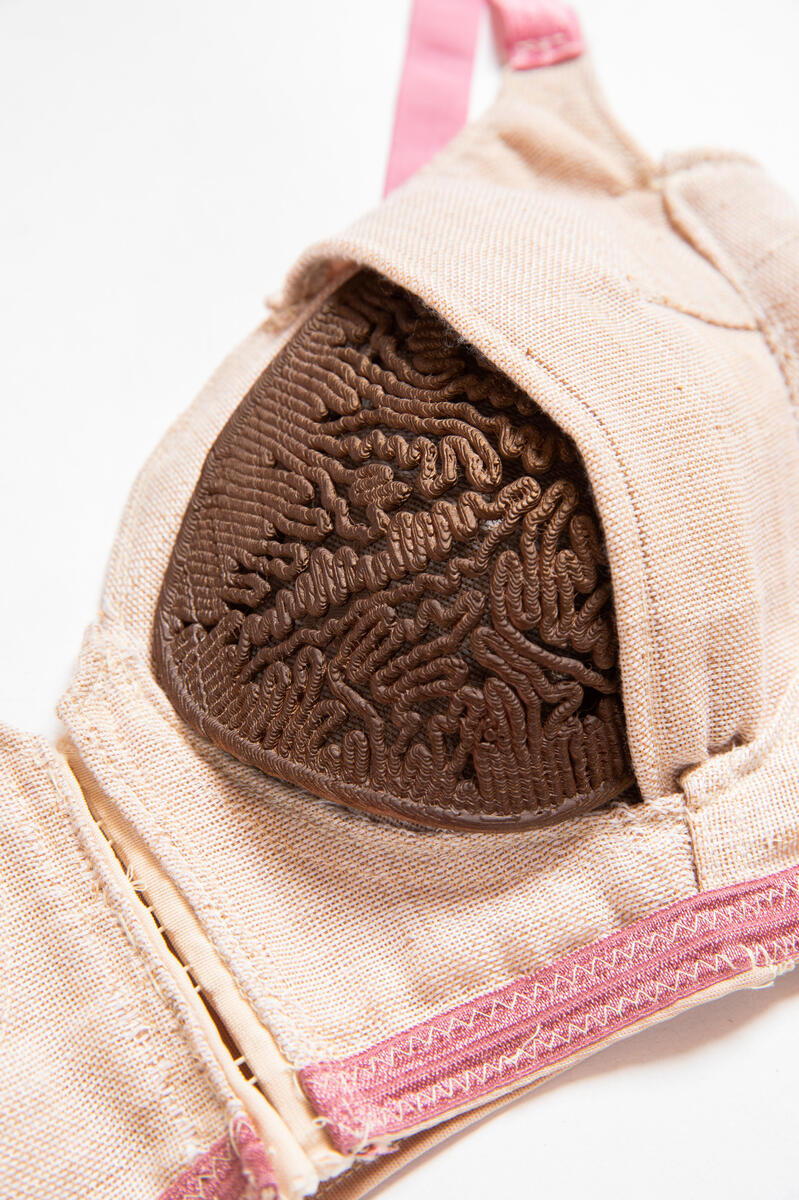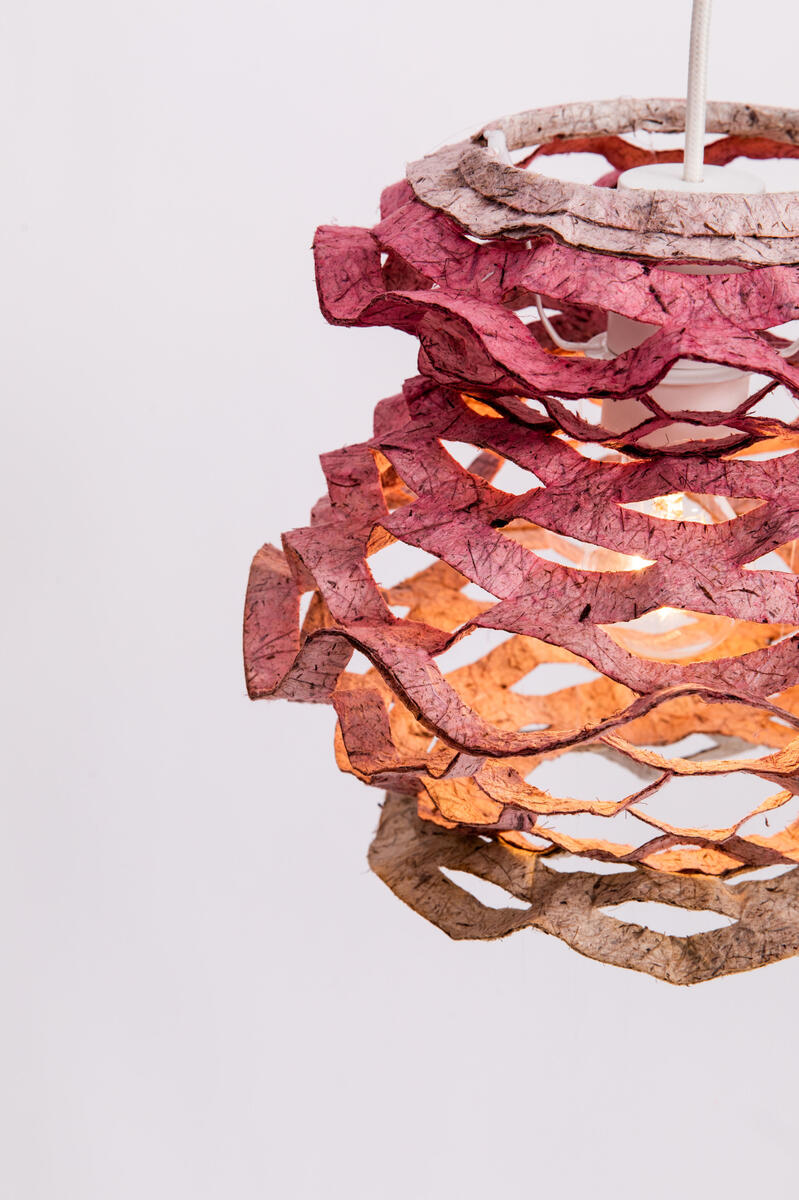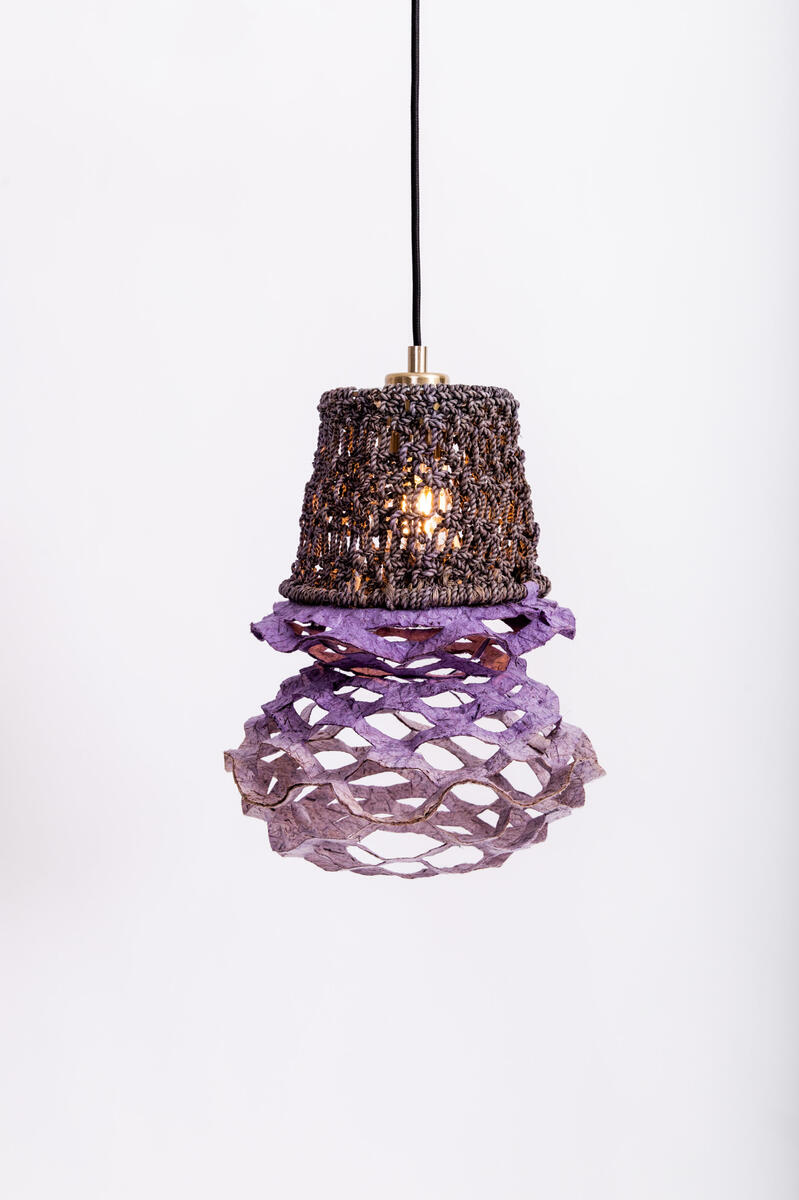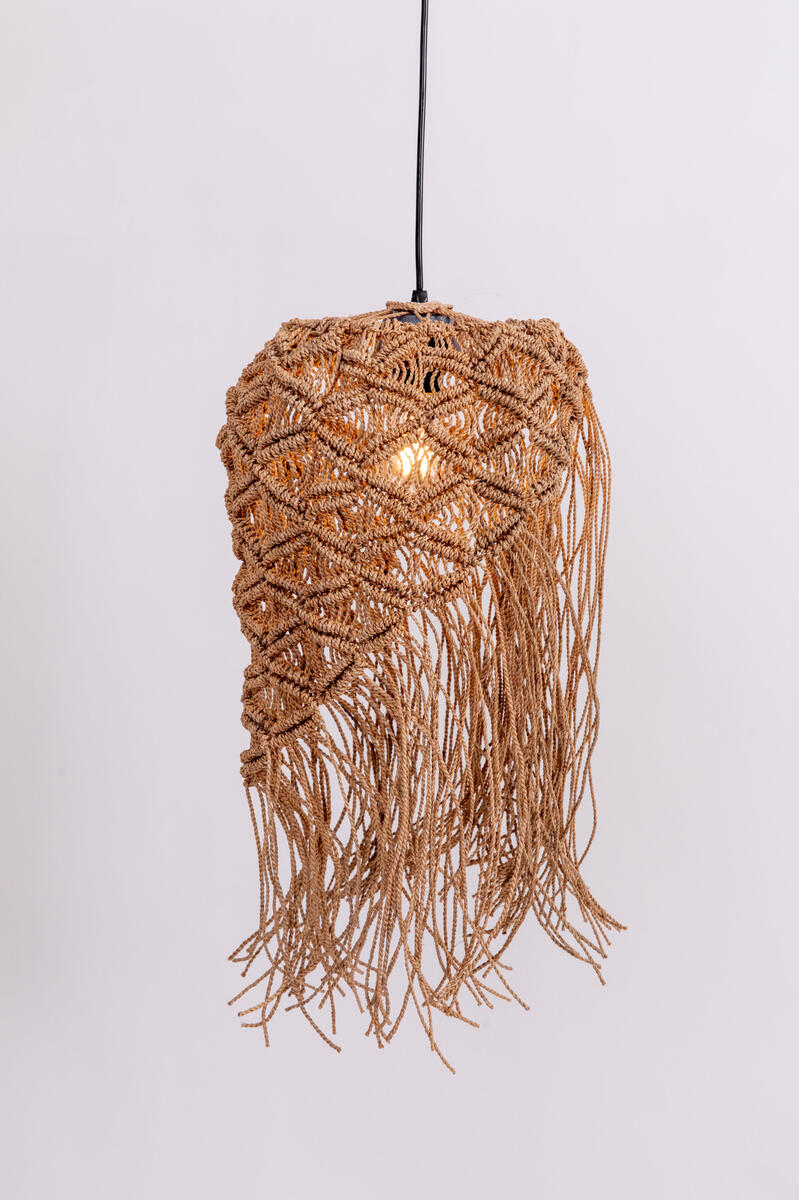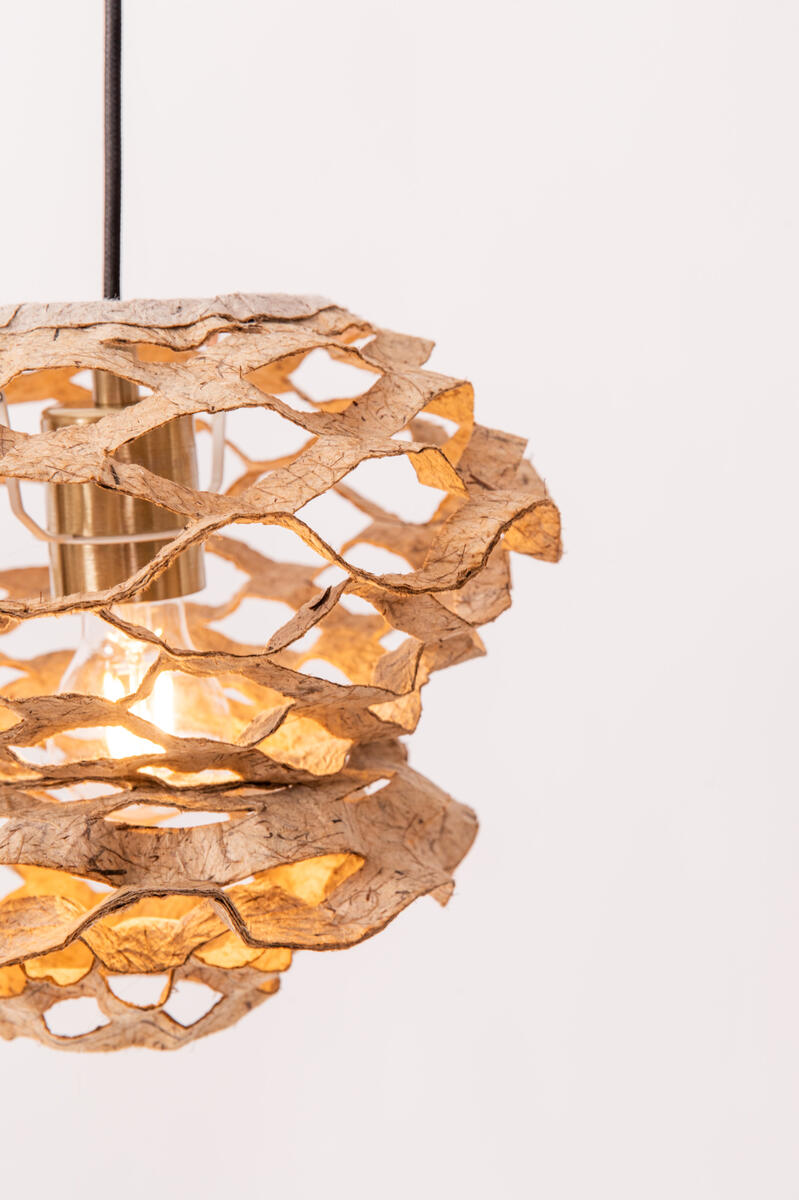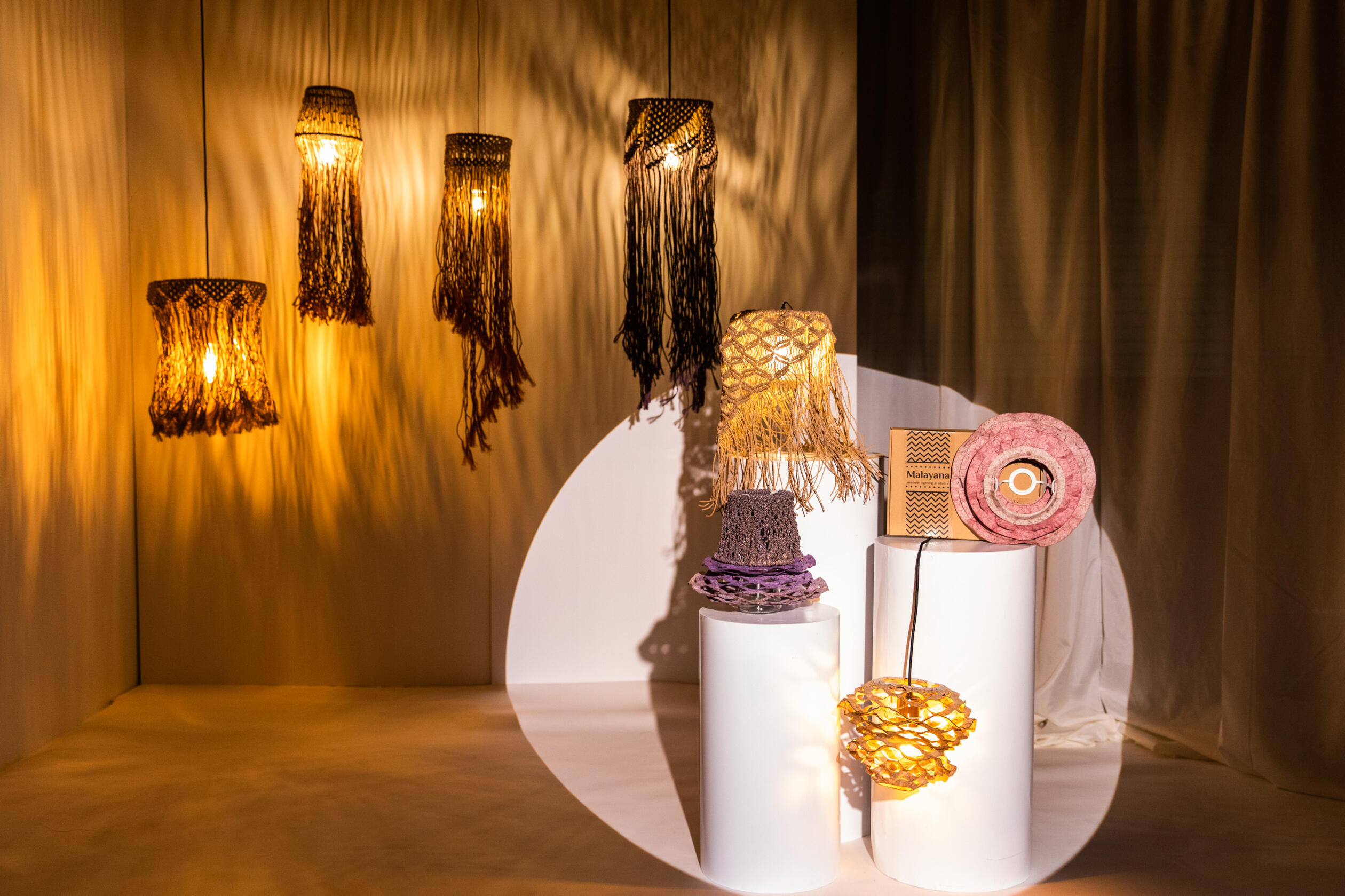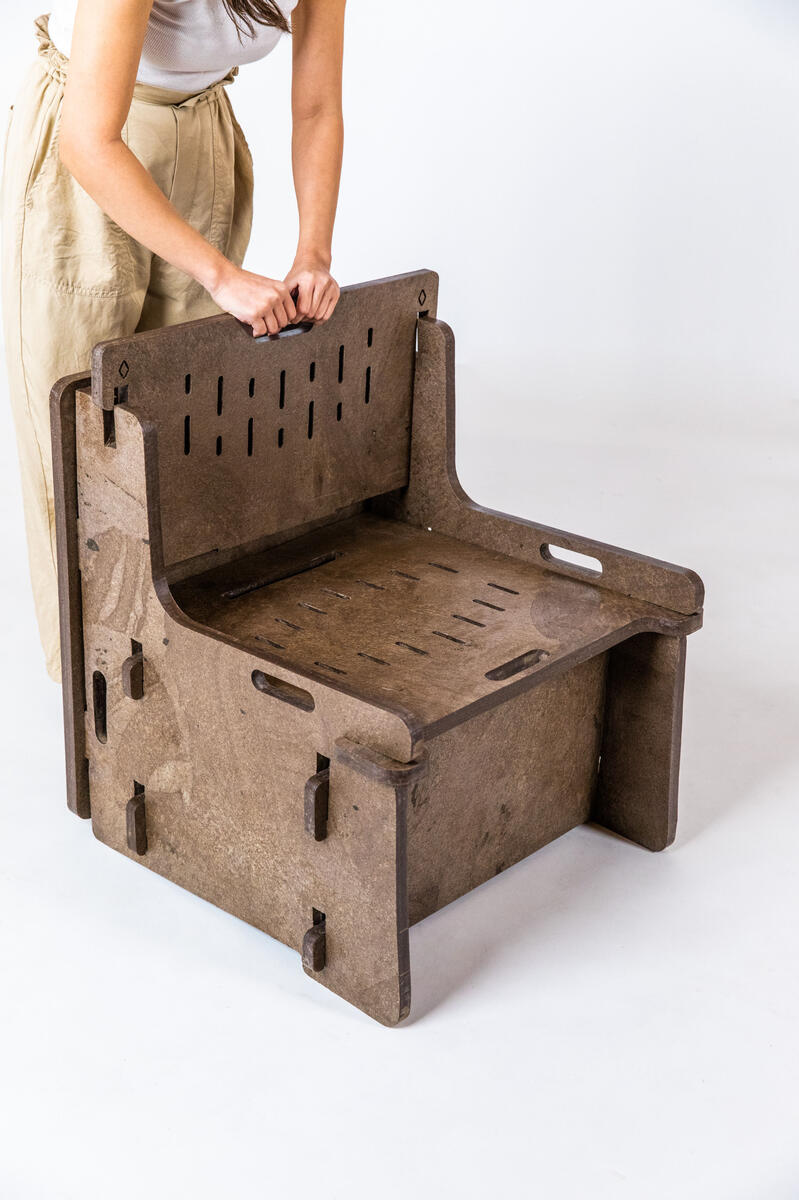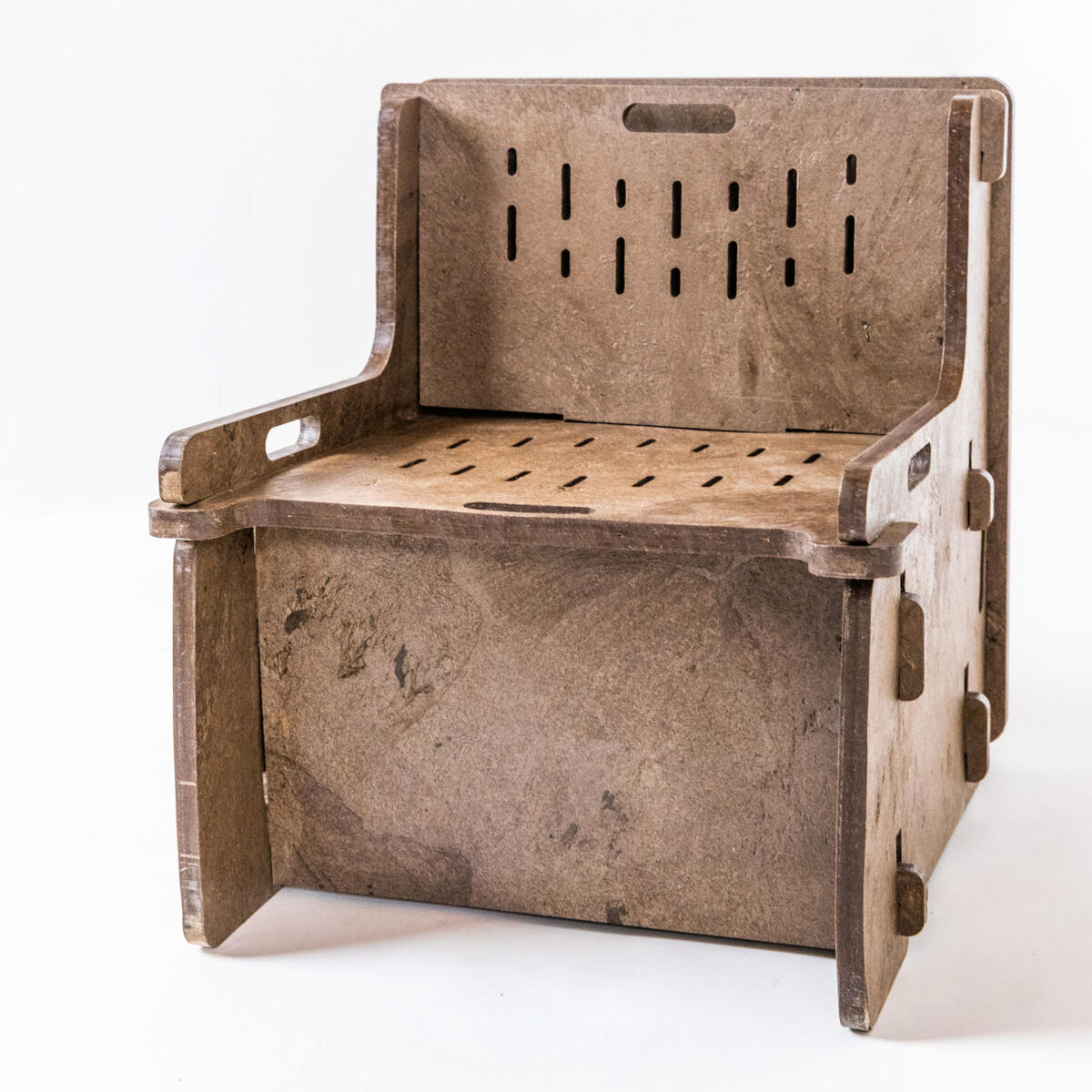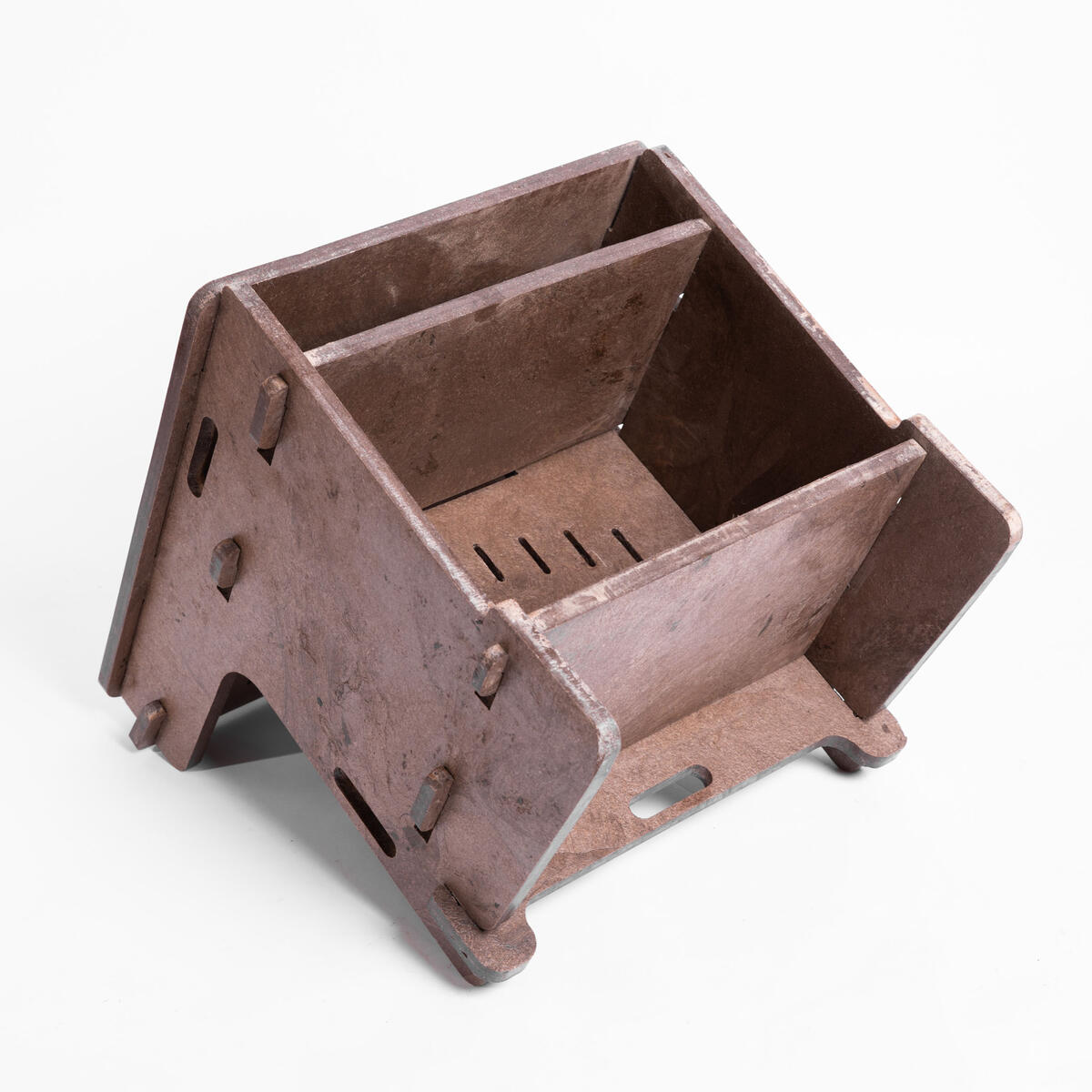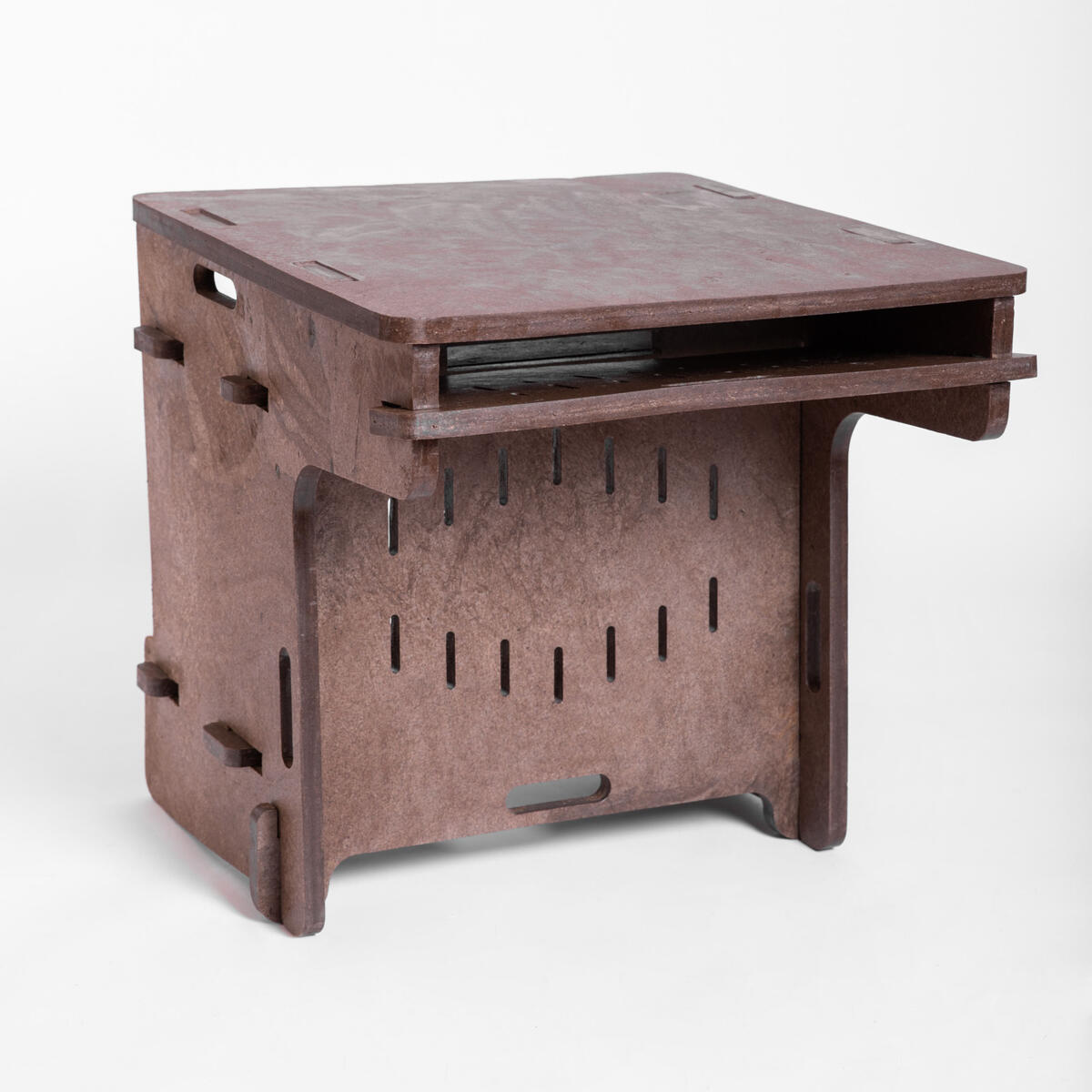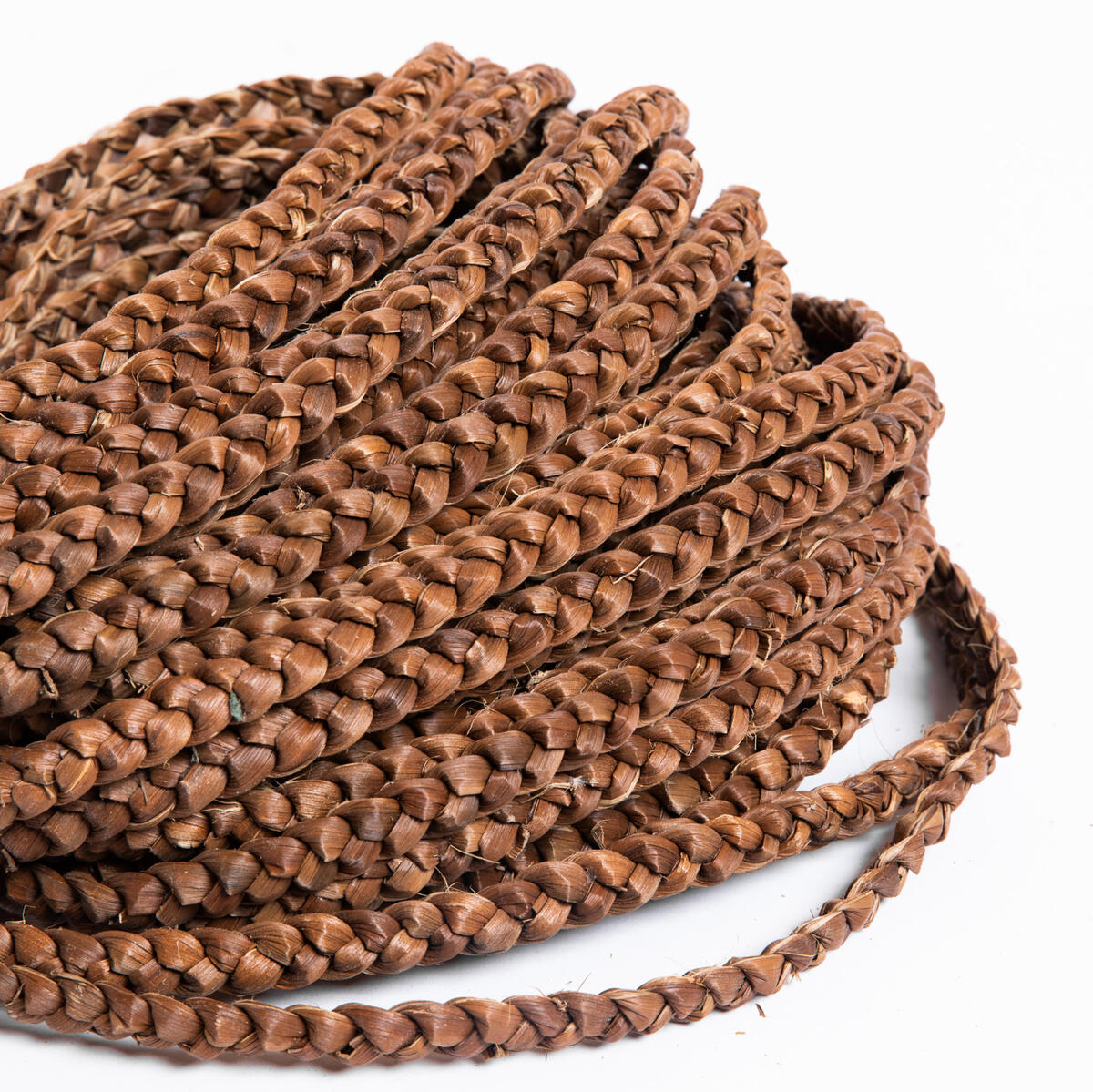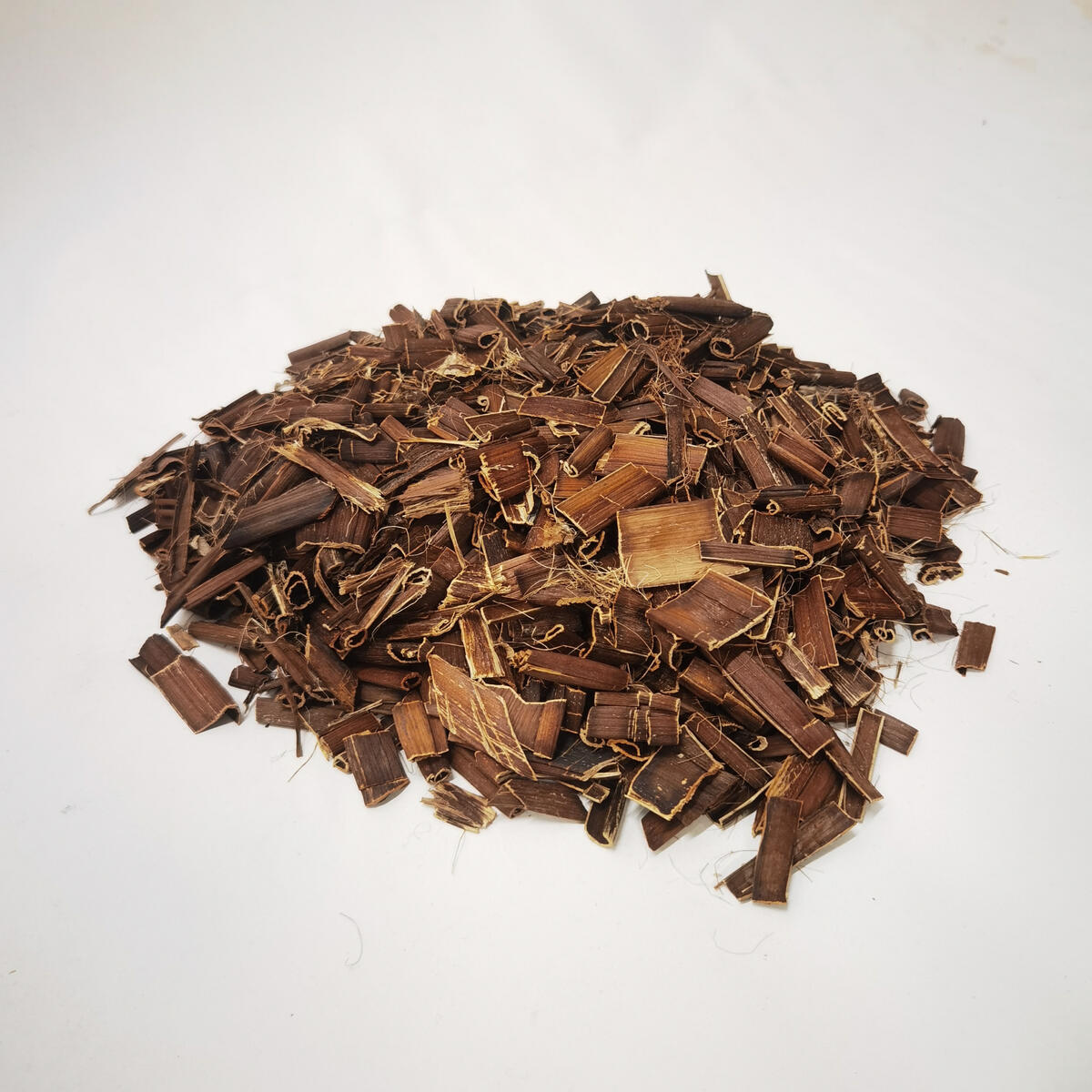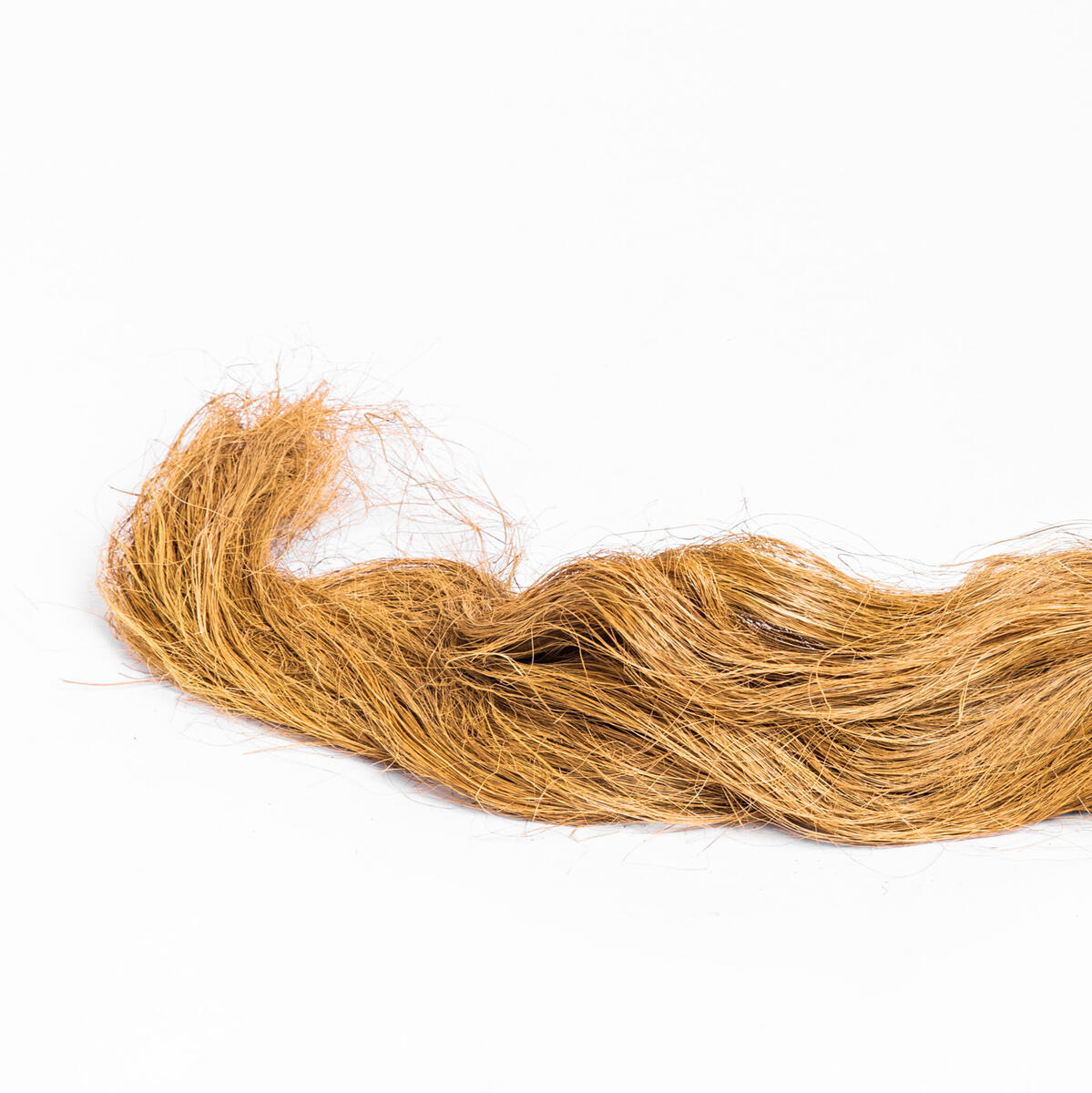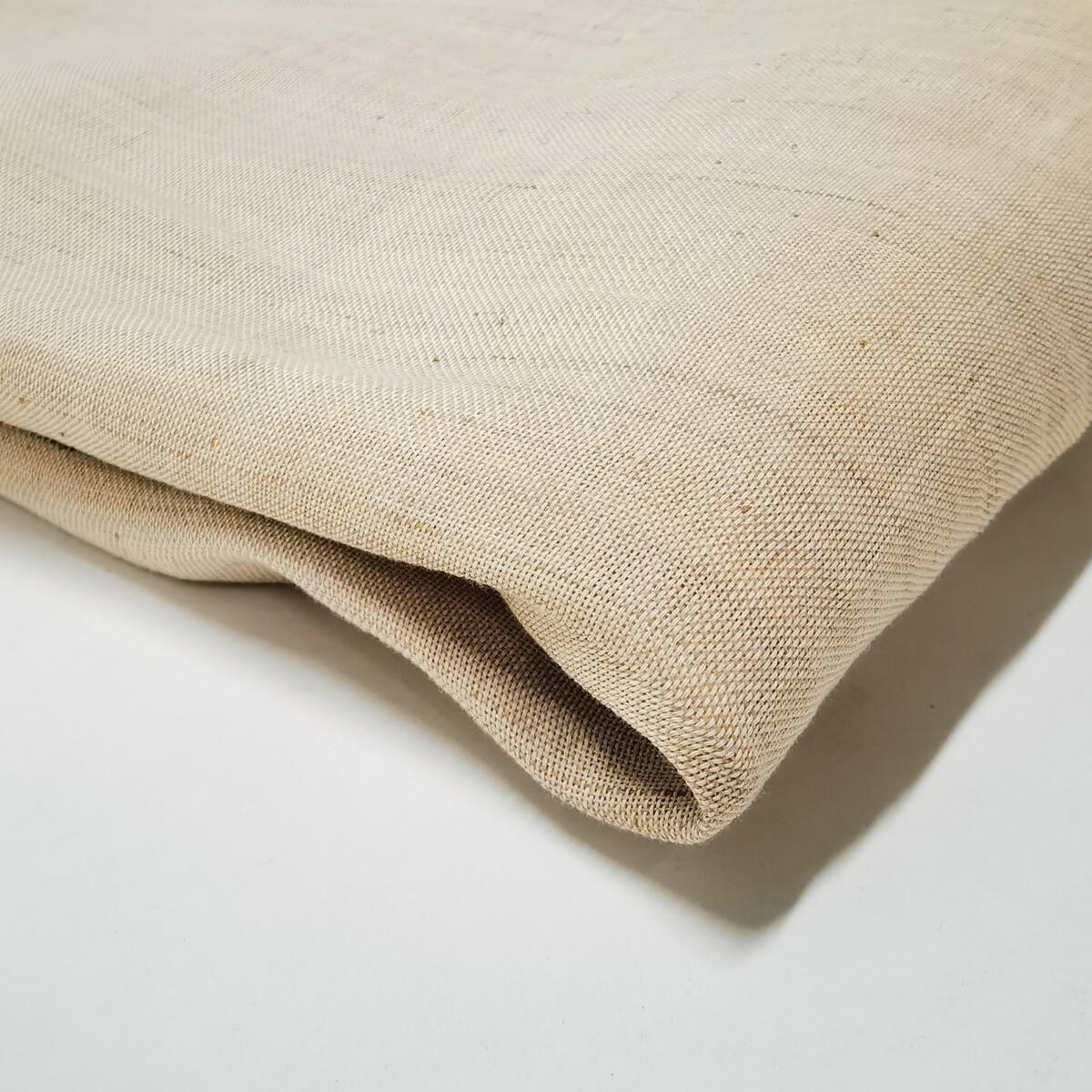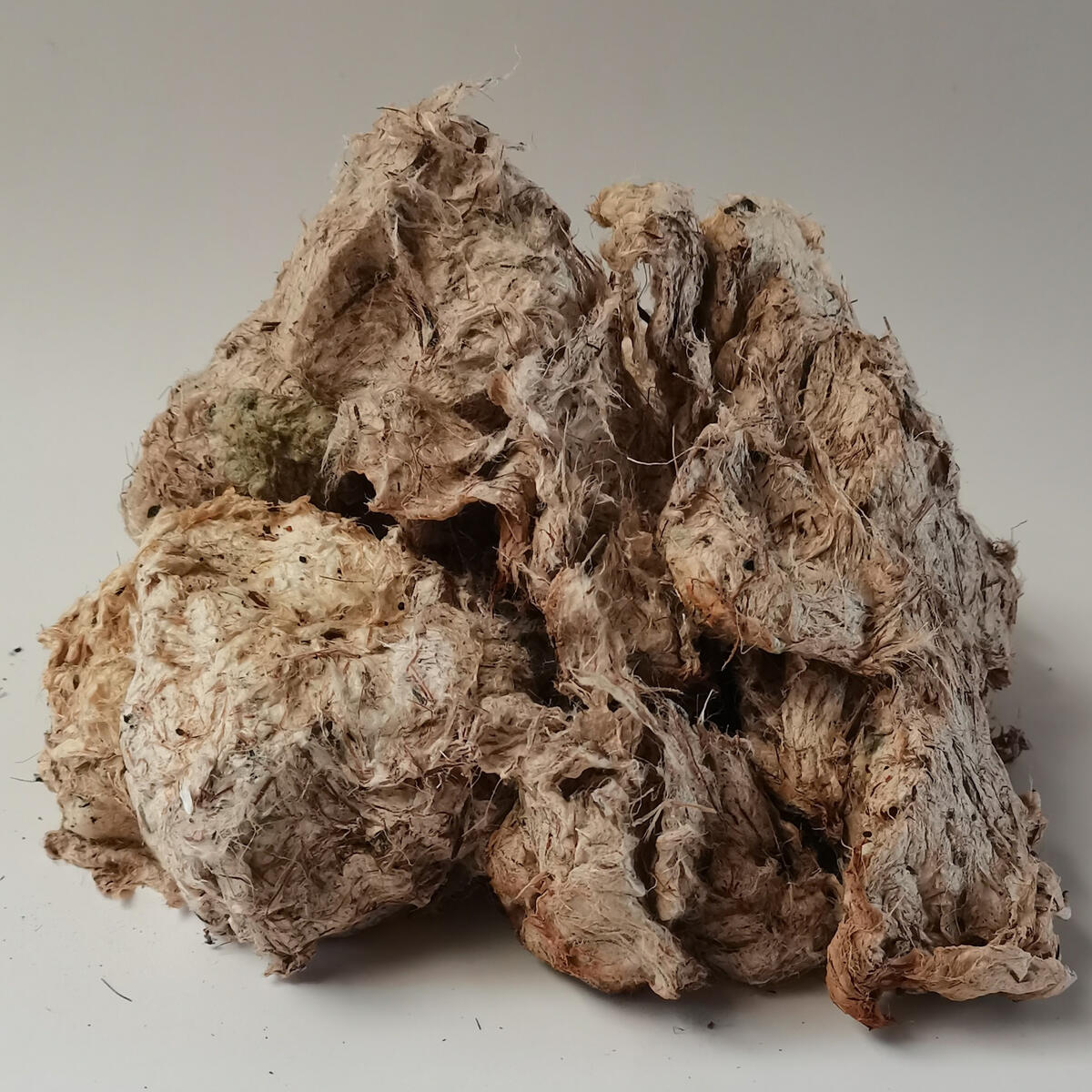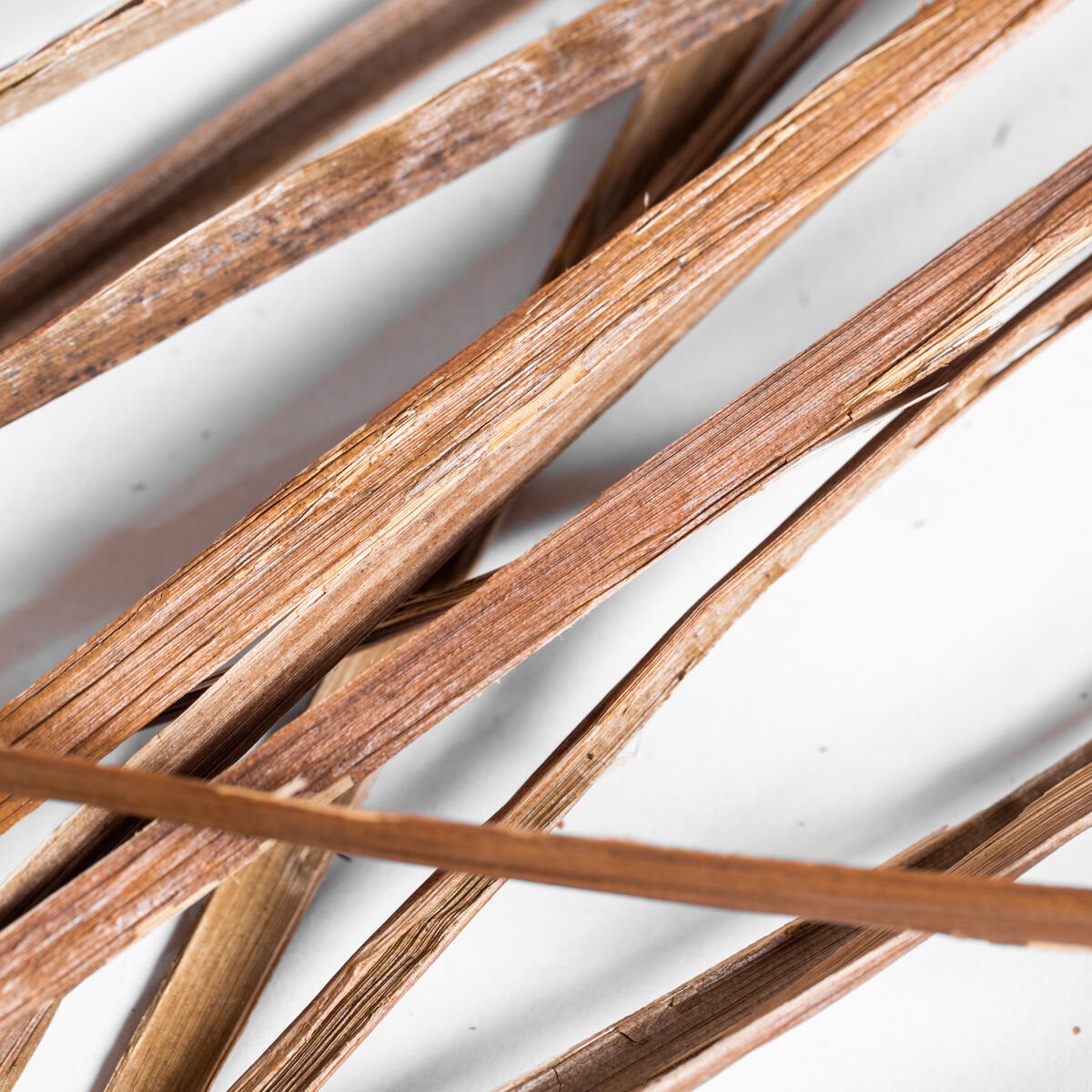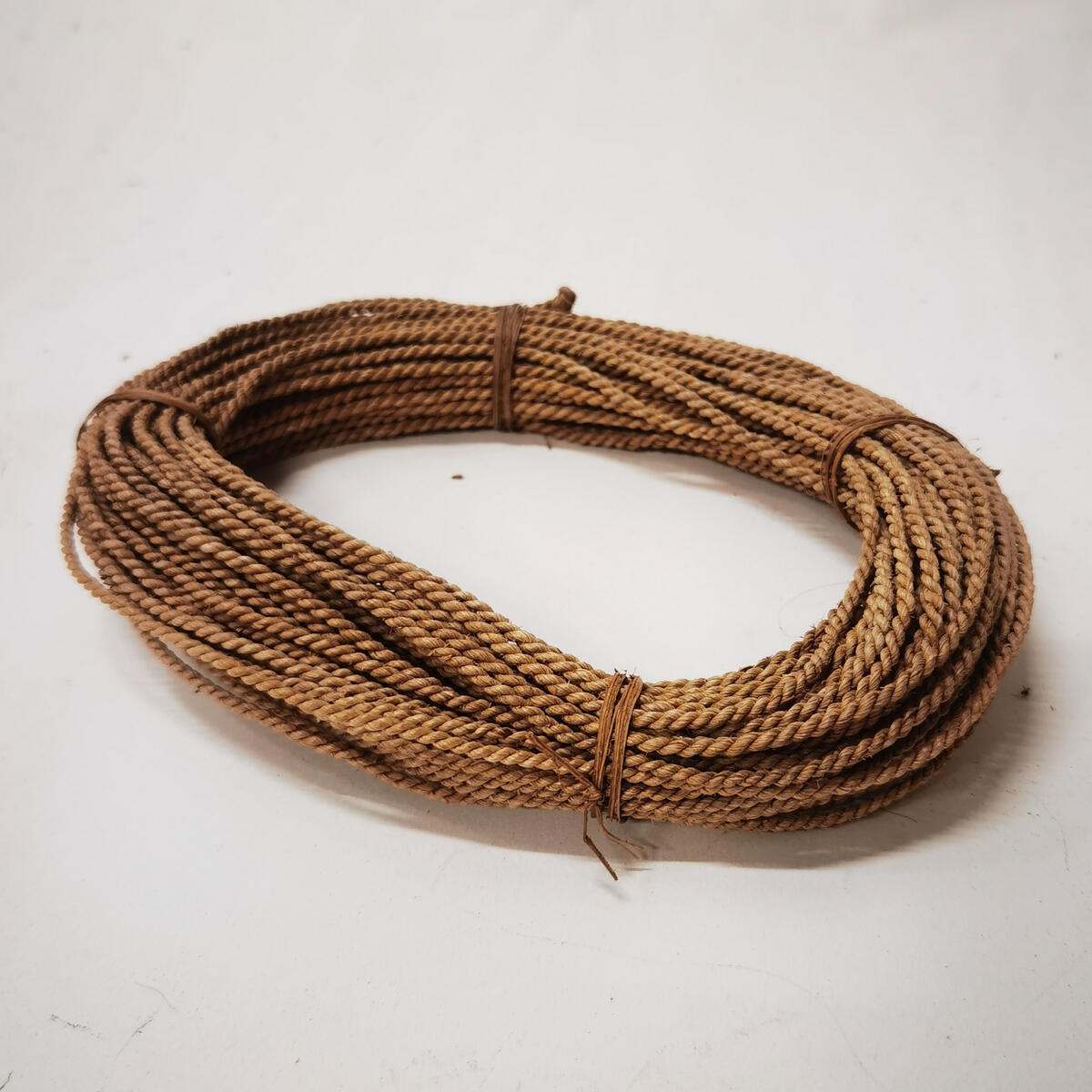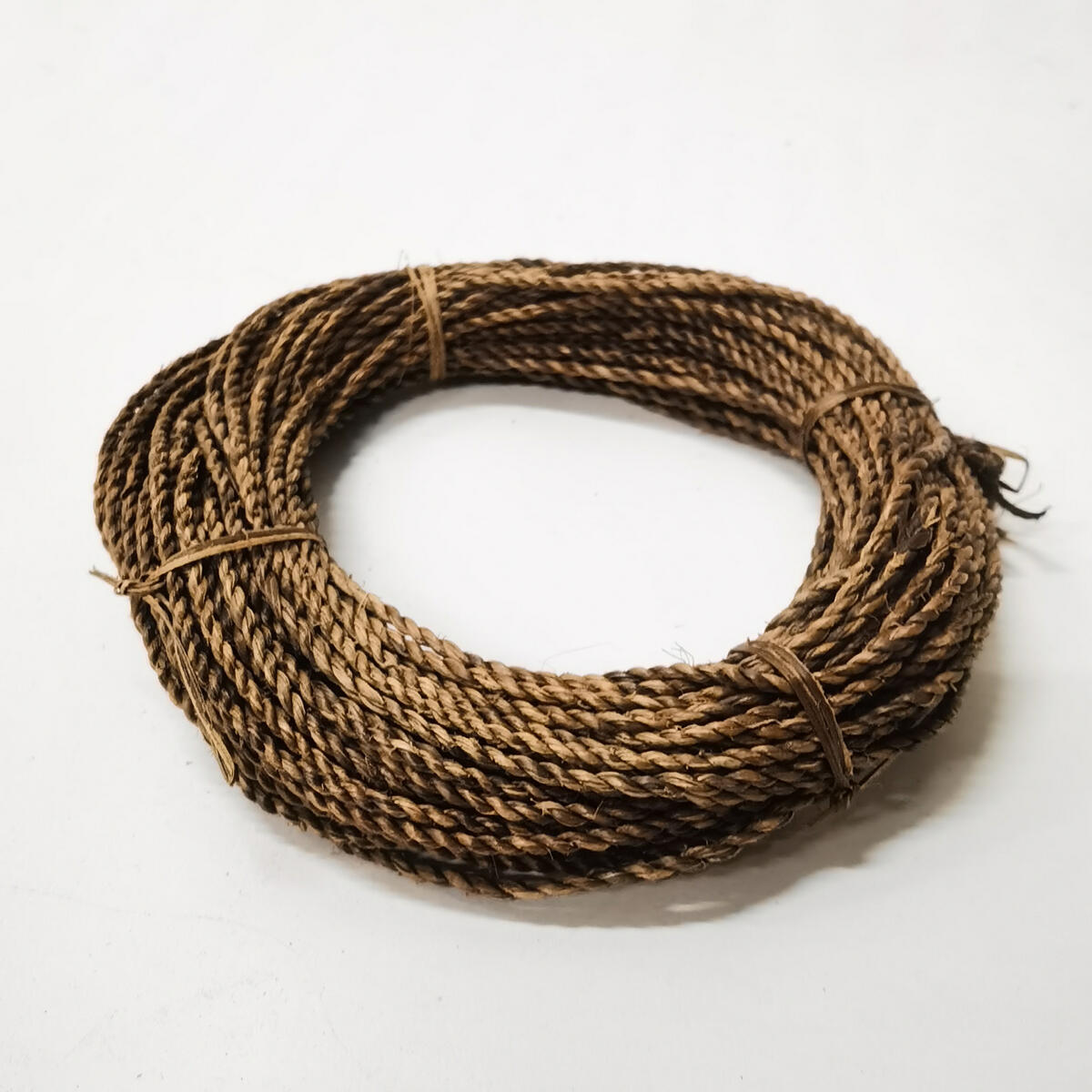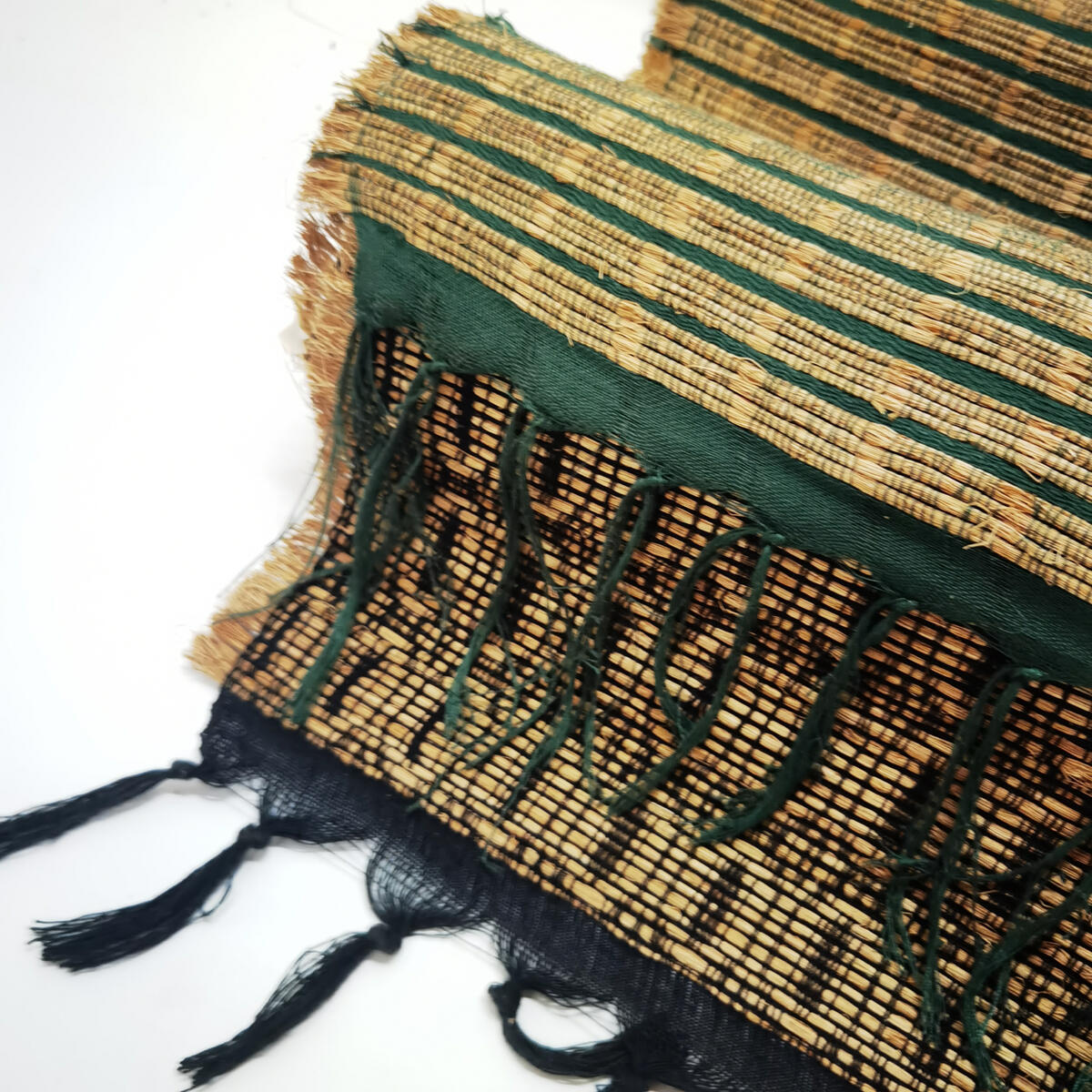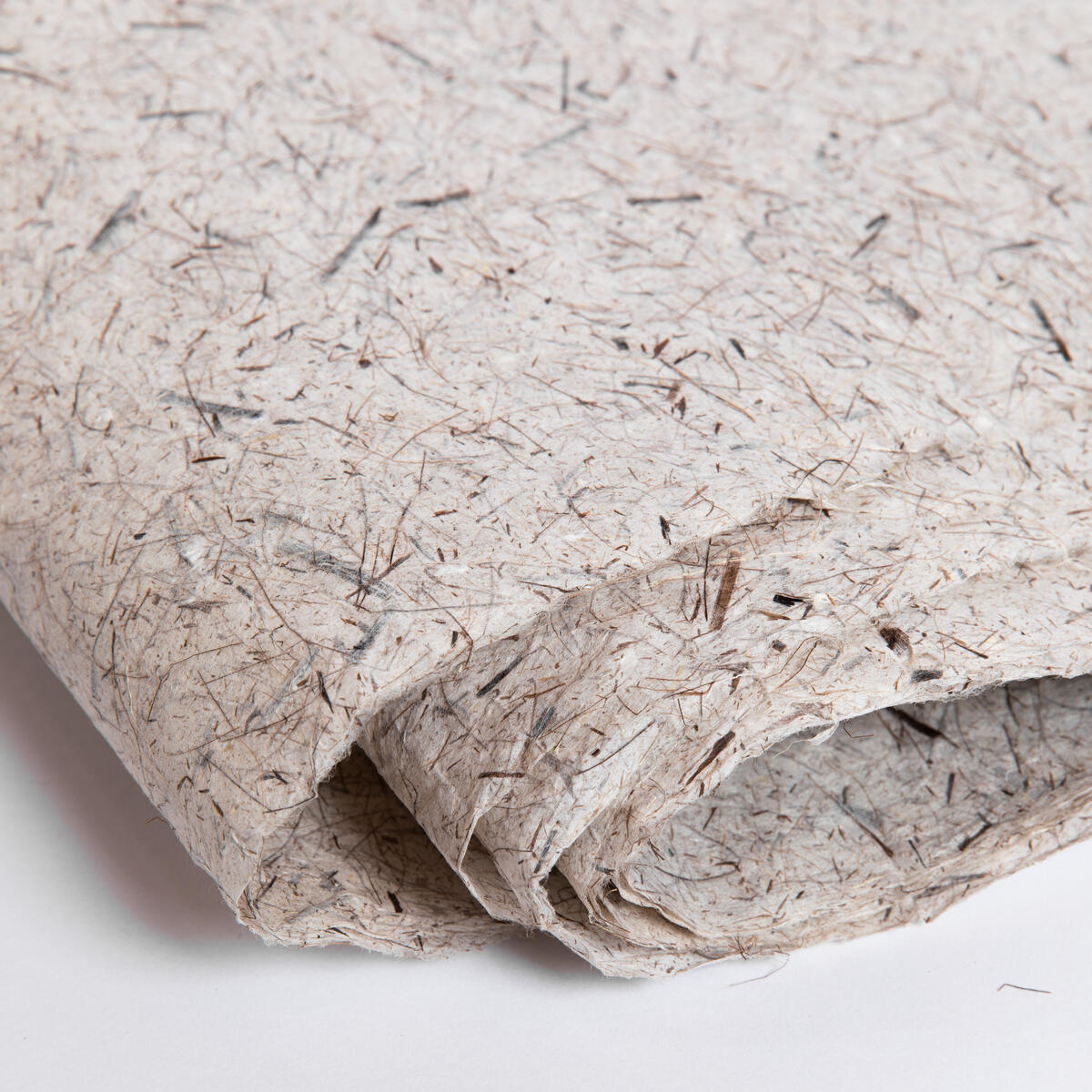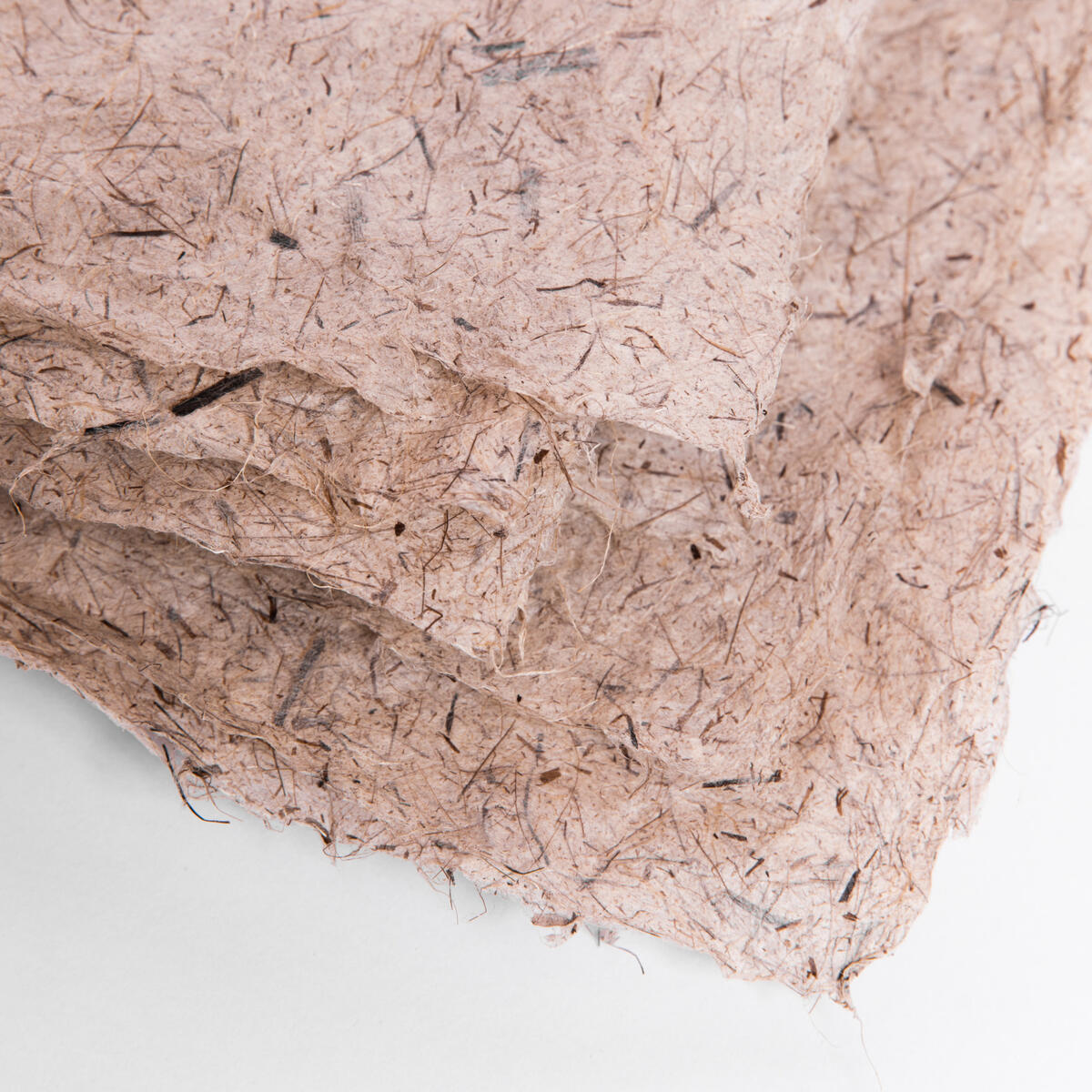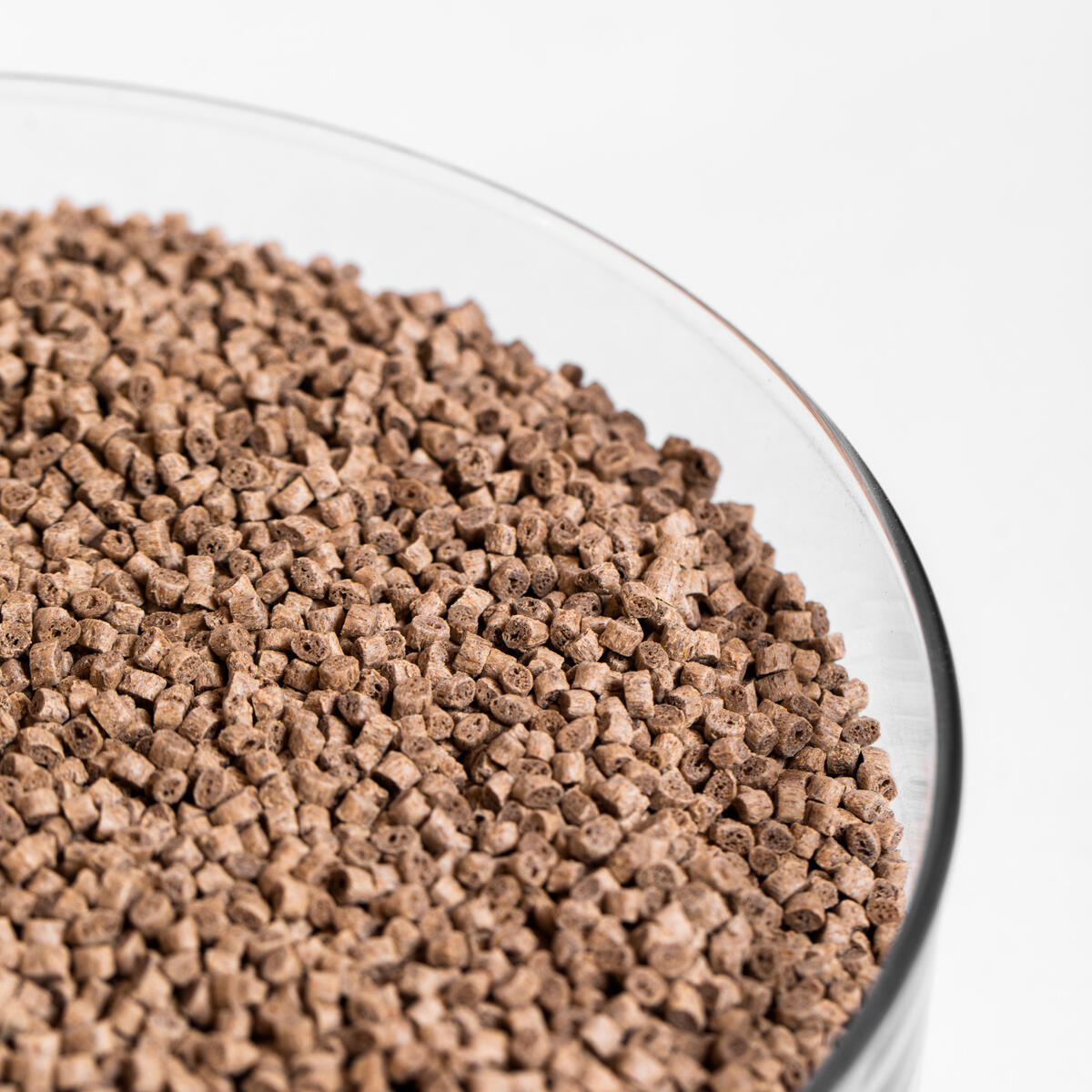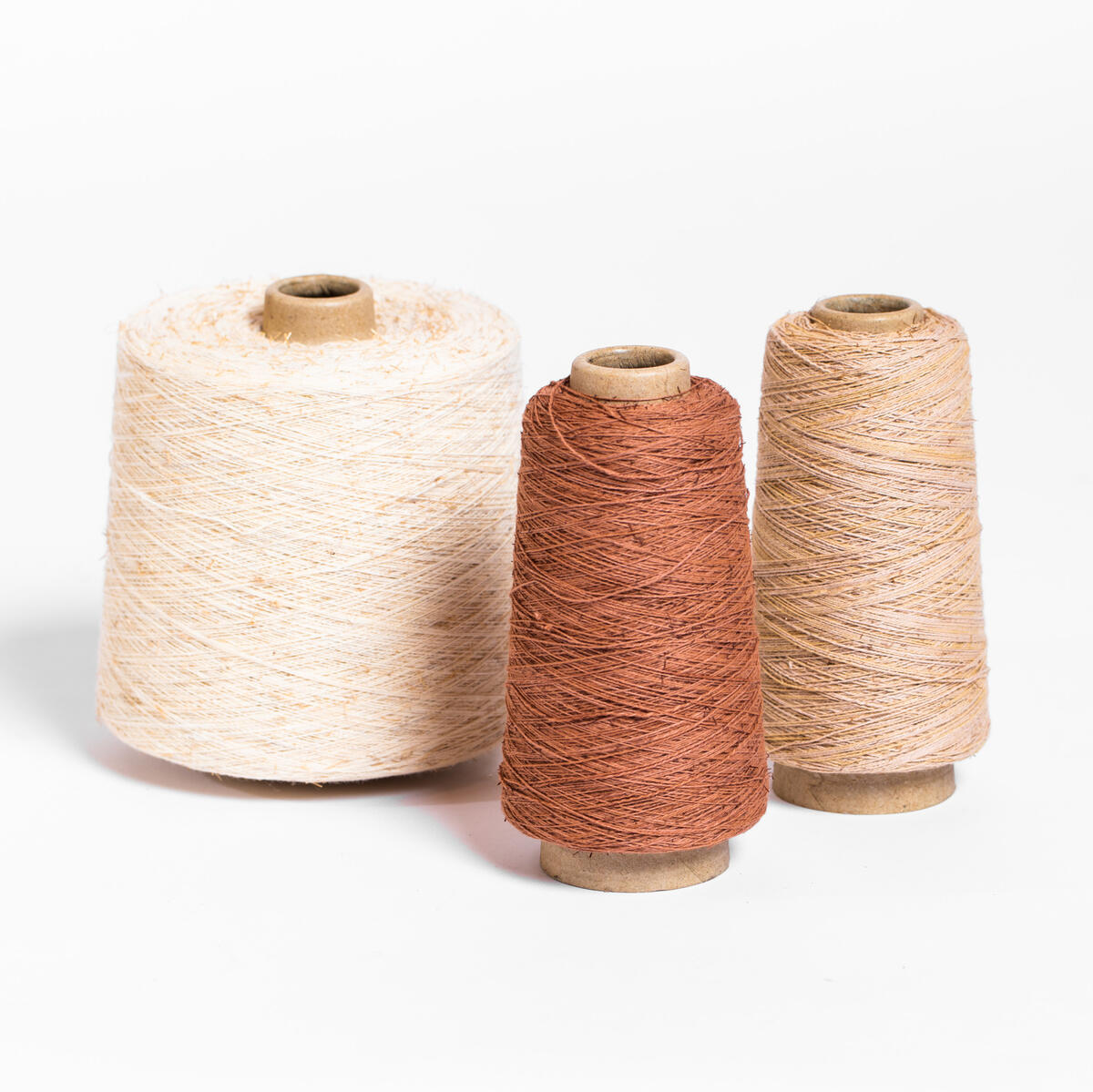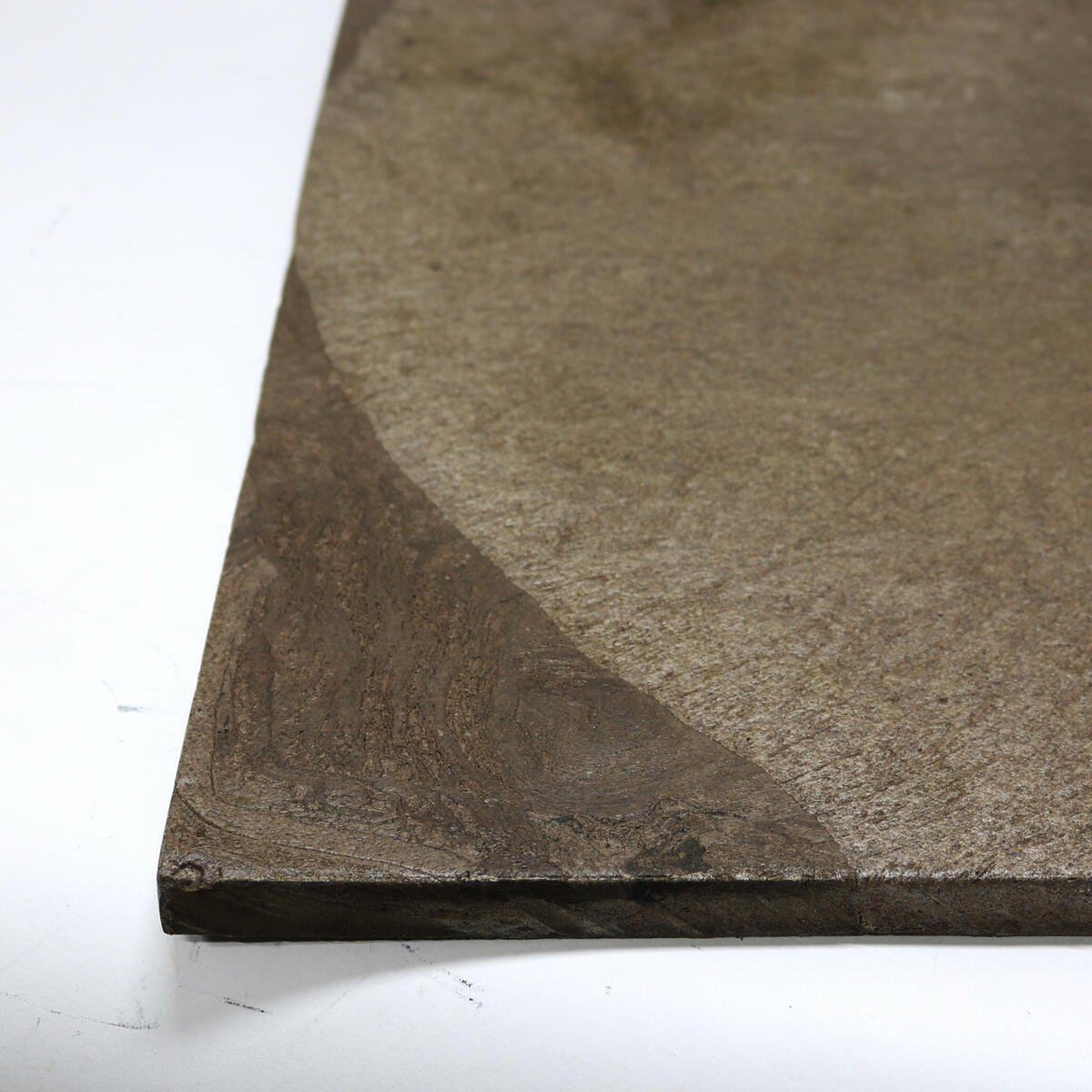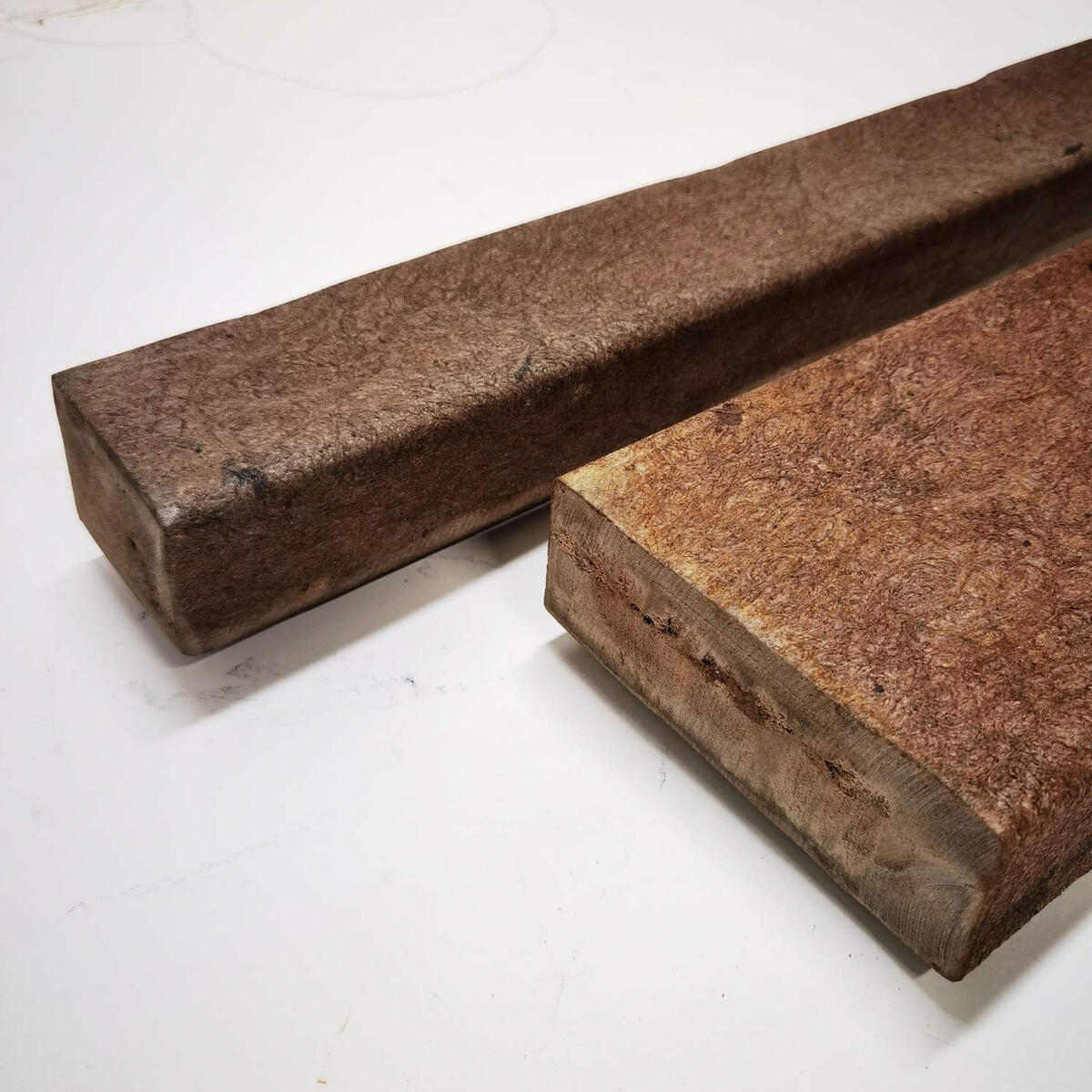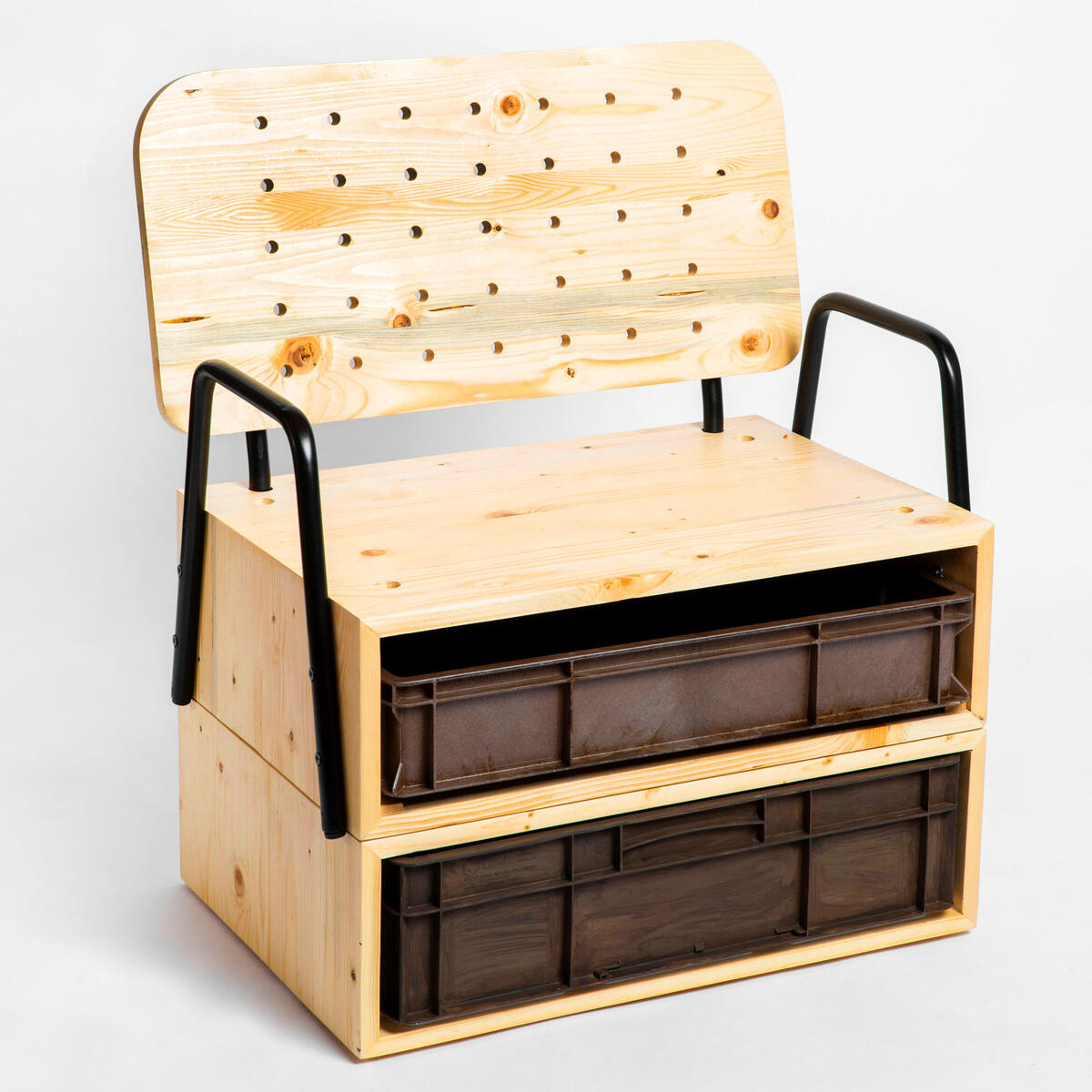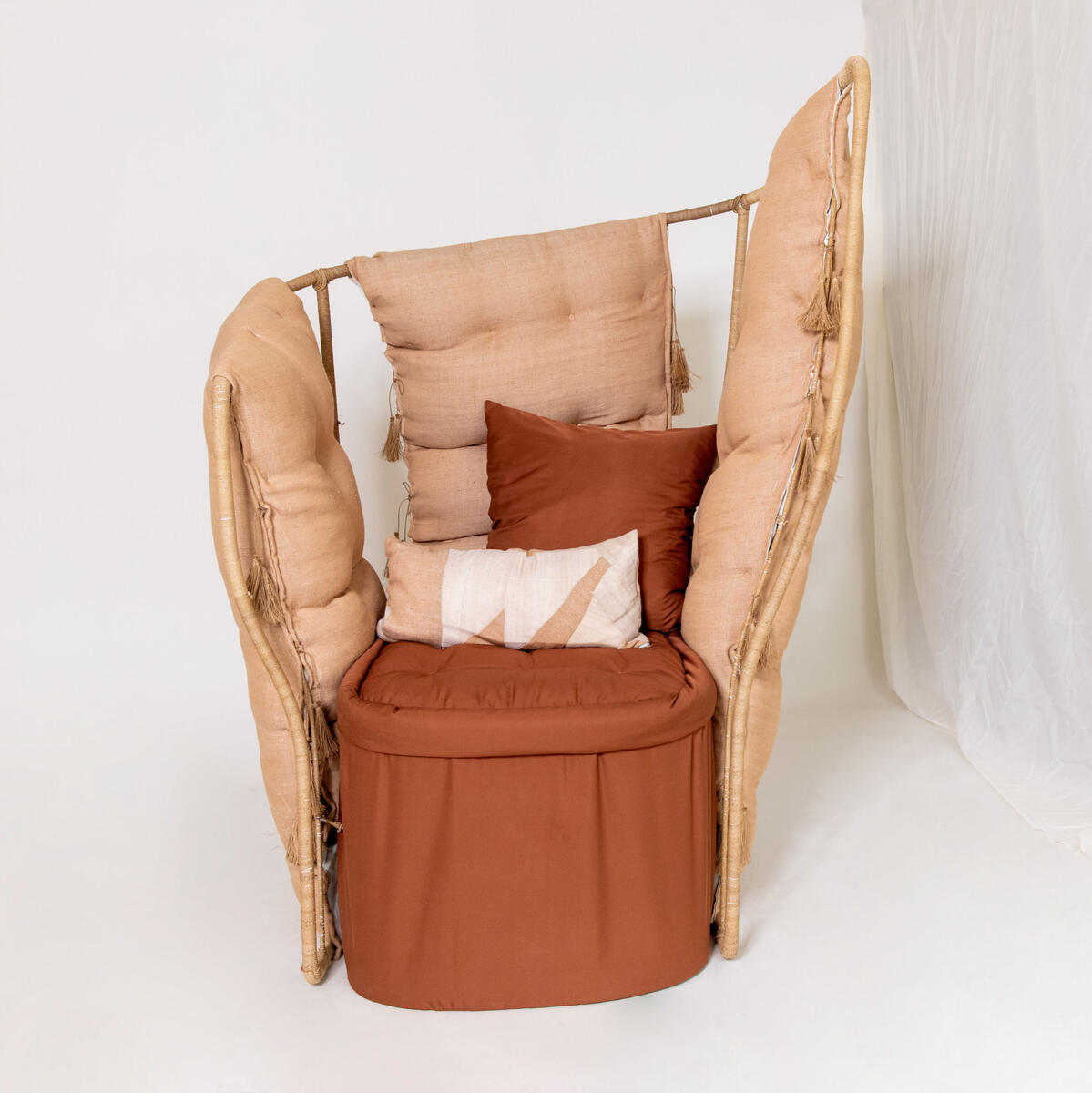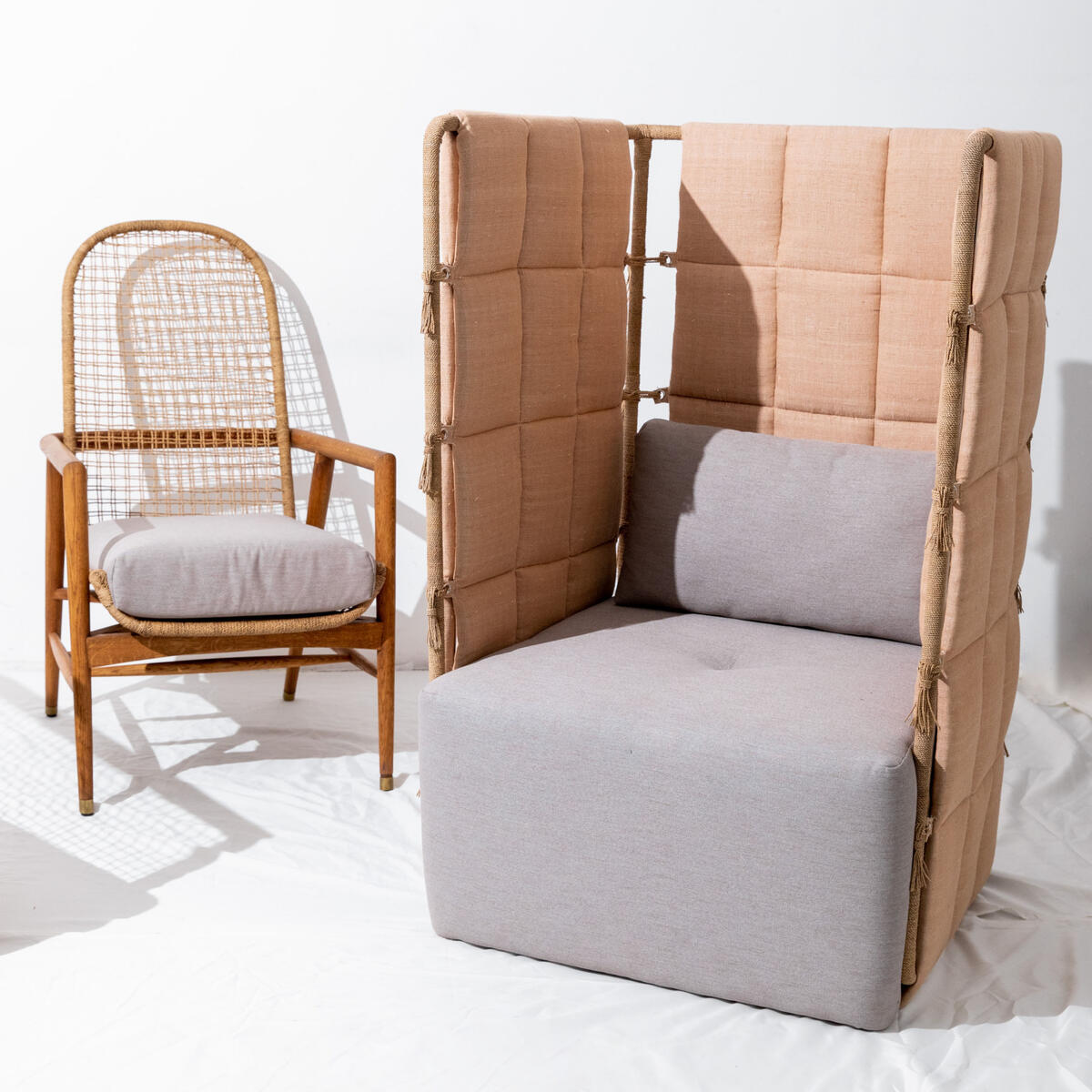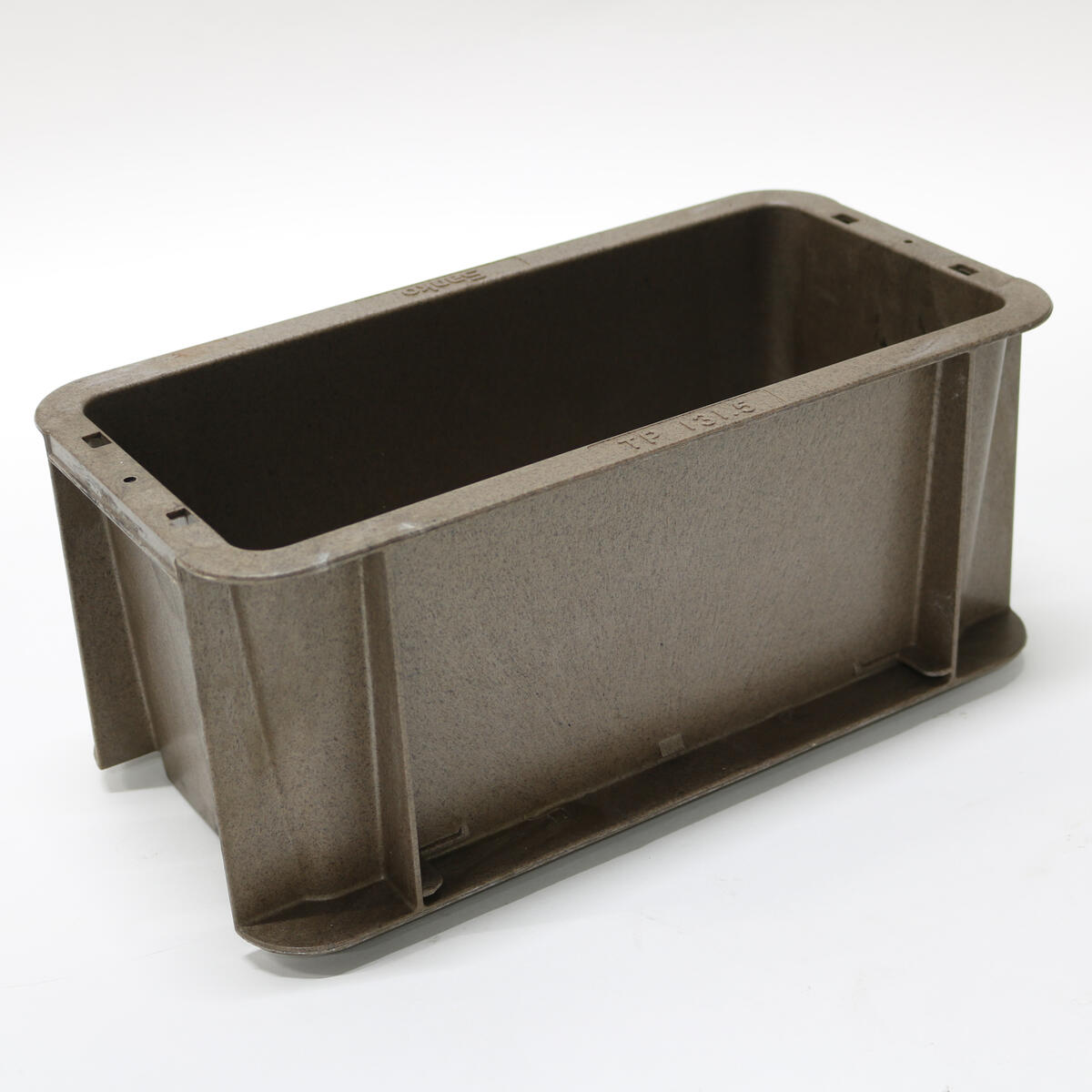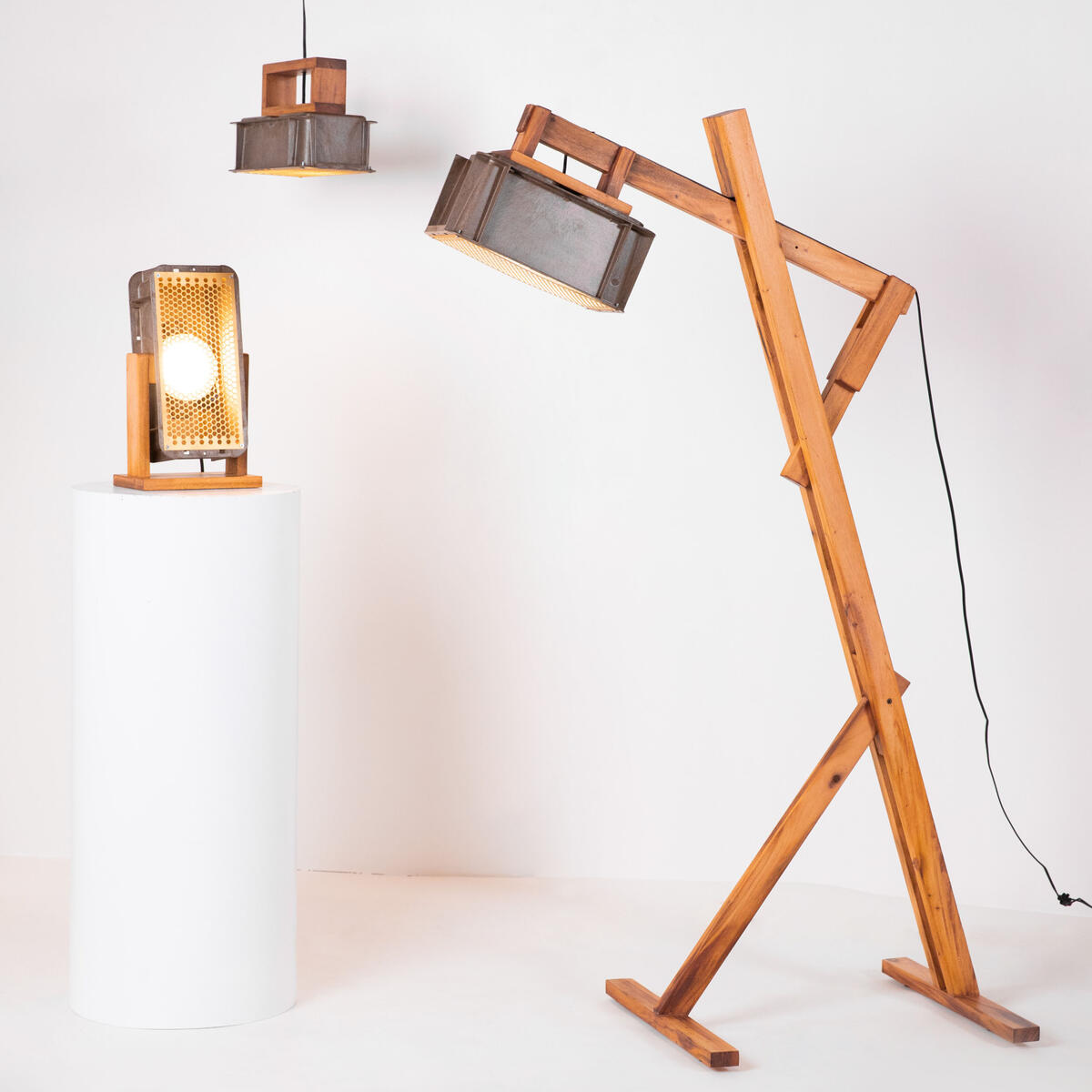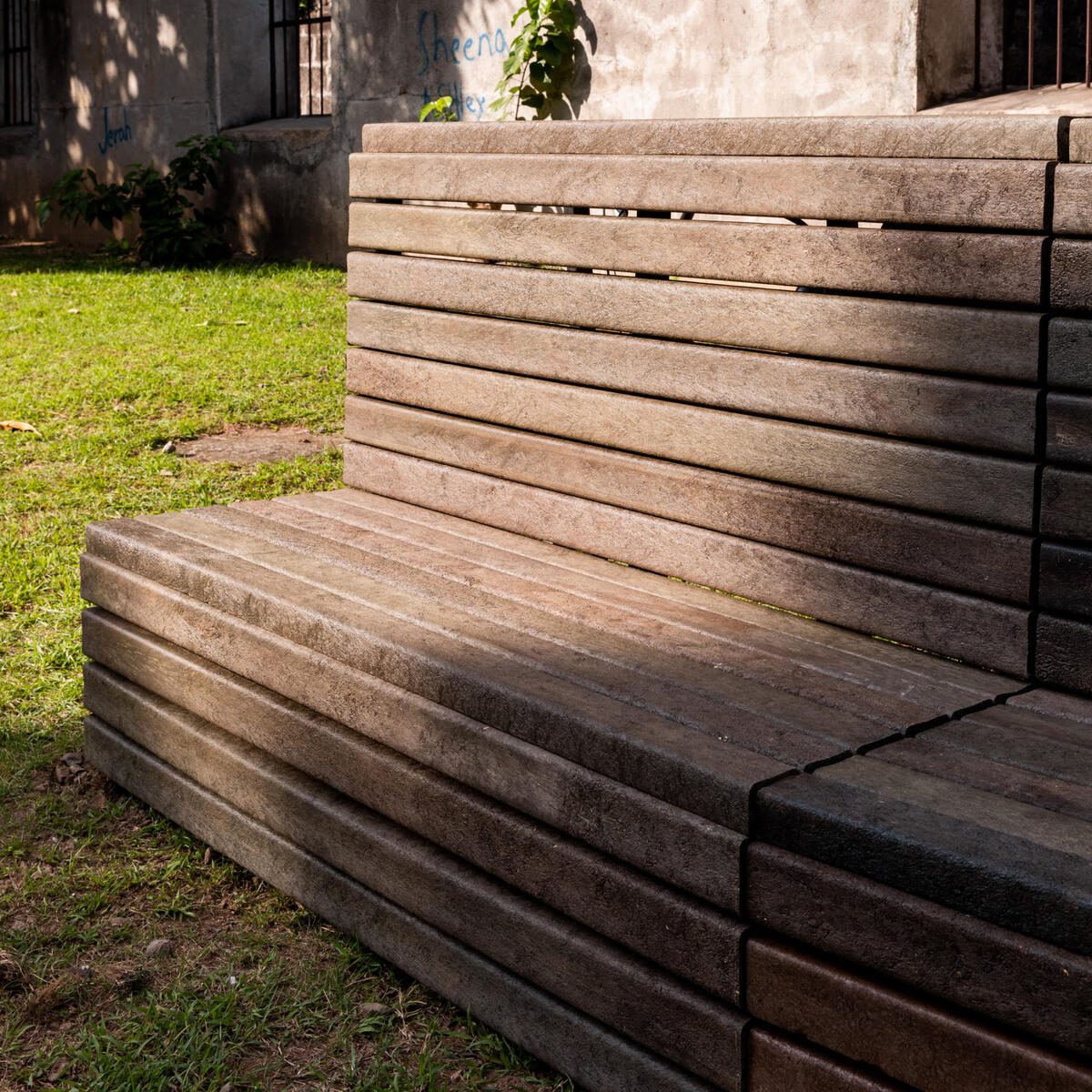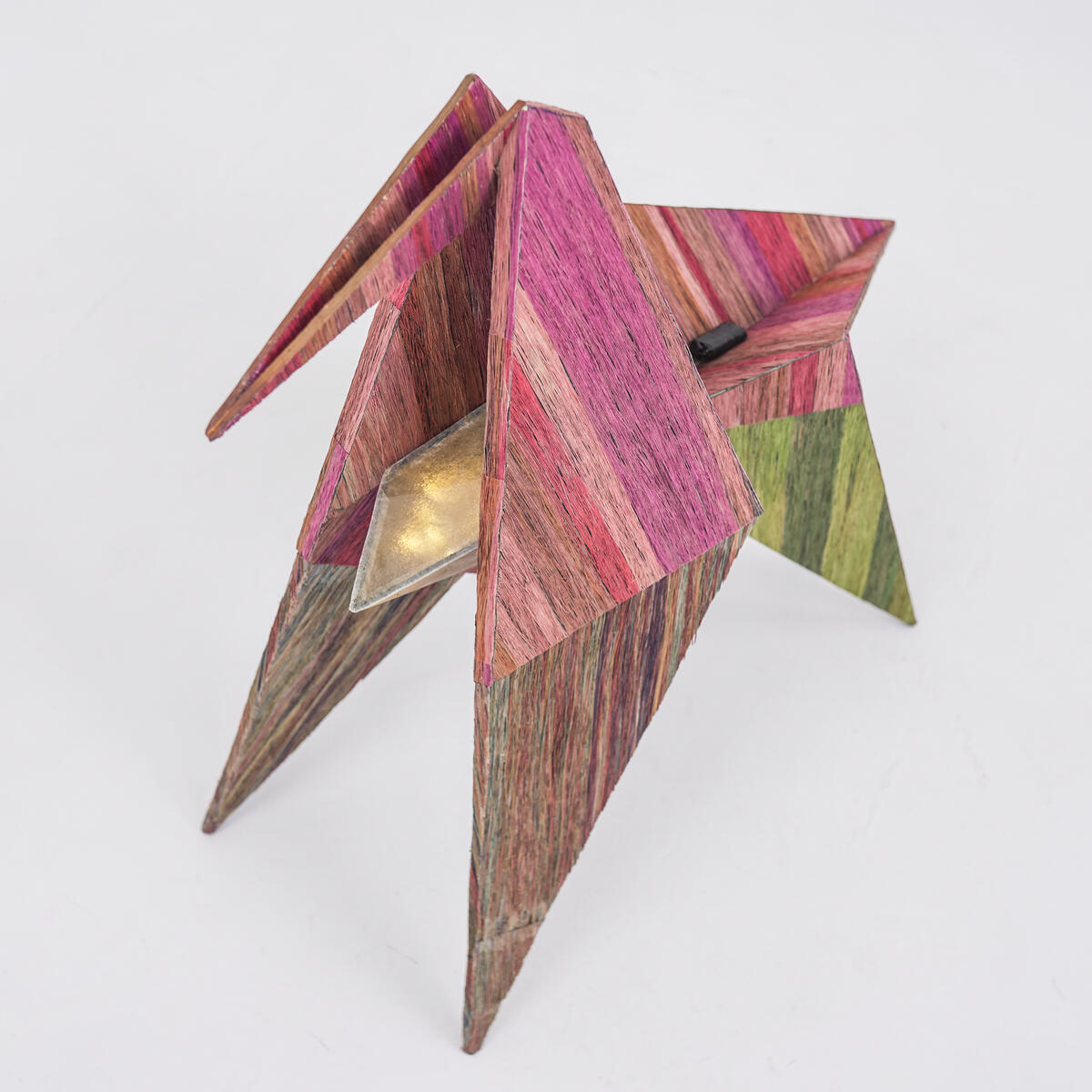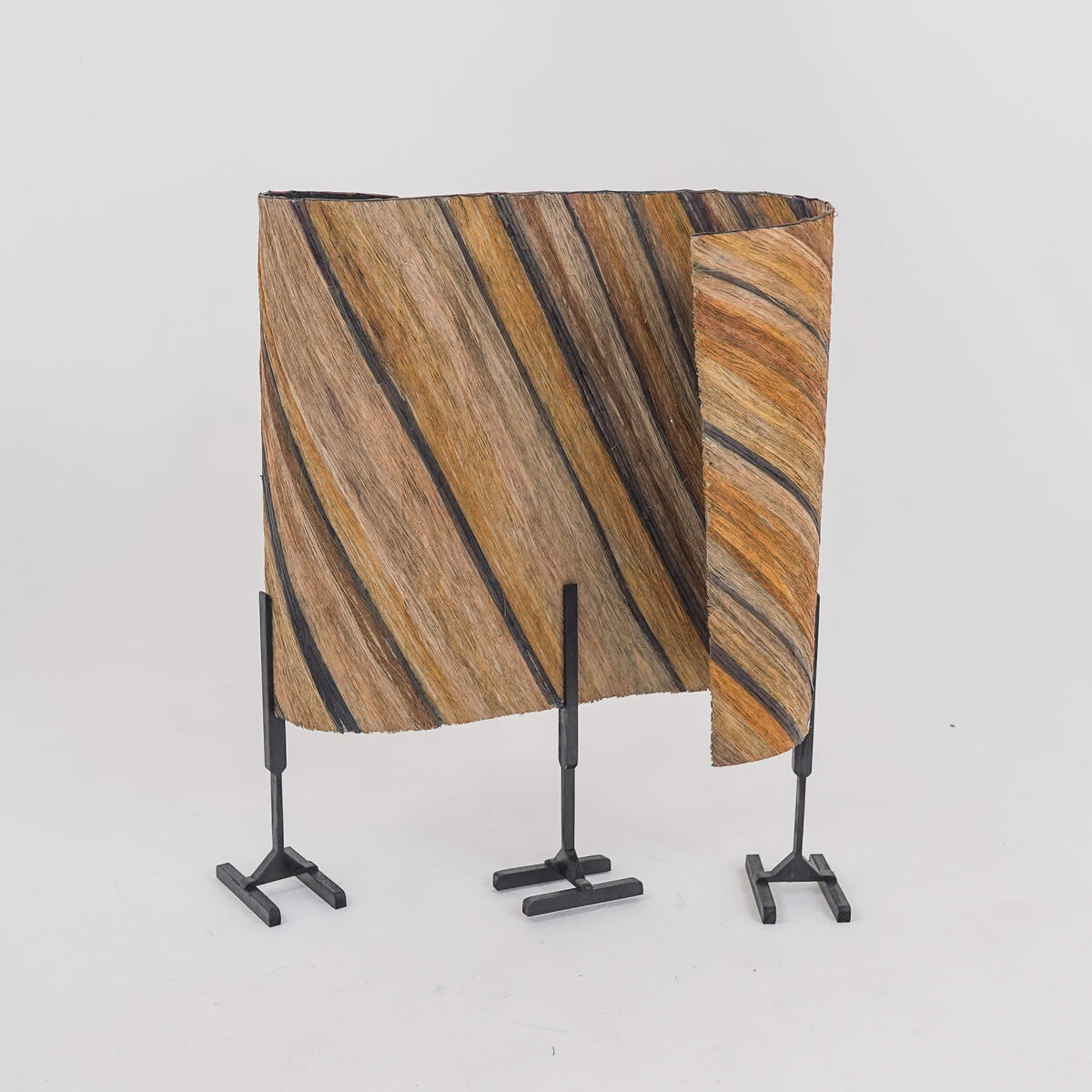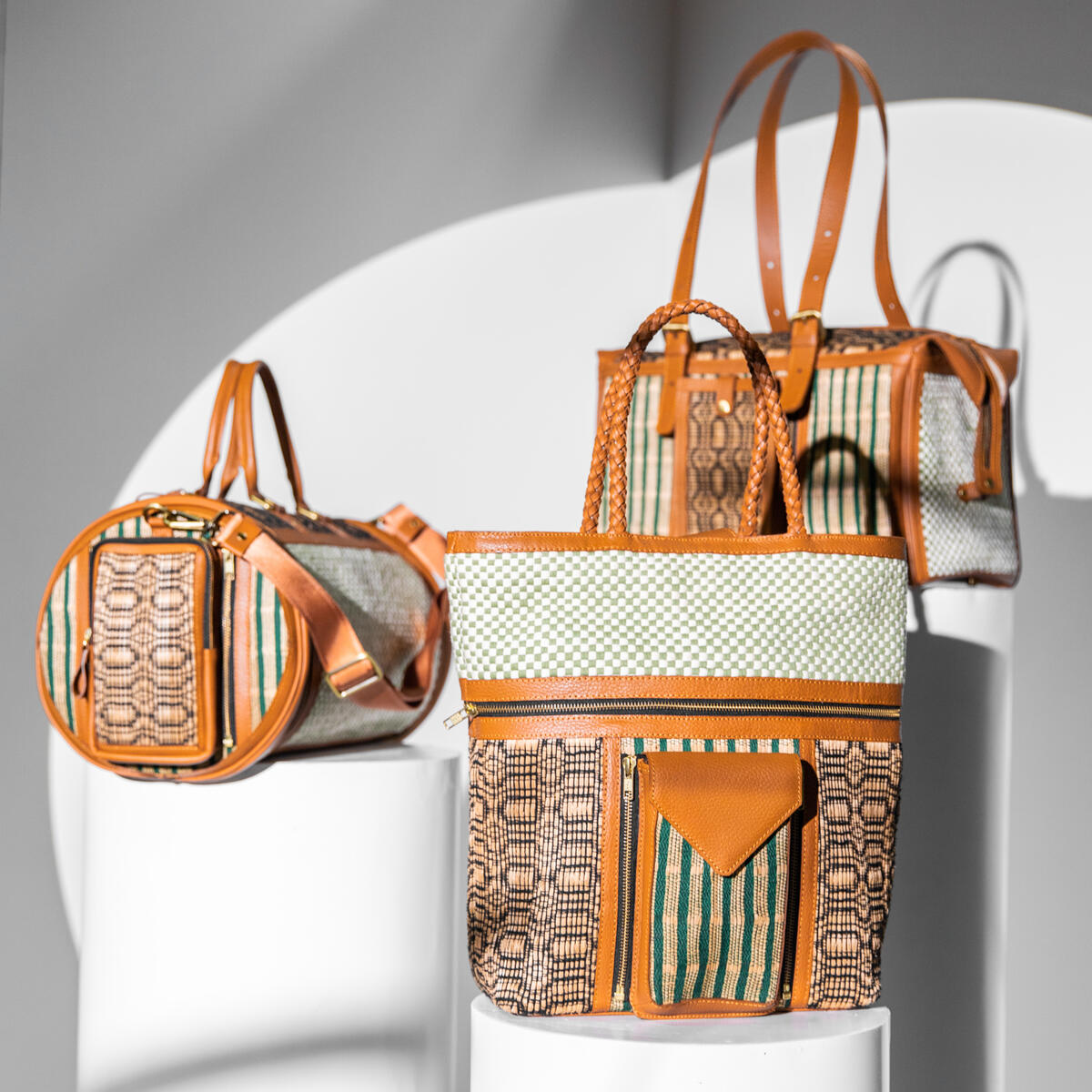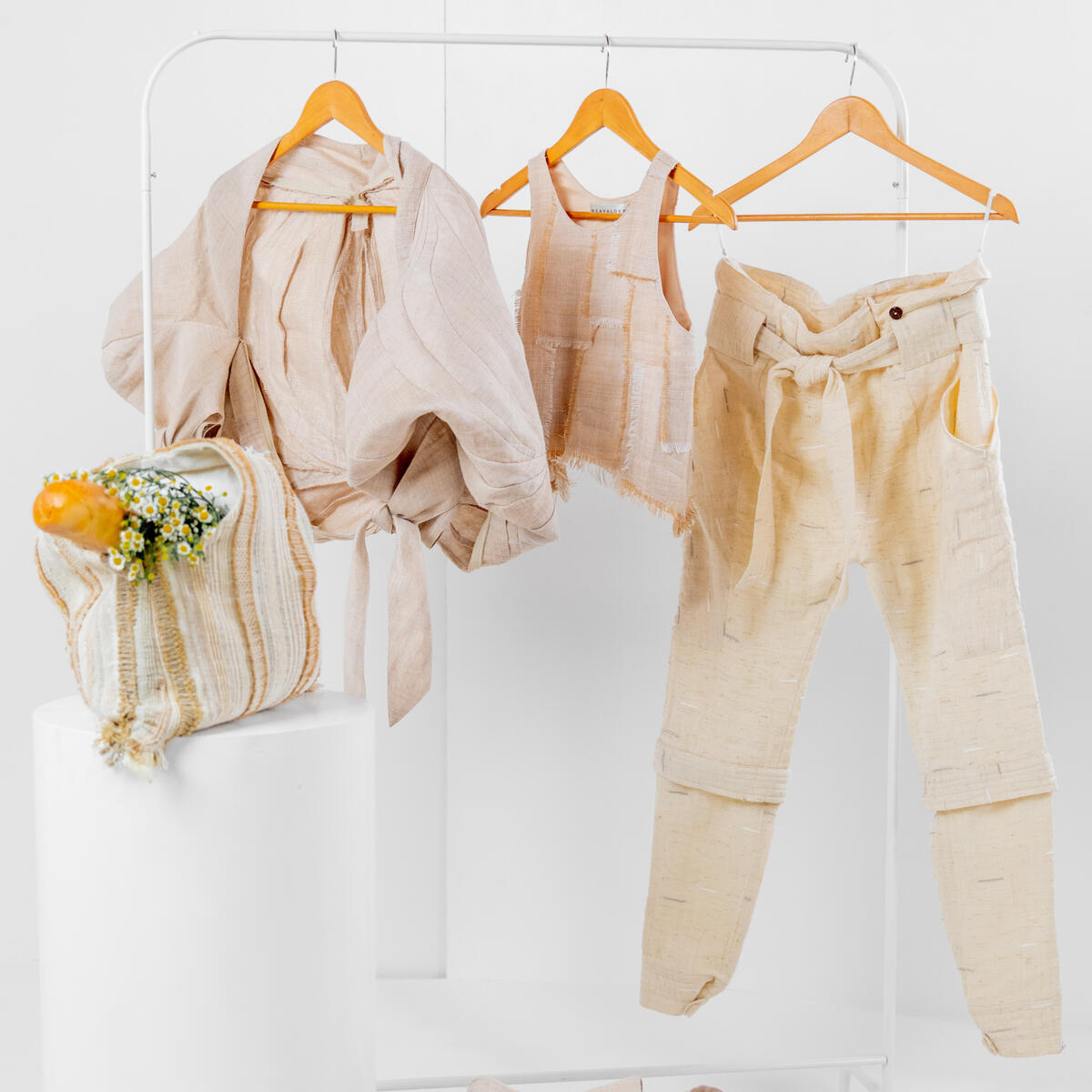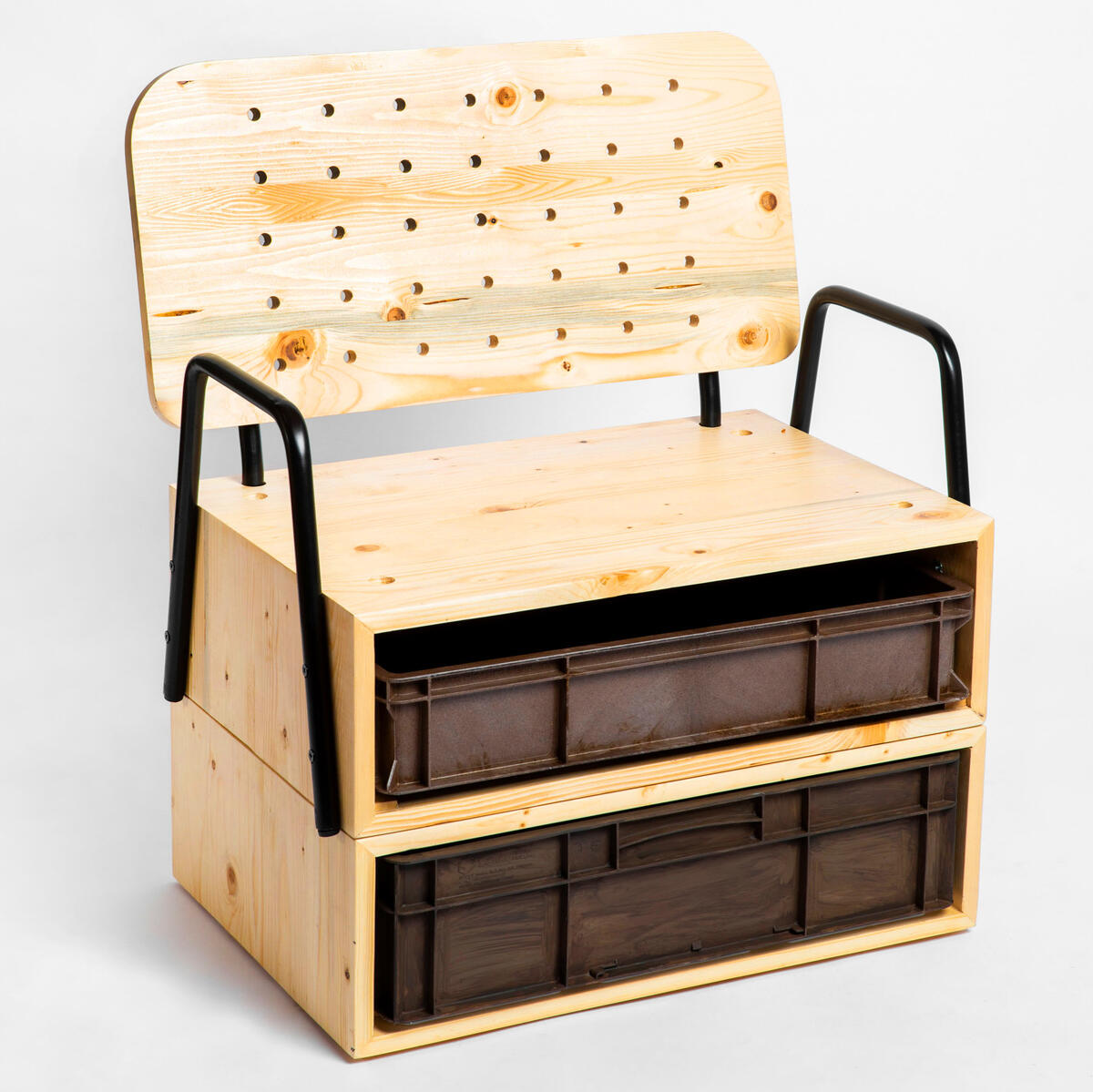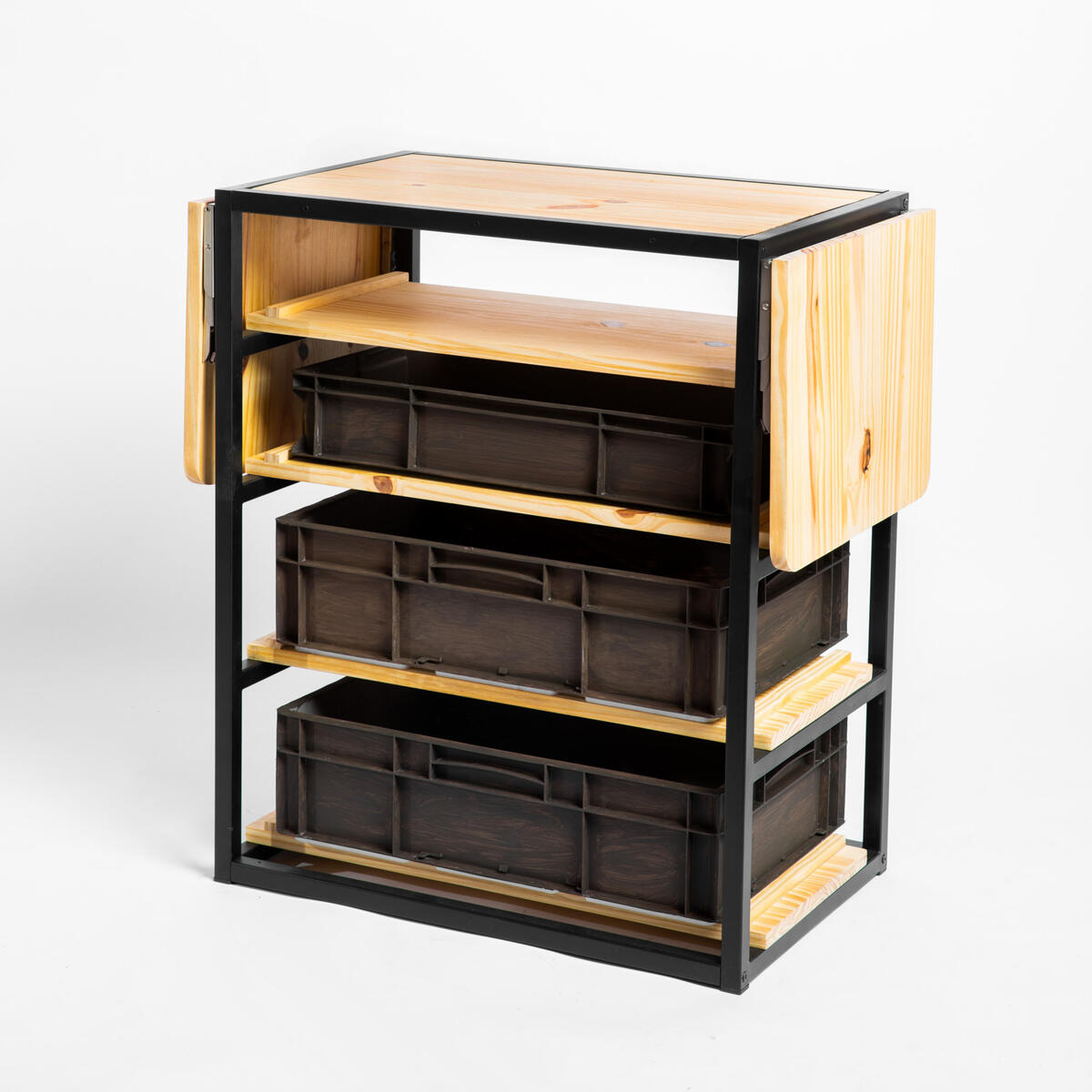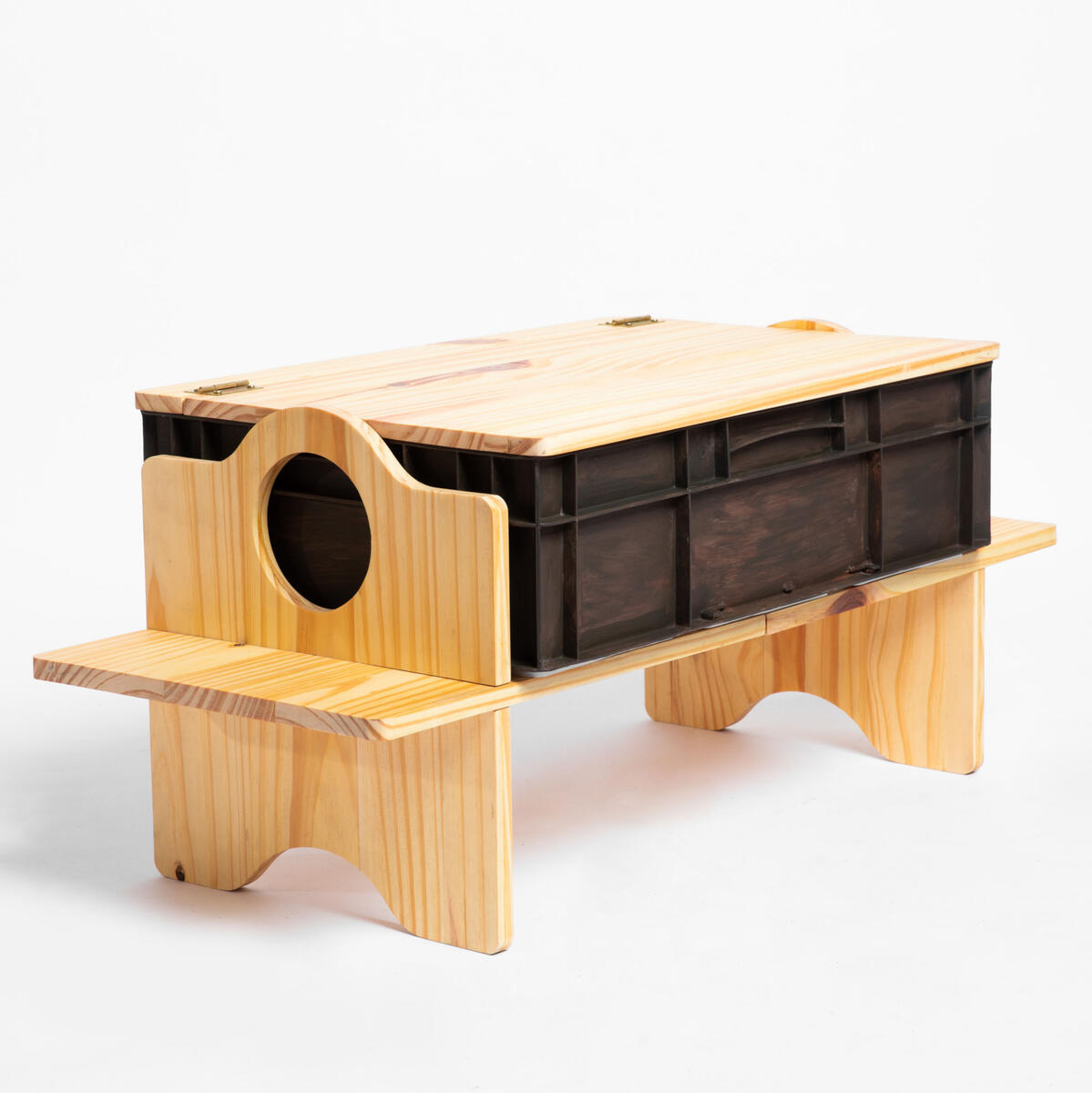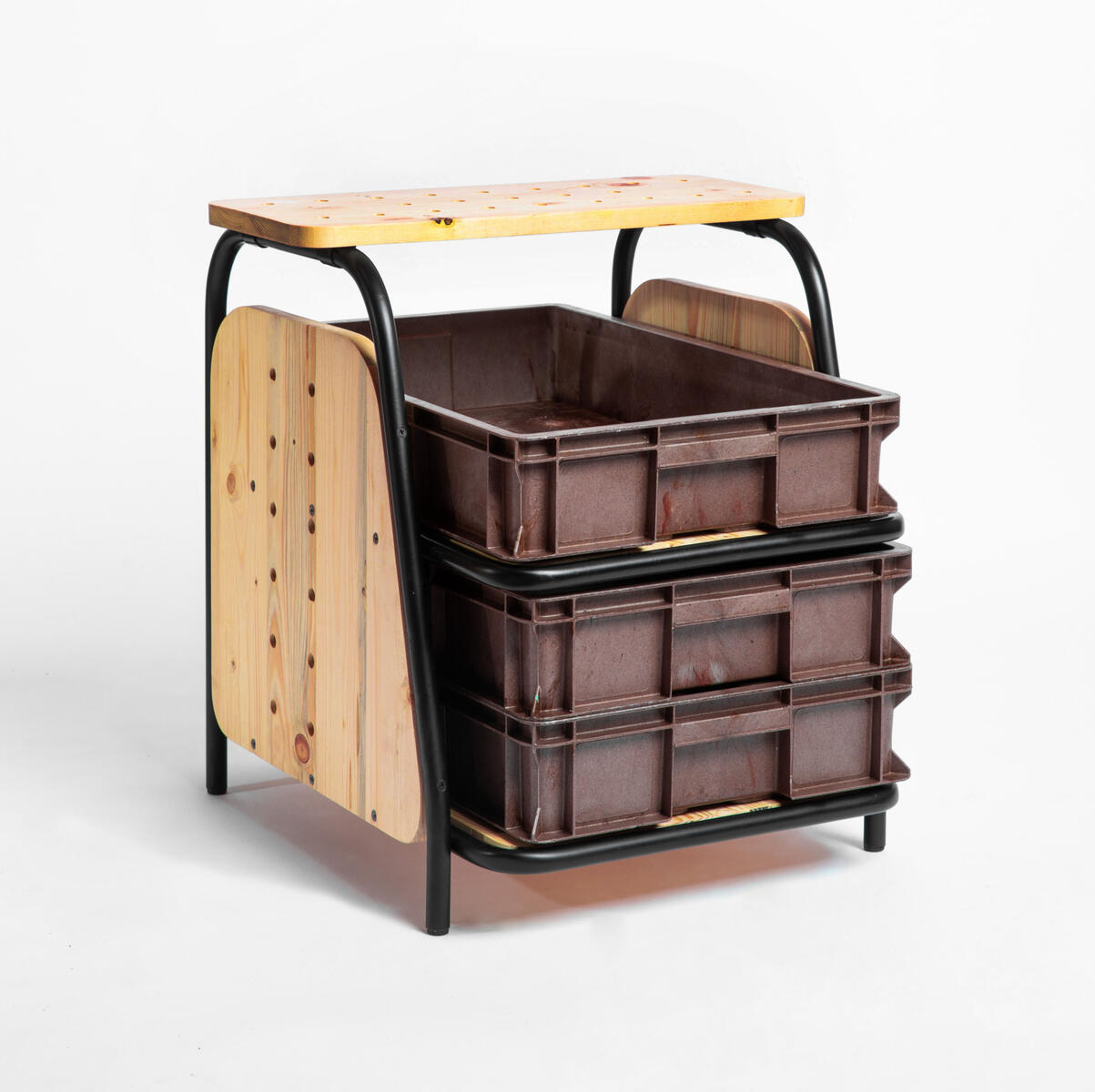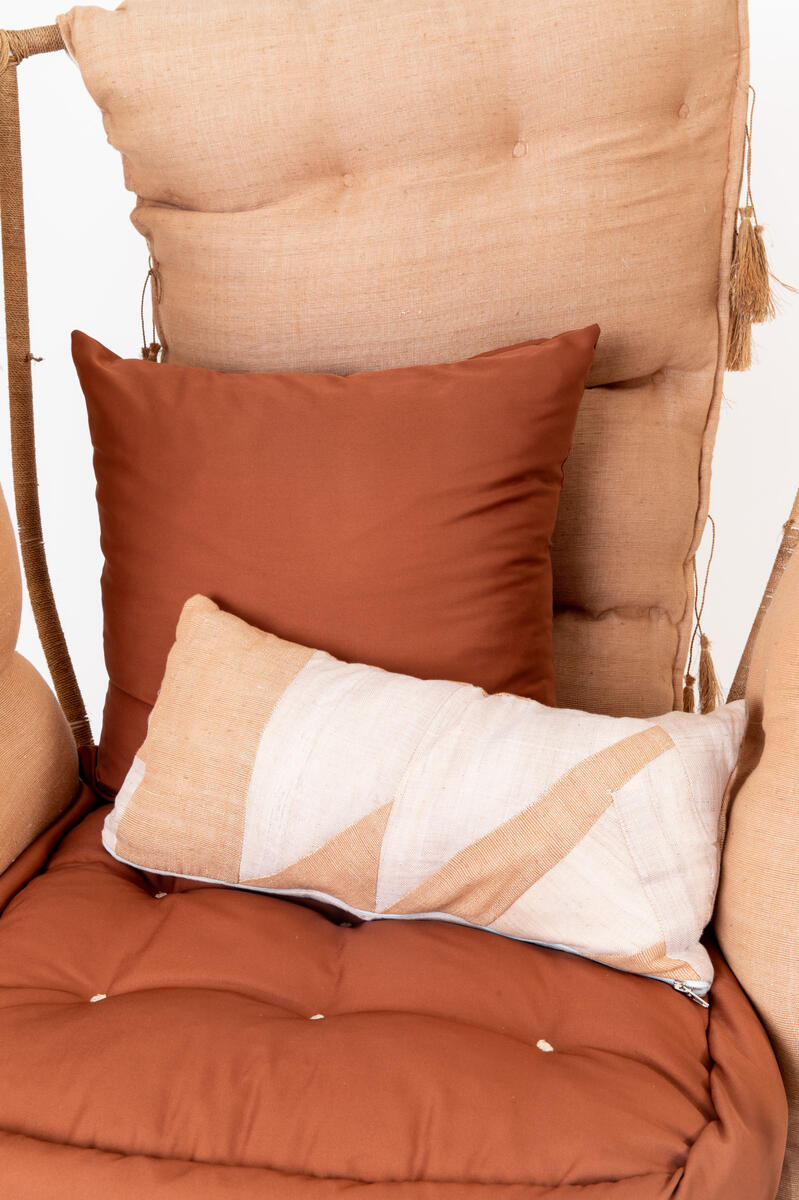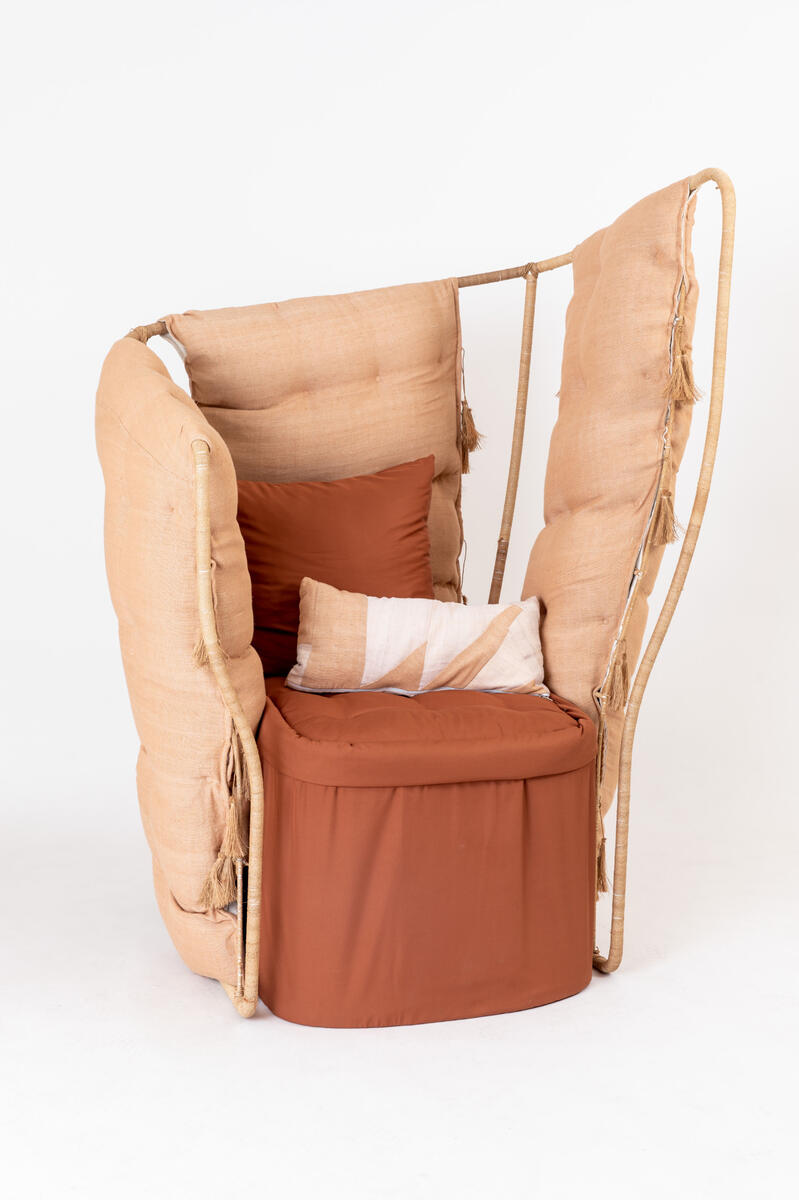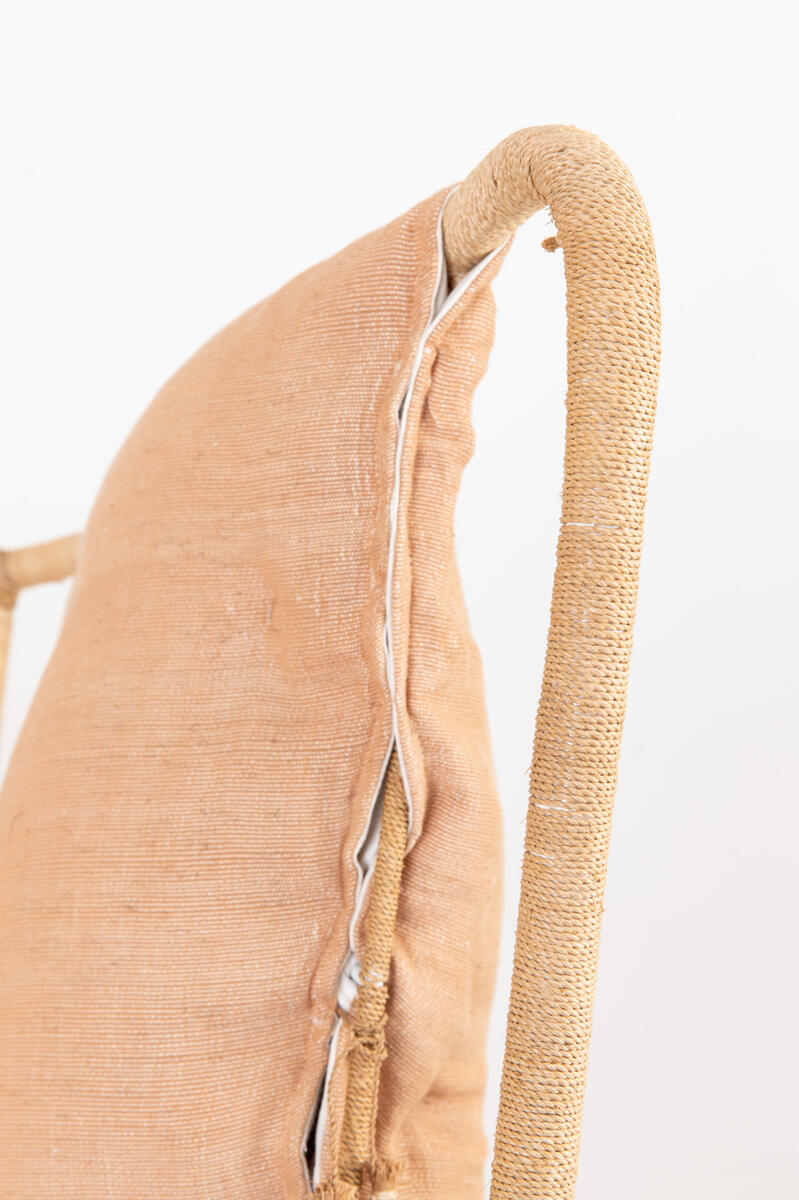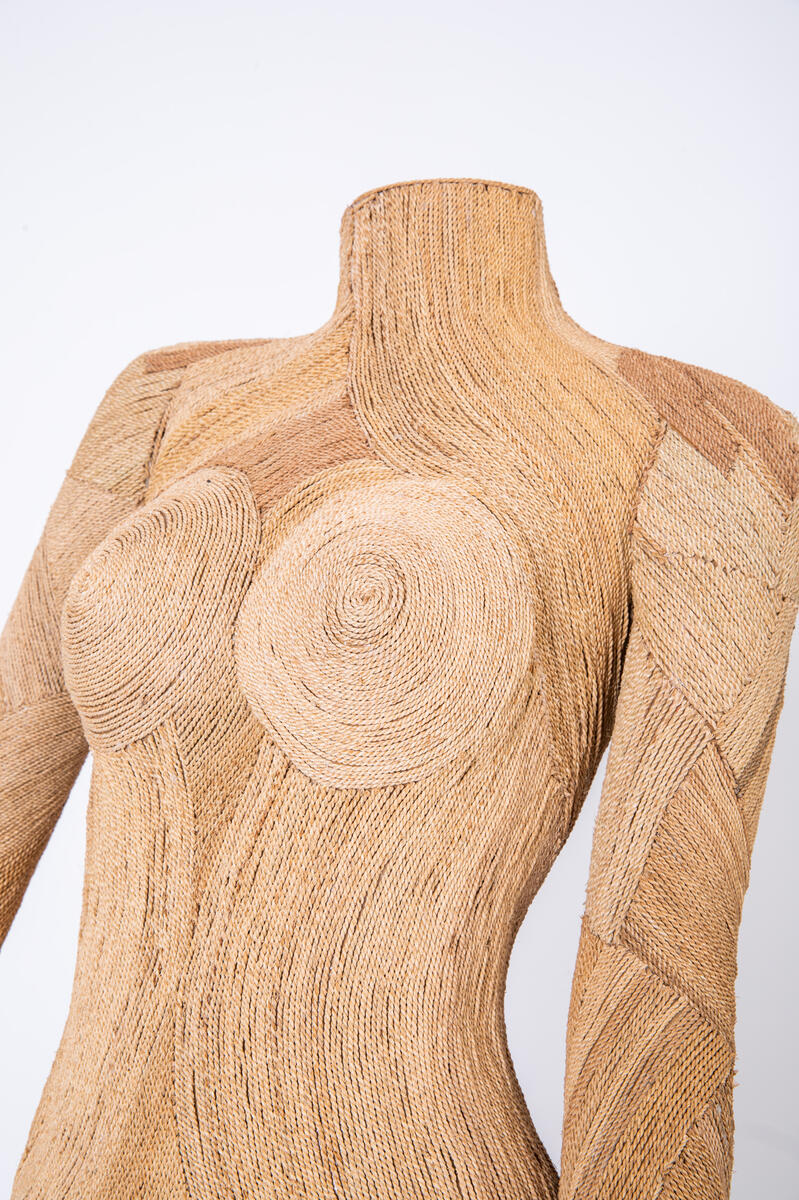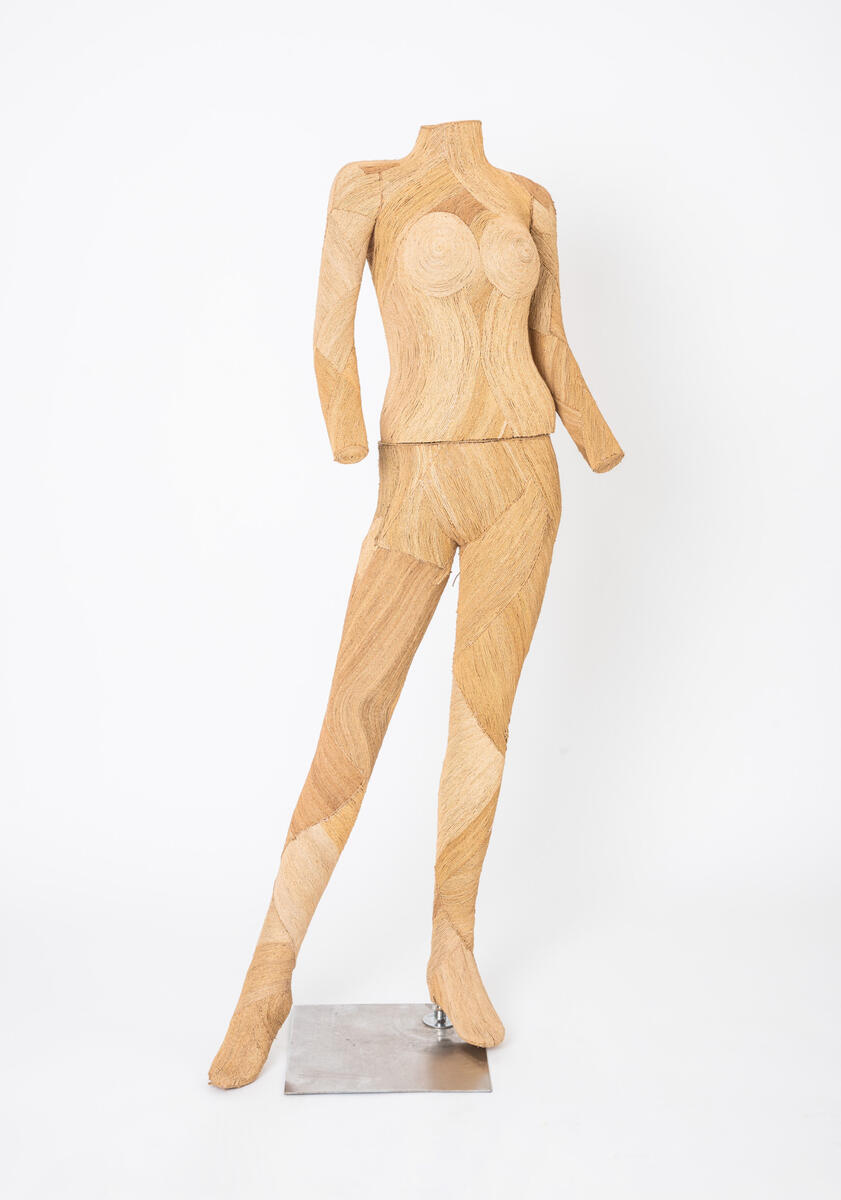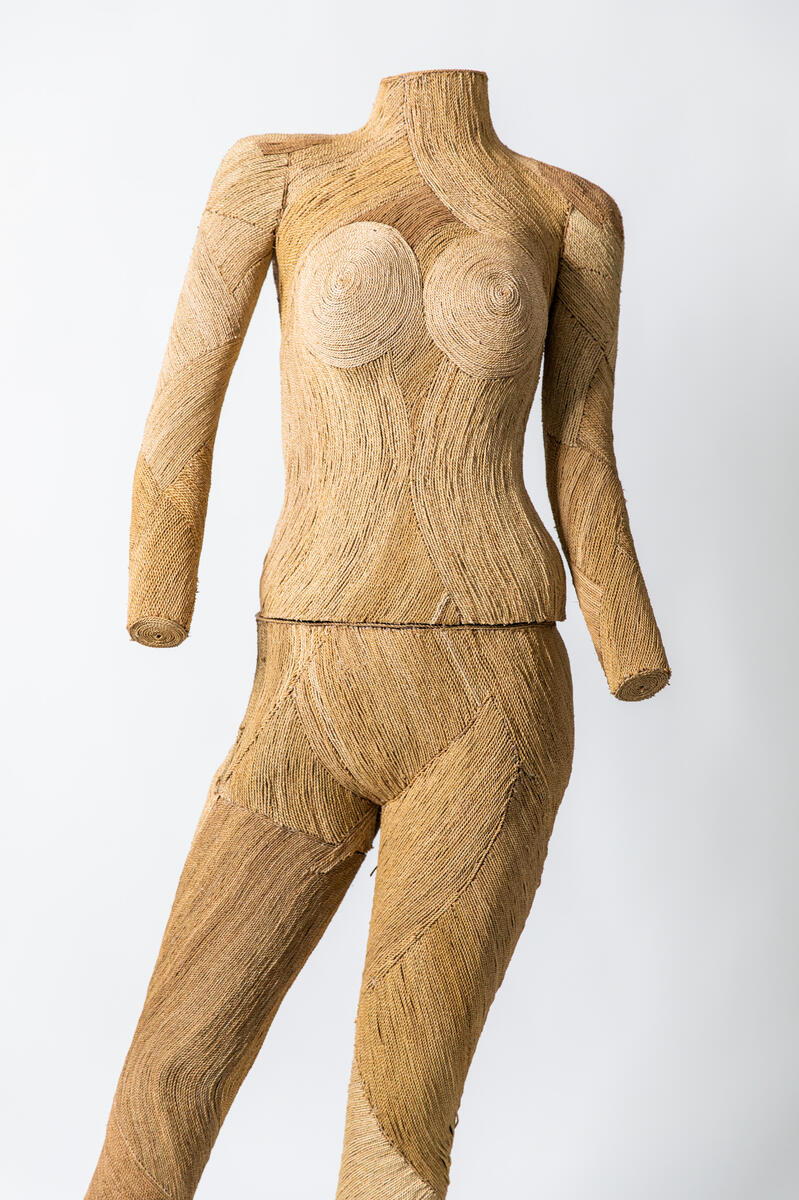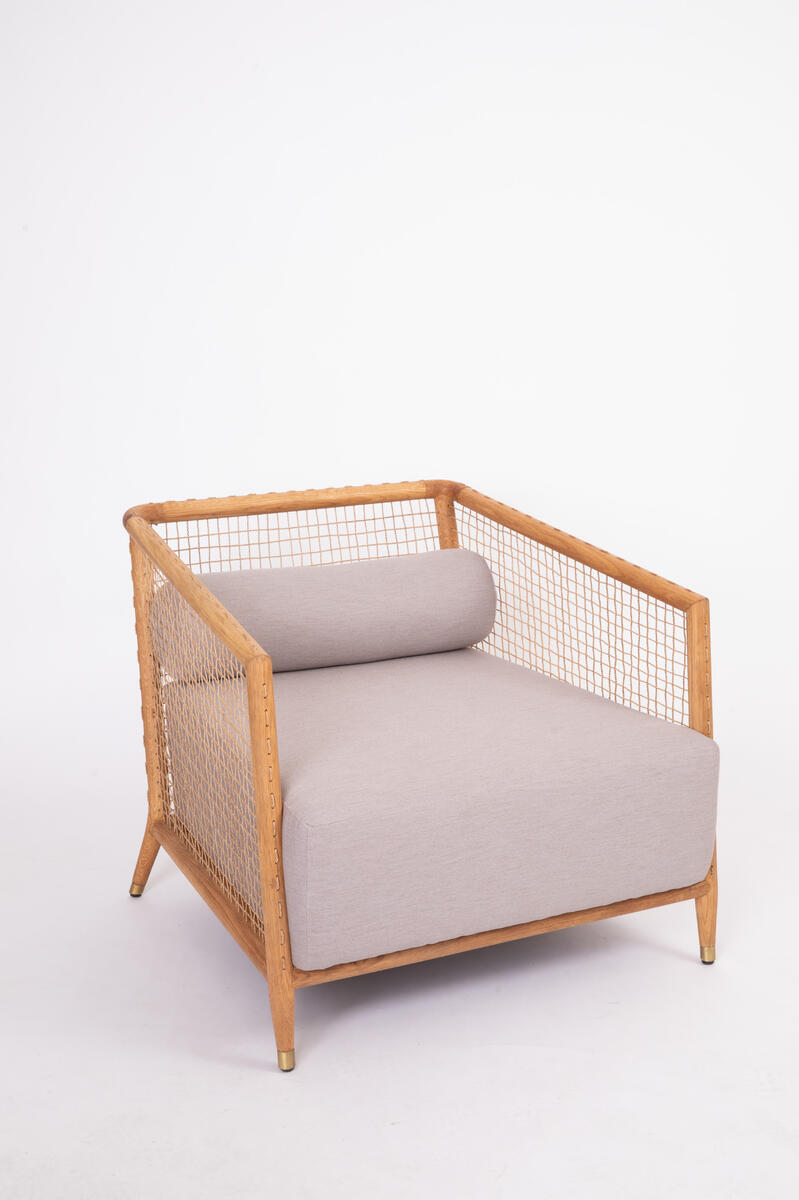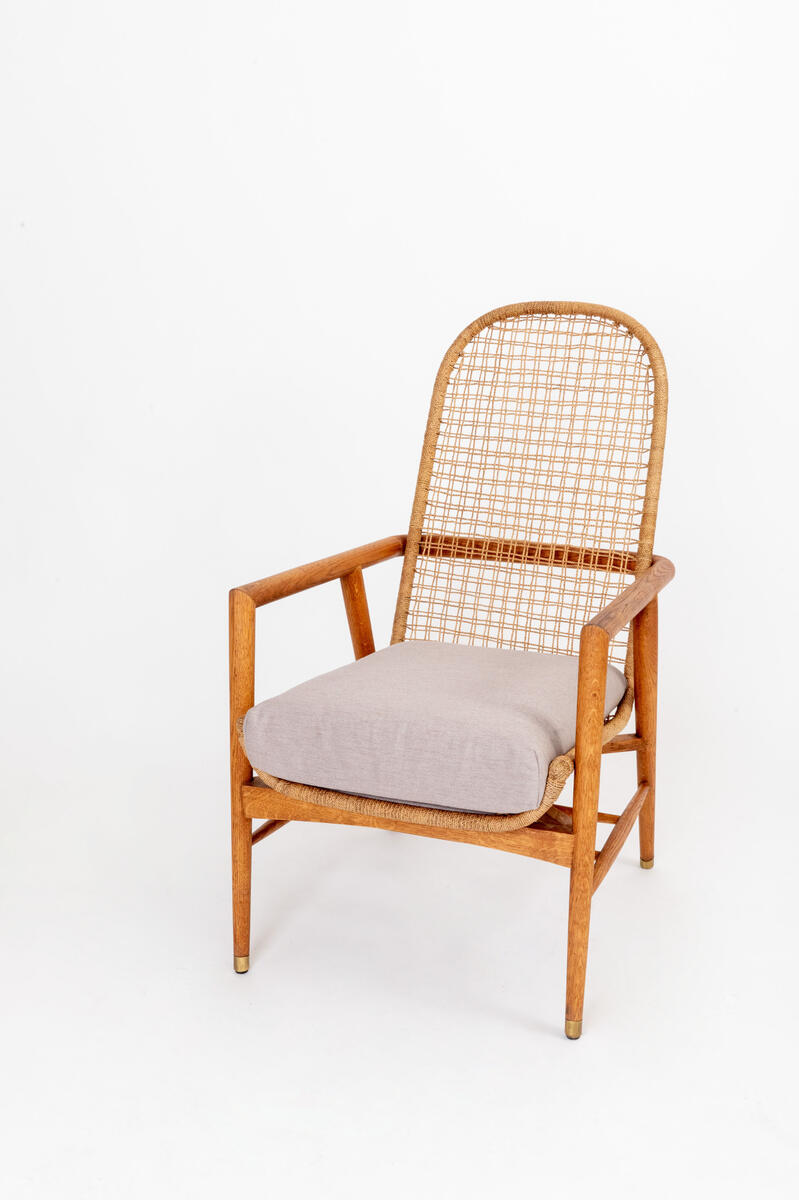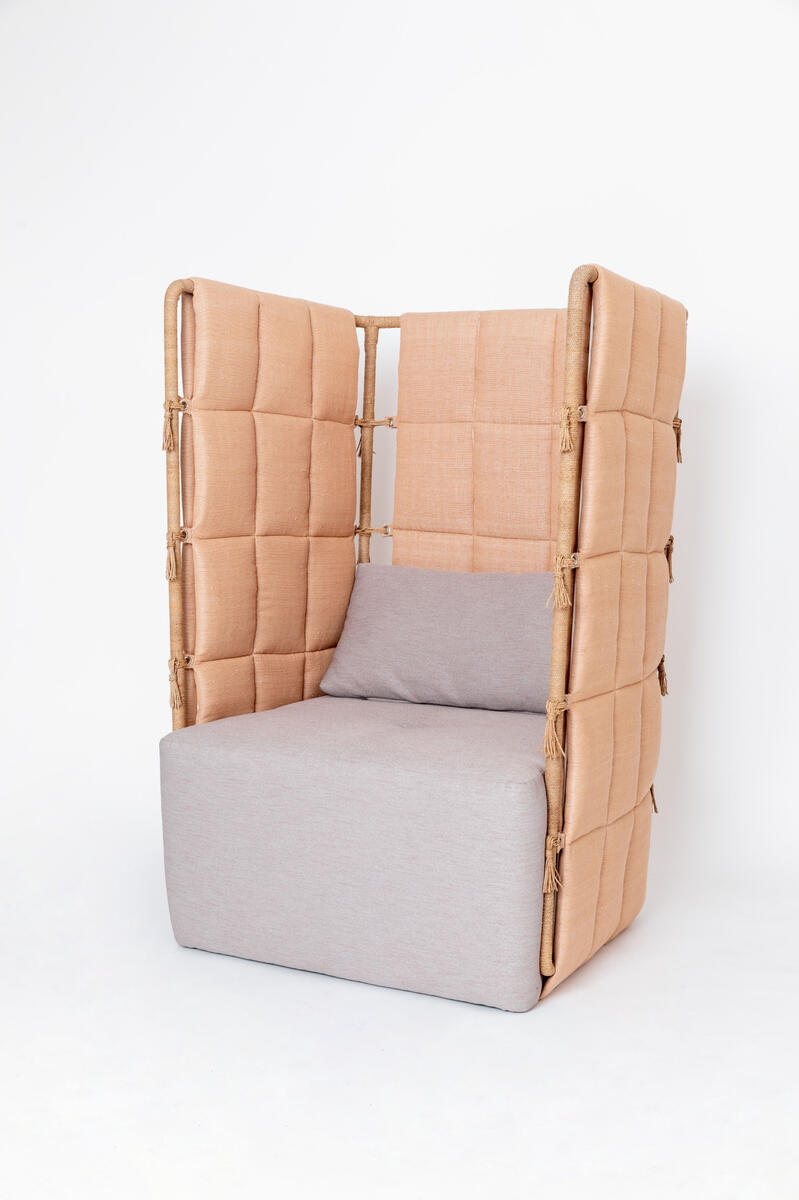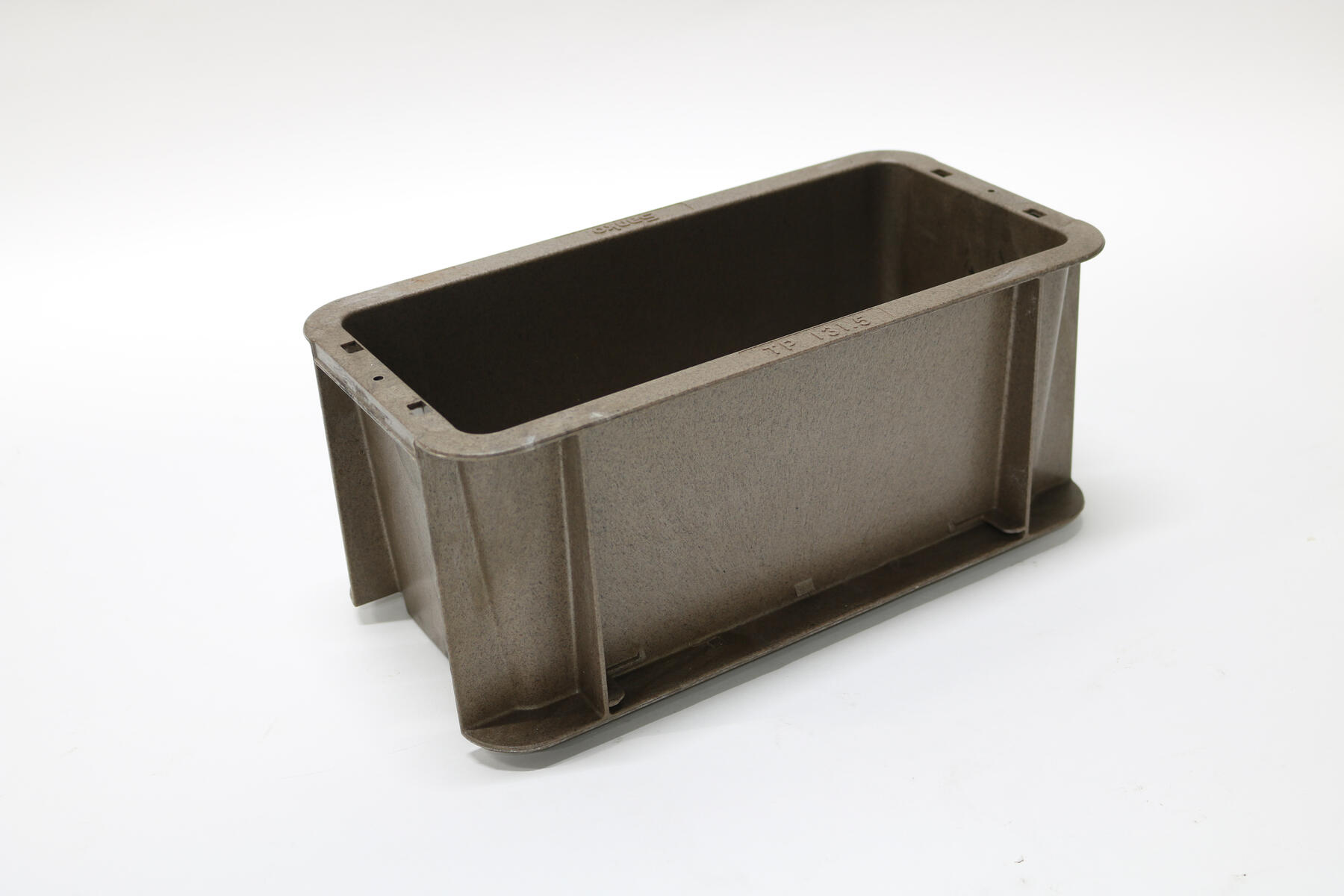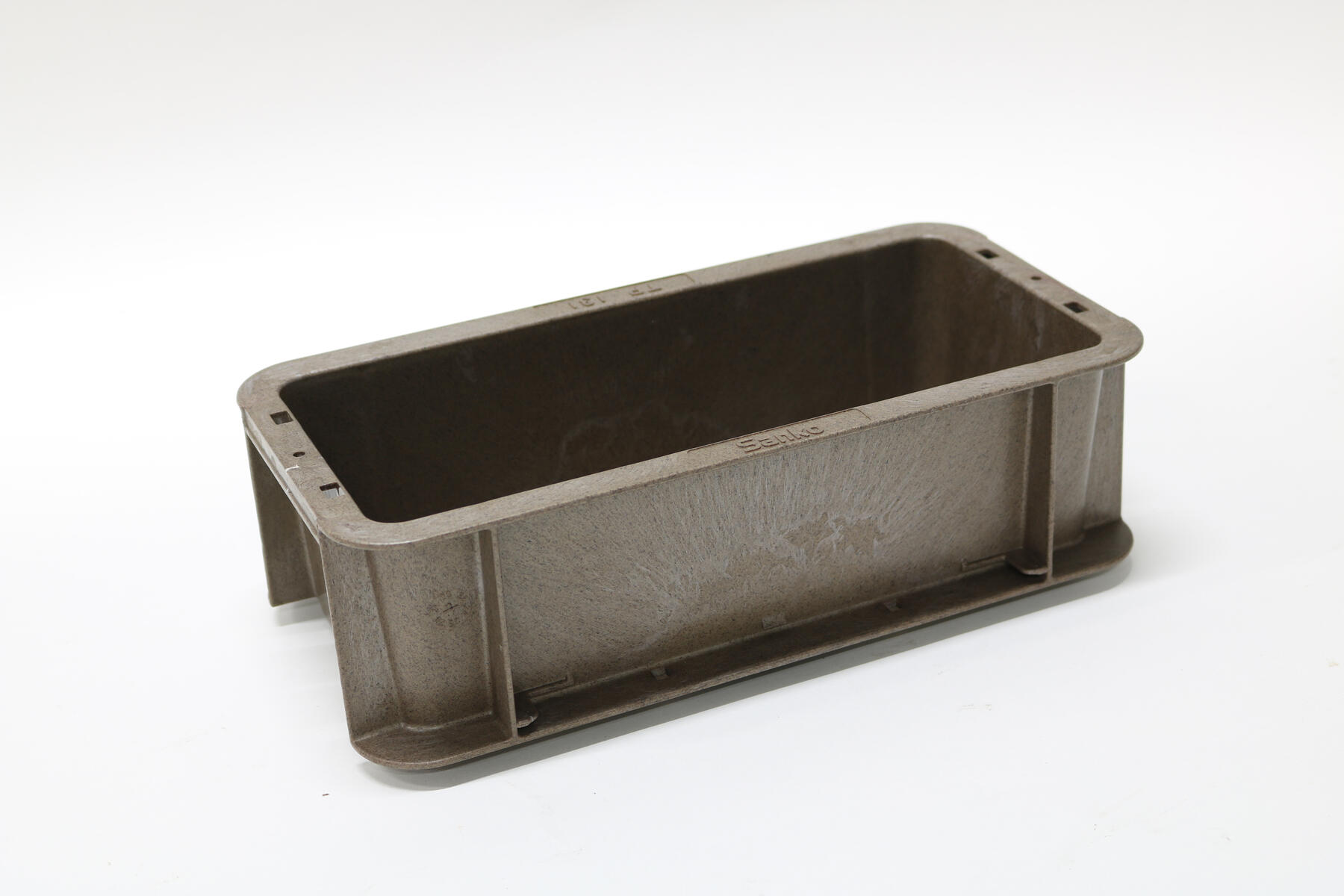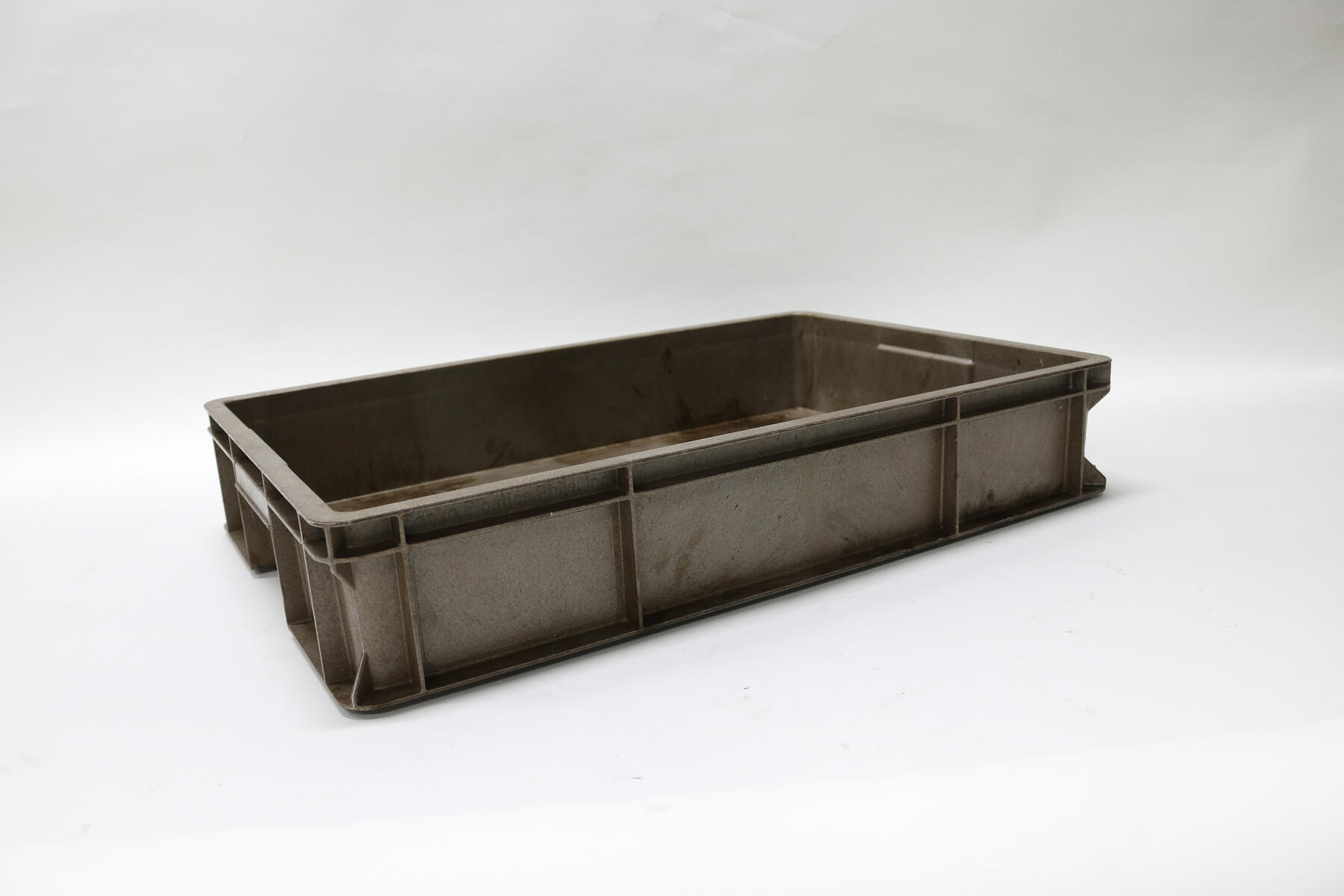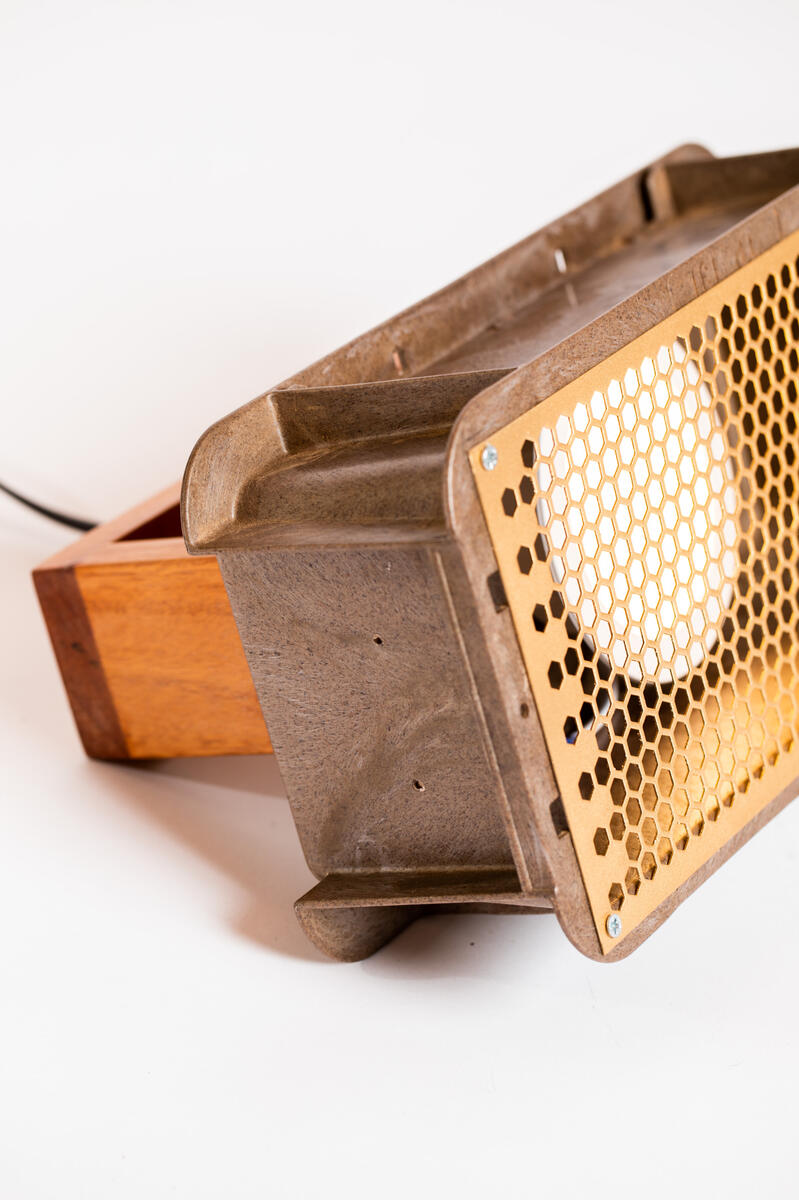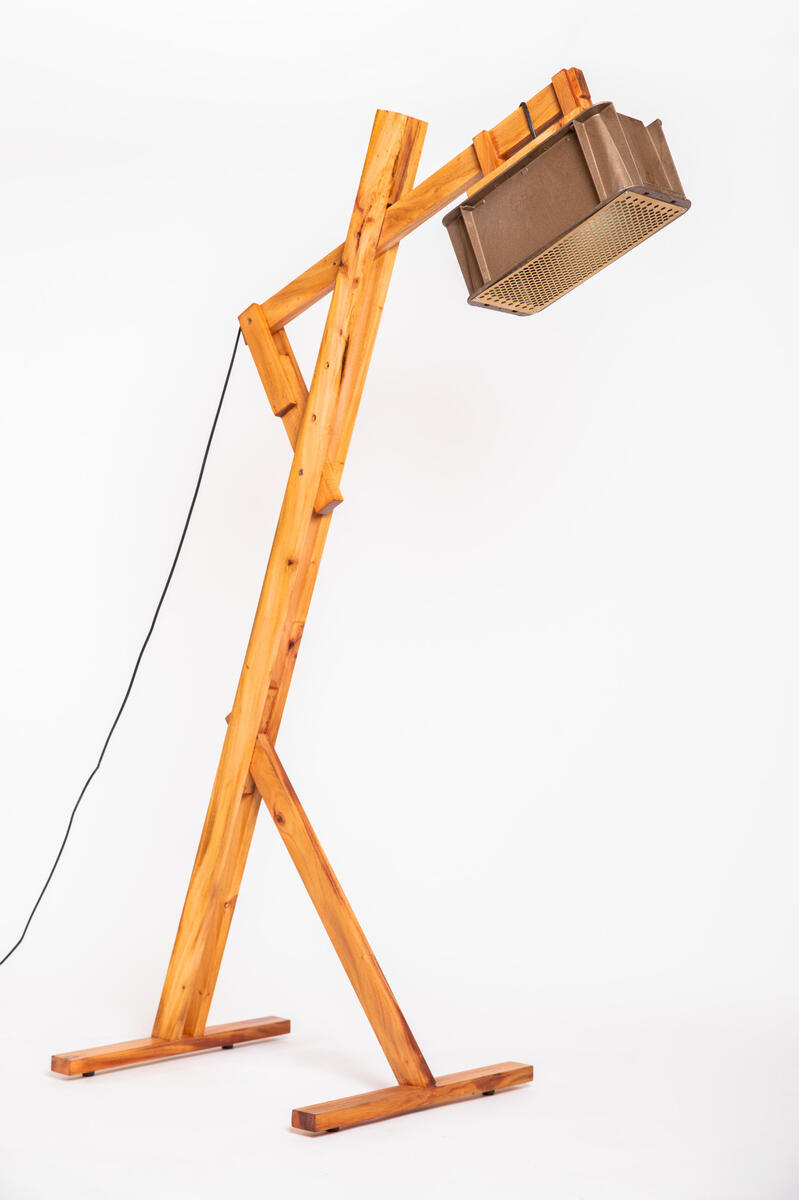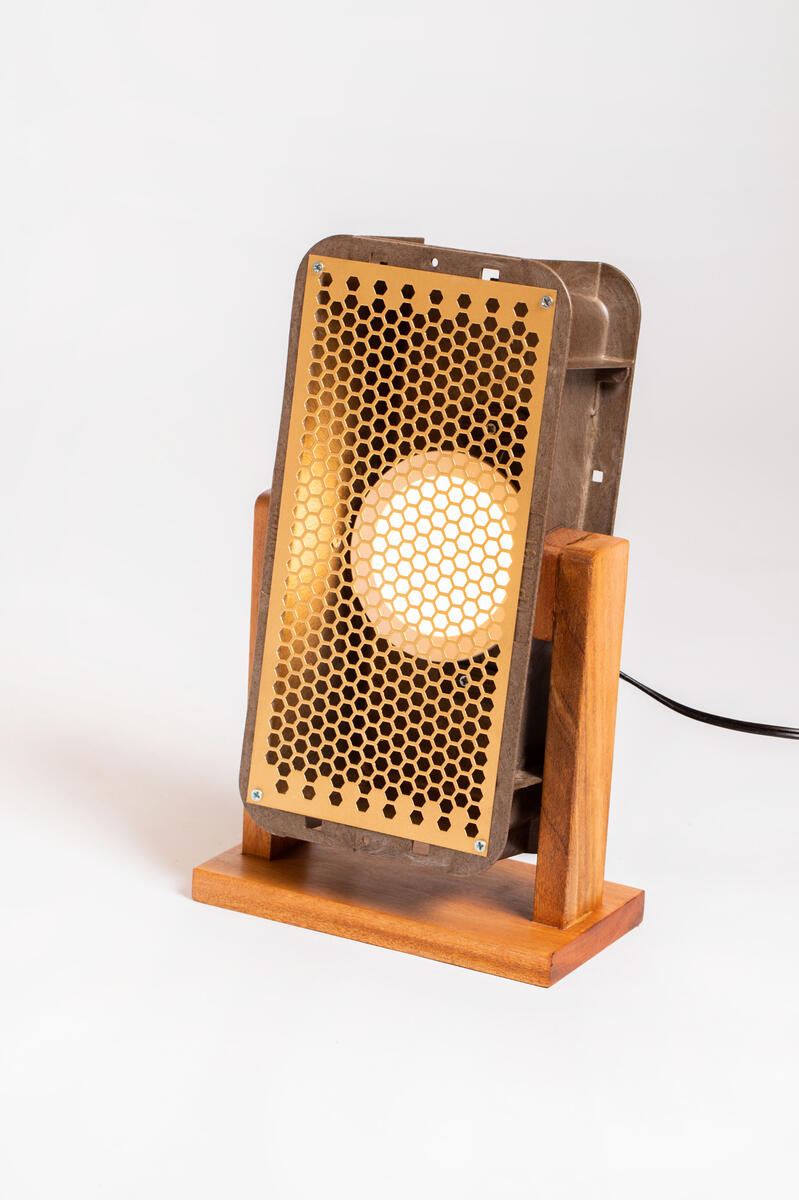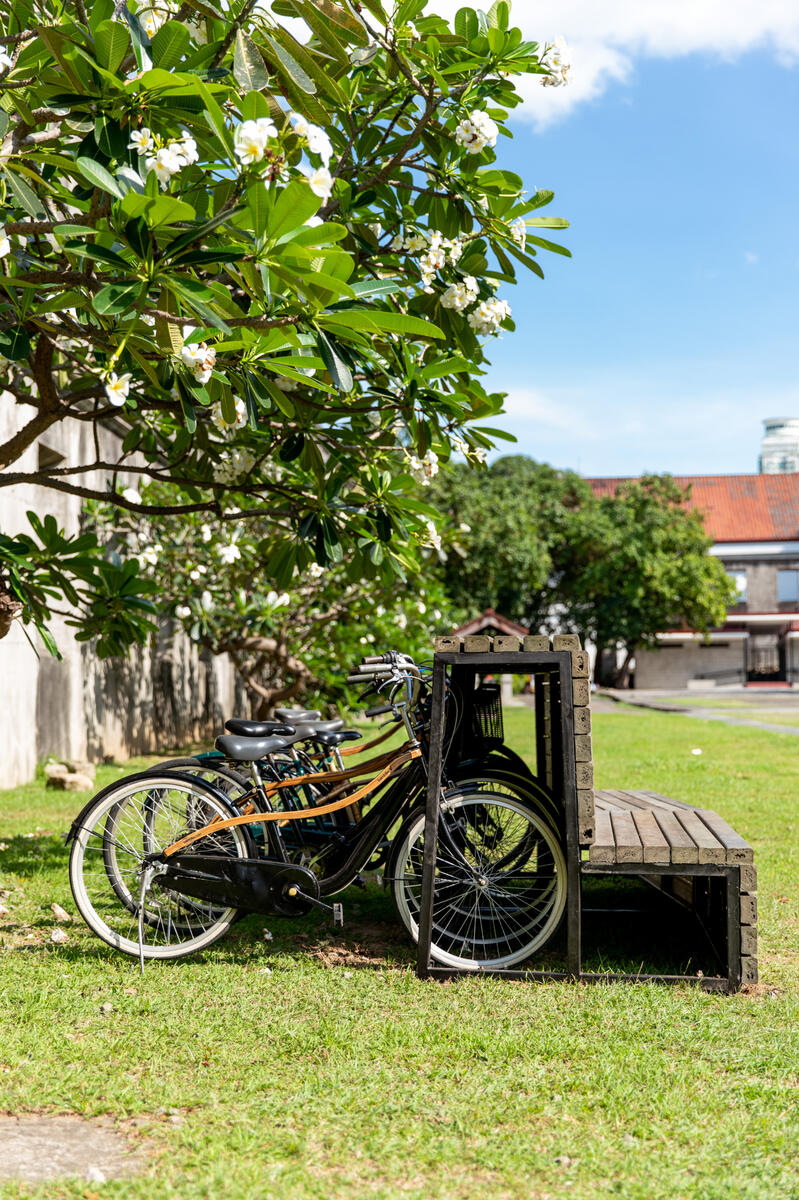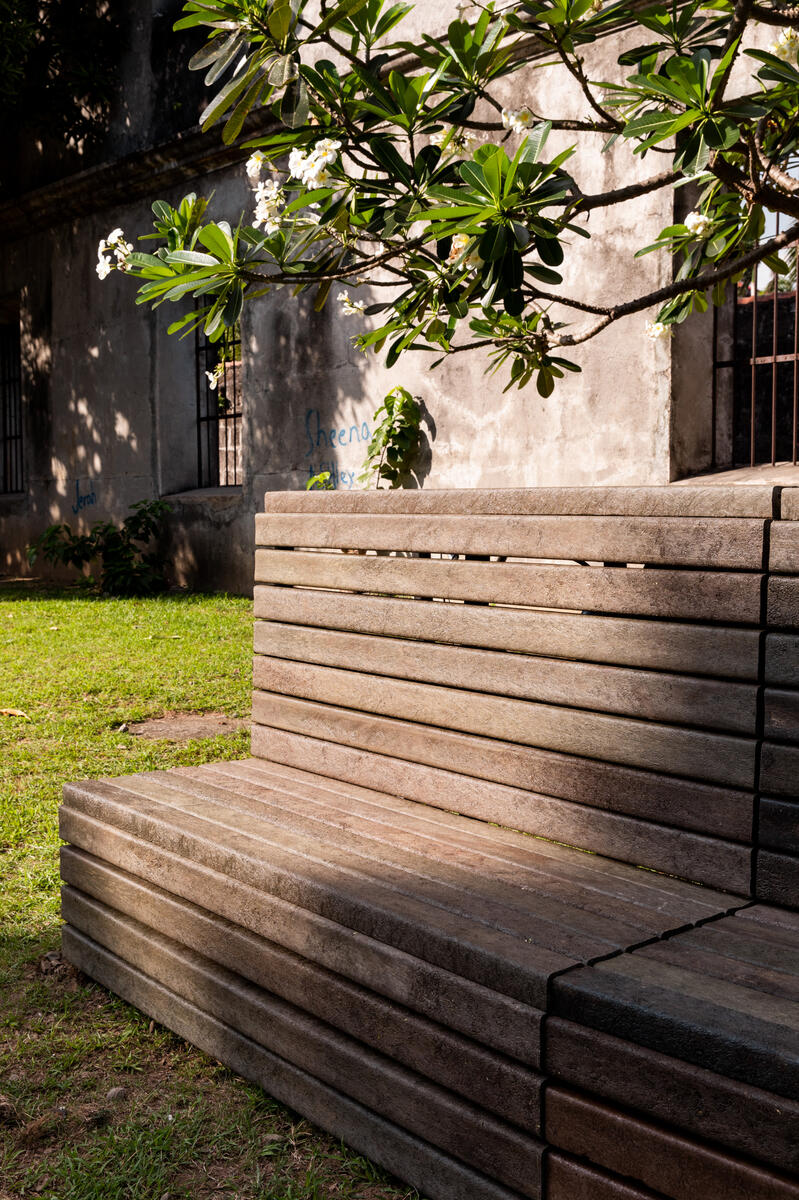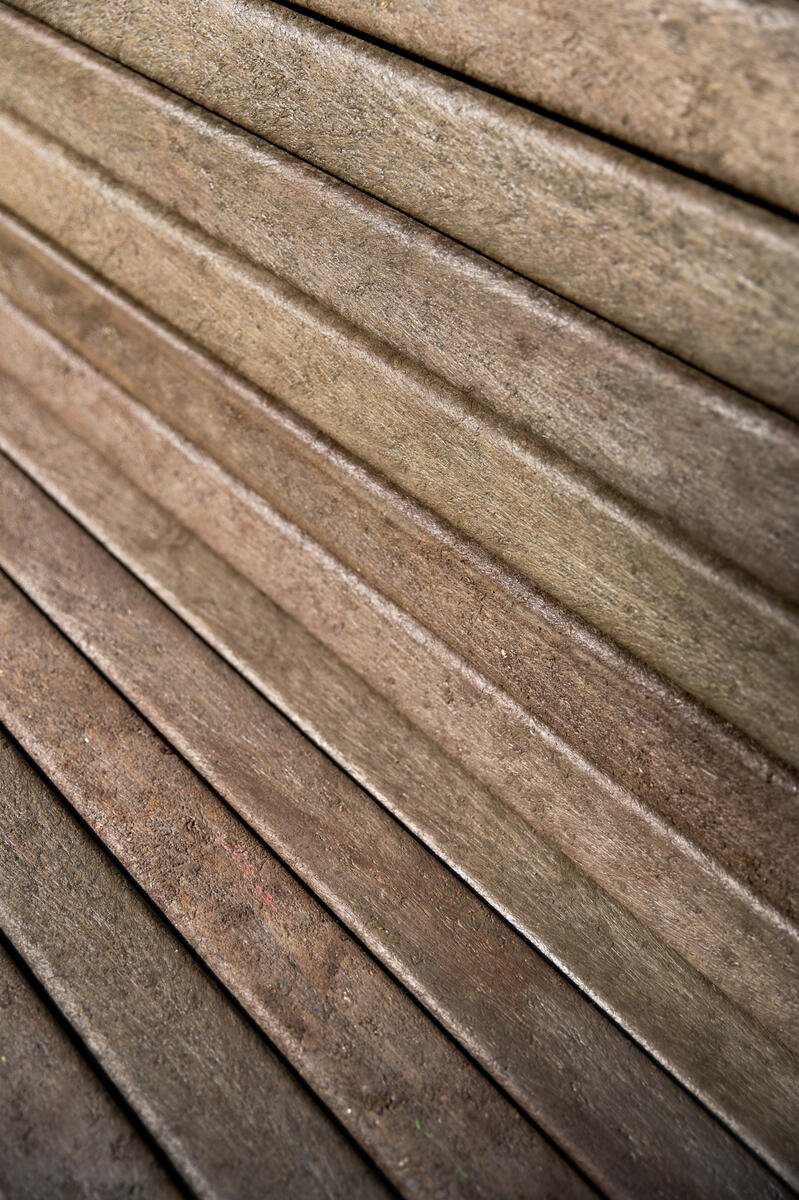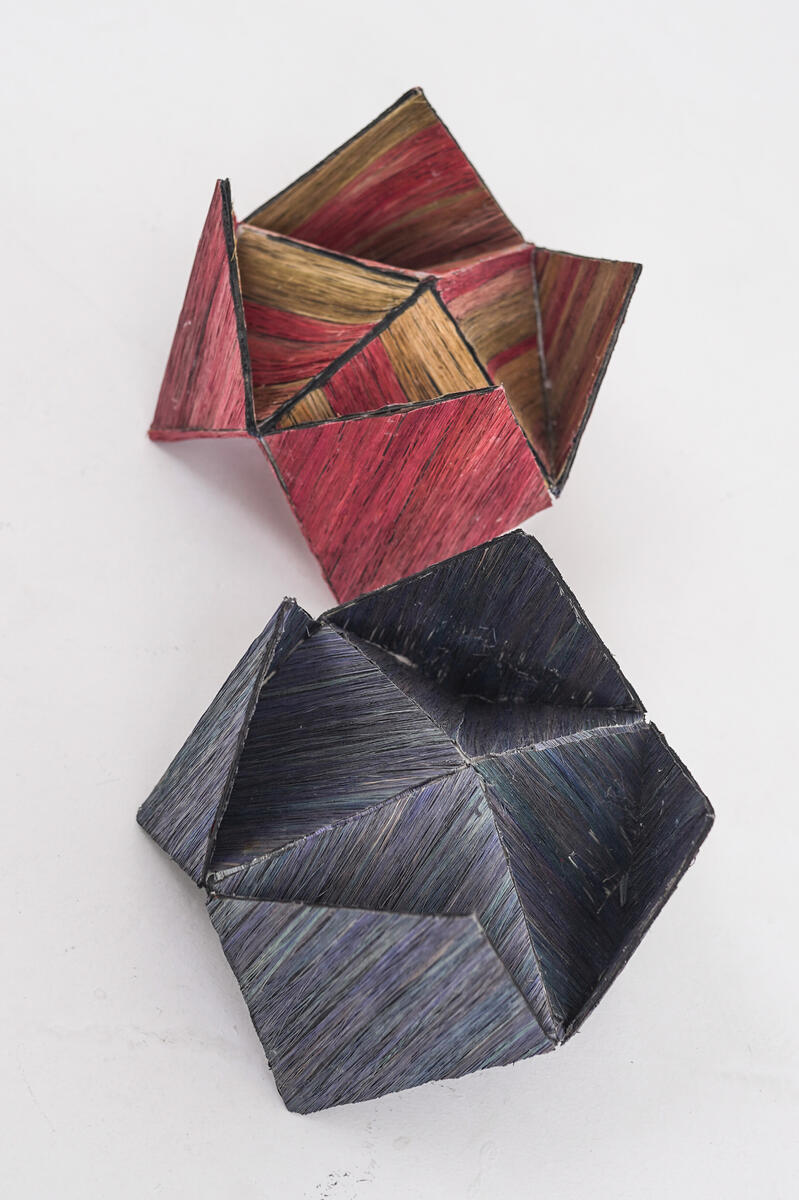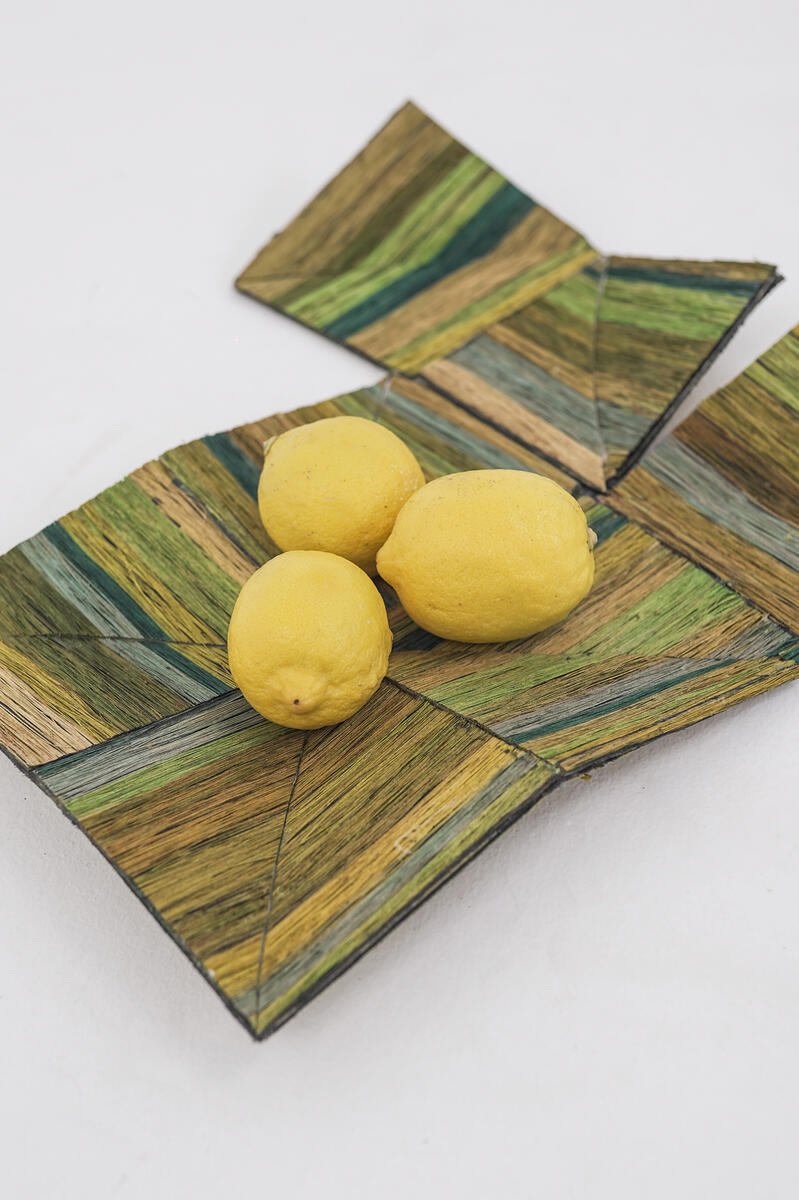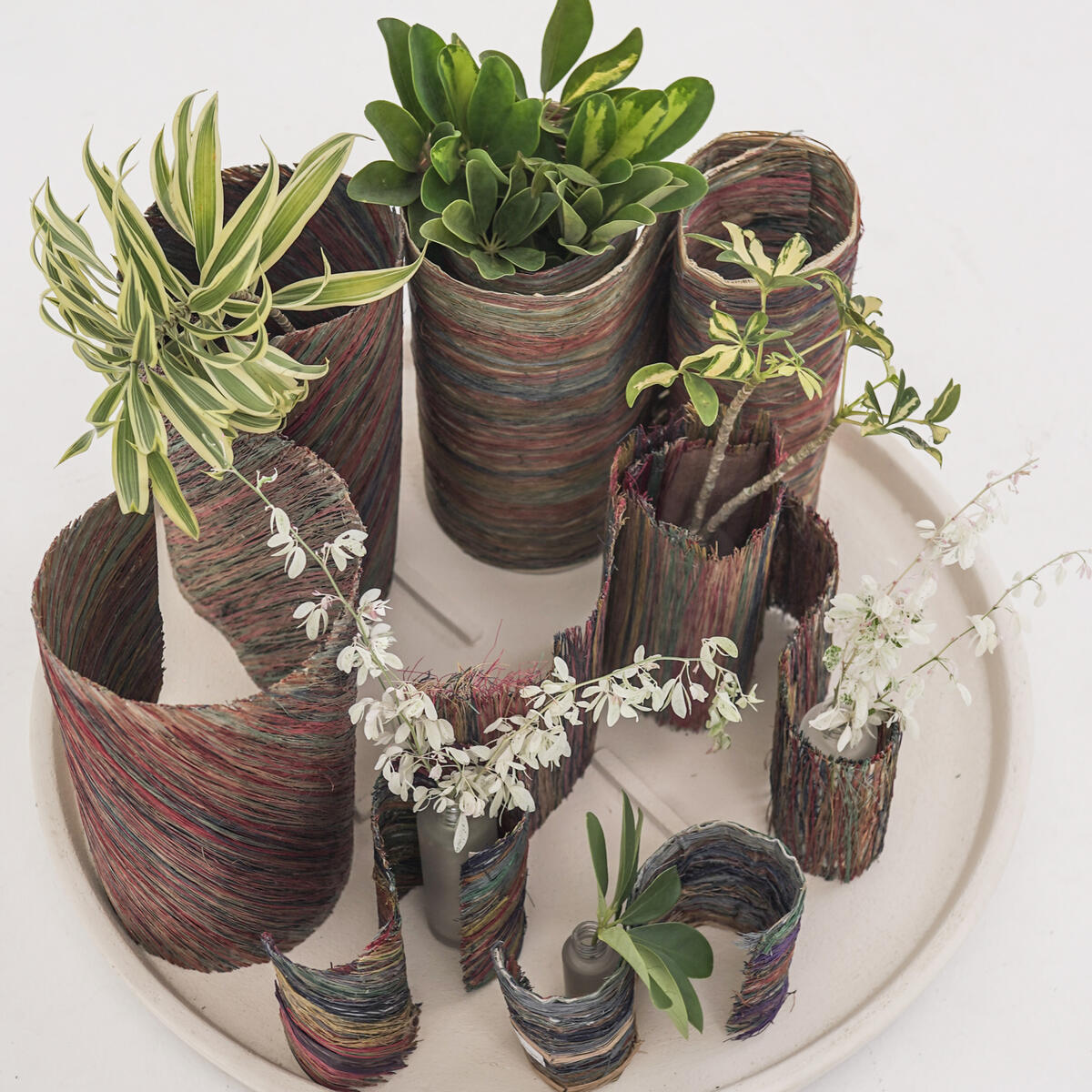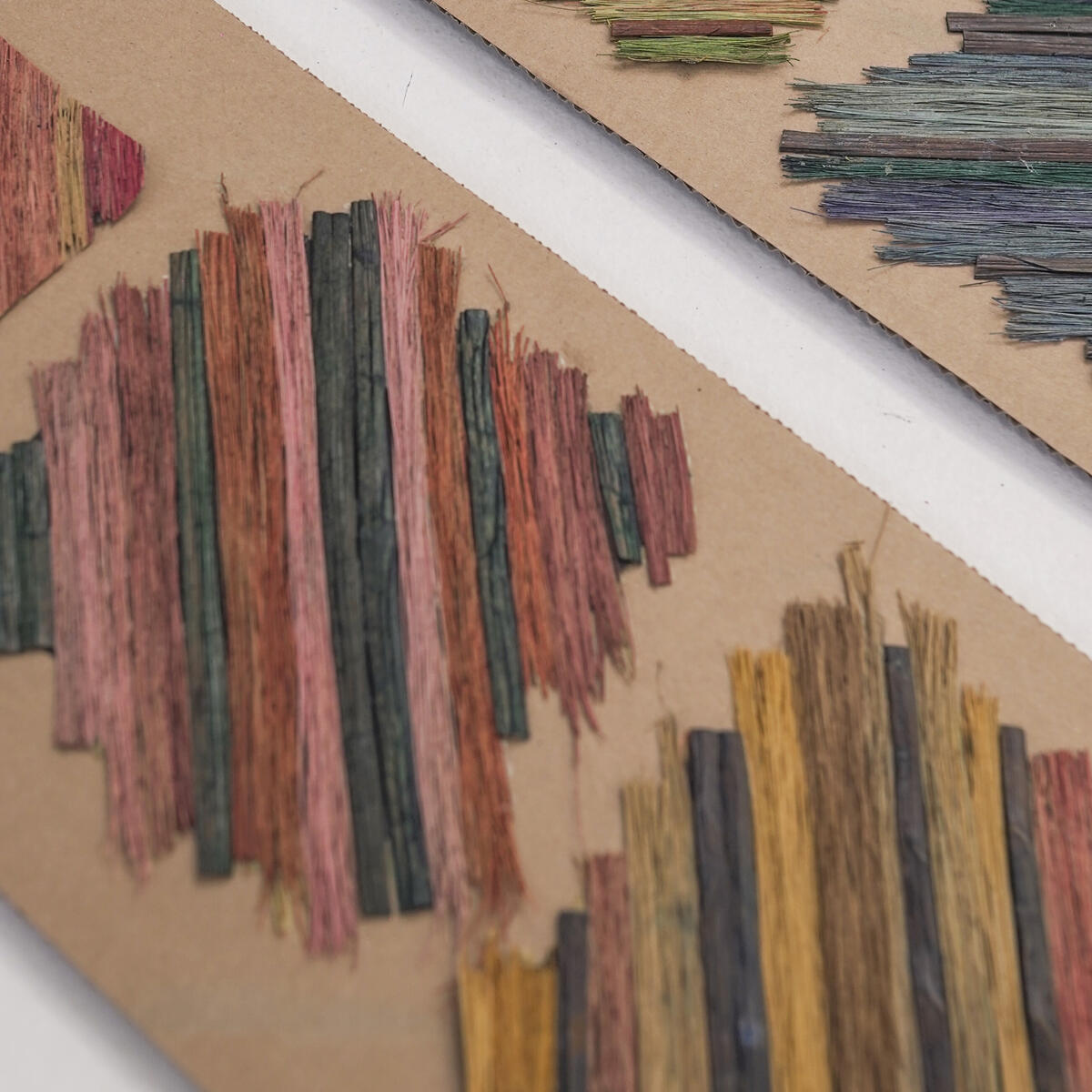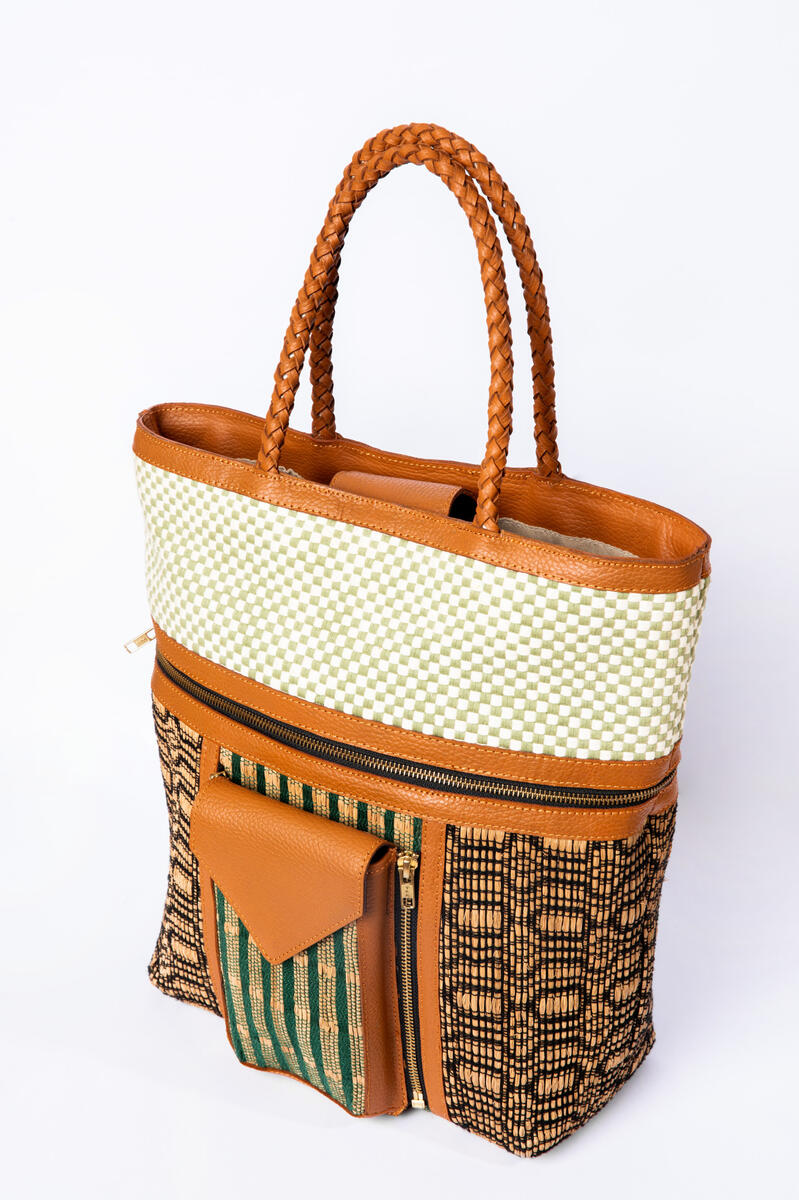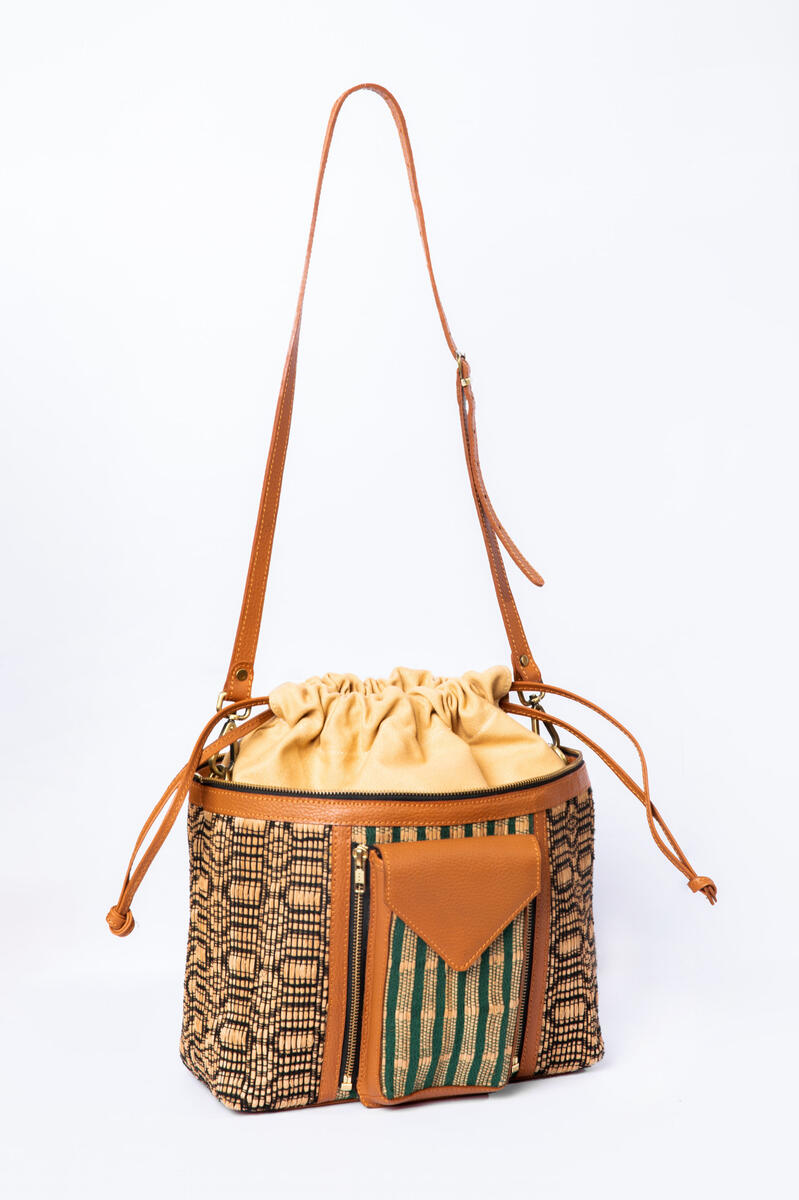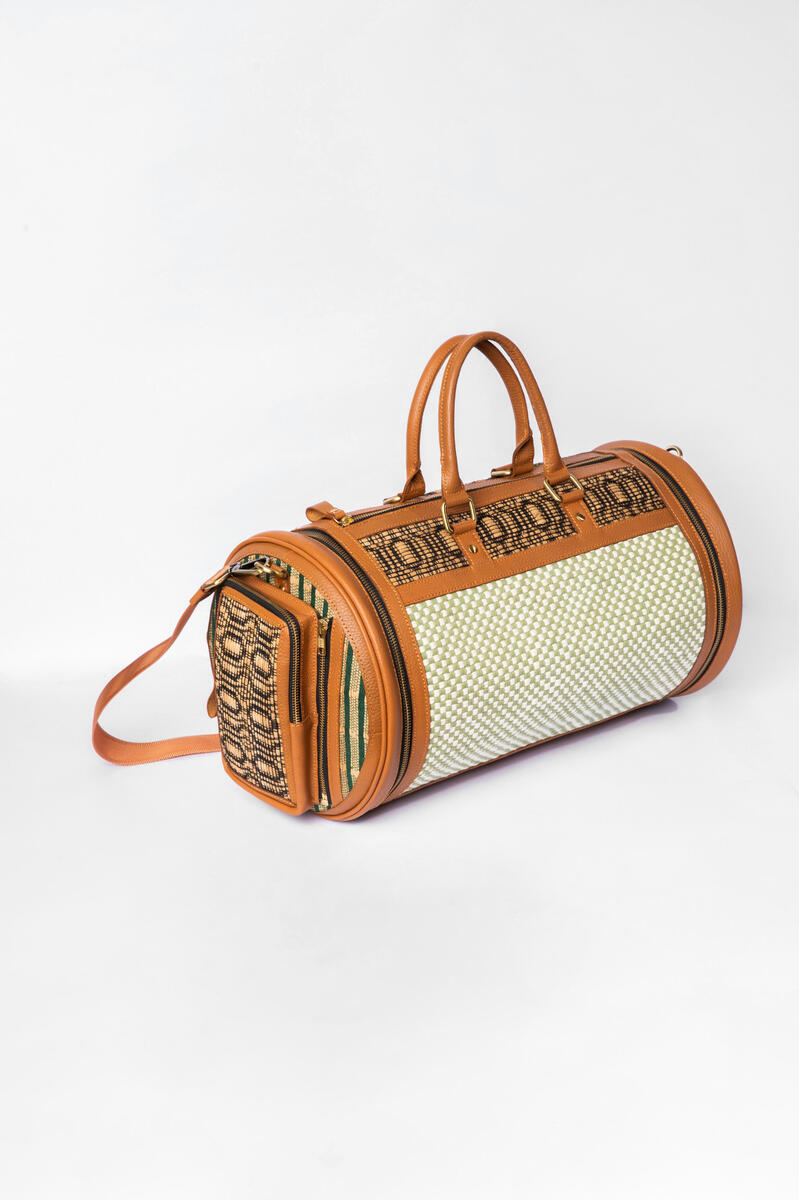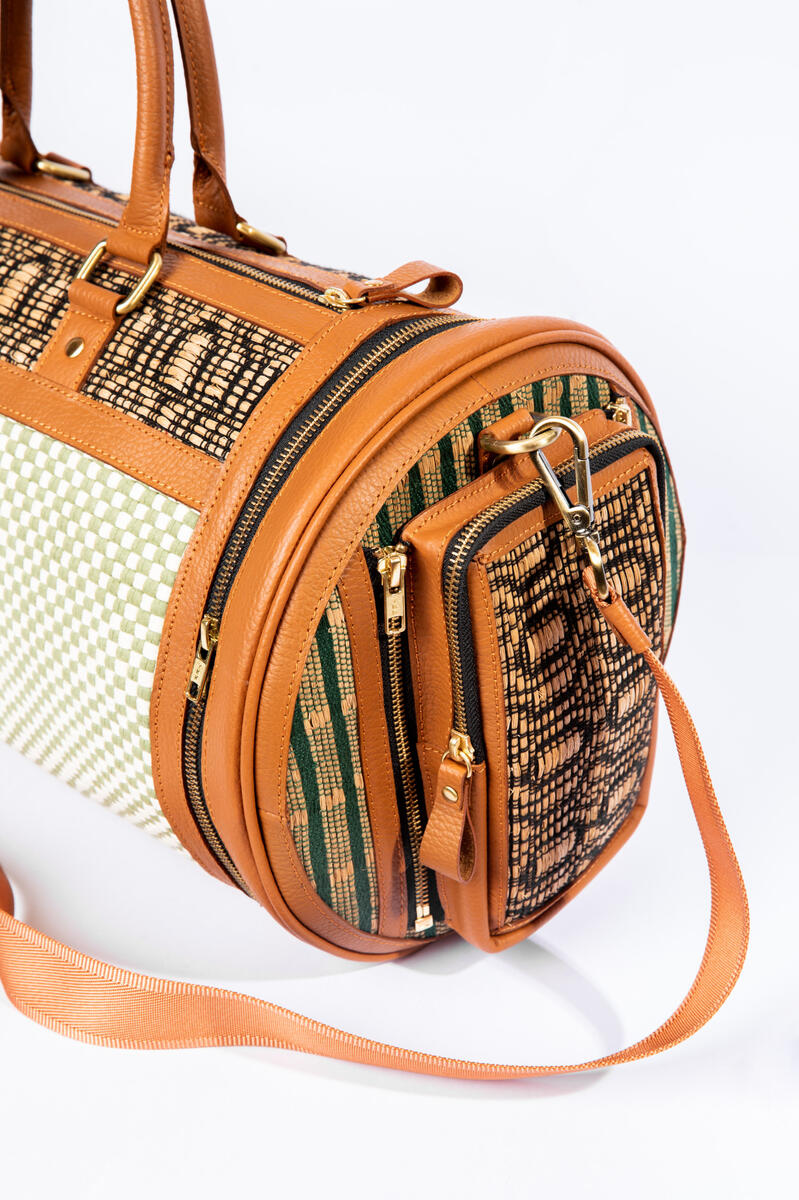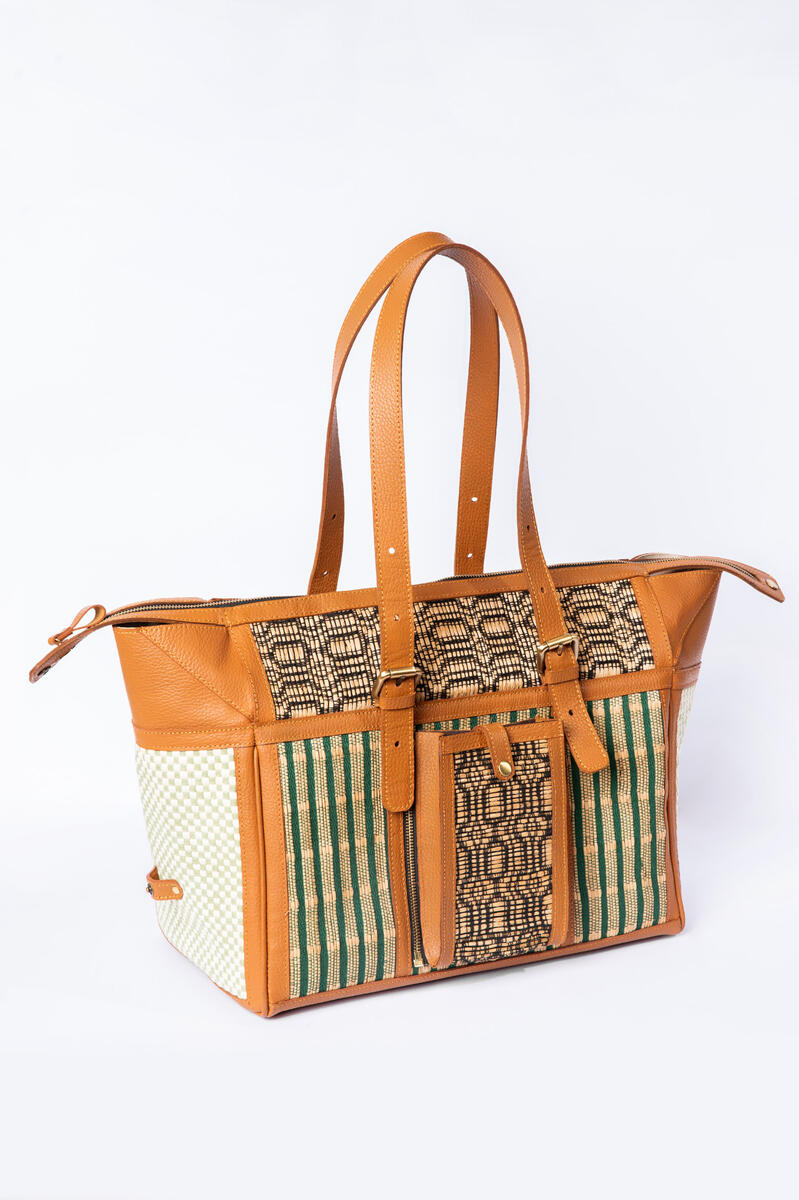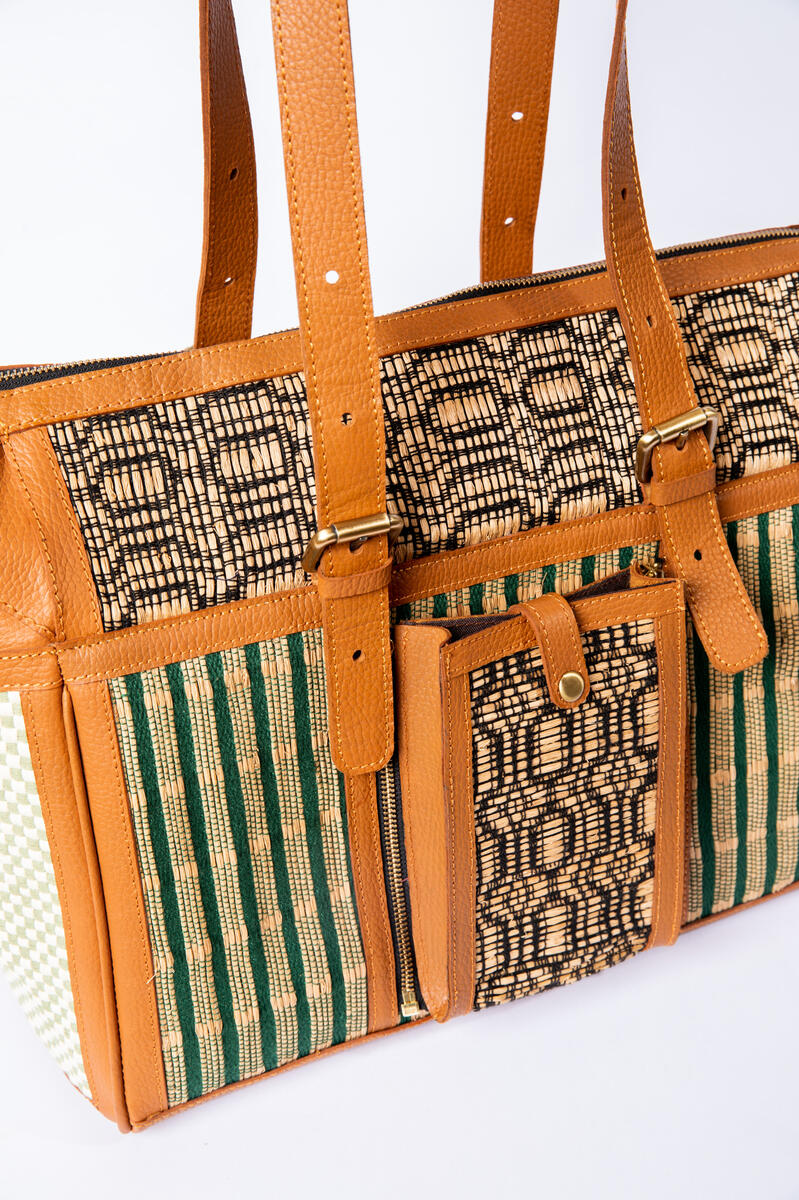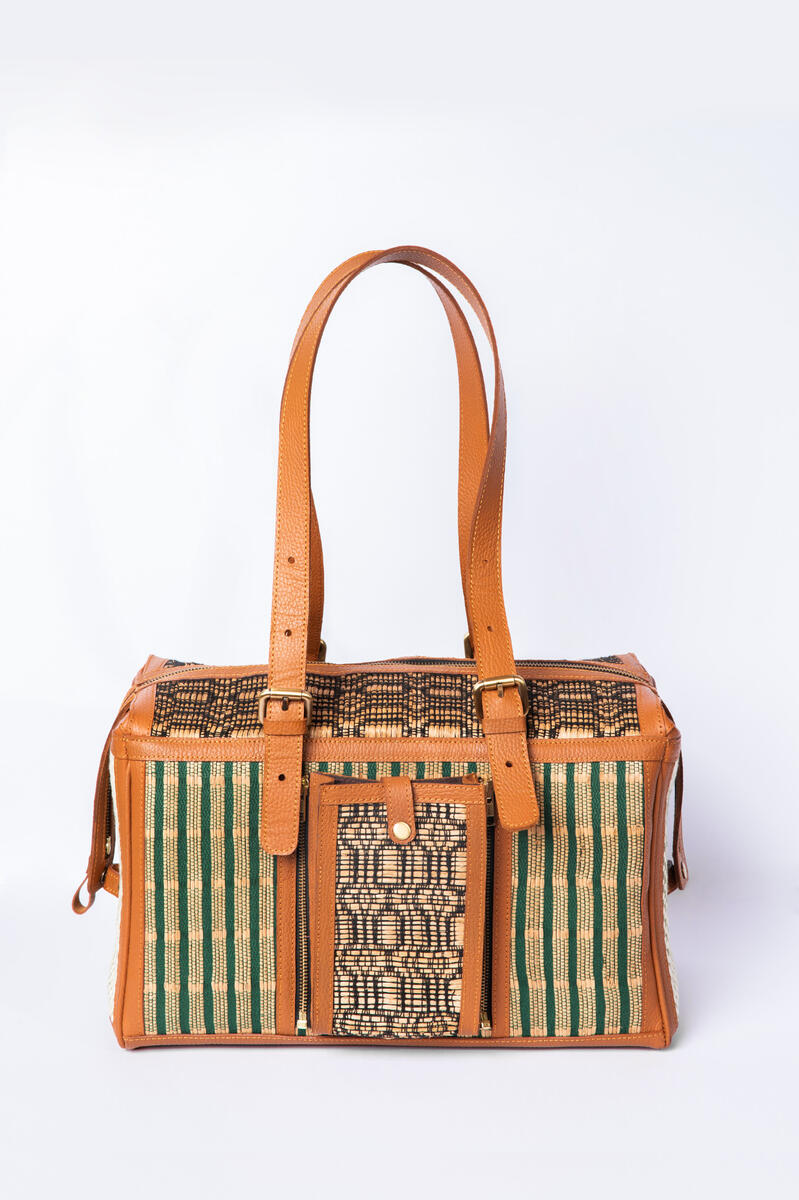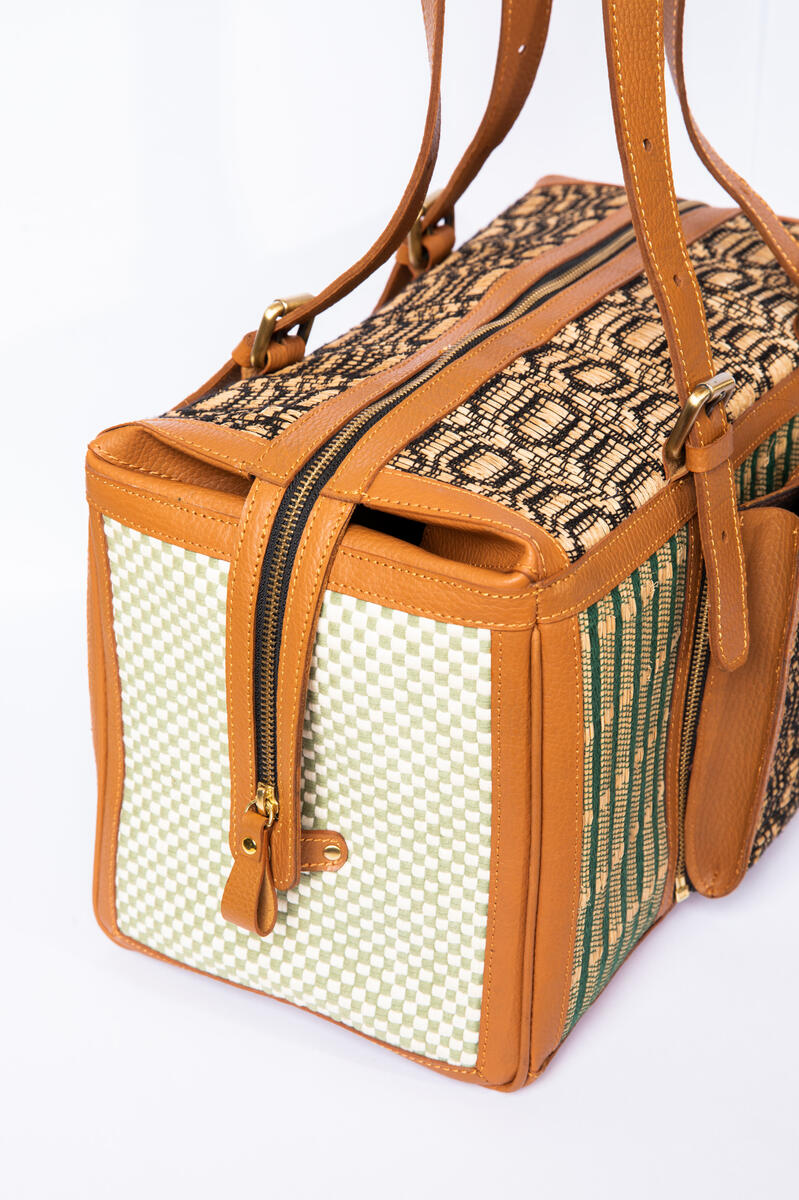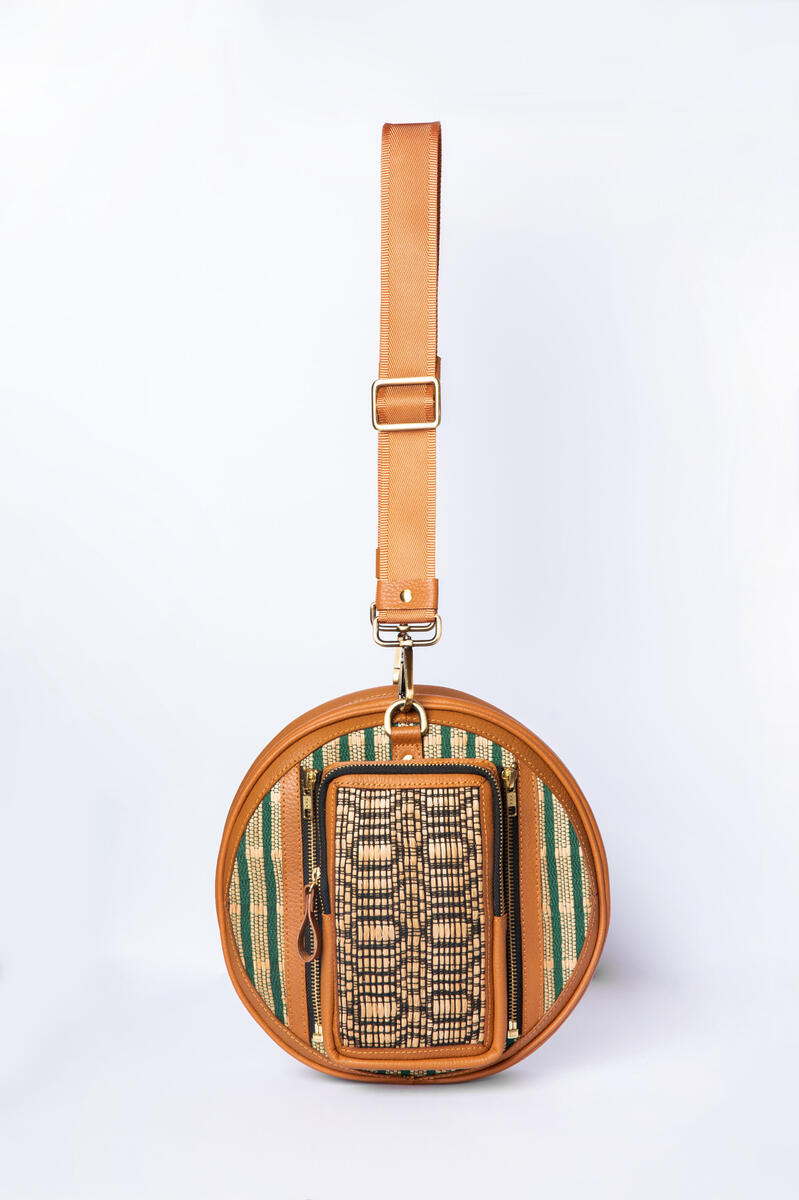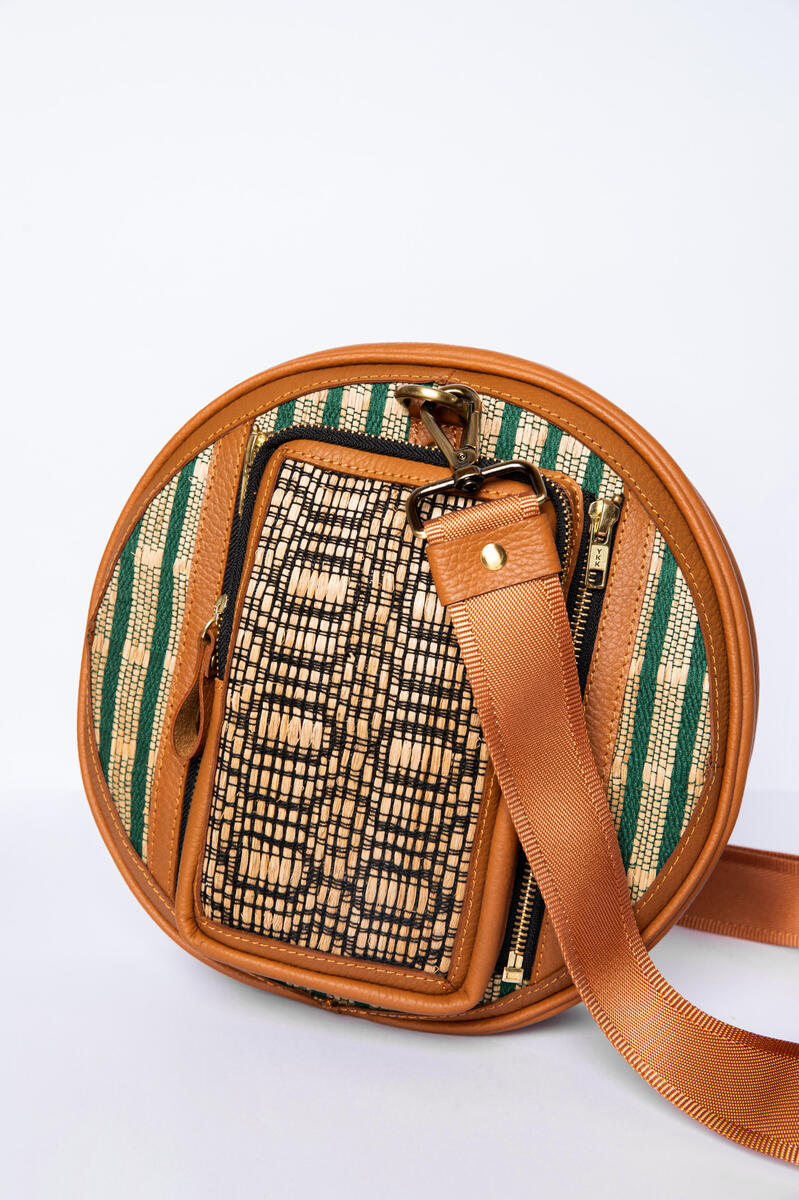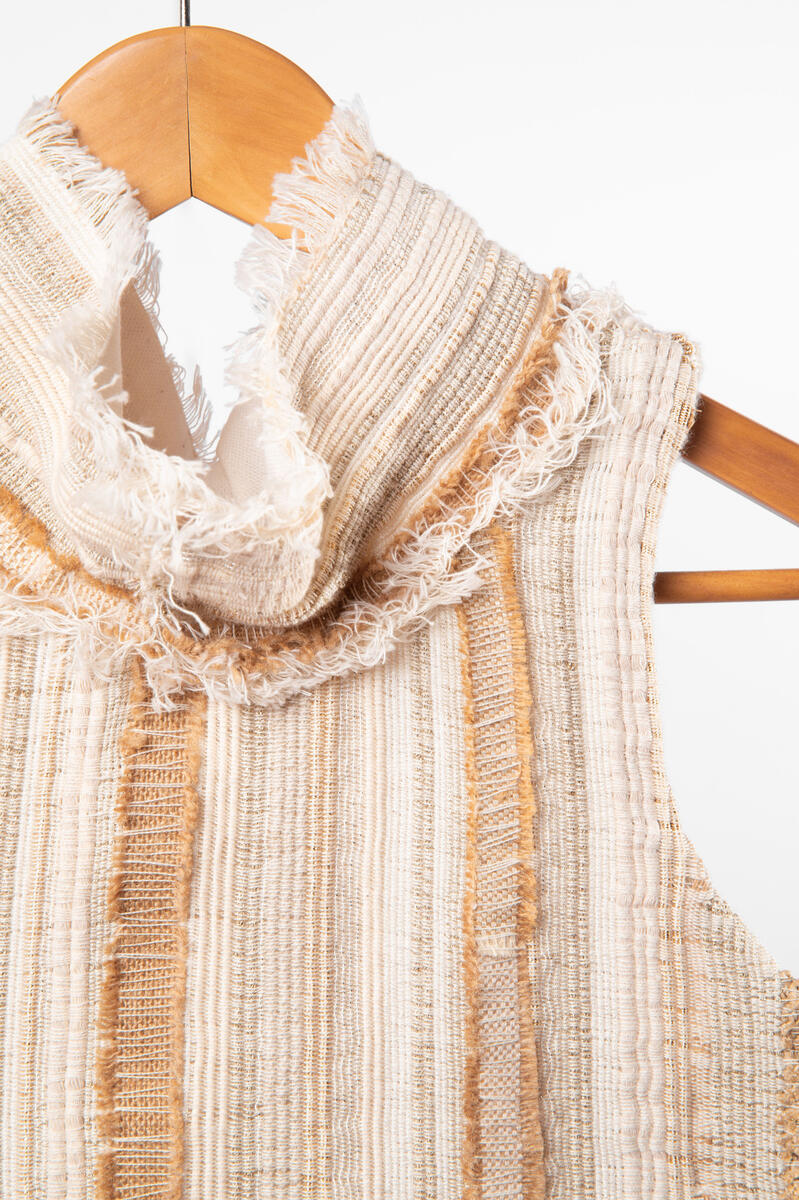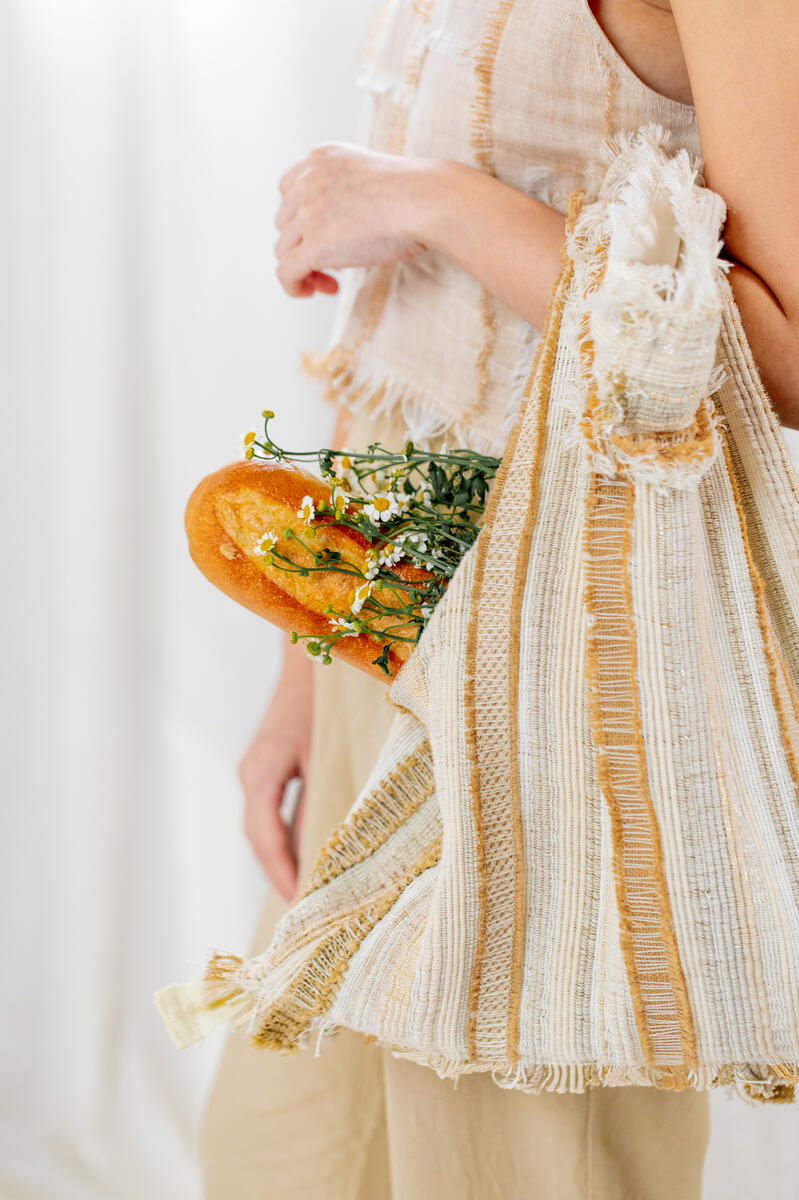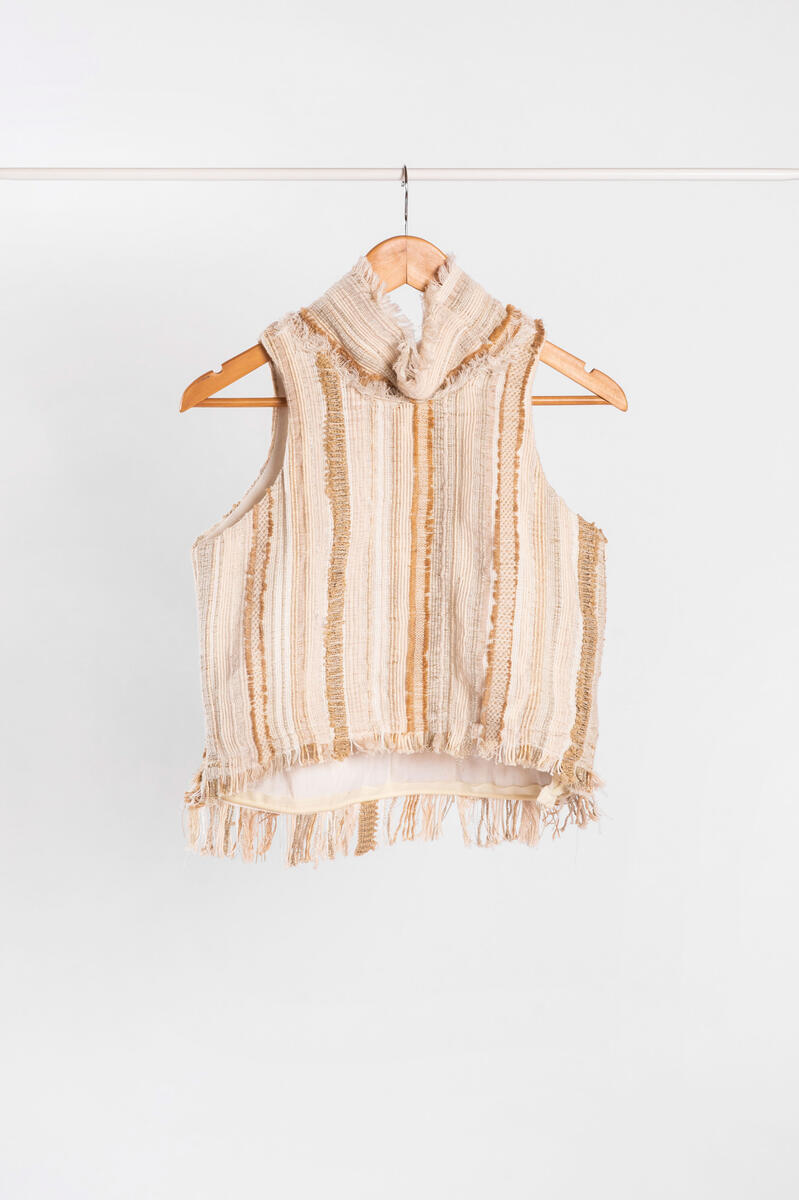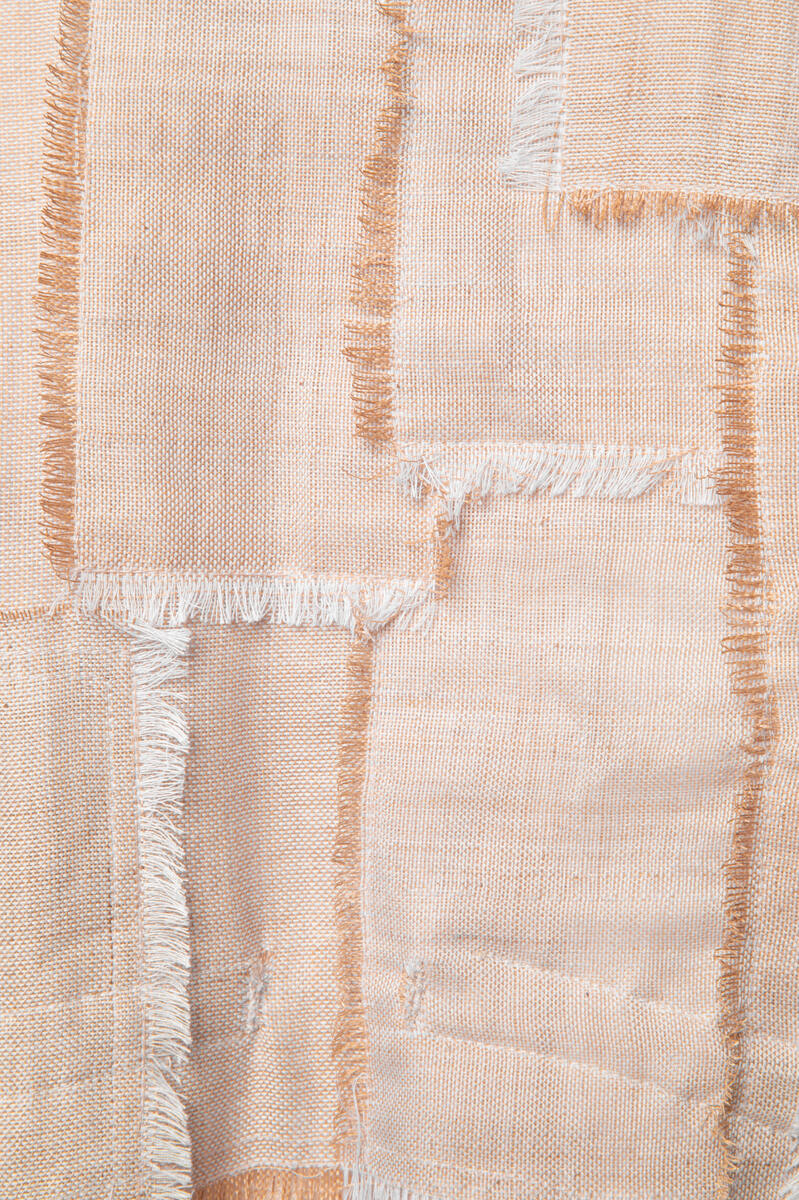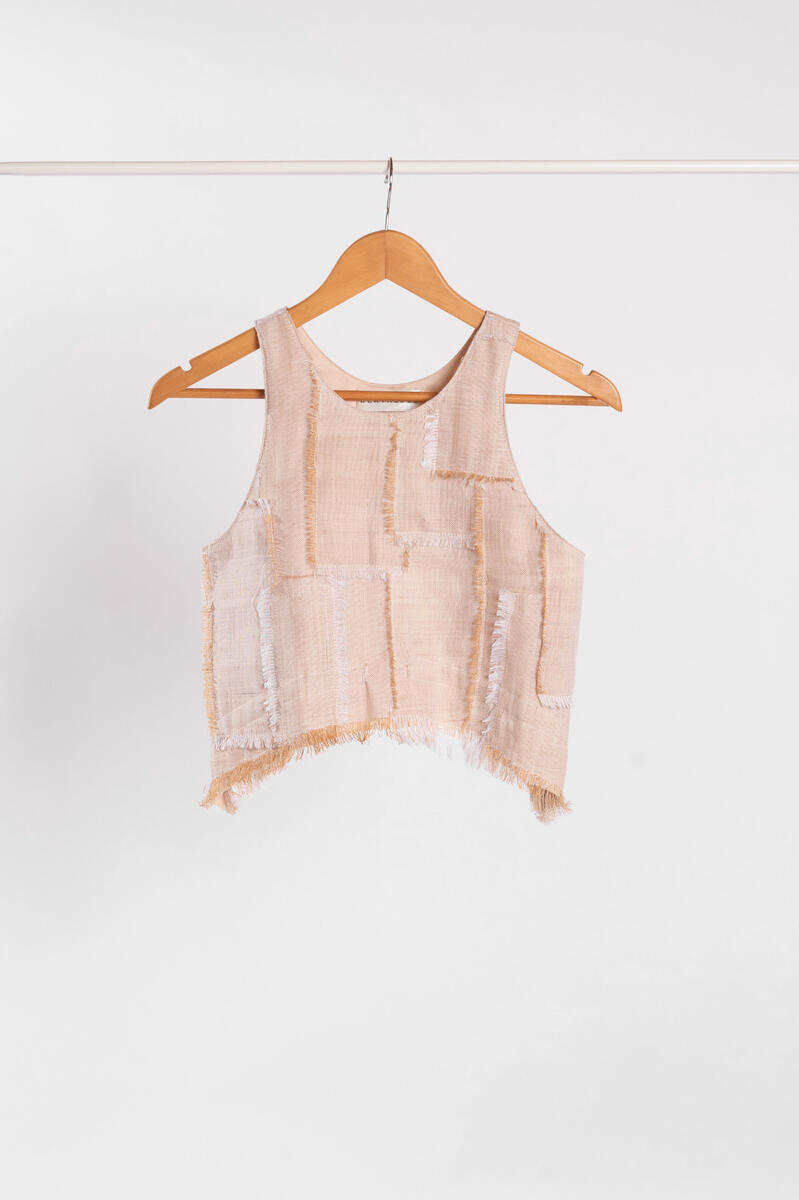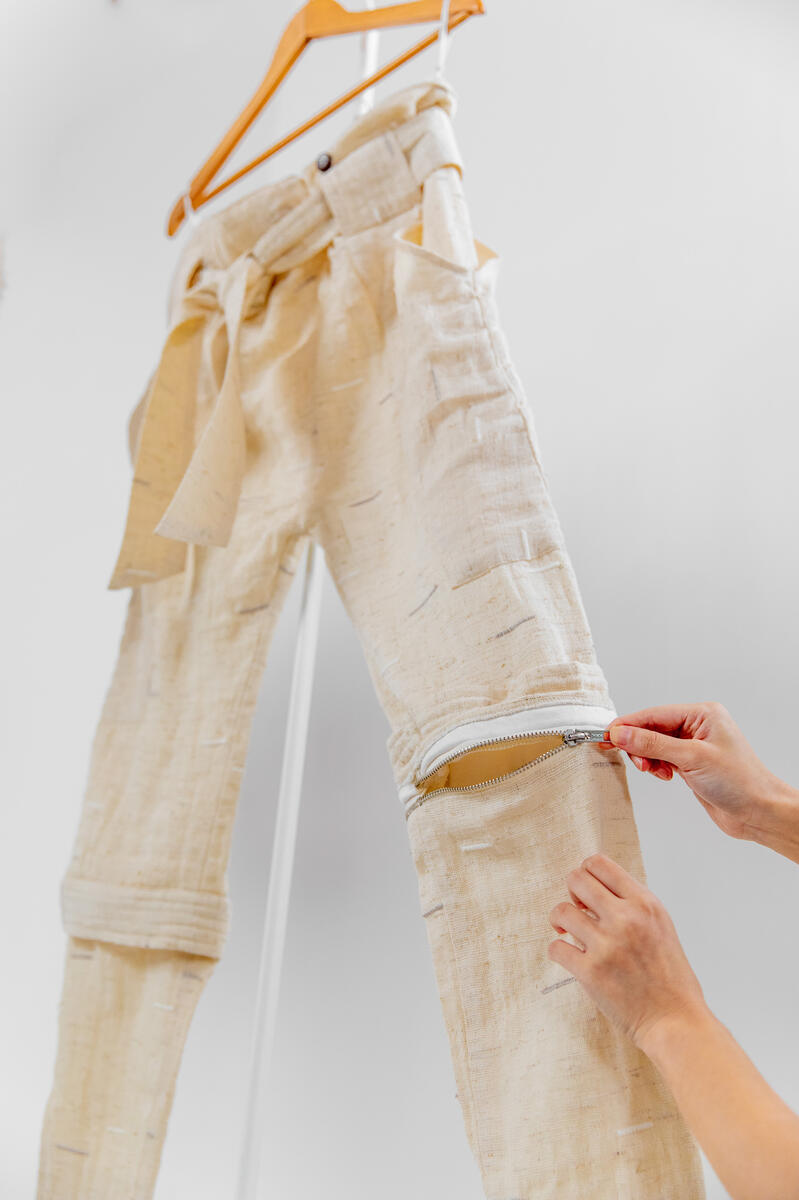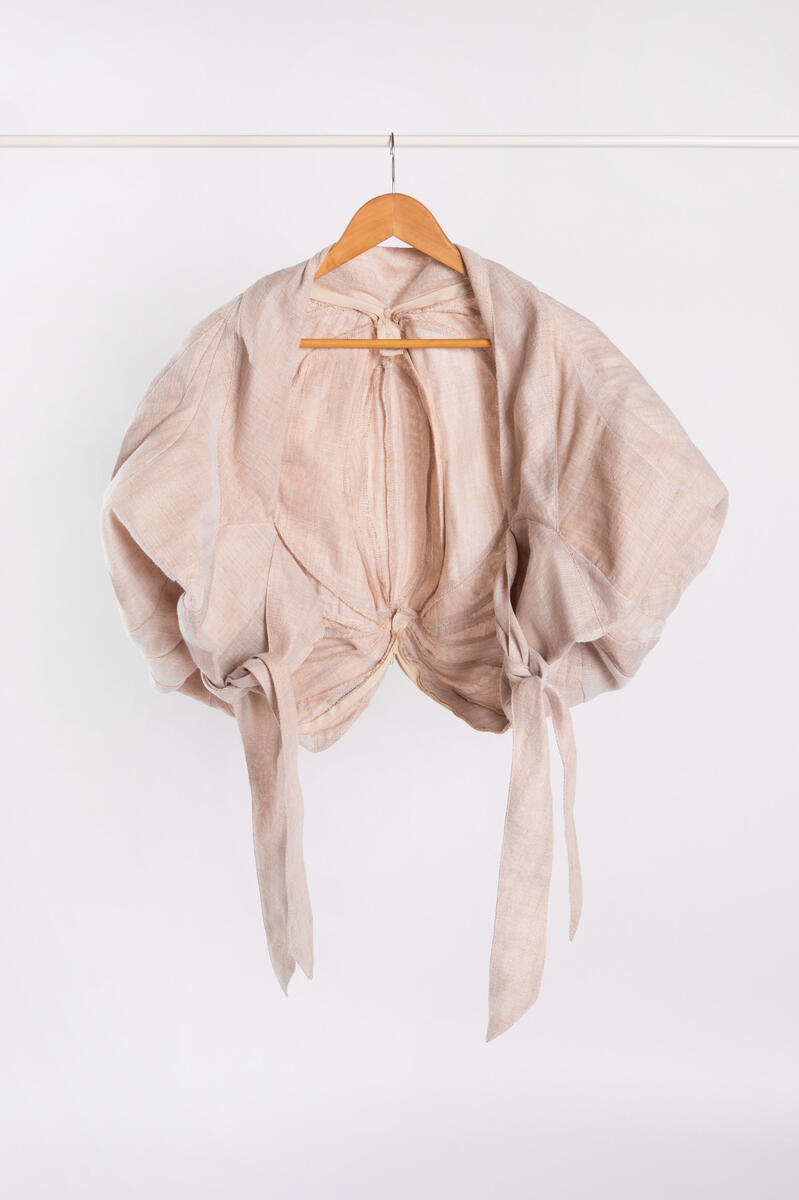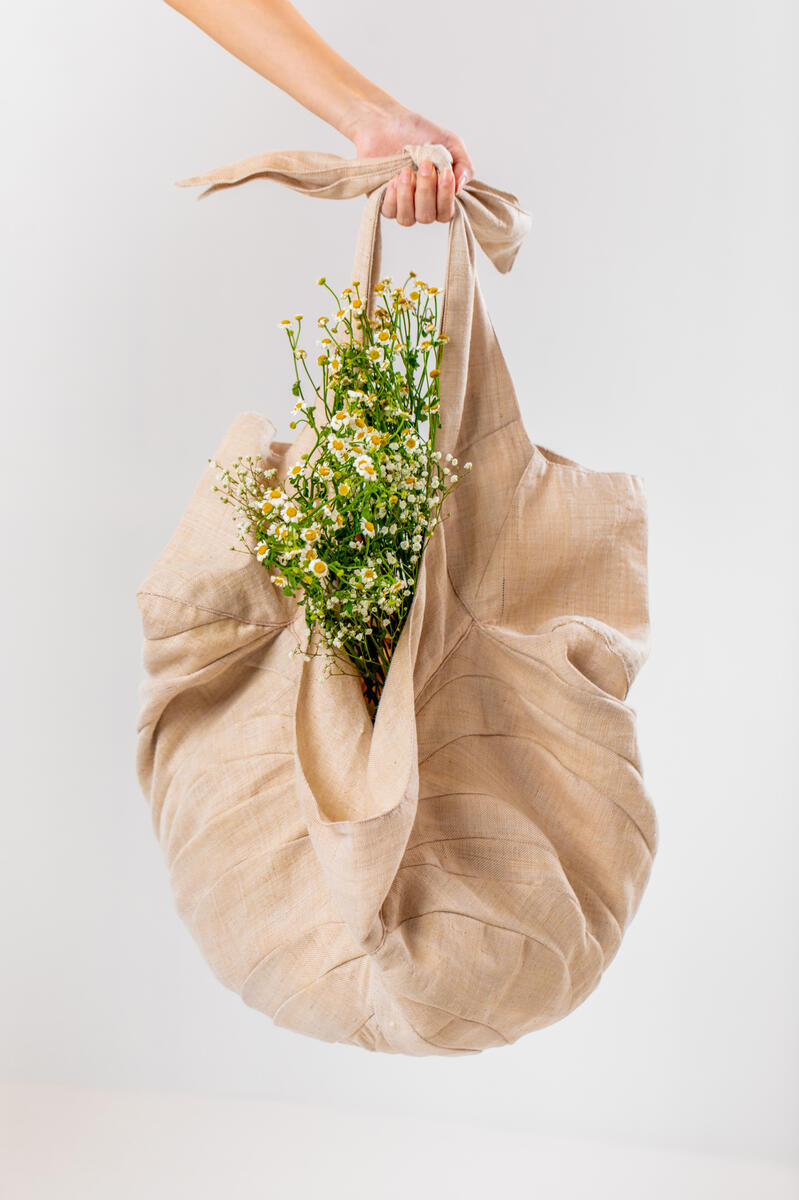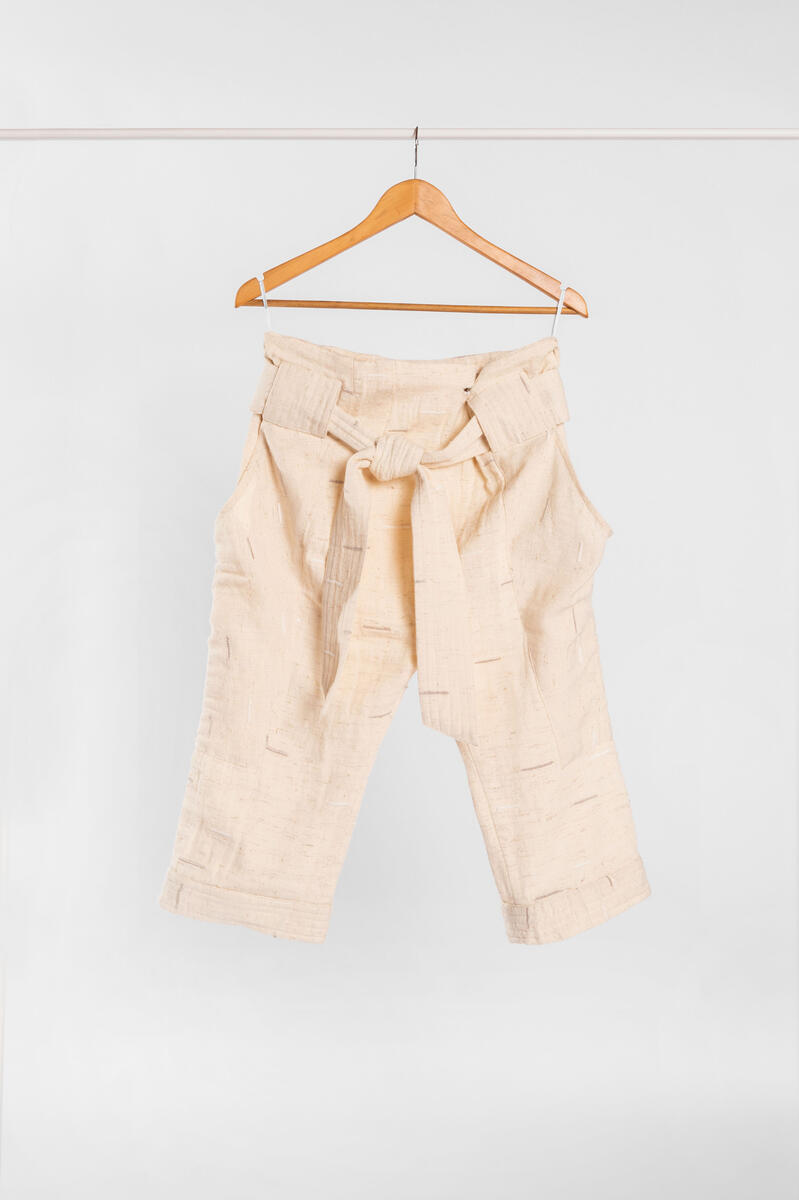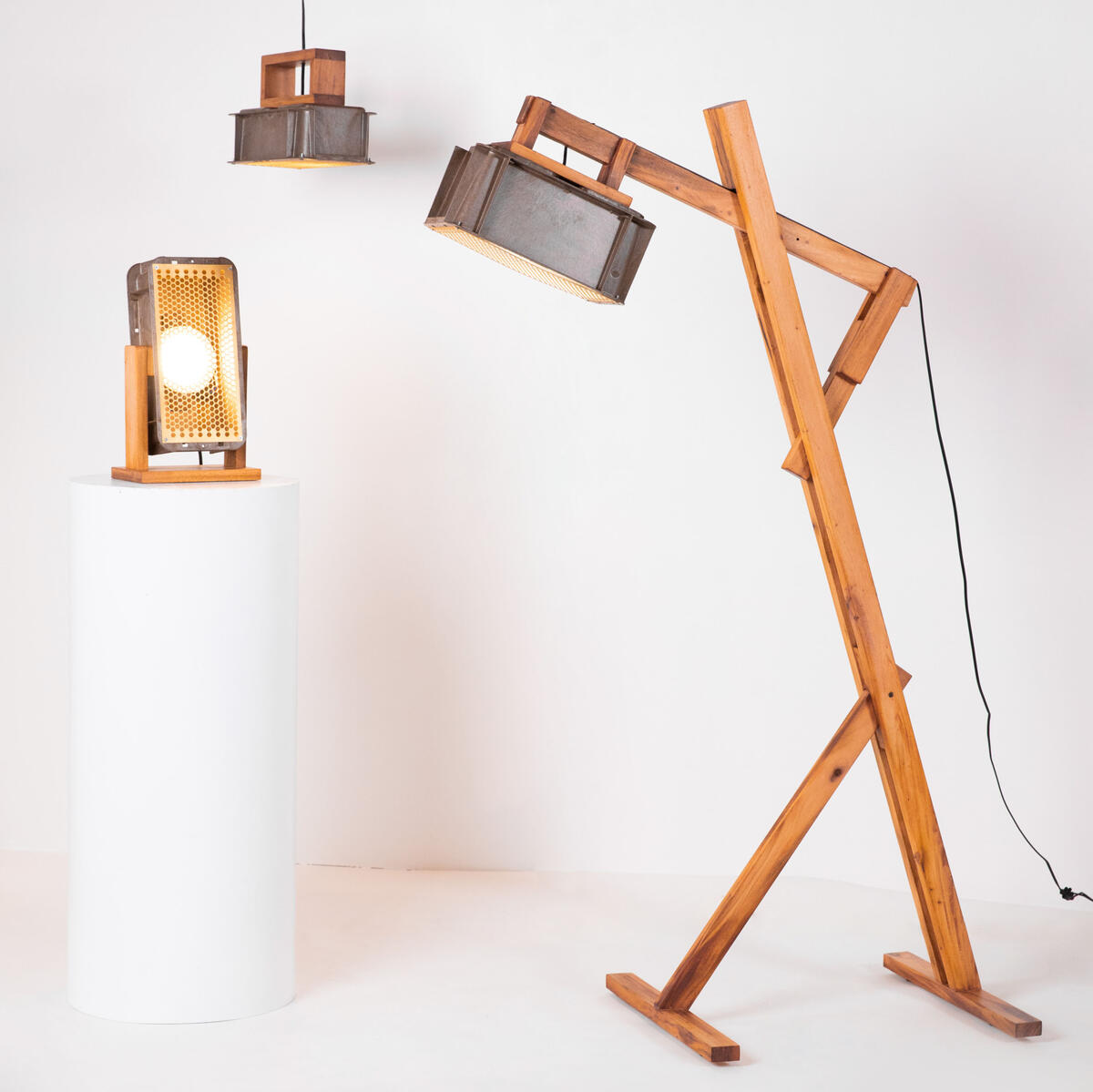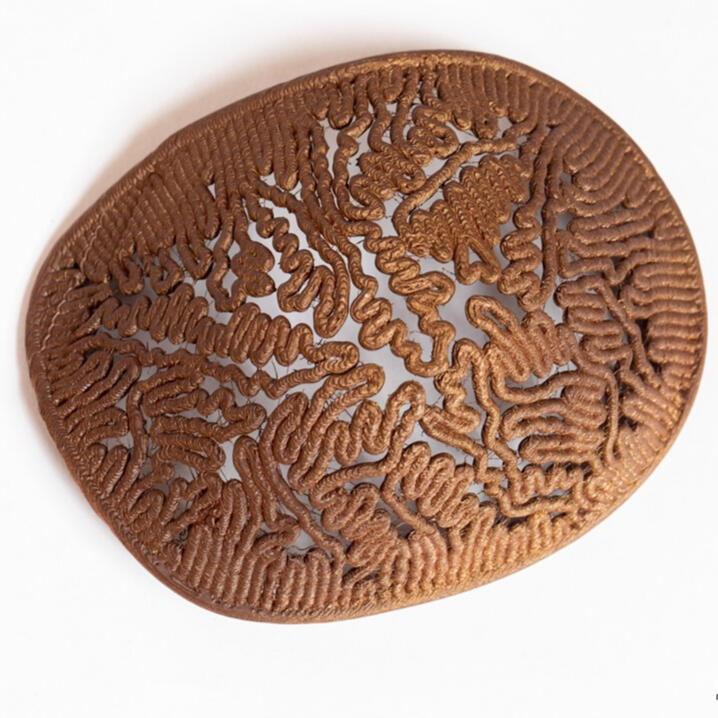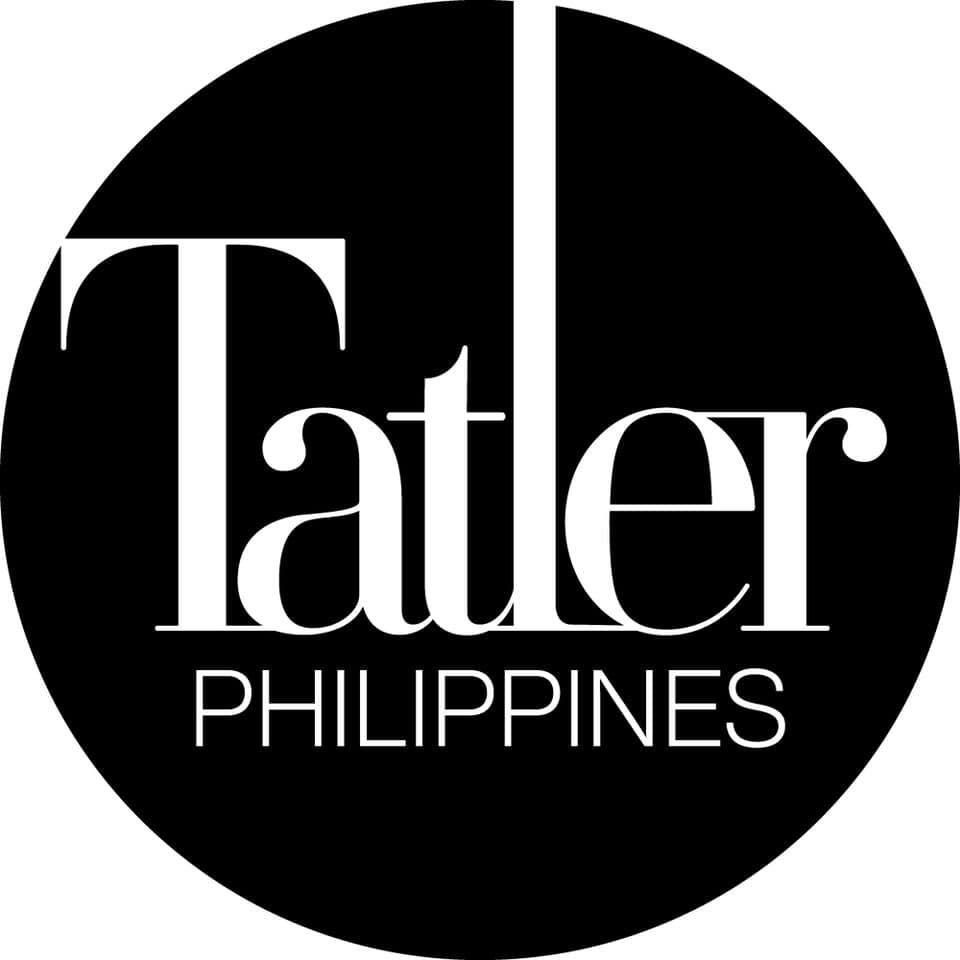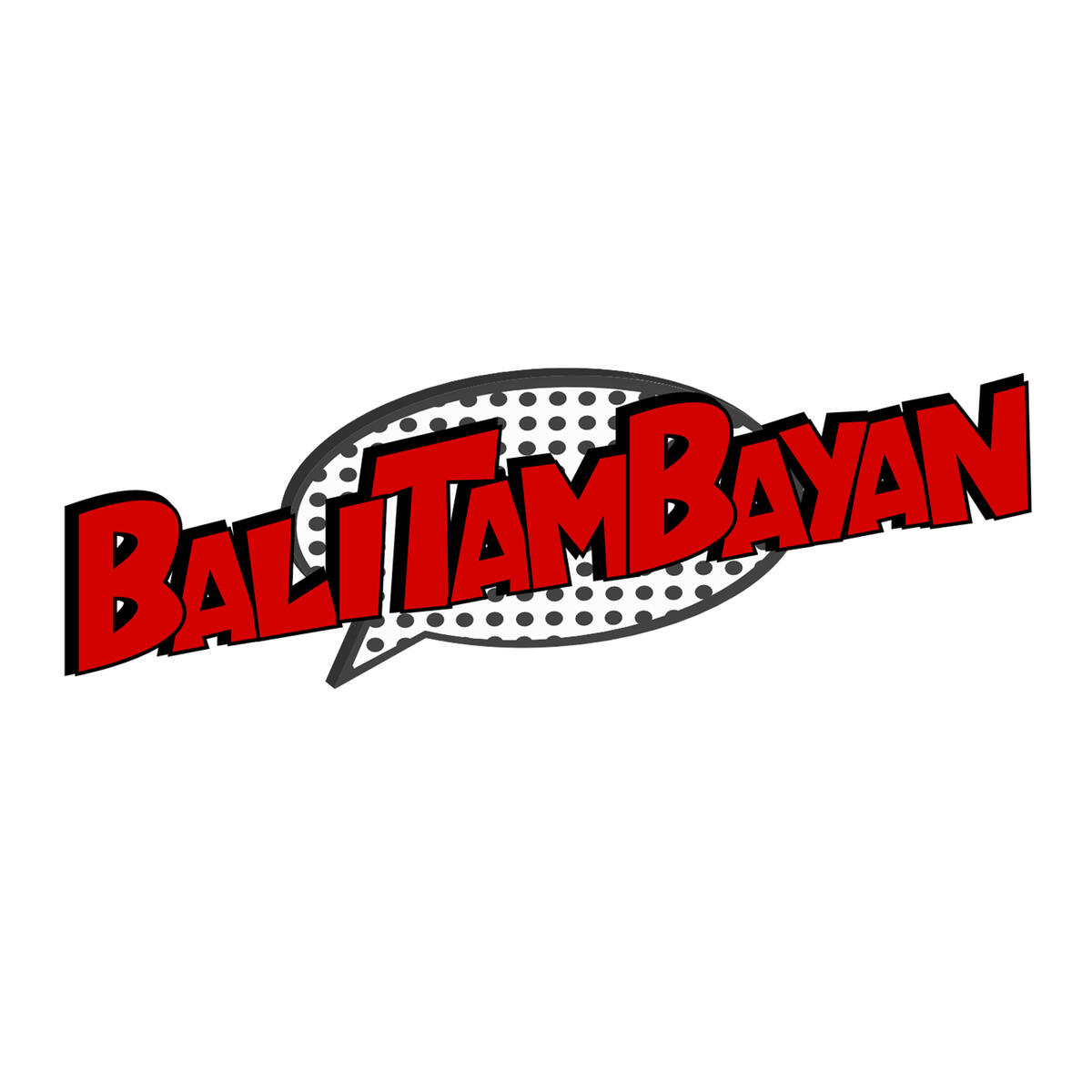
MAKING CONNECTIONS, CLOSING THE LOOP.
A SMART Materials Project by the Design Center of the Philippines
Bakong, a perennial aquatic plant considered an obstruction in Laguna de Cagayan, has started a conversation
about our shared responsibility towards society and the environment. Read more about our inaugural collaborations,
with circular design at the forefront.
A New Natural Material
Designed for a Circular Economy
The Laguna de Cagayan teems with flora and fauna. Yet it is the perennial, aquatic plant locally known as Bakong that dominates the area by its sheer number and density. Fiber from bakong has built a local handicrafts industry around it, but not enough to sustain the community’s livelihood. Located in this small, northern town of Sta. Teresita, Cagayan, a bigger idea will emerge and expand our understanding of what it means to connect with one another.Bakong becomes our starting point of a conversation about our shared responsibility towards society and the environment through the lens of circular design. With the designer at the forefront of developing products, this inaugural bakong collaboration seeks to capture the journey of this versatile raw material from concept to final product. We pull from the plant its innate intelligence to guide us in shaping our ideas. From there, we continue to build upon it with technology and innovation to create a bigger impact.With the bakong project’s own ecosystem of partners located across the archipelago, we are made stronger by our sheer number, and diverse ideas and experiences. We hope to enliven the community in Sta. Teresita once more as their story has inspired us. The future of the world is circular and we all have something to contribute.
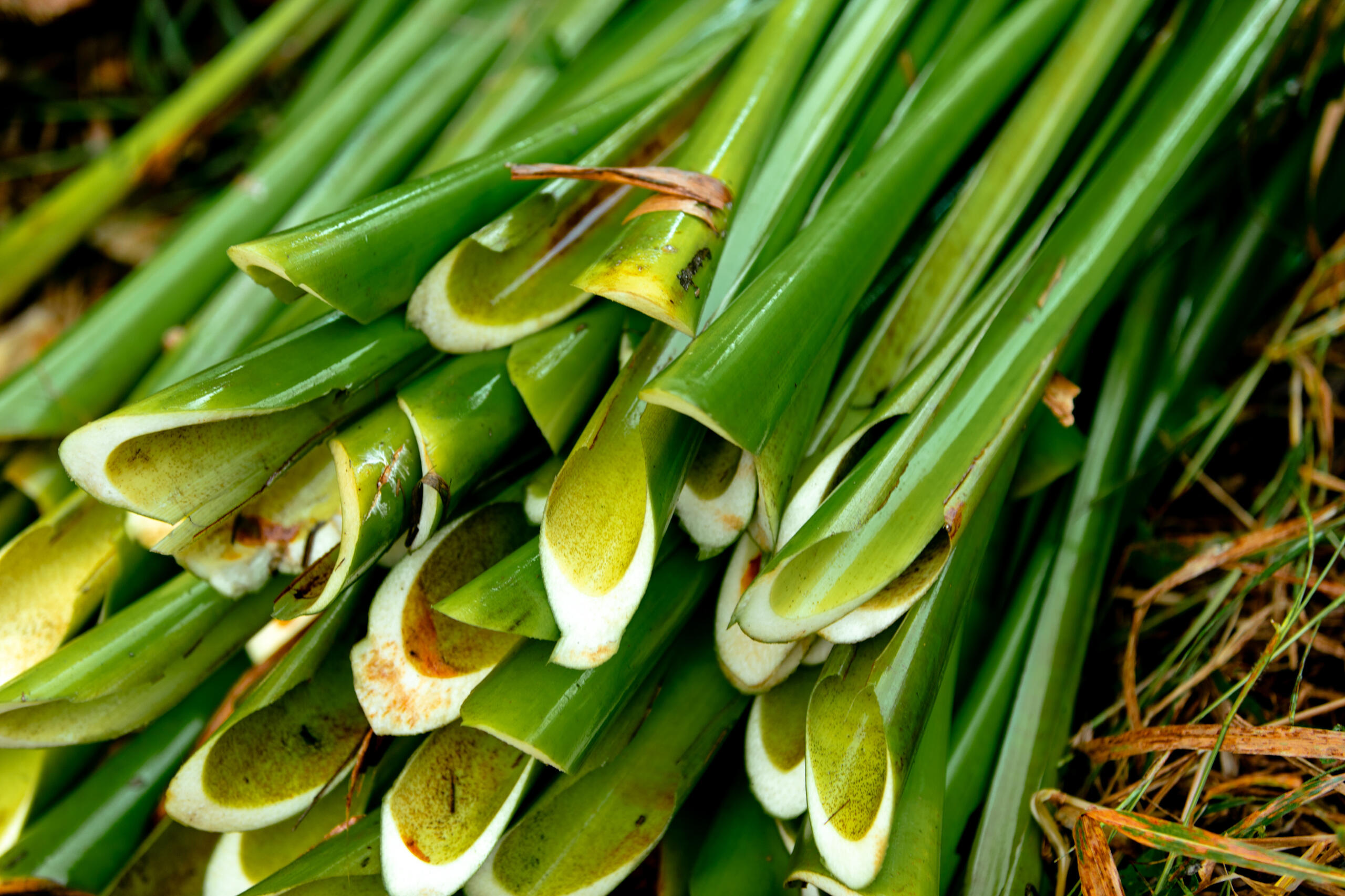
Circular Design Challenge
Design Center of the Philippines collaborated with Circulo and Work in Progress for a two-day Circular Design Challenge that explored the potential of bakong as a sustainable material solution. Part of the hackathon are key sessions on design thinking, circular strategies, and effective business pitching geared towards enriching the design solutions developed.A total of ten groups, with 22 participants in all, pitched concepts that covered textile research and development, healthcare, and acoustics, among others. From the ten pitches, the top three were selected based on the innovative utilization and positive economic and ecological impact their proposed solutions can deliver.The winning groups, Malayana, Modubako, and Brakong, worked closely with experts from Design Center, Bakong Creative Director and Circularity expert Carlo Delantar, and experts from Circulo.Their concepts and prototypes were launched at the Sustainability Solutions Expo 2022.
Brakong
Aiming to empower the breast cancer survivors and help them regain their self-esteem, Brakong is a 3D-printed breast prosthesis for breast cancer survivors who have undergone mastectomy.Brakong is made from the formulated PLAkong, a biocomposite filament composed of PLA and Bakong pellets. Brakong has a lightweight, comfortable, and nature-inspired design that can be remelted and reprinted to create another breast form. It uses a 3D Scanning technology to perfectly match the chest curves and features of its wearer.
Designers:
Emmanuelle A. Pangilinan
Jason N. PechardoMentor:
ICanServe Foundation
Malayana
Borrowing from bakong’s scientific name (Hanguana malayana), the second word is transformed into "malaya na," loosely translated in Filipino as “now free.” The design duo interpreted this to mean “freedom of expression, transformation, exploration, artistry and empowerment. Inspired by women as “Ilaw ng tahanan” (light of the home), they envision their enterprise to support women and their communities.Their lighting collection connects materials from artisans in Laguna de Cagayan to other community-based enterprises along the Sierra Madre Mountain range. They considered modular design for replacement and adjustment of pieces for flat packaging.
Designers:
Alyanna Carrion
Jam CubeloMentor:
Stanley Ruiz
Modubako
The design duo conceptualized the school chair as a medium to introduce creativity and critical thinking, with the needs of the young Filipino student in mind. Believing that a good education is the cornerstone in which we engage with the world, they used this as an opportunity to present learning as multidimensional.Modubako is a dynamic and easy-to-assemble piece of furniture. It communicates that design exists everywhere and we can participate in that process. Its modular construction allows for versatility in its design, yet sturdy enough for its main purpose as a school chair. It can eventually be upcycled into a planter, or when put together, a garden bed.
Designers:
Angelo Raymund Uy
Leslie Angbue-TeMentor:
Fortunato Dela Peña Jr.
Materials & Products
Materials
Produced by Laguna de Cagayan Handicrafts Association
Produced by **Natural Craft Connection Enterprises **
Produced by **Natural Craft Connection Enterprises **
Produced by D&L Polymers and Colours
Produced by DOST - Philippine Textile Research Institute
Produced by Envirotech Waste Recycling Inc.
Products
BaCo
BaCo is a wordplay on “bakong composite plastic.” It showcases a 4-piece furniture collection composed of bakong biocomposite crates with upcycled and recyclable materials designed with minimal use of materials and allows functionality and adaptability for different lifestyles.Designer:
Fortunato de la Pena Jr.Manufacturer:
BalaiKamay
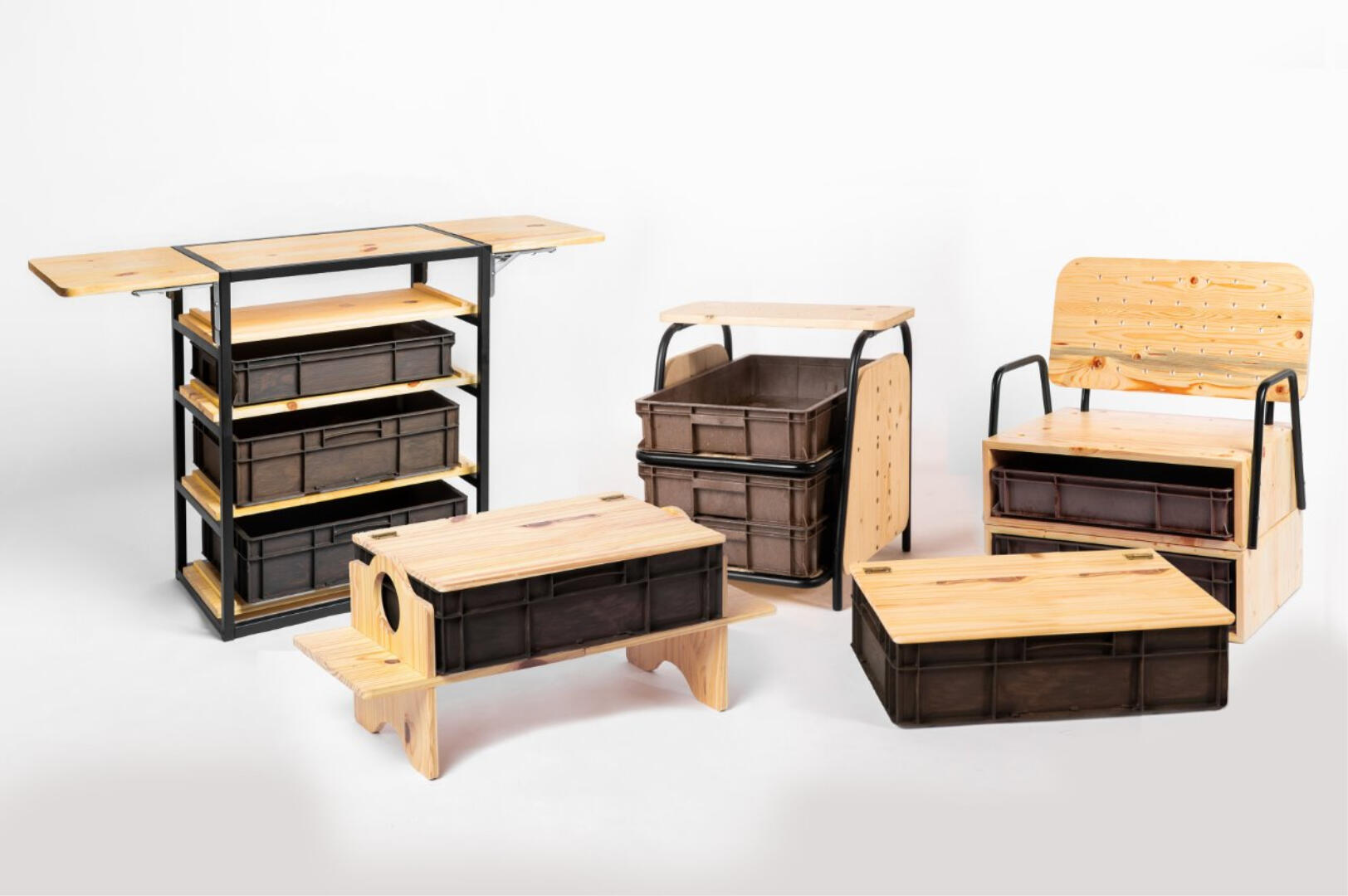
Bakong Chair & Mannequin
BAYO’s Co-CEO and Chief Creative Office Anna Lagon, in collaboration with mentor and designer Dem Bitantes, designed an accent chair that evoked the feeling of comfort, style, and femininity. The upholstery is made of bakong handloom fabric with bakong tassels for details. A community partner provided recycled marine plastic waste as filling for its upholstery, which was prepared to be soft and comfortable.Dem’s proposal of a mannequin accent piece, a nod to BAYO’S pioneering pathways in the fashion industry and sustainability, is made of cardboard waste material from their workshops and layered with bakong twine.Designer:
Dem BitantesManufacturer:
BAYO
Bakong Collection
This collection of lounge furniture adapts and applies traditional handloom technique and weaving. Dem uses bakong and cotton fabric blend, created by one of BAYO’s partner weaving communities, for the upholstery, bakong twine, and wood to accentuate the pieces. Through his design, he hopes to position bakong as a favorable, high-quality material for premium furniture.Designer:
Dem BitantesManufacturer:
A Garcia Crafts
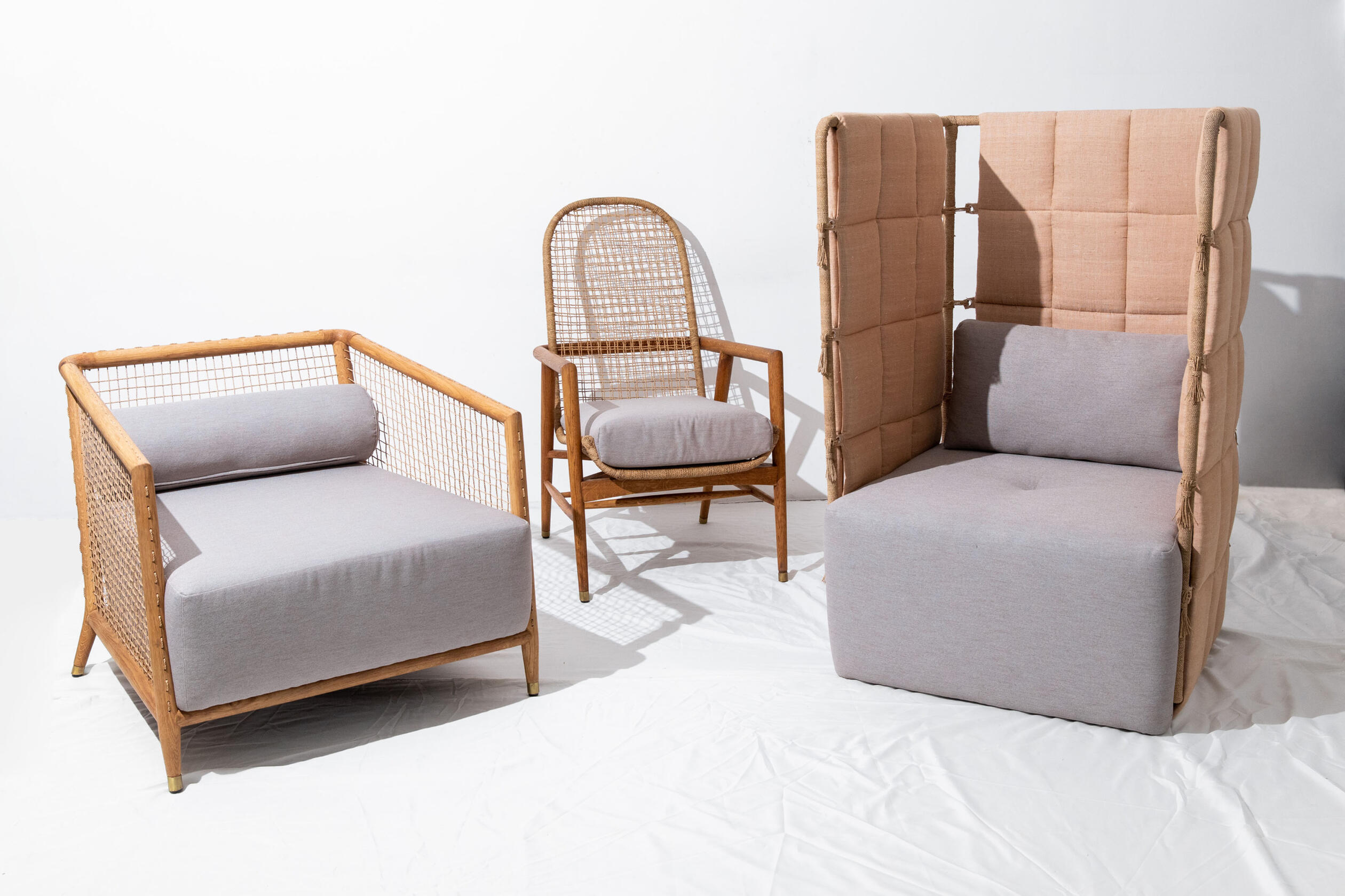
Bins & Crates
Contrapunto
Contrapunto, or counterpoint, is a lighting collection that was developed through the process of improvisation. With the bakong biocomposite bins as the starting point of the design, Stanley added wood as support structure and material counterpoint to the bio-based plastic. He explores the concept of the handmade and industrial, and how materials evoke warmth and coldness.Designer:
Stanley RuizManufacturer:
Contemporaneo
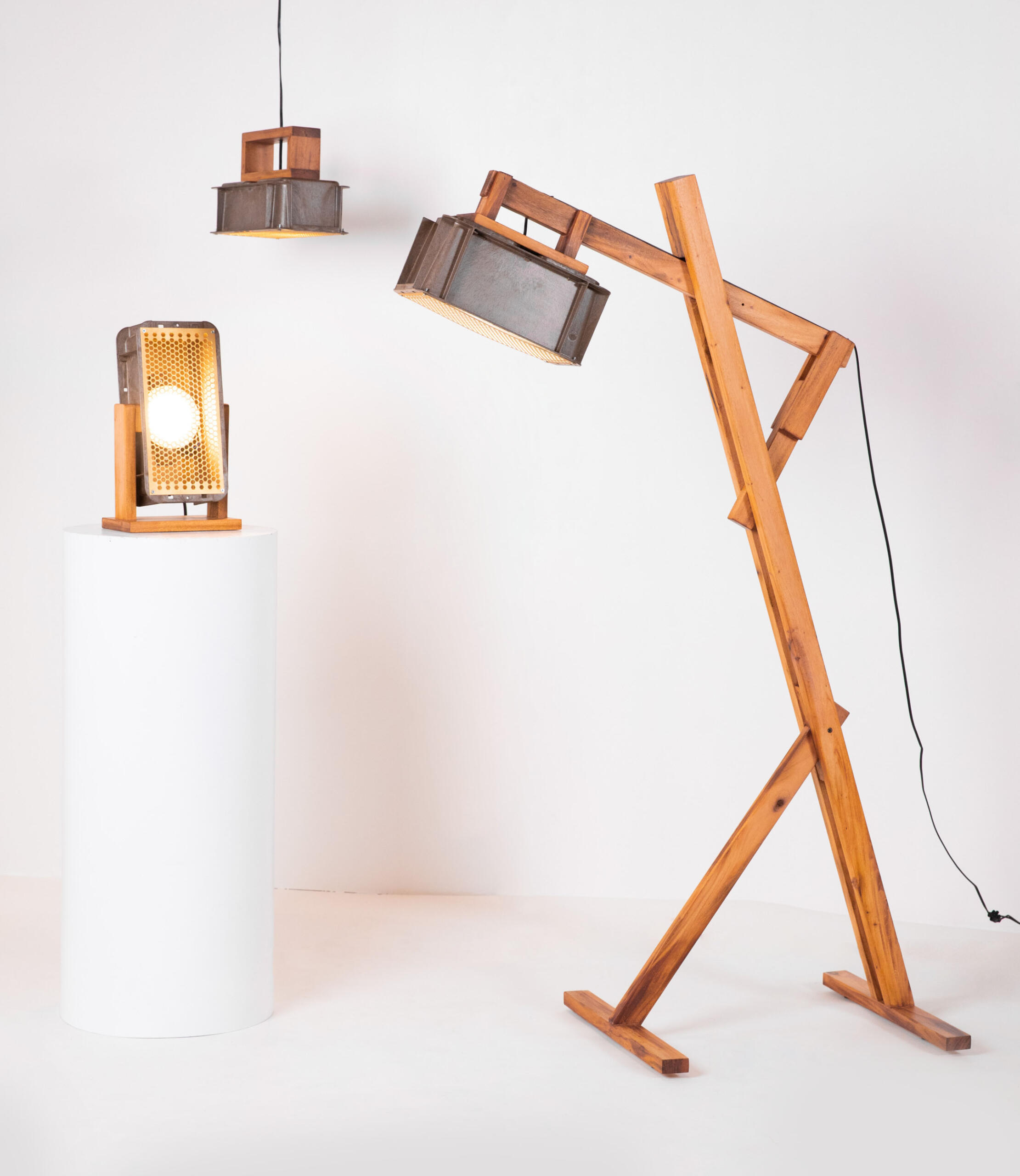
Habi Bench
Pocket Garden in Intramuros is envisioned to become an urban oasis tucked within the walls of the historical and cultural landmark. The area is placed with a series of benches that doubles as bicycle racks and designed for the Intramuros community and its visitors to relax and spend meaningful time with friends and family. The modular benches are made of bakong biocomposite lumbers supported by metal frames.Manufacturer:
Pocket Garden
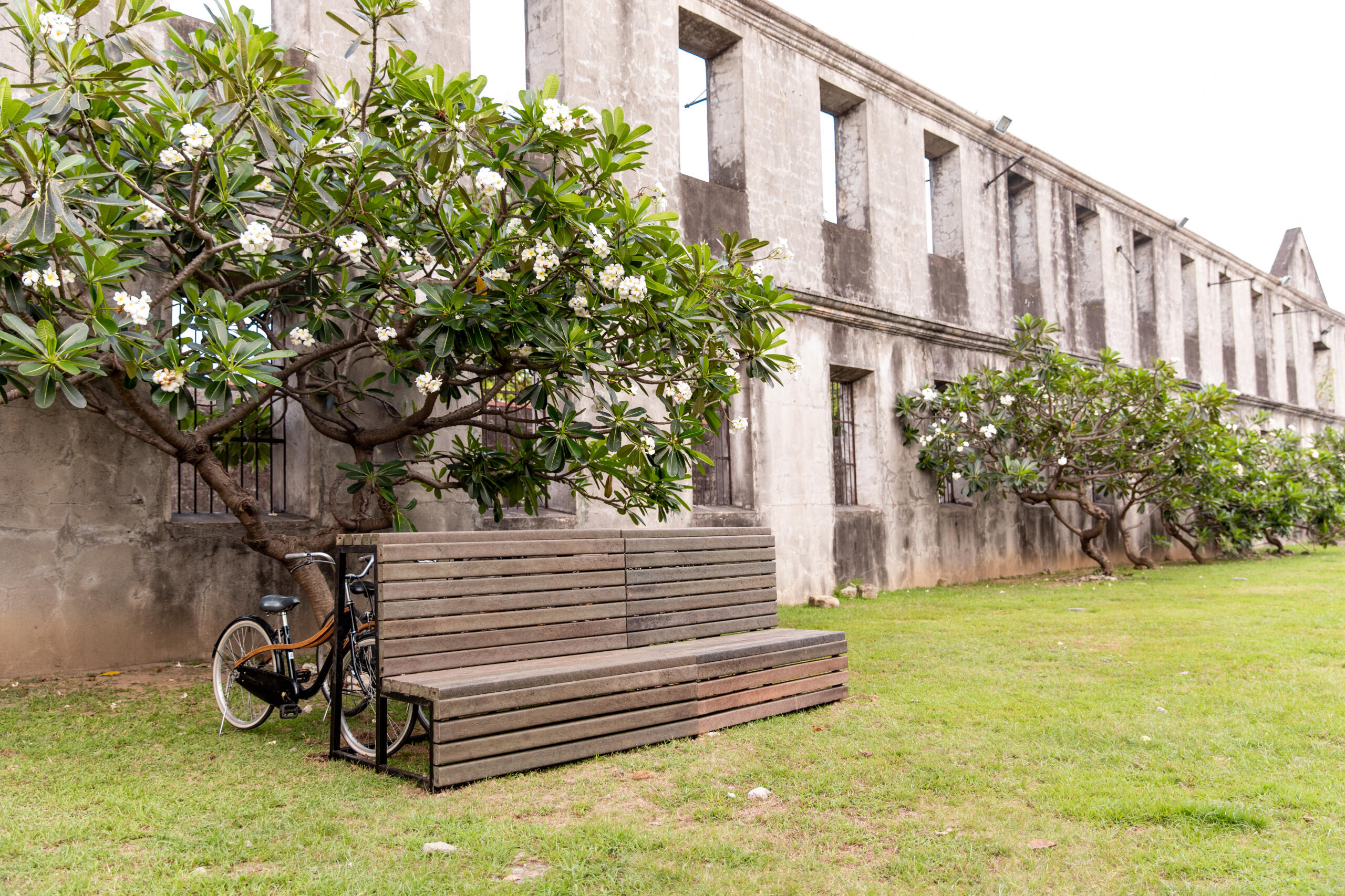
Origami
Inspired by the Japanese art of origami’s minimalist expression, Designer Luisa Robinson expanded it into design objects bearing sculptural qualities. She injects color and playfulness onto patterned bakong weaves transformed into trays and bowls. These projects can be stacked on top of each other and adjusted for height or placed together to create a larger piece. Helena & Henri are origami structured horse table lamps and floor lamps.Designer:
Luisa RobinsonManufacturer:
Nature’s Legacy
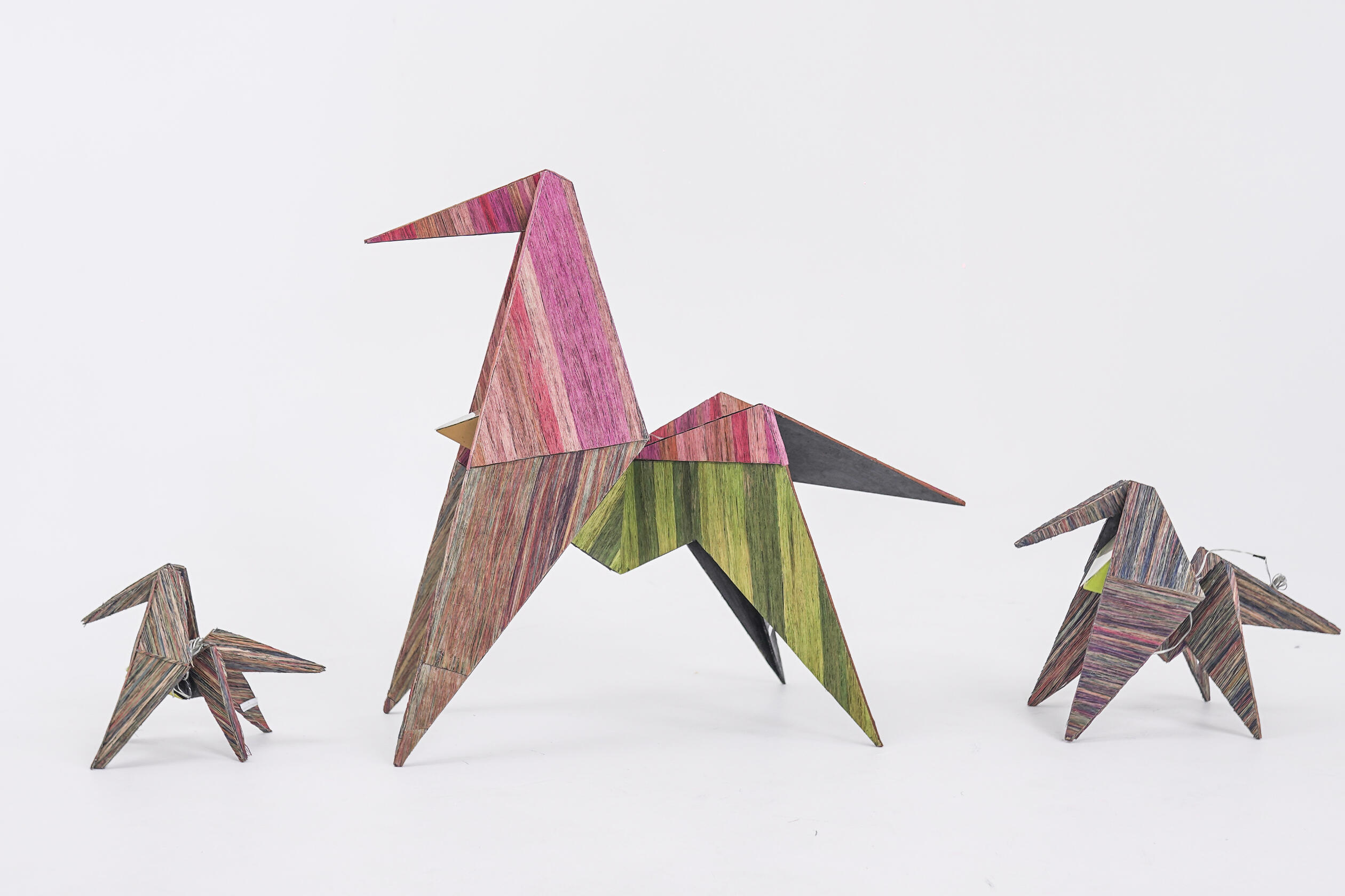
Scroll
For this collection of furniture and decorative pieces, Nature’s Legacy collaborated with designer Luisa Robinson to explore the creative possibility of bakong. The scroll with its form and rolled ends served as inspiration. The tactile quality of the bakong fiber mats remains the highlight of the design. The screen dividers and table support are light and easy for transport, while the vases can be linked to create longer, or adaptable configurations based on the size and shape of the table.Designer:
Luisa RobinsonManufacturer:
**Nature’s Legacy **
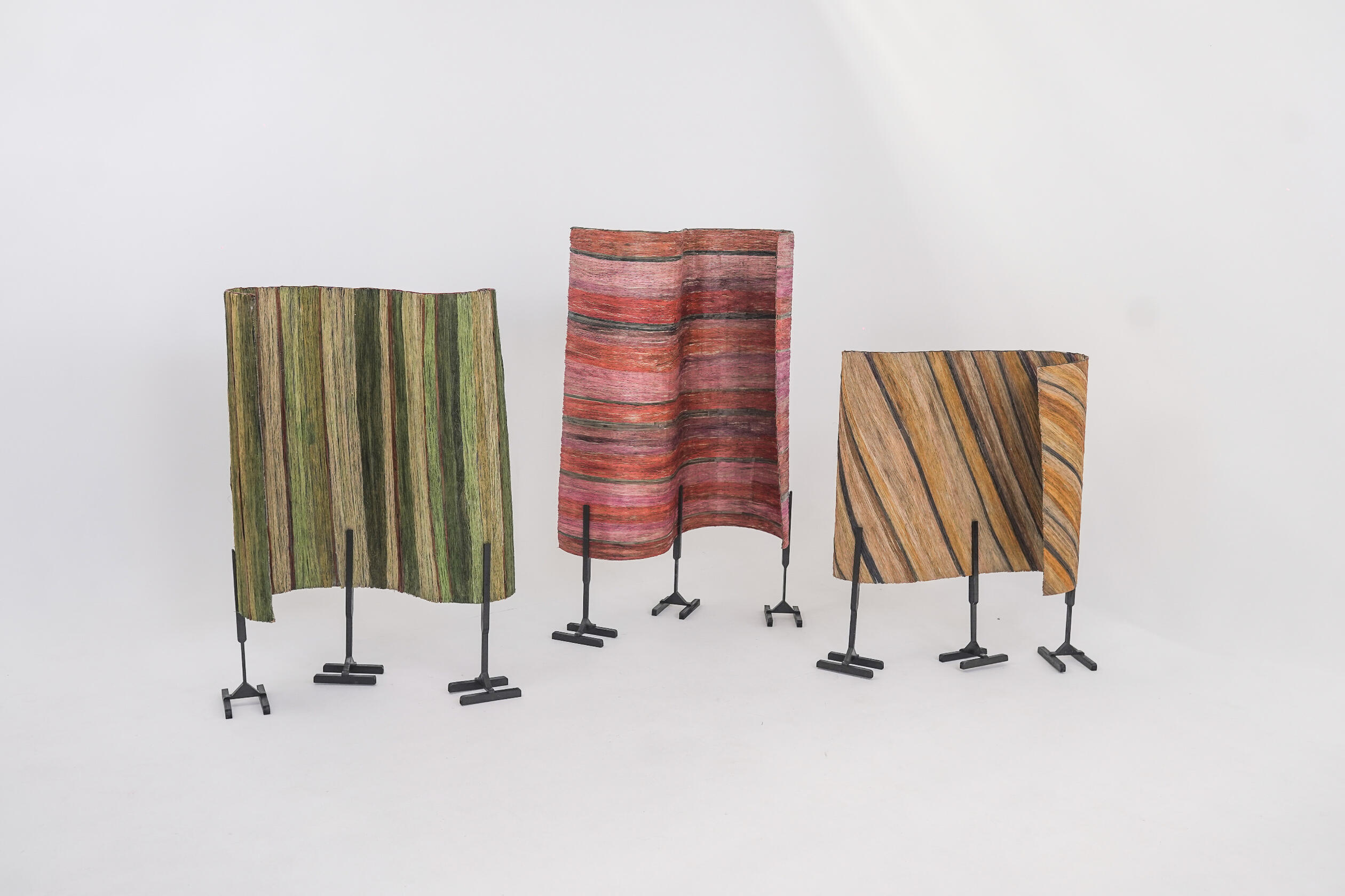
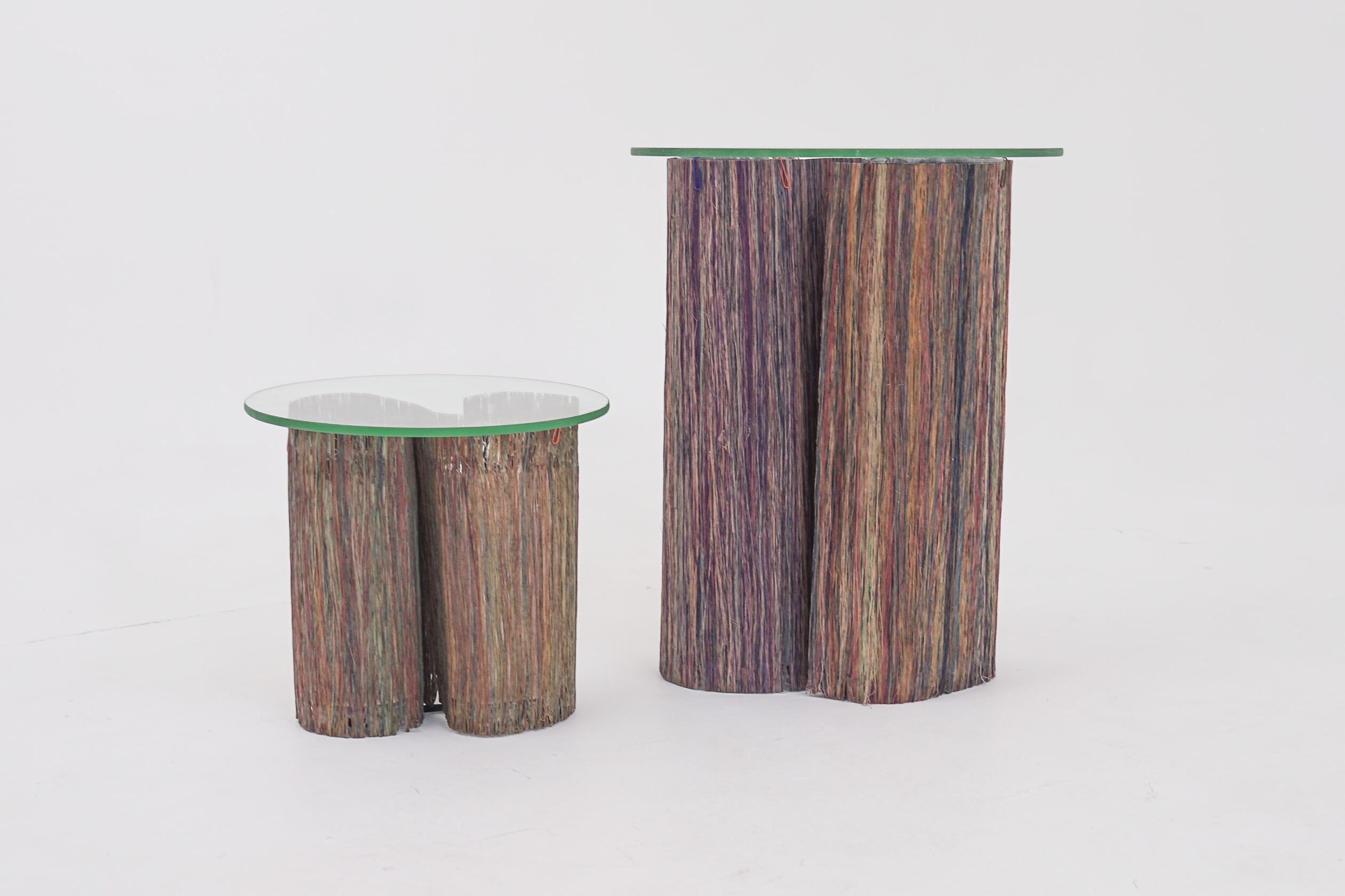
Provinciudad
Provinciudad, revolves around the use of bakong fiber to channel the countryside while simultaneously incorporating the bag’s transformational character that demonstrates the multiple demands of urban living. The forms of their multifunctional pieces are a nod to the baul (treasure chest), bayong (market bag), drum (storage containers for grains), and pitaka (wallet). It brings their signature R2R weaves by their urban artisans together with bakong weavers to create a new classic fashion staple.Manufacturer:
Rags2Riches
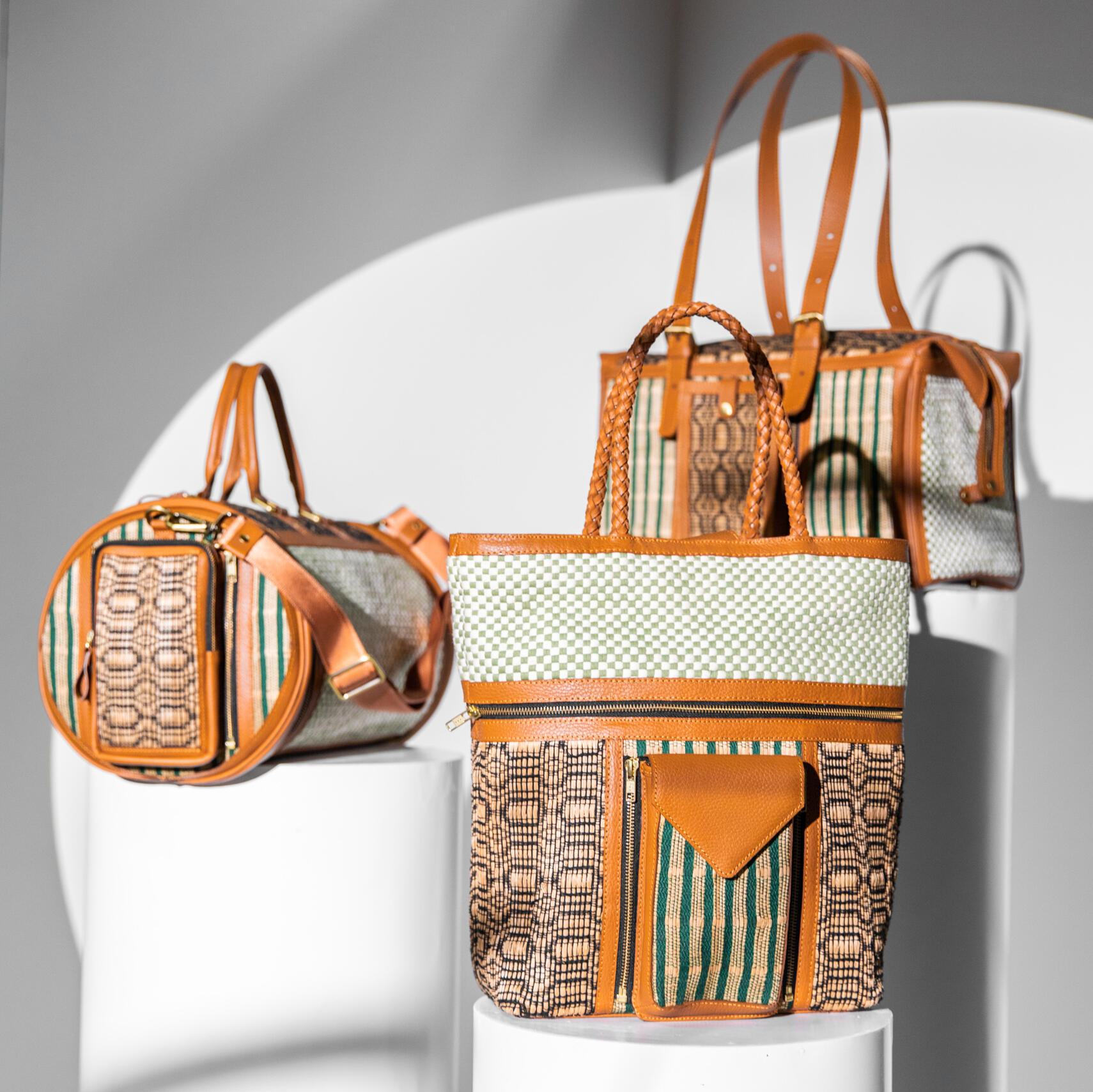
Spider Lily Collective
The Spiderlily Collection references the bakong plant as its muse, as well as the shared efforts of enterprises to uplift communities and contribute to nature’s regeneration.The bulbous shaped jacket and sleek top can each be transformed into a bag, while the cargo pants can be converted into shorts. These multifunctional pieces are composed of leftover fabrics from the workshops of Bea Valdes and BAYO, and another of a bakong and cotton fabric blend. Both fabrics were made by BAYO Foundation’s partner handloom weaving community.Designer:
Bea ValdesManufacturer:
Valdes Designs x BAYO
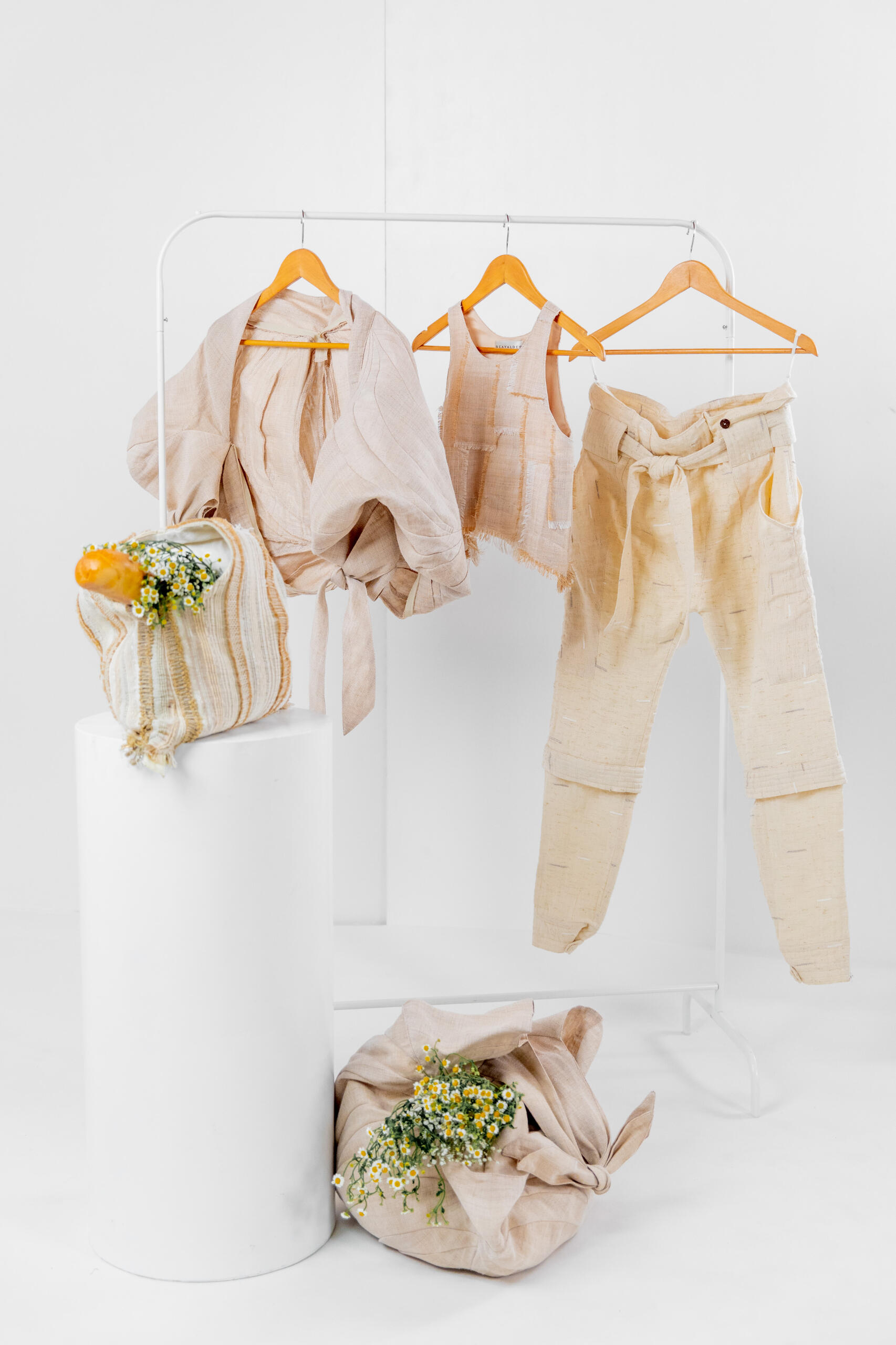
Partners
**A.Garcia Crafts **
Address: 225 LRI Design Plaza, N. Garcia St. Makati CityContact Person: Andy Garcia, PresidentContact number: +632 8835 9136 | +632 8256 1354Email: [email protected] | [email protected]Website: https://agarciacrafts.com/
**BalaiKamay **
Address: 28 Fort Santiago St., Bago Bantay, Quezon CityContact person: Rei Tugade, Co-founder / Co-ownerContact number: +63 917 709 0429Email: [email protected] | [email protected]Website: https://www.balaikamay.com/
BAYO
Address: Suite 806 Annapolis Wilshire Plaza No. 11 AnnapolisStreet Greenhills, San Juan PhilippinesContact Person: Anna Lagon, CEO & COOEmail: [email protected]
Contemporaneo Inc.
Address: 369 Numeriano Cruz Street, Villa Raymundo Palatiw, Pasig City Metro Manila PhilippinesContact number: +63 917 577 1066Email: [email protected]
D&L Plastics and Polymers
Address: 65 Industria Street, Bagumbayan 1110, Quezon CityContact Person: Joshua Tan, Product Design and Development ManagerContact number: + 635 0680Email: [email protected]Website: https://dlpc.com.ph/
Dem Bitantes
Email: [email protected]
**DOST - PTRI **
Address: DOST South Compound General Santos Avenue, Bicutan 1631 Taguig City, PhilippinesContact number: + 837 1325Website: https://ptri.dost.gov.ph/
Envirotech Waste Recycling Inc.
Address: Km 11, Sasa, Davao City, 8000Contact person: Winchester Lemen, President and CEOContact number: +63 917 678 9889 | +63 917 324 1118Email: [email protected]Website: https://envirotech.com.ph/
**Fortunato de la Peña Jr. **
Email: [email protected]
Laguna de Cagayan Handicrafts Association
Address: Barangay Luga, Sta Teresita, Cagayan ValleyContact Persons: Nida Dela Cruz, Municipal Environment and Tourism Management Office (MEATMO) Head, LGU Santa TeresitaContact Number: +63 915 705 4247Email: [email protected]
**Luisa Robinson **
Contact number: +63 945 435 3505Email: [email protected] | [email protected]
**Natural Craft Connection Enterprises **
Address: Purok Kamagong, Inicbulan, Bauan, BatangasContact Person: Jun Polo, ProprietorContact Number: + 63 908 810 3058Email: [email protected]Website: https://naturalcraft.com.ph/
Nature's Legacy
Address: #77 P. Remedio St. Banilad, Mandaue, CebuContact Person: Pete DelantarContact number: +63 939 919 6779Email: [email protected] [email protected]Website: natureslegacy.com
**Pocket Garden **
Address: 123 Pioneer St., Brgy. Highway Hills, MandaluyongContact Person: Corrine Serrano, Co-ownerEmail: [email protected]Website: https://pocketgarden.org/
**Rags2Riches **
Address: 8 Twinpeaks Drive Blueridges B, Quezon CityContact Person: Reese Fernandez-Ruiz, President & Founding PartnerContact number: + 63 956 472 0812Email: [email protected] | [email protected]Website: https://r2r.ph/
Sentinel Plastic Manufacturing Corp.
Address: 404 MH Del Pilar St., Maysilo, MalabonContact Person: Jonathan Co, Sales and Marketing ManagerContact number: + 63 920 923 9960Email: [email protected] | [email protected]Website: https://sentinel.com.ph/
Stanley Ruiz
Contact number: +63 917 8060 547Email: [email protected]Website: m.com/estudioruizdesignco/
Tuy Arts and Crafts
Address: 100 Casa Antonio Bldg. Rizal St., Tuy, BatangasContact Person: Ana Marie Afable, Production Manager / DesignerContact number: +63 917 511 4554Email: [email protected]Website: tuyartsdesigns.weebly.com
Valdes Designs
Address: 0945 Severina Diamond Ave., Severina Diamond Vill. Km 18 W Service Rd, Bicutan, ParanaqueContact Person: Marga Valdes, CEO Valdes DesignsContact number: : (02) 872-10979Email: [email protected]
**ICanServe Foundation **
Email: [email protected] | [email protected]
FabLabs and Shared Service Facilities
Digihub Fablab DavaoPhilippine Footwear Federation Inc.UP CFA FabLab
Bakong Team
Maria Rita O. Matute
Executive Director
Design Center of the PhilippinesCarlo Delantar
Bakong at SSX Creative Director/Circularity Expert/CuratorRose Marie O. Mendoza
Mary Josephine CruzLemuel Abron
Joyce Cadungog
Clark Mendoza
Marilyn Munio
Michiko Ong
Lorenz Patalinghug
Janine Piguerra
Beverly Rivera
Romil Tausa
Lee Villanueva
Mico PeñaKarem Miranda
Ma. Susana CortesKarina Abola
Aileen Banzagales
Quennie Agabriel
Mardale Chu
Beatty Lyn Cosiwa
RC Joy Francisco
Celina GuinooVideography and Photography
Tin VillanuevaWriters
Paul Martin Anthony Cenizal
Dang Sering
Features & Awards
Brakong at the Philippine Star
In time for the Breast Cancer Awareness Month, 2021 Circular Design Challenge winners Emmanuelle Pangilinan and Jason Pechardo earns another recognition at the 2022 James Dyson Award. The team mentions that they hope this will create positive impact that would help them boost the development process and get the product out to the market at the earliest time possible.
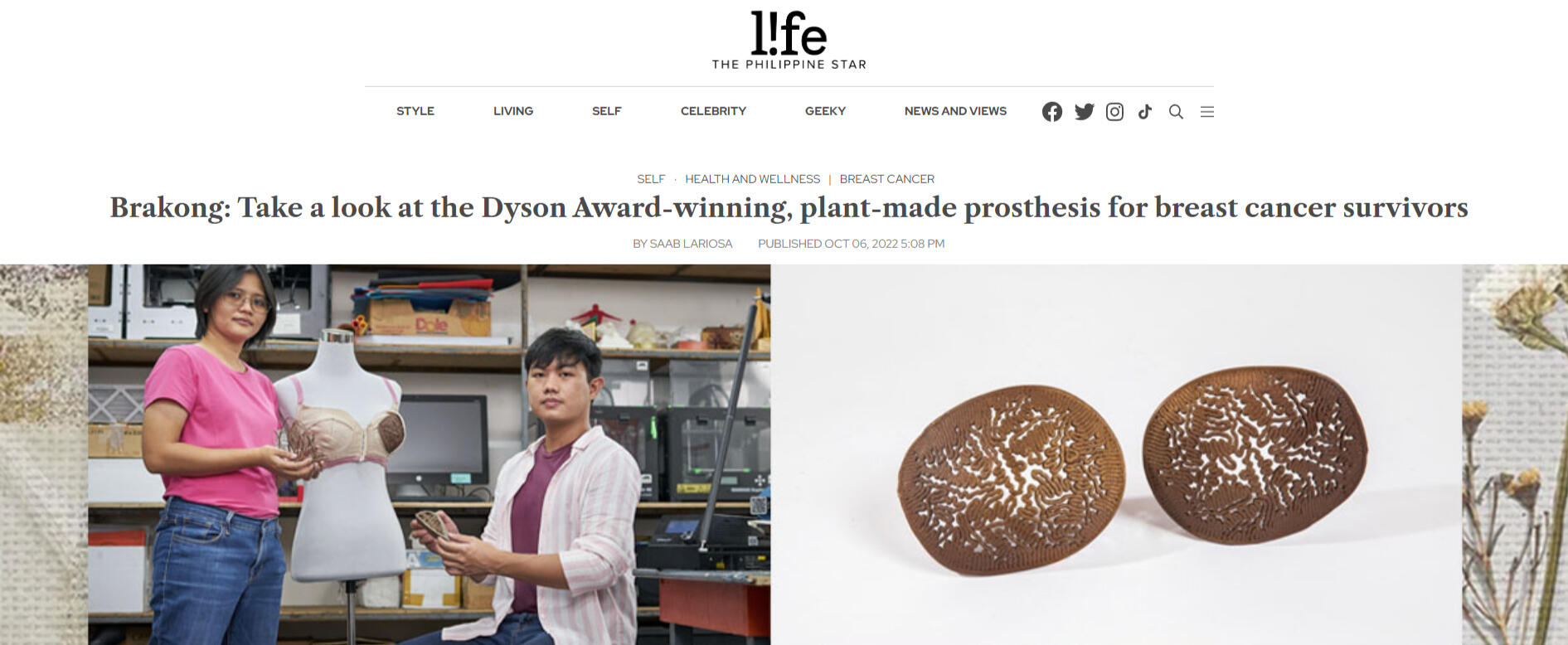
Read the full article here.
Contrapunto at Interior Design Magazine
Contrapunto was named as one of the 12 Fresh Furnishing and Lighting Designs by Creatives in Southeast Asia following the lightning collection’s participation at the Singapore Design Week last 22-24 September 2022. The feature was created by the Interior Design Magazine, a New York based design authority for interior designers, architects and other design pros.
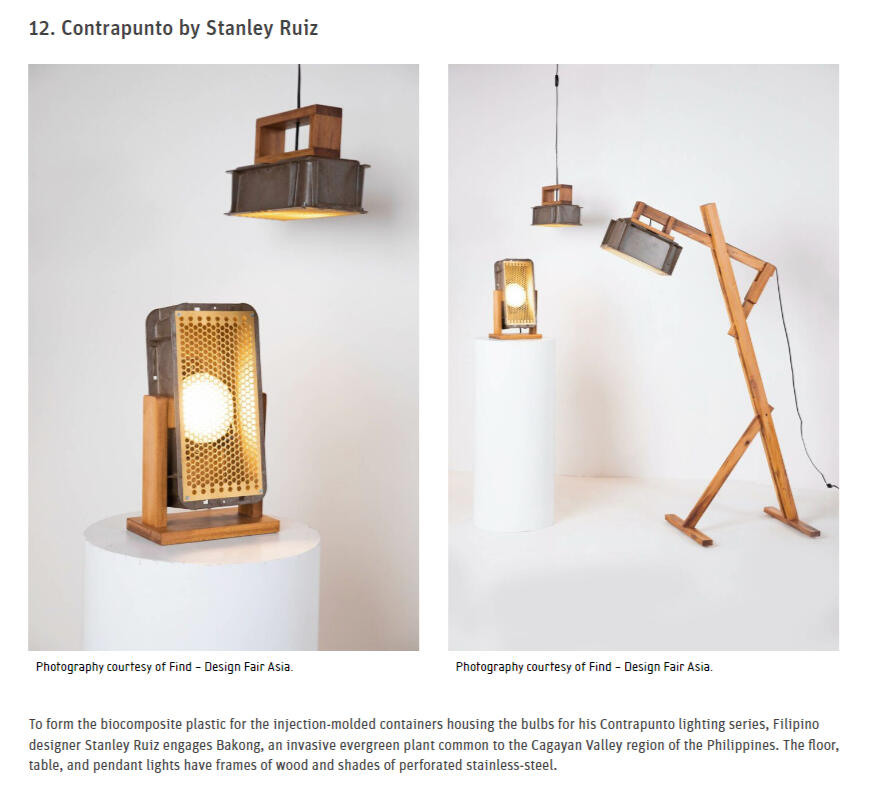
Read the full article here.
This Award-winning Plant-based Prosthetic is Courtesy of Two Filipino Students
Recyclability meets sustainability!Brakong is a lightweight, customizable, and recyclable prosthetic meant for survivors who have undergone a mastectomy. Aside from the source plant’s antimicrobial properties, Brakong takes pride on its capability to be remelted and reformed to match the new curves of the growing patient.
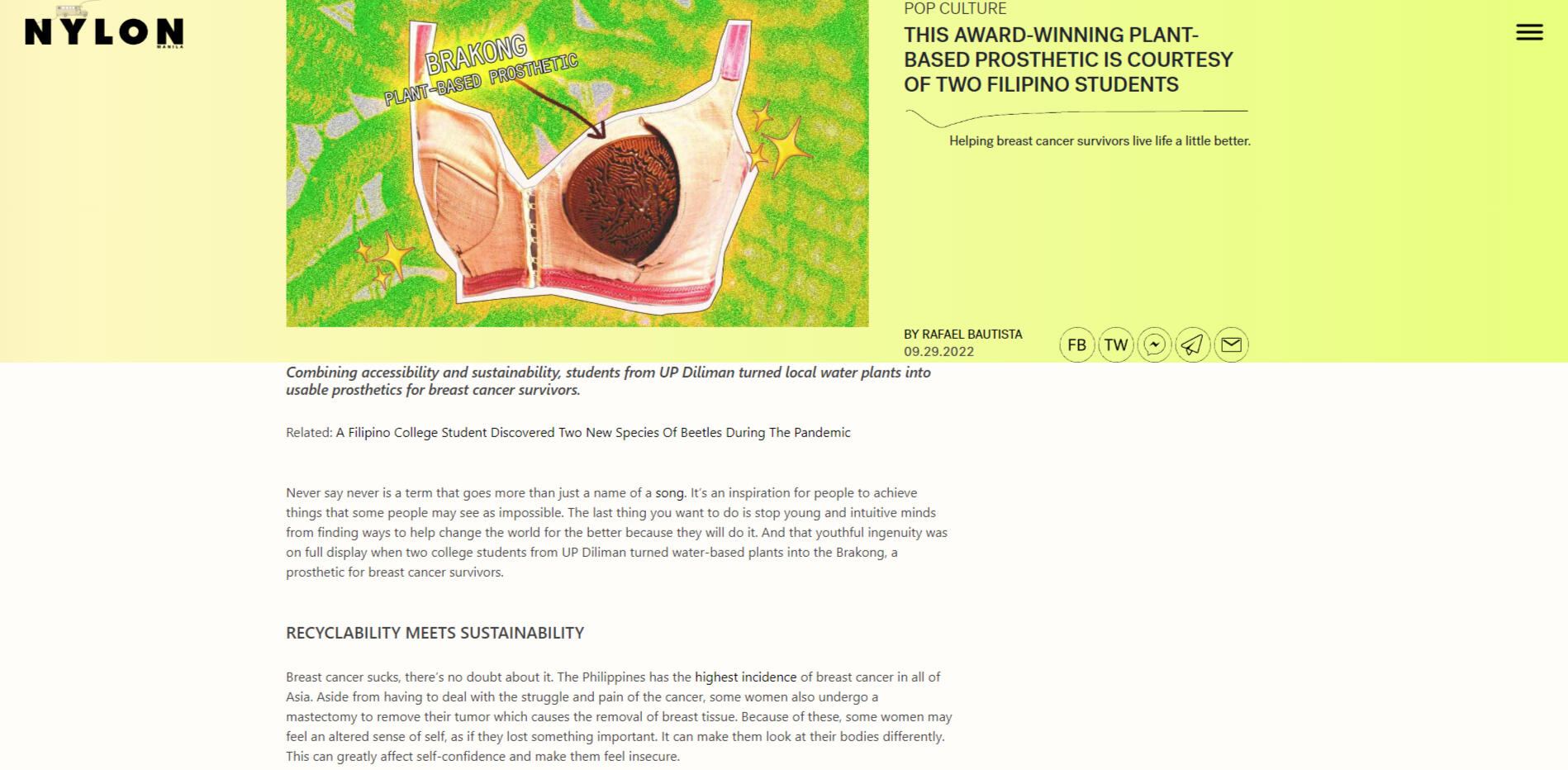
Read the full article here.
UP Students Develop Plant-based Prosthetic for Breast Cancer Survivors
Designing with malasakit continues to improve quality of life in Bakong!After the team’s success as national winners of the #JamesDysonAward Philippines 2022 for their game-changing invention called “brakong”, the team is waiting for the announcement of International winner and sustainability winner.
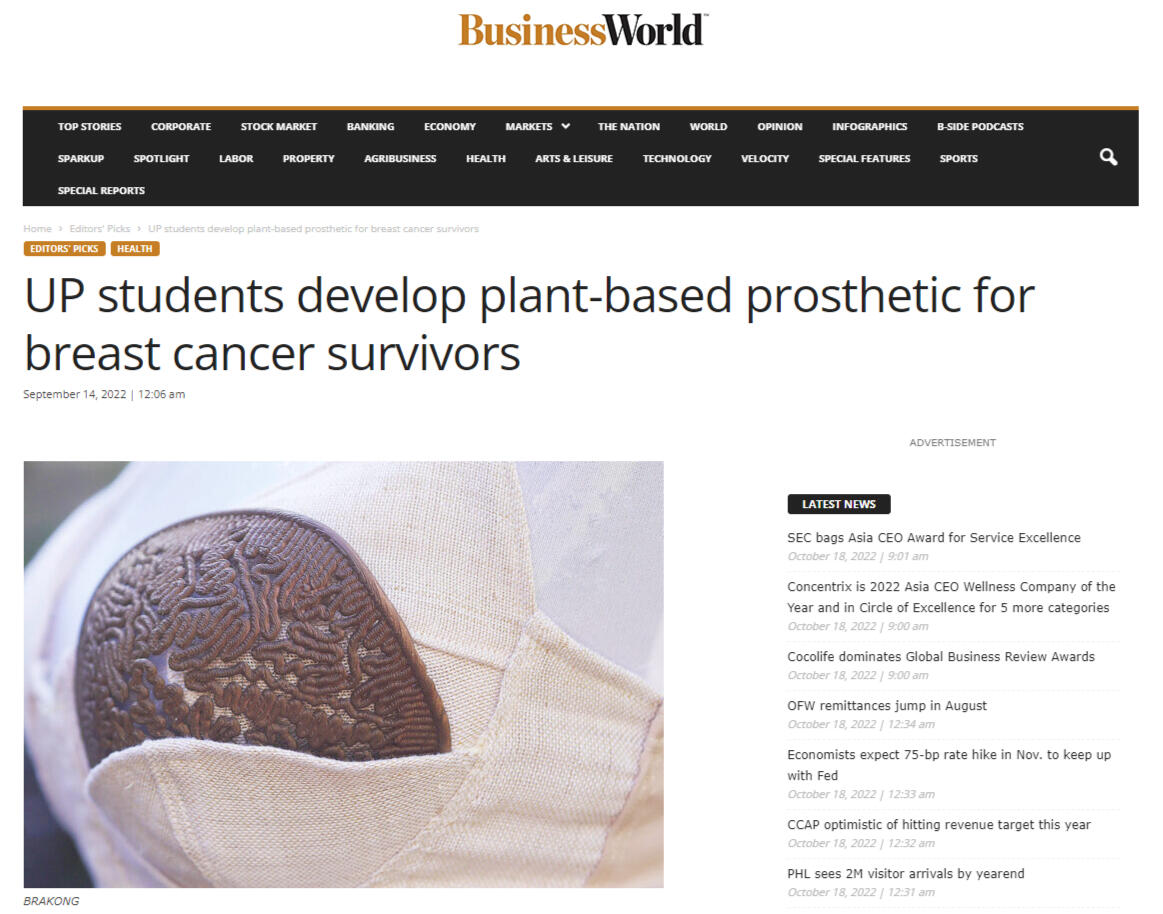
Read the full article here.
Brakong at BaliTamBayan
Design duo and Engineers Emmanuelle Pangilinan and Jason Pechardo bags international recognition at the James Dyson Award 2022. The two created an external breast prothesis for breast cancer survivors who underwent mastectomy from Bakong.
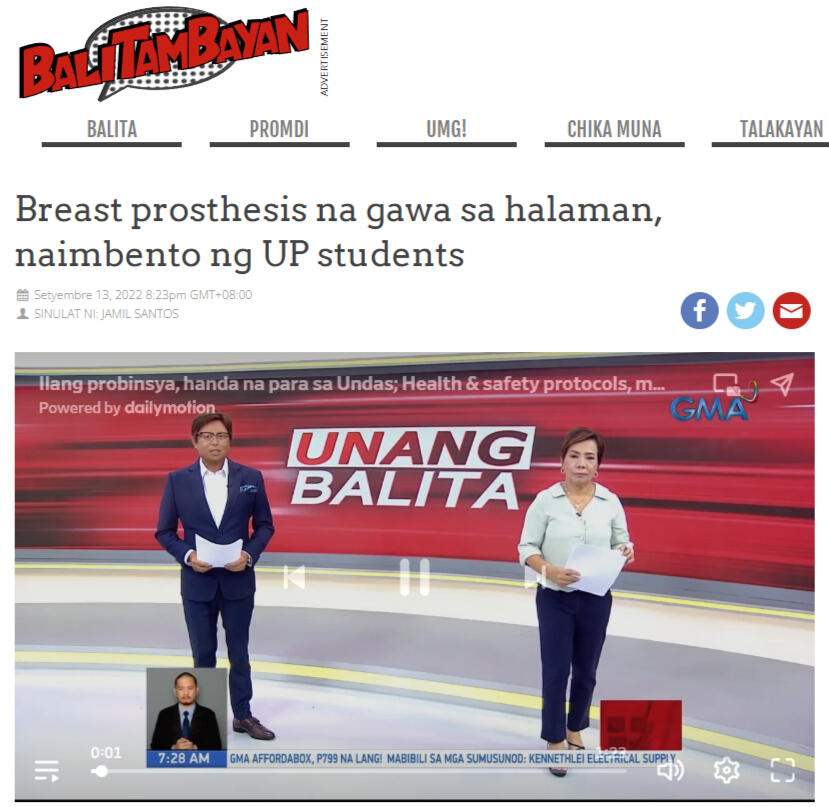
Read the full article here.
From Farm To Fashion: The Most Innovative Filipino Textiles
Vogue Philippines’ maiden issue lists Bakong alongside Piña, Abaca, and Banana fibers as one of the revolutionary eco-friendly textiles that showcase Filipino creativityWith higher environmental stakes and a greater call to transform the industry’s supply chain process to be more climate positive, the Philippines is leading the way in finding alternative bio-based raw materials that could drastically change the fashion industry.
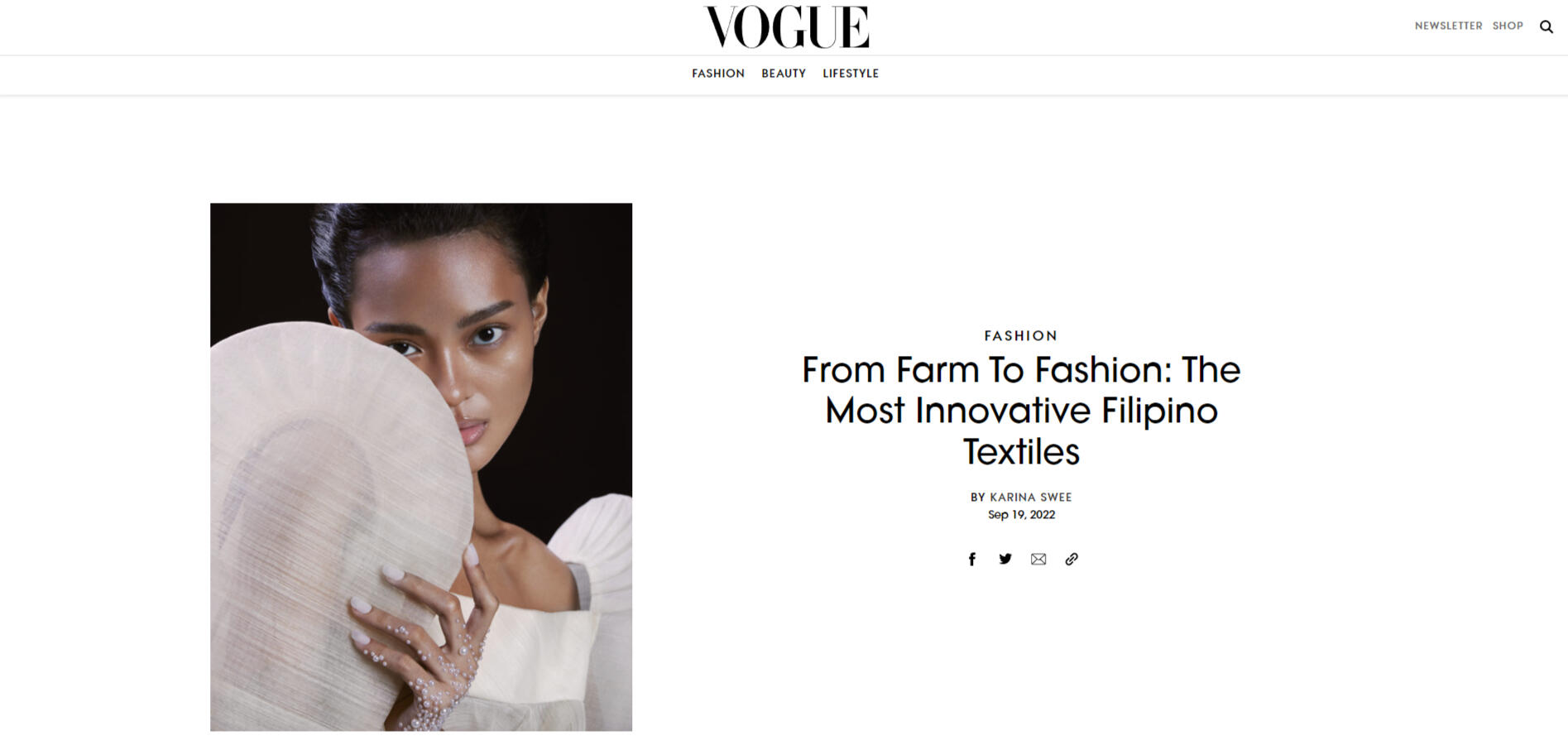
Read the full article here.
The future of Filipino Fashion is Green
Philstar recognizes the Filipino resiliency and resourcefulness that shapes our wearable culture amidst the COVID-19 pandemic.The article features the complete outfit of convertible pieces “Spiderlily Collective” by Filipino fashion brand Bayo, and renowned designer Bea Valdes handcrafted with Philippine cotton blend fabric created in partnership with a community of weavers in Bulacan and DOST-PTRI.
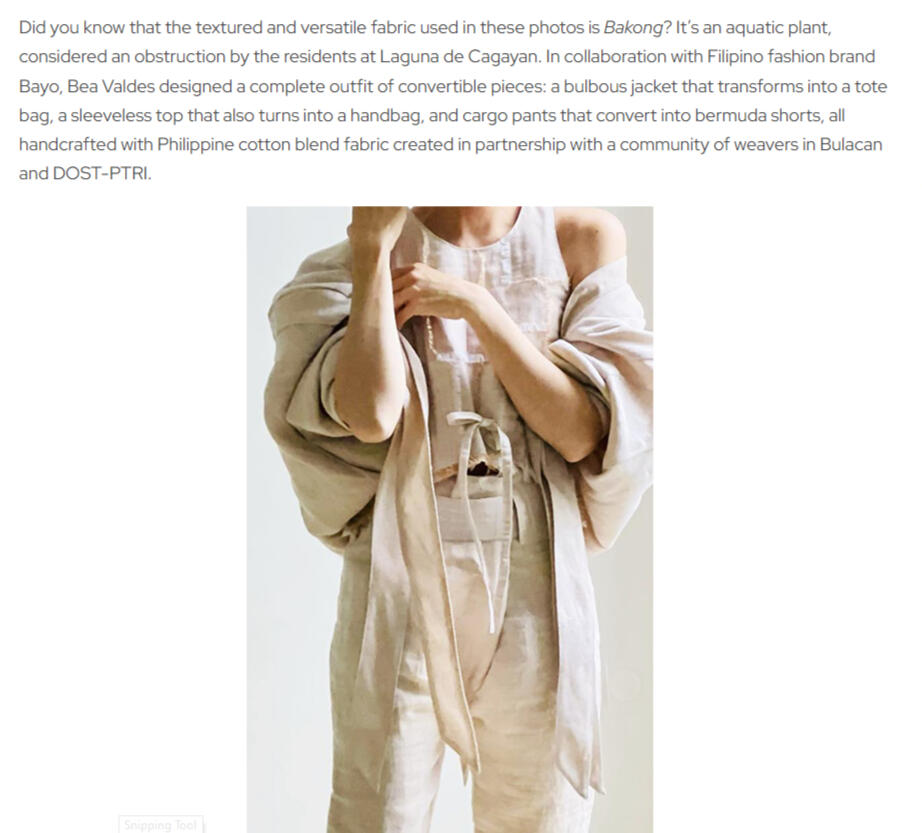
Read the full article here.
Infinite Legacies Episode 1:
Bea Valdes
Help transition the Philippines into a circular economy!Circularity has been a buzzword for quite some time as we are in the current state of building resilience against global disruptions. Witness the stories of these changemakers on how circularity can uncover agile opportunities. Included in this conversation is how the Bakong material from Cagayan has been pushing circularity not only in fashion, but also in different industries.More about Bea Valdes’ and her efforts in bringing together circularity and fashion with bakong.
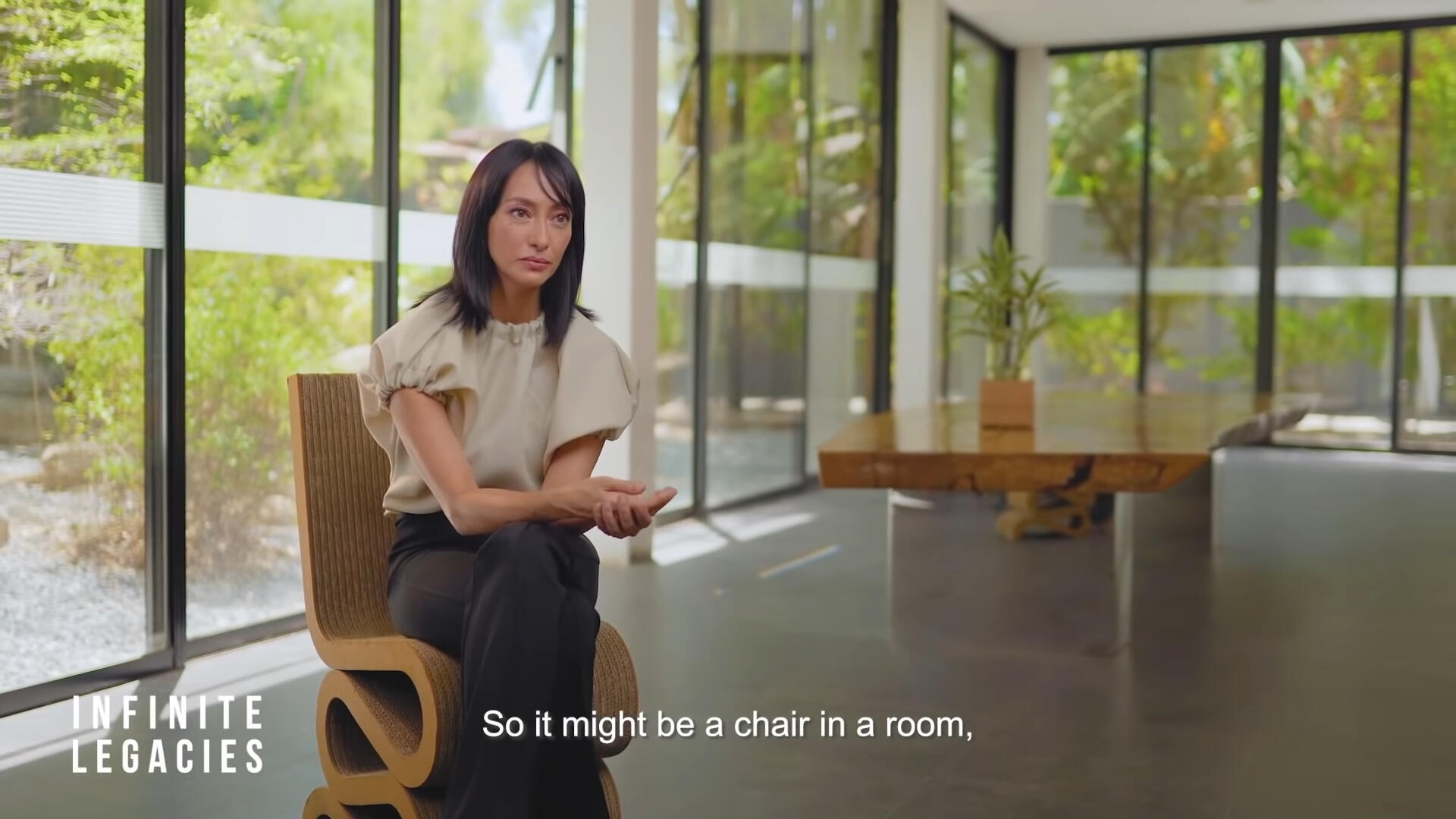
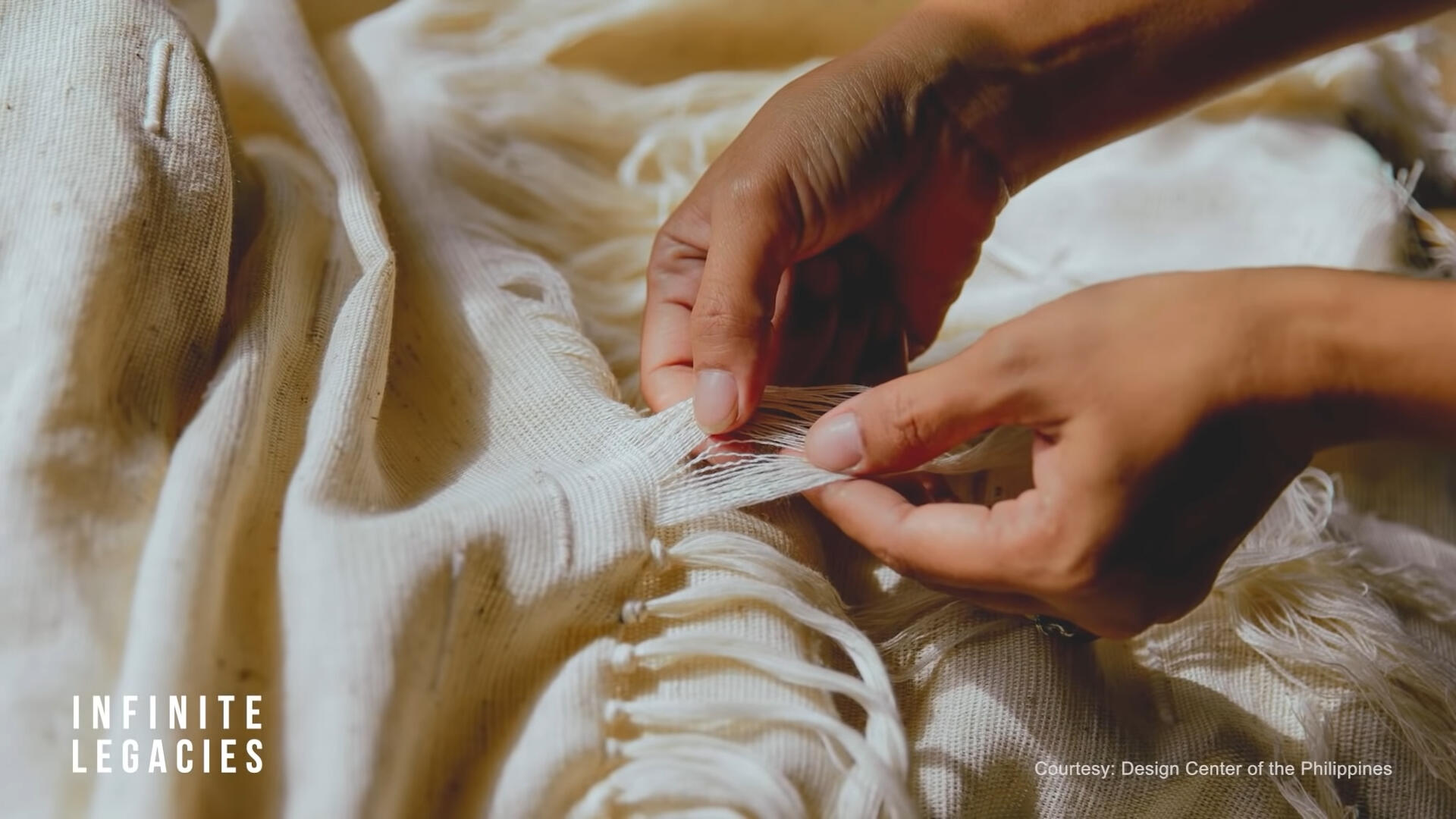
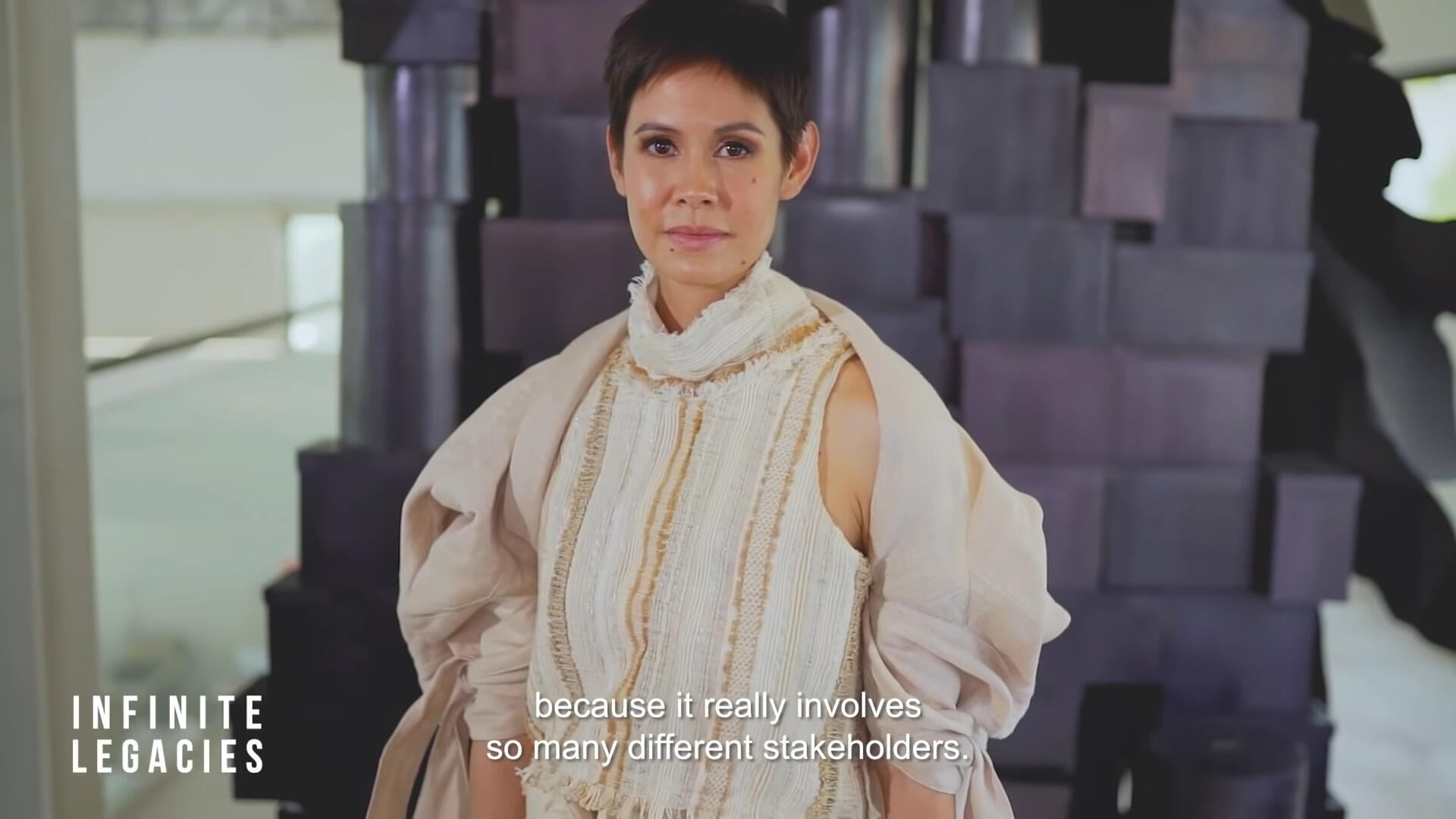
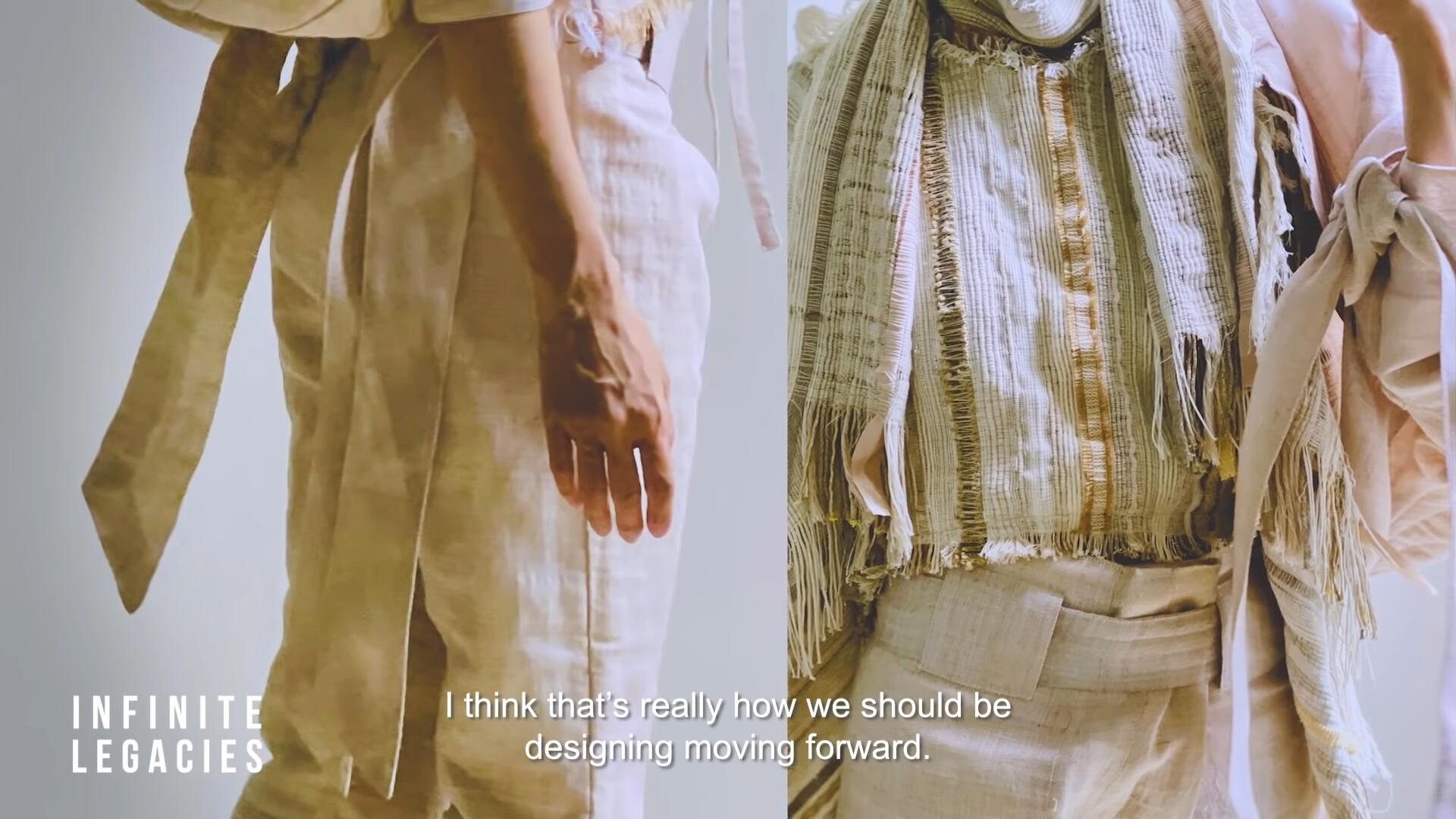
Watch the full episode here. [24:35]
Bakong at Sustainability Solutions Exchange
Sustainability Solutions Exchange (SSX) held last 23-25 March 2022 brought together 1,204 attendees from 33 countries. The project initiated by CITEM provide a platform for MSMES transition into becoming export-ready brands that practice ethical and sustainable policies.Design Center of the Philippines (DCP) also launched their projects focused on finding use for agricultural waste and byproducts, like the perennial aquatic plant bakong and discarded pineapple leaves.
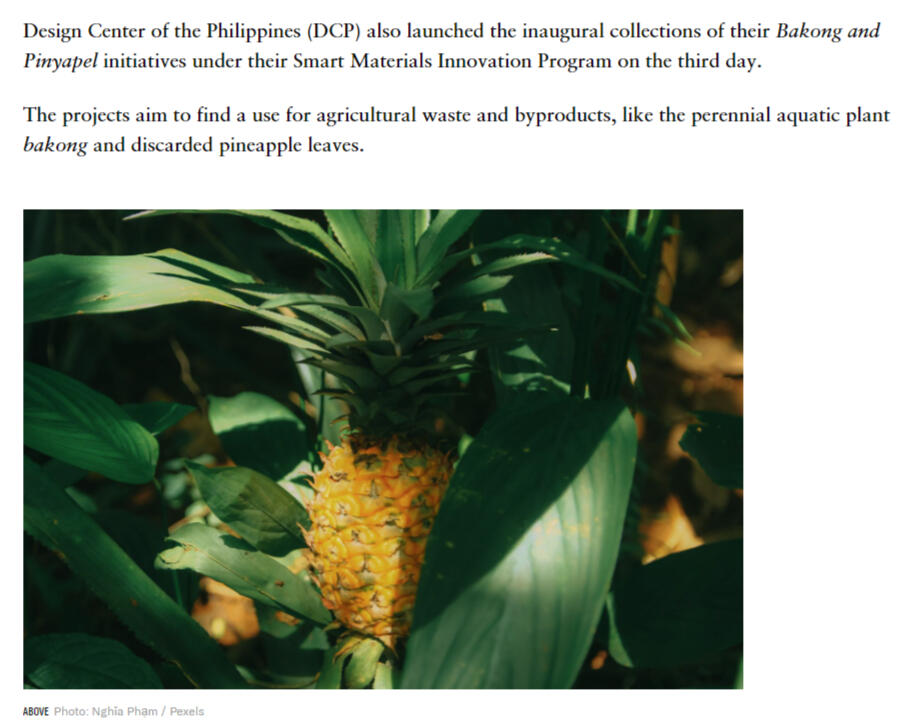
Sustainability Solutions Exchange Propels MSMEs Towards Sustainability
Design Center of the Philippines launched the inaugural collections of Bakong and Pinyapel initiatives under their Smart Materials Innovation Program at the Sustainability Solutions Exchange (SSX), a three-day digital conference and exhibition initiated by the Center for International Trade Expositions and Missions (CITEM).The two projects captured interest as the respective expo booths that garnered the highest number of attendee interactions.
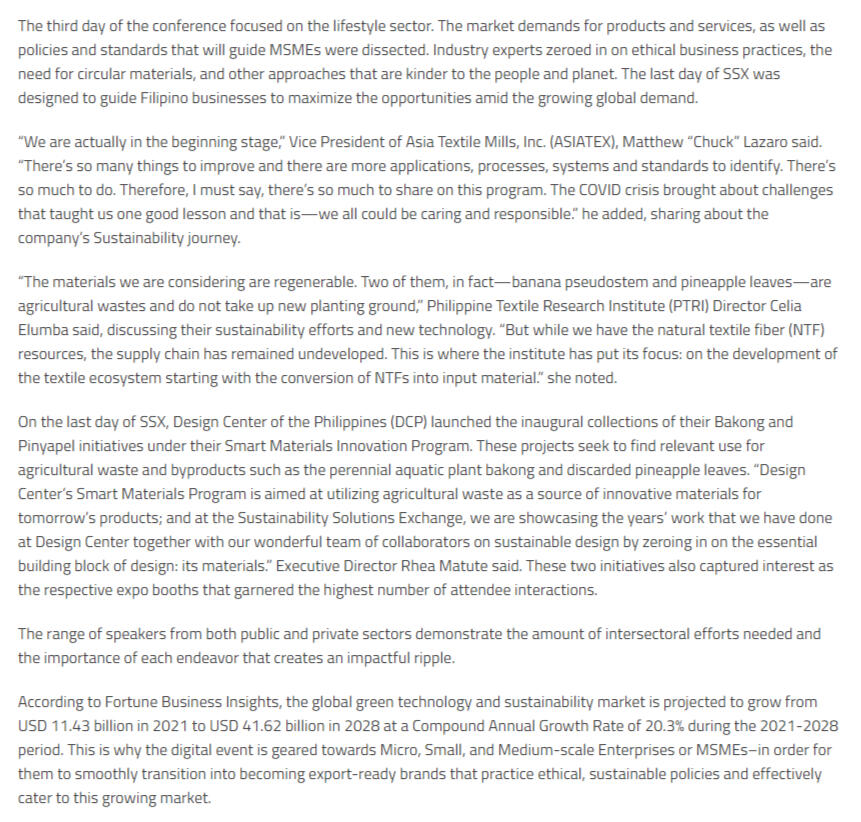
Promoting sustainable fashion through eco-friendly practices
Check out Anna Lagon of BAYO Foundation as she talks about promoting sustainable fashion through eco-friendly practices at New Day! BAYO Foundation hand in hand with the Design Center of the Philippines explored the possibilities of Bakong for fabric application.
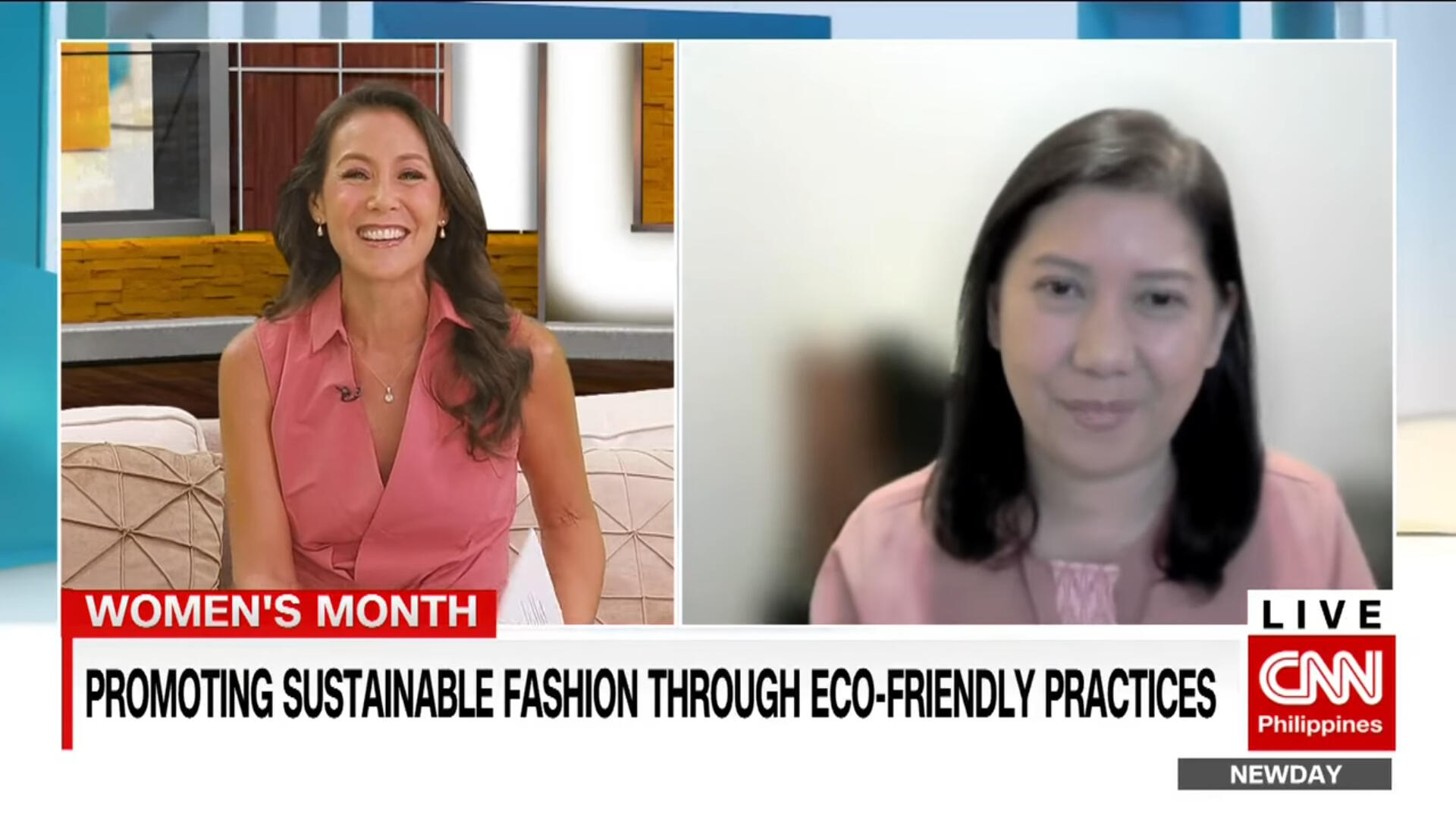
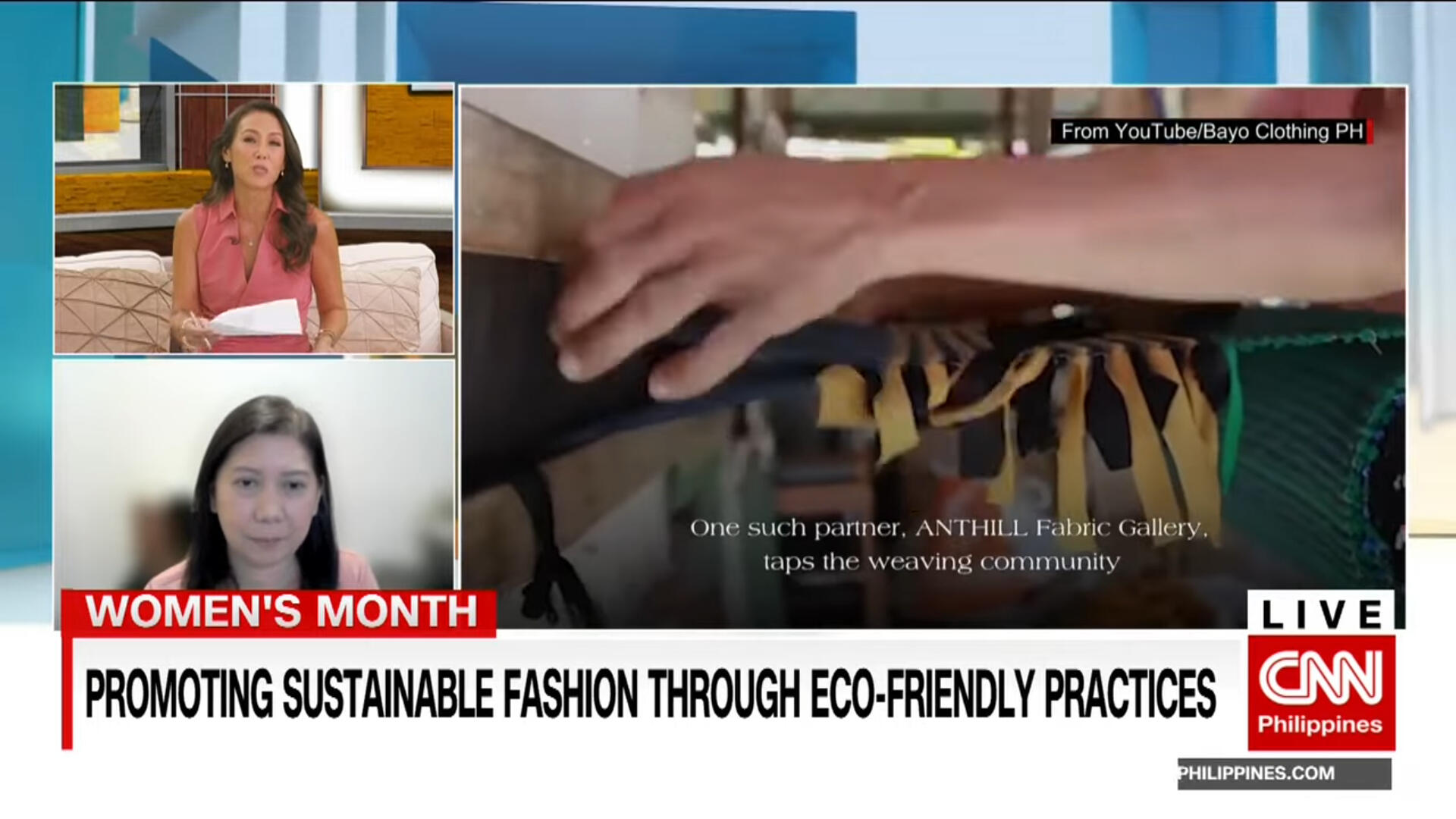
Bayo at Vogue Magazine
In its first-ever on-site event since the start of the pandemic, Design Center of the Philippines emphasized the need to use design as a tool to help Filipinos, especially as the country slowly recovers from the COVID-19 pandemic.Executive Director Rhea Matute mentioned the importance of design in the process of creating products that is sustainable and economically viable highlighting their Pinyapel and Bakong innovations that will be launched at the Sustainability Solutions Exchange.
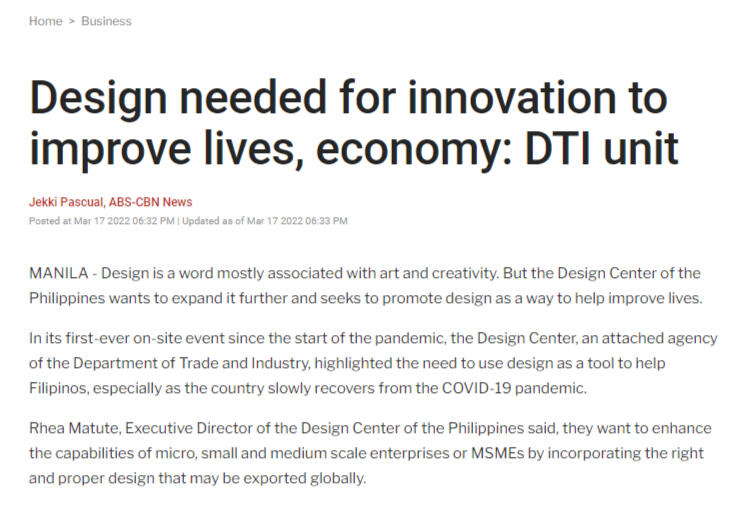
Bayo at Vogue Magazine
Vogue, the international fashion magazine franchise, has reached the shores of the Philippines as it launches its most awaited first issue today, in print, on its digital and social platforms. The debut issue features Bakong, a SMART Materials Project by the Design Center of the Philippines.
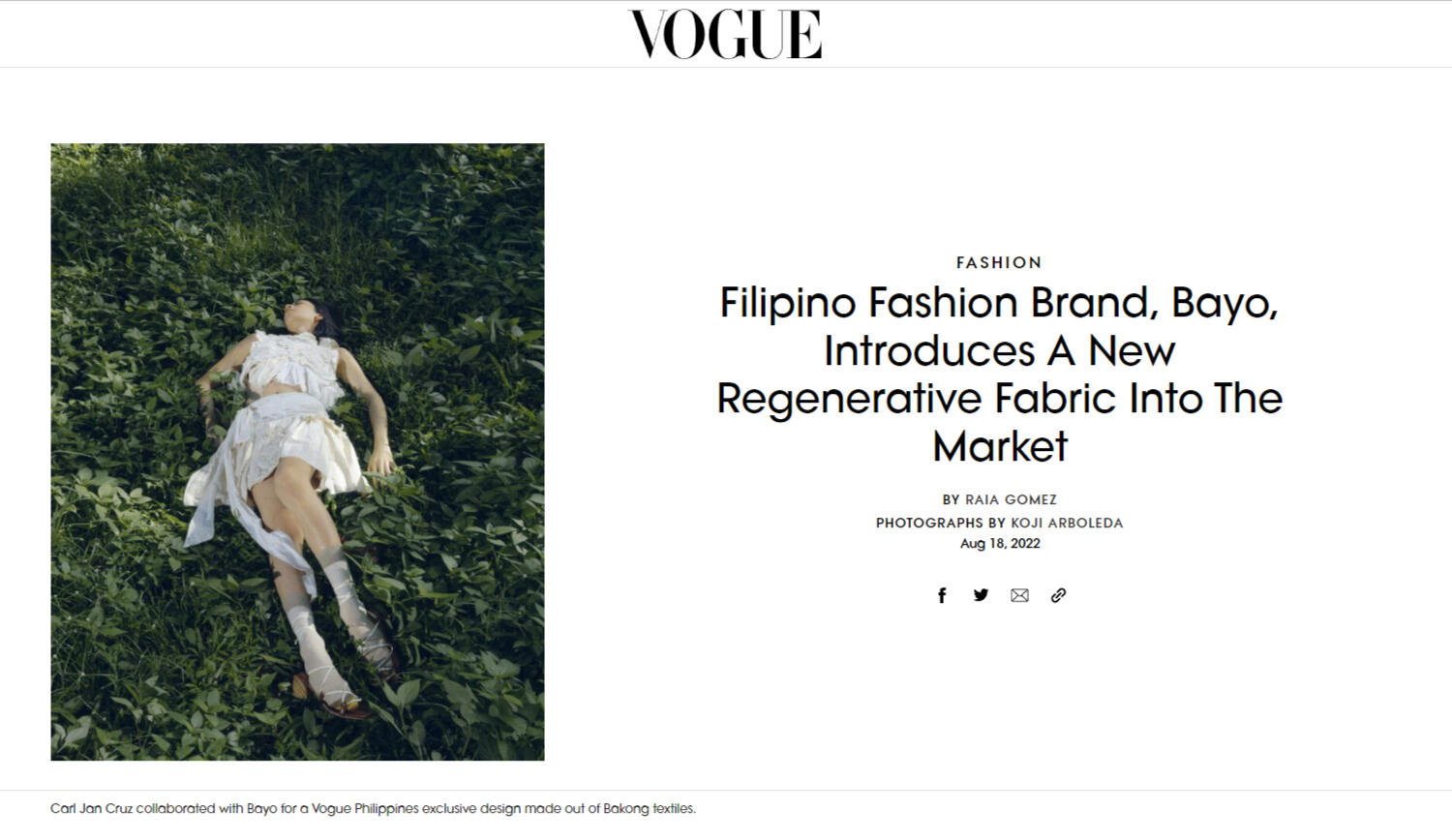
Design Center at Manila Bulletin
How do ‘malasakit’ and design go hand in hand?The nation’s agency for design shone light on design’s impact and context, how it can improve lives and address social, economic, and environmental sustainability. It’s about impact-driven solutions that take on social challenges and protect future generations.
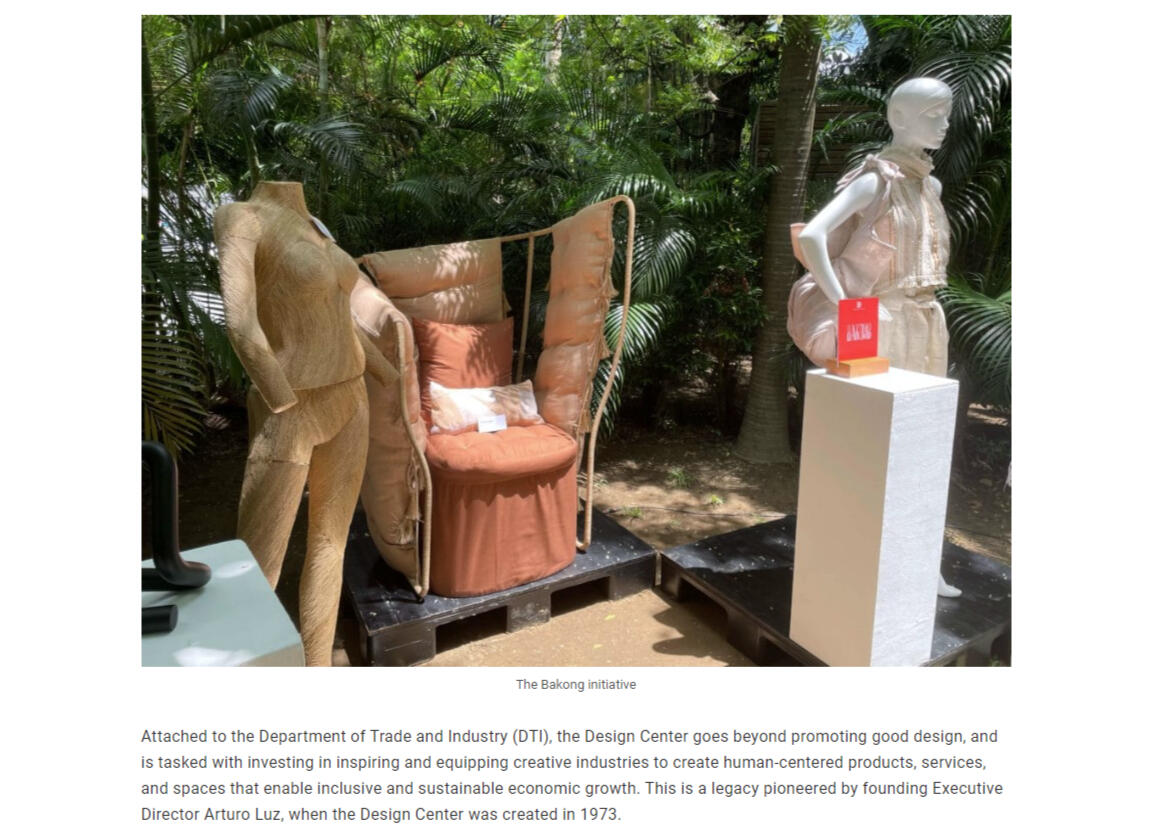
Design Center at BluPrint
Philippine design, through the initiatives of the Design Center of the Philippines, draws inspiration from the Filipino value of "malasakit" to help Filipino creatives, designers, and entrepreneurs move towards post-pandemic recovery and preparedness for future disruptions.
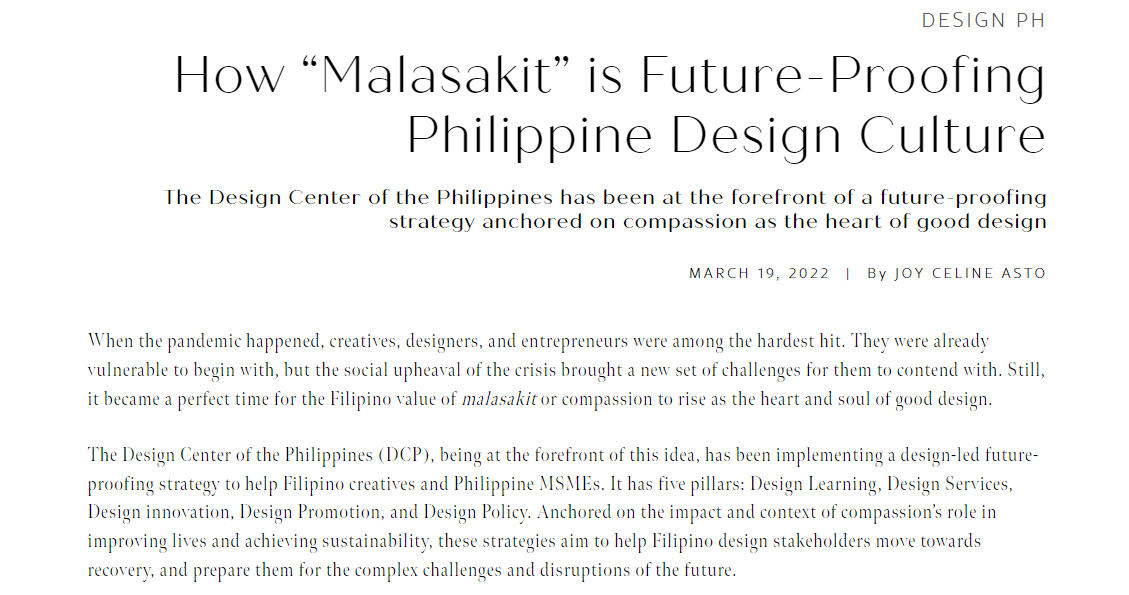
Stanley Ruiz at Philippine Daily Inquirer
From plant to lighting fixturesPlastic meets plant material is the essence of industrial designer Stanley Ruiz’s latest lighting fixtures in collaboration with Design Center Philippines (DCP).Made from Bakong, a plant once considered nuisance by the locals of Sta. Teresita, Cagayan, Stanley’s “Contrapunto” expresses opposing concepts such as factory versus handmade, machine versus backyard, mass production versus small batches in the design. Tasked to resonate with users, Ruiz expresses his creations as a counterpoint of industry and craft.
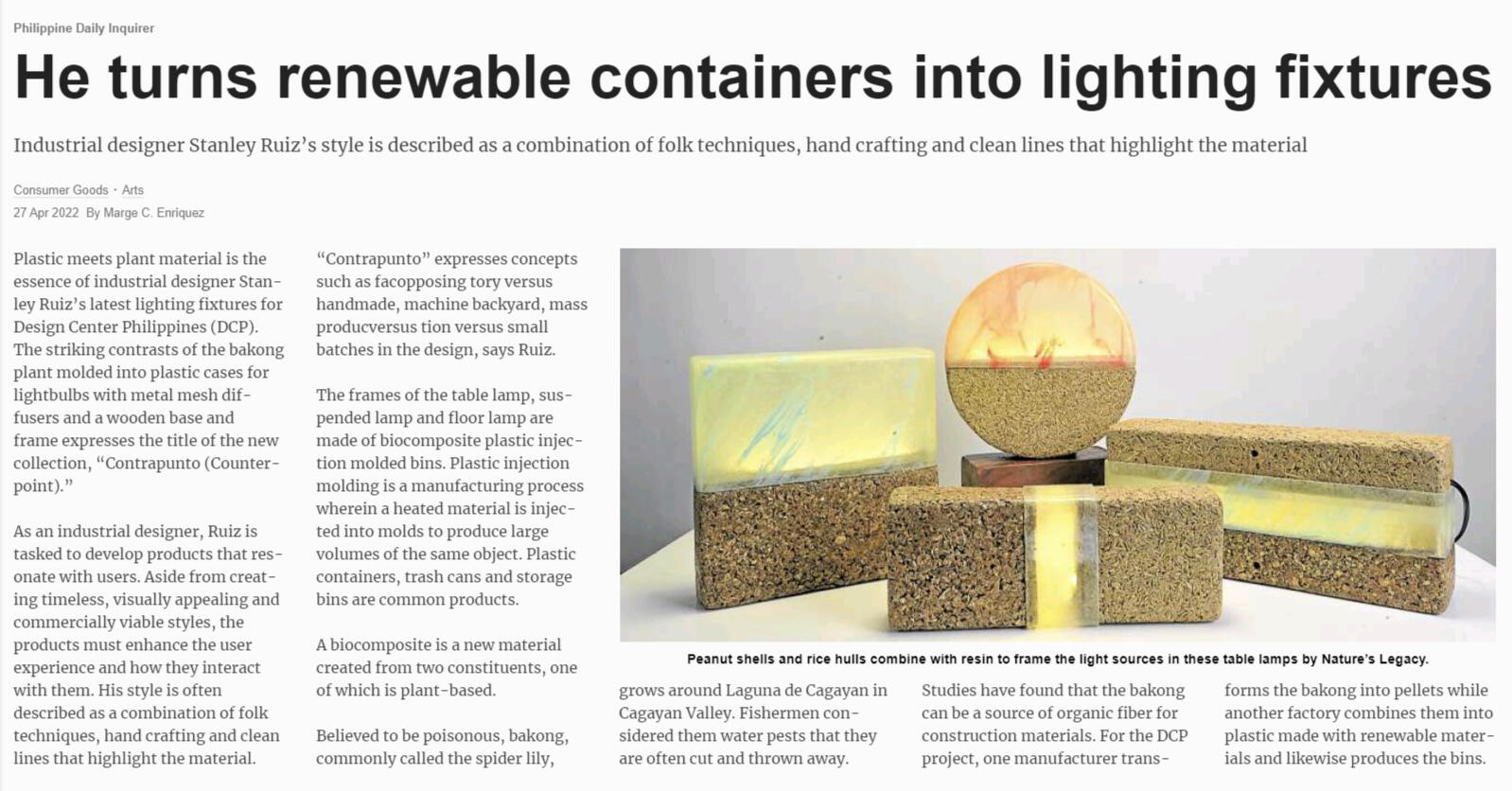
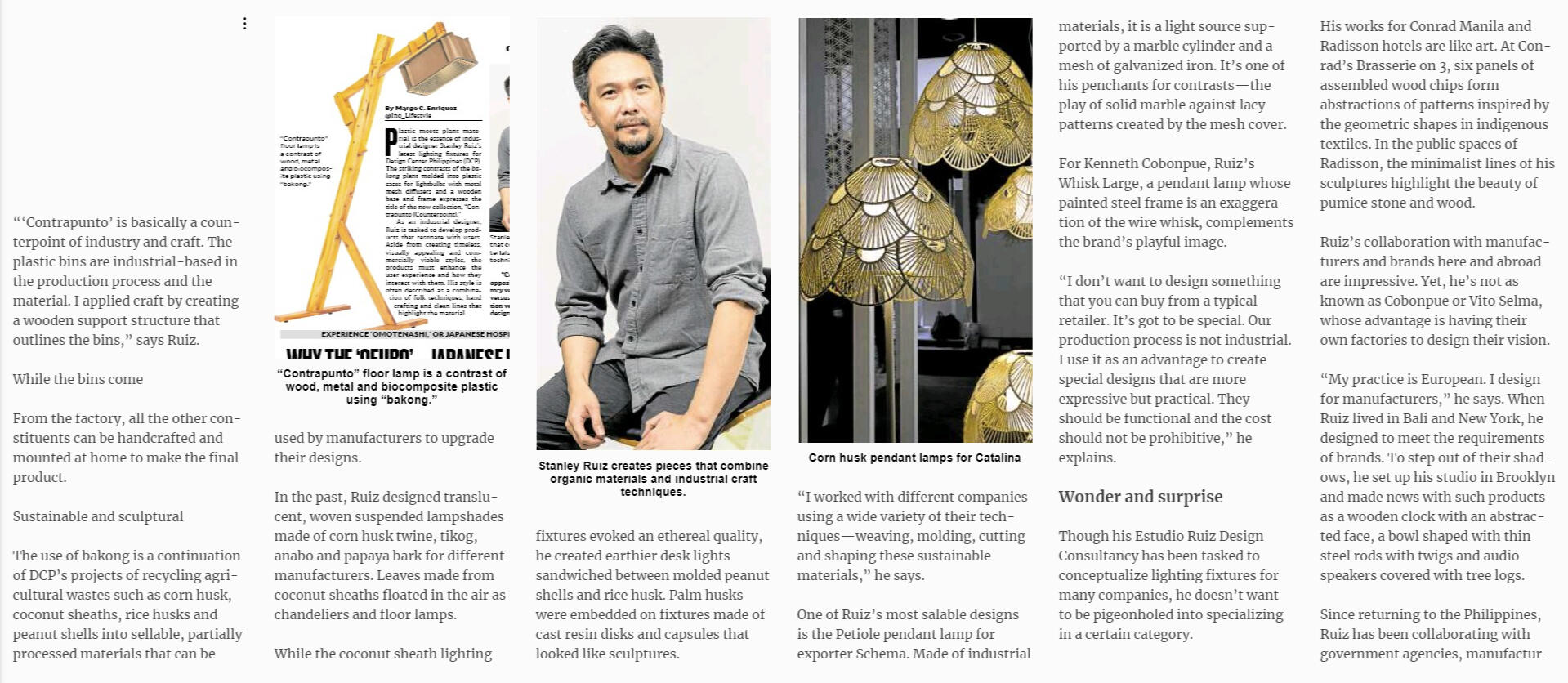
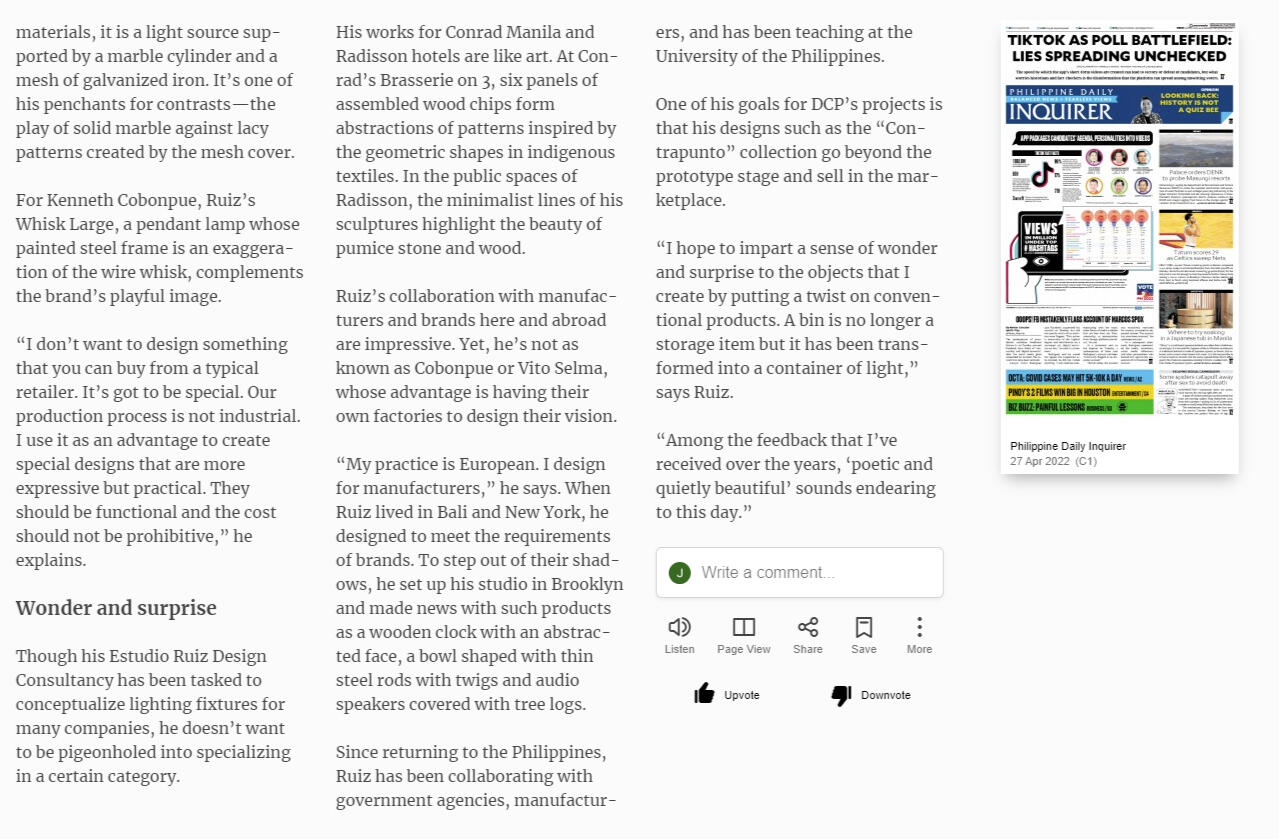
Read the full article here.
Stanley Ruiz for Emerge@Find
Bakong product Contrapunto graces the EMERGE @ FIND – Design Fair Asia.Contrapunto, or counterpoint, is a lighting collection that was developed through the process of improvisation done by Mr. Stanley Ruiz by using the bakong biocomposite bins.FIND – Design Fair Asia is the largest furniture, interior, and design fair that will spotlight emerging and established designers from Indonesia, Malaysia, Philippines, Singapore, Thailand, and Vietnam to draw inspiration, network, and trade.Mr. Stanley Ruiz is one of the panelists for this year's EMERGE @ FIND to showcase bio and agricultural waste works. Learn more about EMERGE here: www.designfairasia.com
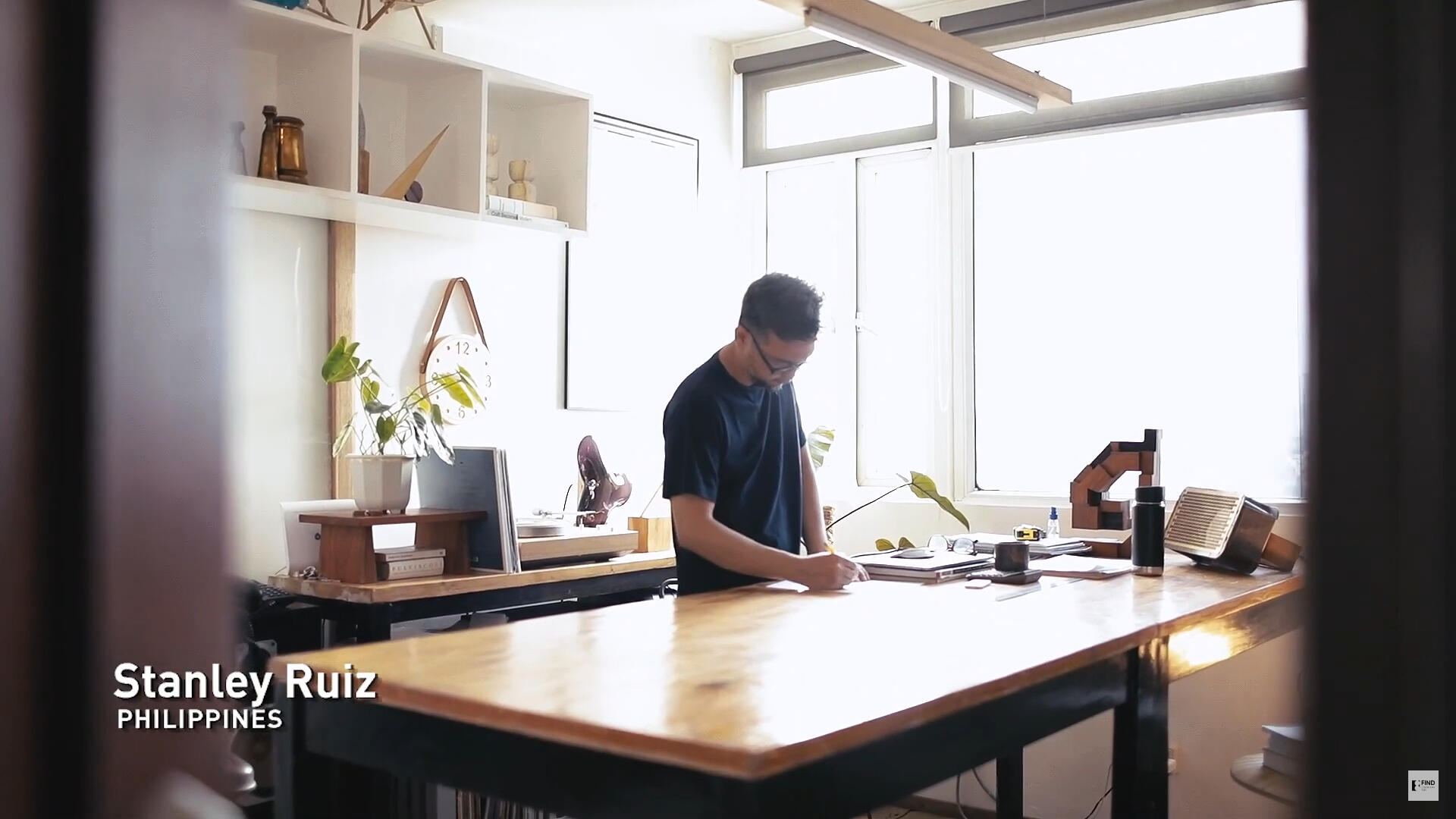
Emerge@Find Full Length VideoThe event was also featured by:
The Edge and Time Out
Brakong for James Dyson Award
Designing with malasakit continues to improve quality of life in Bakong!Emmanuelle Pangilinan and Jason Pechardo bagged the gold as national winners of the JamesDysonAward Philippines 2022 for their game-changing invention called “brakong”.Brakong is an offshoot of the Design Center's Bakong Circular Design Challenge that provided an opportunity to create circular and solution-based designs with the Bakong material.From Bakong to Brakong, this plant-based prosthetic is embedded with malasakit and made for breast cancer survivors to cope with the psychological effects of a mastectomy, a surgery intended to remove the breasts.James Dyson also recognized two other national runner ups such as Noah and Float-E and 14 other entries from the Philippines.
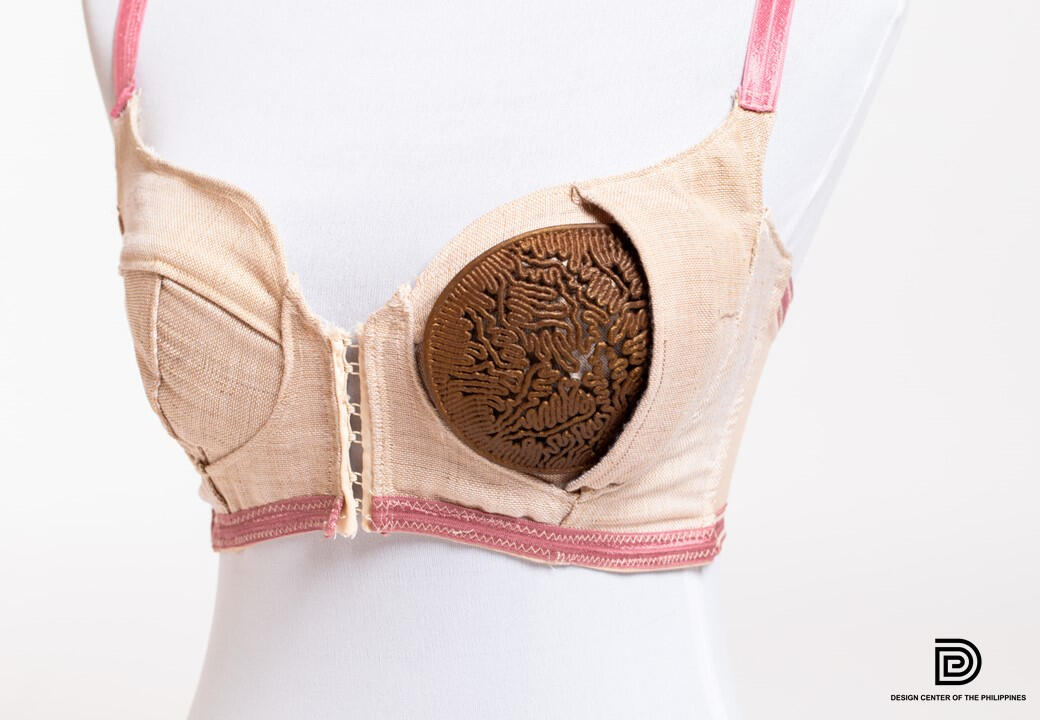
Bakong at Net25
Bakong and it's products was featured at Net25's daily morning show, Ano sa Pa lagay Nyo by Ali Sotto and Pat-P Daza last June 23, 2022.

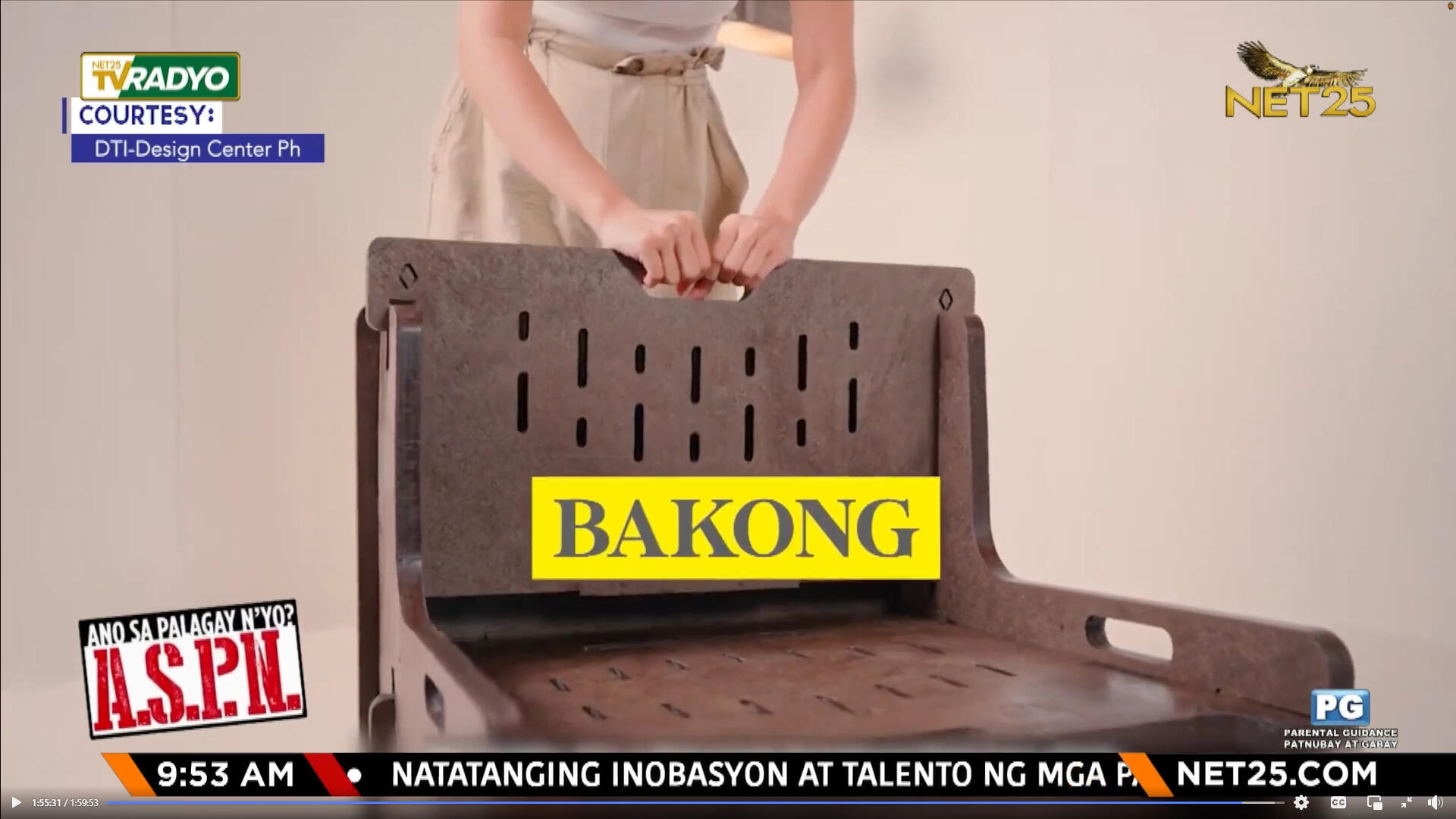
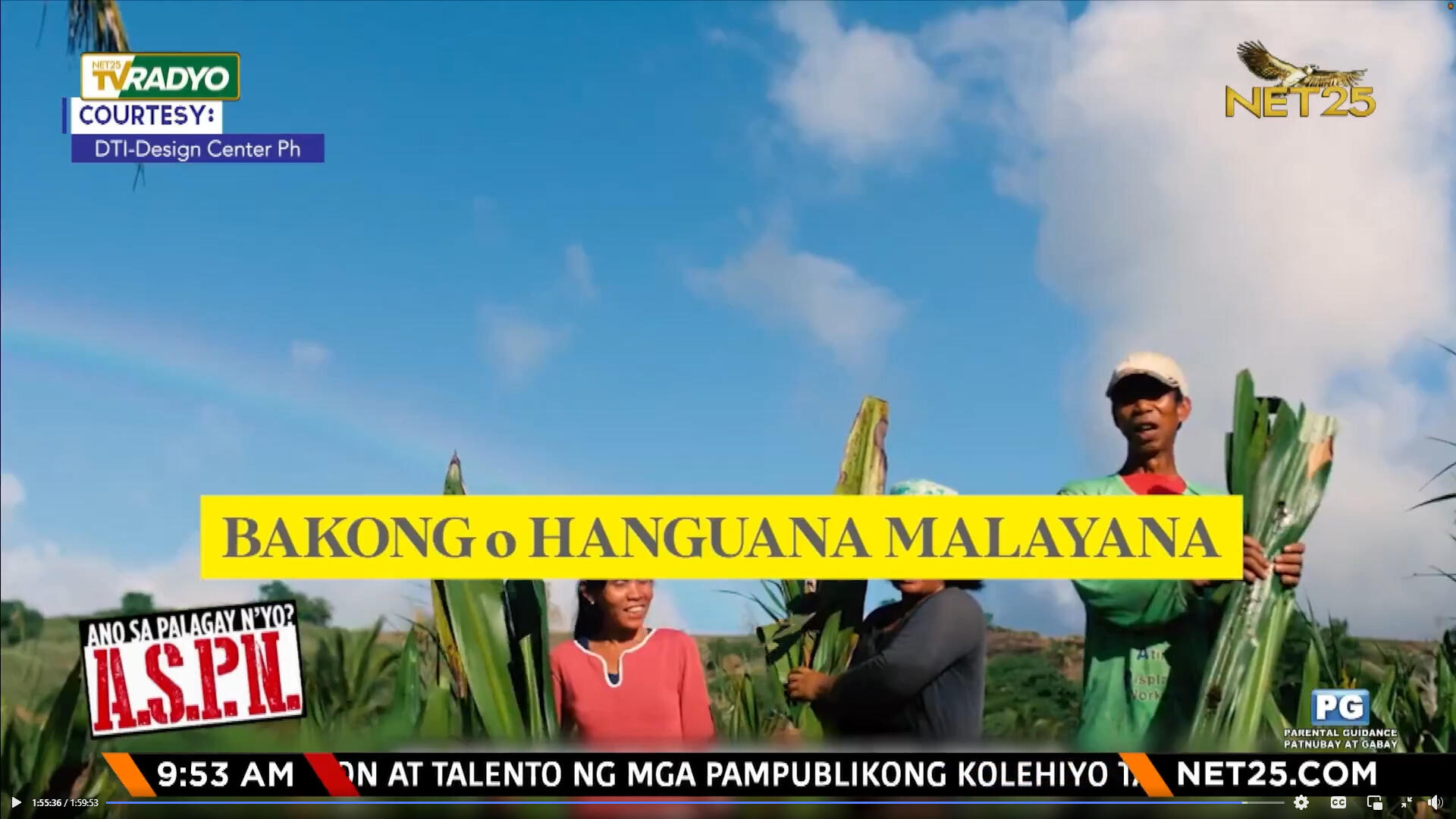
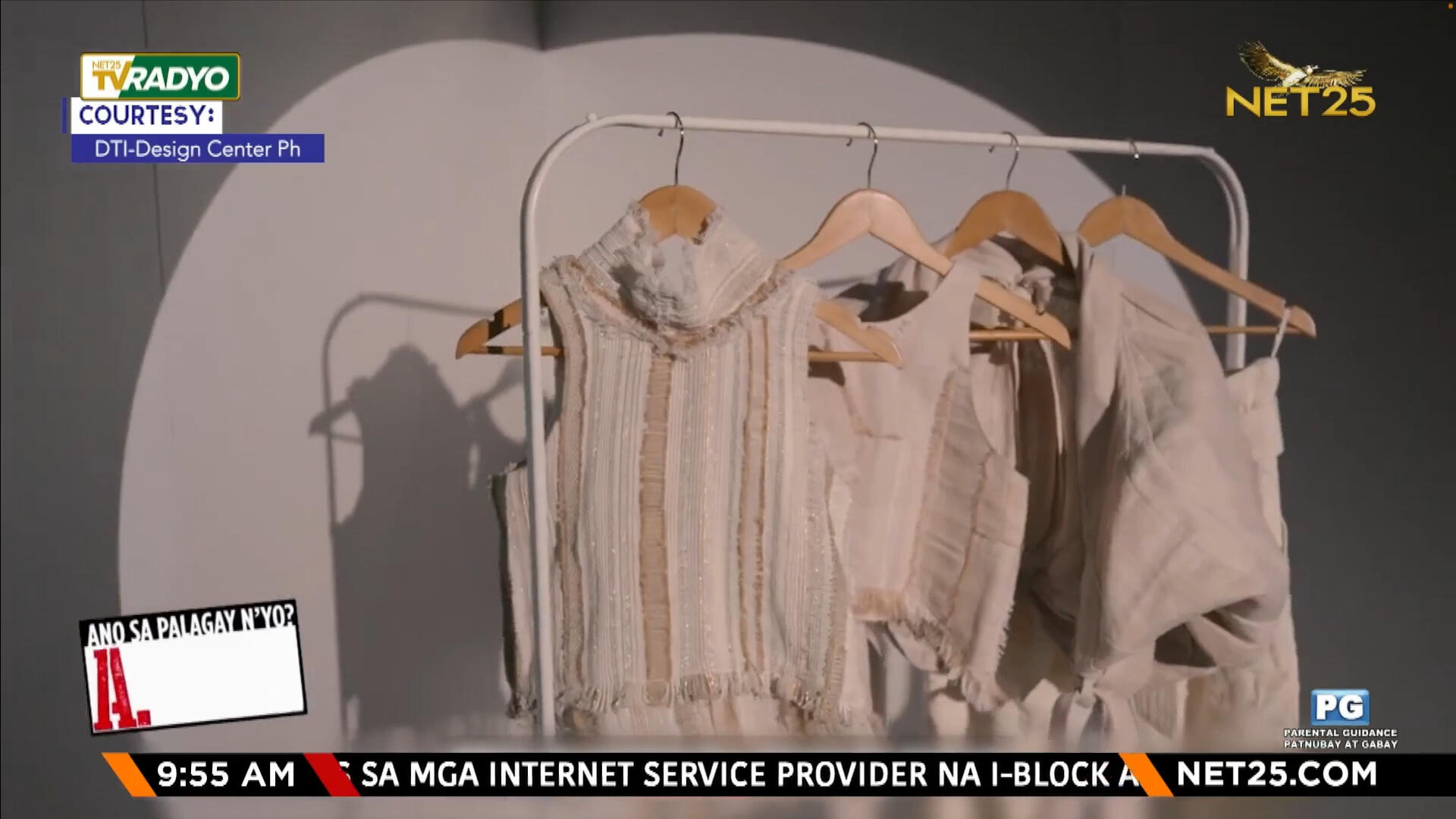
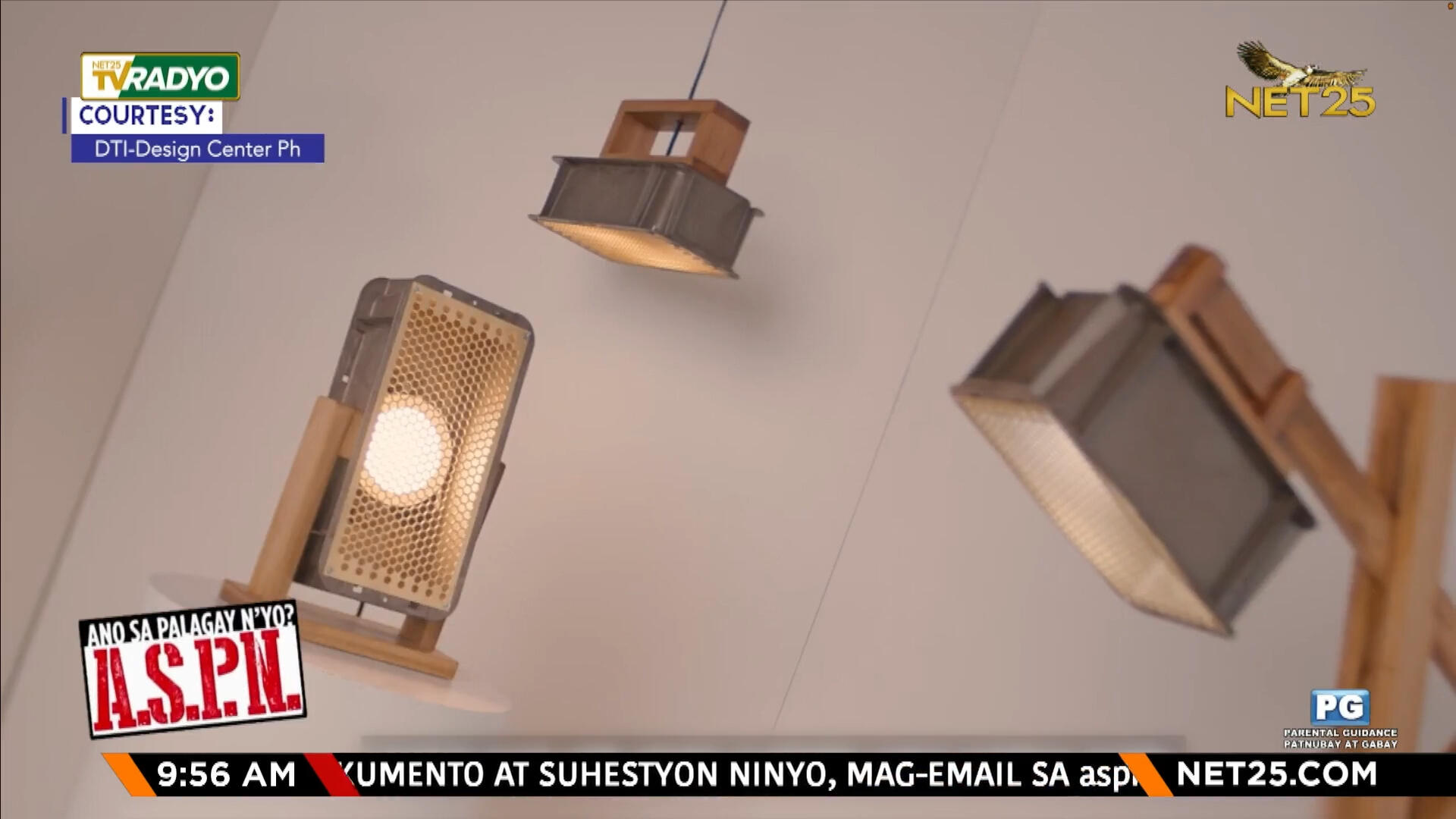
Watch Bakong at Ano sa Palagay Nyo (1:54:43)
Bakong at Dapat Alam Mo
The Brakong journey makes its way to GMA's Dapat Alam Mo!In this episode, Design Center's Bakong Circular Design Challenge winners Jason Pechardo and Minnie Pangilinan share how the Bakong project has pushed them to define breast prosthetics differently: from the lenses of consumption, production, and circularity.
